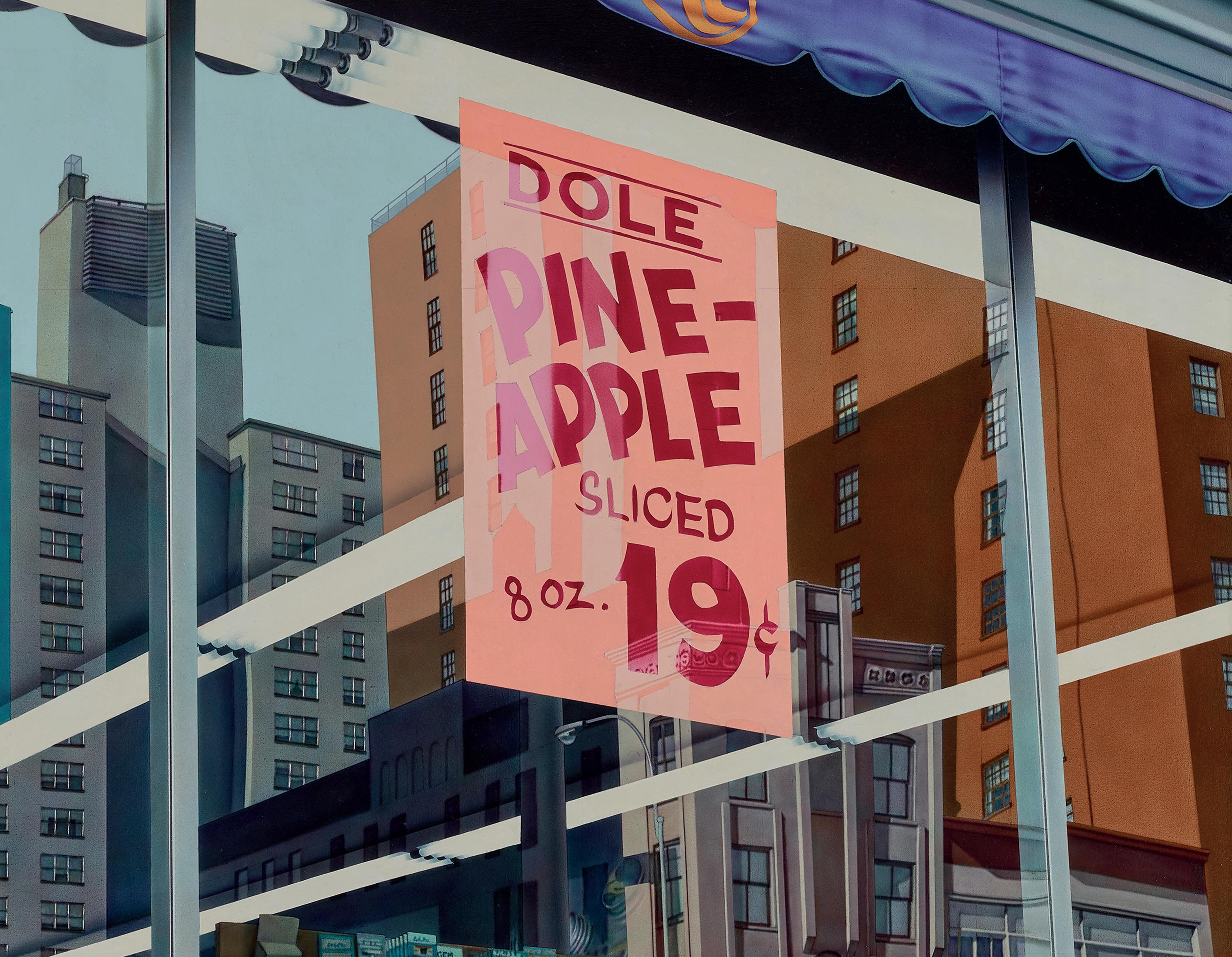PHOTOREALISM





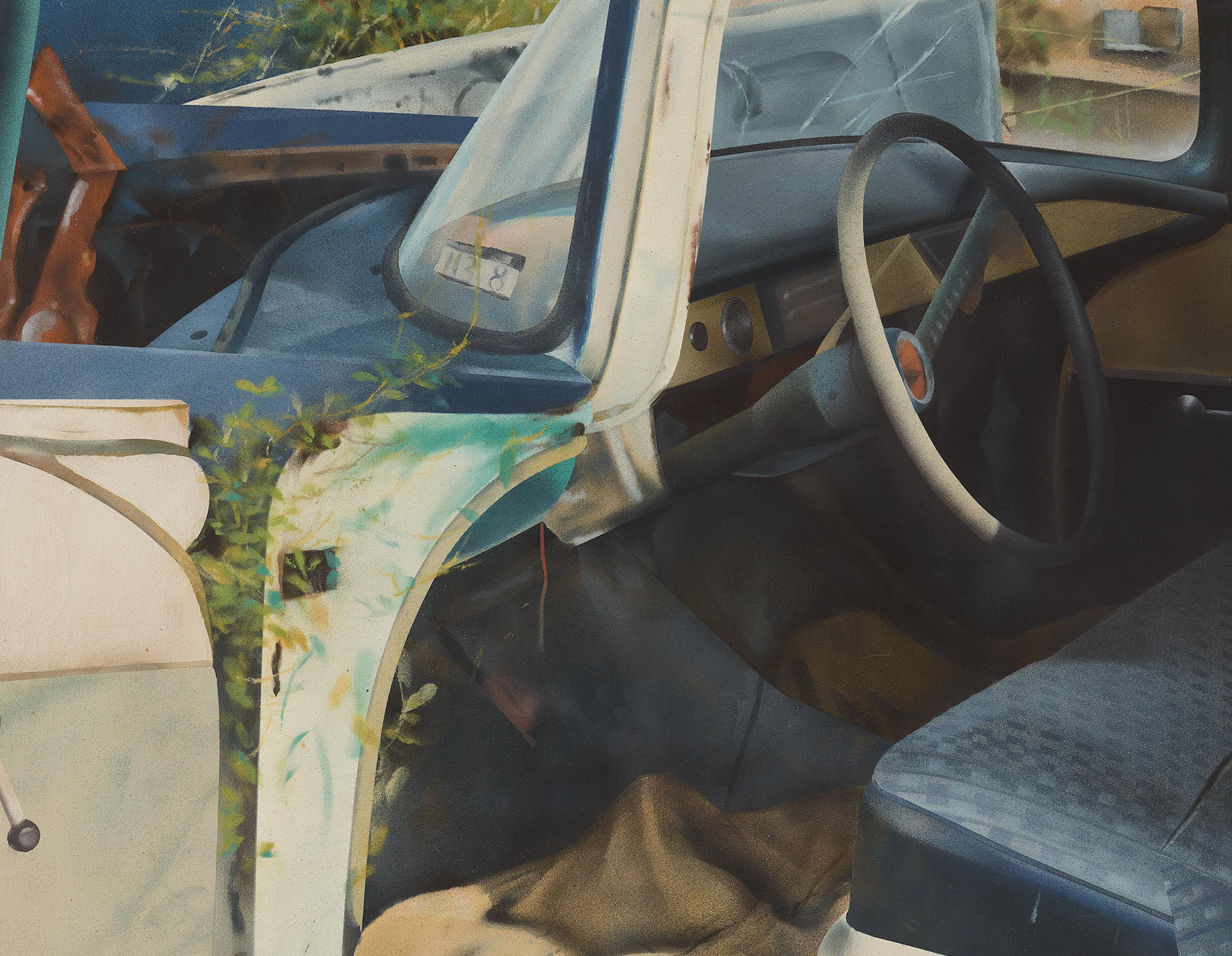
JOHN BAEDER
ROBERT BECHTLE
CHARLES BELL
TOM BLACKWELL
DAVIS CONE
ROBERT COTTINGHAM
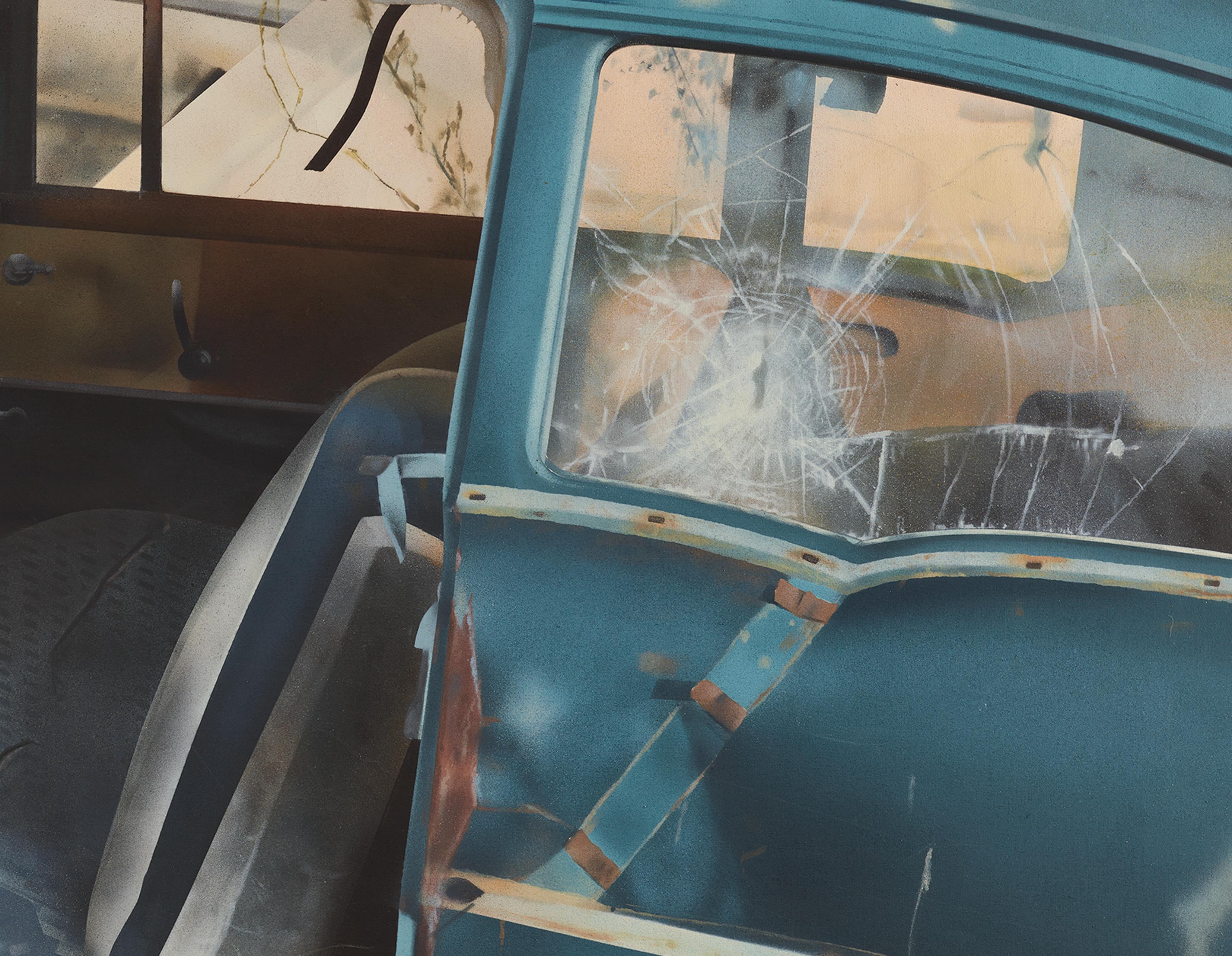
DON EDDY
RICHARD ESTES
RALPH GOINGS
RON KLEEMANN
RICHARD MCLEAN
DAVID PARRISH
JOHN SALT
BEN SCHONZEIT
Around 20 years ago – in the early 2000s – at the Solomon R. Guggenheim Museum in New York, I came across some startling paintings of the city by Photorealist masters Richard Estes and Ralph Goings. Struck initially by their highly sophisticated technique and steadfast commitment to painting, I soon saw that these masterpieces contained far more than first meets the eye. For while appearing to present reality, Photorealist paintings go beyond mere photographic emulation to convey the atmosphere of their subject. Through this interplay of reality and representation, expectation and perception, Photorealism taps into that enduring preoccupation of artists throughout history: the concept of reality and how it is presented.
Through this encounter I developed a passion for Photorealist paintings, especially those made in the years crucial to the genre’s development, the mid-1960s to the late-1980s. This so-called ‘first generation’ of artists sought to create representational art that distanced itself from the abstract style that was ubiquitous, even mainstream, in America at that time. Working against substantial resistance, the art historical importance of these painters, from whence the widespread movement of contemporary Photorealism emerged, cannot be overstated. In 1972, Harald Szeemann included paintings by first generation Photorealists in his seminal documenta 5: Questioning Reality – Pictorial Worlds Today, Kassel, while Louis K Meisel, the great champion of this work, compiled the renowned Stuart M. Speiser collection, now housed at The Smithsonian’s National Air and Space Museum. Nevertheless, the 20th century’s epic movements – Abstract Expressionism, Minimalism and Conceptual Art – overshadowed Photorealism. In recent years, however, important touring institutional
exhibitions of Photorealist painting in Europe and the United States have highlighted the enduring appeal and importance of the movement.
representing the estate of Josef Albers for 19 years from the mid-’90s, the gallery is a natural home for the wonderful and historically important genre of Photorealism.
Since 2003, I have advised collectors on the acquisition of Photorealist paintings and for the last 15 years have helped to build one of the most discerning and important collections in private hands. Presented here, this special collection features masterpieces from Photorealism’s crucial early years by all the main protagonists, each carefully selected for their pioneering work: John Baeder, Robert Bechtle, Charles Bell, Tom Blackwell, Davis Cone, Robert Cottingham, Don Eddy, Richard Estes, Ralph Goings, Ron Kleemann, Richard McLean, David Parrish, John Salt and Ben Schonzeit. This focused approach represents the pinnacle of the movement and provides an excellent overview of these artists’ wide-ranging output.
It is therefore with great delight that I am able to present this unique group of paintings at my gallery in London, Waddington Custot. Such a presentation is long overdue: the first, and last, major exhibition of Photorealist paintings in London opened exactly 50 years ago, in 1973 at The Serpentine Gallery in Hyde Park.
In recent years Waddington Custot has become a hub for ‘first generation’ Photorealism, advising collectors in London and Europe, where it could be said that this important work has not been shown enough. With a long history of involvement with American art, being an early champion of the abstract artists in the 1960s, the minimalists in the late ’70s, Julian Schnabel and his contemporaries in the ’80s and
London 2023

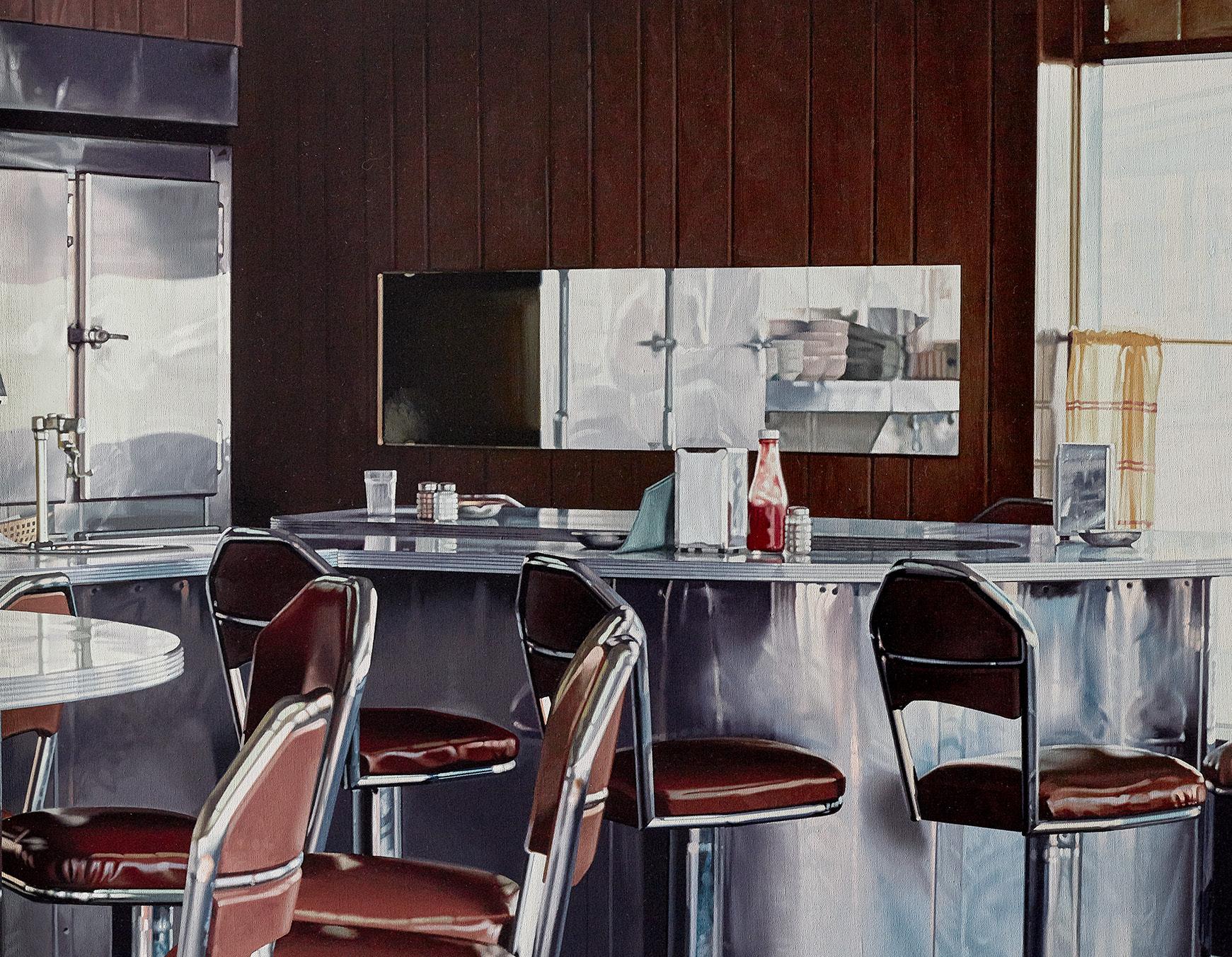

“When we look at a photographic realist painting, there is a double image: we see both a painting and an image clearly derived from a photograph. The subject matter of, say, [Don] Eddy’s picture is not a Volkswagen but a photograph of a Volkswagen. The painting corresponds as much to the photograph as to the car.”
LAWRENCE ALLOWAY, in the catalogue for Photo-Realism, Serpentine Gallery, London, 1973
The distinctly American phenomenon of early Photorealism rose to prominence in the late 1960s, when a loose group of artists hailing from the East and West coasts of the United States began to base their paintings on photography. Openly embracing the photograph as a subject and the camera as a tool for art making, their work was pioneering in its focus on process, draughtsmanship and exacting brushwork. The term ‘photorealism’, essentially describing a ‘photographic realism’, was coined in 1968 by art dealer Lou Meisel to describe the ‘appearance and method’ of this new art. Having opened the Louis K. Meisel Gallery in New York in 1966, Meisel became the movement’s leading champion and, from the early 1970s, his gallery became a meeting place for artists and a forum to discuss their work and methods. Ivan Karp of OK Harris was another early advocate of Photorealism – both he and Meisel recognised the significance and value of these paintings, exhibiting and selling them regularly.
Using photography as a starting point, Photorealism is formally characterised by its highly skilled transcriptions of everyday objects and environments. Photographs projected using slide machines onto bare canvas became blueprints for minutely detailed, exacting
painting, often aided by the use of airbrushes, designed initially for retouching photographs. This process was the basis for an astonishing degree of clarity – a captured moment, the fleeting effects of light and shade frozen in time. As successfully transposing a photographic image onto canvas displayed each artist’s skill, the Photorealists relished capturing complex reflective surfaces – glass, steel and chrome – and the texture of materials like leather and plastic.
In many ways, however, the term Photorealism is reductive: these painted renditions of actual and mirrored reality are not merely faithful reproductions of their source material but edited versions of it. Often, Photorealist paintings use multiple photographs and perspectives to create a satisfying composition, with people or objects removed and colours invented; sometimes, the original pictures were black and white. Prescient of today’s proliferation of doctored images, these works represent an engagement with the idea of reality in relation to the photographic image, encouraging viewers to question the act of looking and acknowledge the complexity of visual information. Don Eddy said in an interview in 1972: “[Photorealism] raises the question of whether you are looking at an illusion of objects in space, or a representation of a flat piece of paper – a photograph – which is in turn a representation of things in space. The idea of being photographic or true to life doesn’t really interest me. It’s the references between what we know, what we see, what we think we see and what’s there, between the surface of the canvas and the illusion in the canvas. Those are the real problems, it seems to me.”
Thematically, the works are distinctly American and much of the subject matter has become iconic: large cars with chrome bumpers, trucks, utility vehicles and shiny motorcycles, roadside diners and gas stations, glazed shop fronts, illuminated signs and pinball machines. Often, Photorealists convey banal scenes of everyday American life
in the mid-20th century, complete with symbols of mass consumerism and hints of a fading American Dream. Light itself becomes a subject in many of these works: painterly reflections in storefront glass, the light refracting off a metallic car bumper, or the appearance of artificial neon signage in harsh sunlight.
Within this group, each painter developed their own stylistic language. For Ralph Goings (1928 – 2016), intense morning light is a key element that lavishes the chrome surfaces and leatherette seats of Richmond Diner, 1983, with a glow that elevates them from the banal to the sublime. His exterior scenes, like Burger Chef, 1970, uncompromisingly capture the blinding sunlight of high noon bleaching concrete and car alike.
In a similar vein, both John Baeder (b. 1938) and Davis Cone (b. 1950) establish a distinct sense of place, a vision of the American heartland. Primarily focusing on Art Deco-period cinemas in rural America, as seen in Martin: Talledega, 1981, Cone is known for his thoughtful approach, while Bader traversed the country to document the Great American Diner. Silver Top Diner, 1974, immortalises this relic of the American Dream with a wistfulness that echoes the haunting work of Edward Hopper.
Robert Bechtle (1932 – 2020) also painted archetypal American streets, houses, cars and people with a frankness reminiscent of pictures from private photo albums. His pared back, ‘no style aesthetic’ depiction of suburban family cars, ’62 Chevy, 1970 and ’64 Chrysler, 1971, can be seen in this collection. John Salt (1937 – 2022), the only non-American artist in the group, is similarly noted for his car paintings, although his are symptomatic of a marginalised lifestyle, a world of shacks and trailer homes far from the affluent American metropolis. He was drawn to scrapyard wrecks, with traumatised bodywork, broken windows and
deflated tyres, so-called ‘arrested vehicles’, such as Arrested Vehicle (Writing on Roof), 1970.
Due to the high quality of his work and compositional aesthetic, Richard Estes (b. 1932) is the painter most popularly associated with Photorealism. Like Baeder, Estes responds to the work of Hopper with eerie compositions and broad urban landscapes, such as Circus, Circus, 1971, that appear frozen in time and are largely unpopulated, although, occasionally, figures can be traced. The abundant reflective surfaces in the urban landscape offered enormous potential for Brooklyn-born Robert Cottingham (b. 1935), who pictured America’s quickly developing built environment, particularly its shop signage, colourful hoardings and neon advertising.
Alongside Goings, Charles Bell (1935 – 1995) is acknowledged as an eminent Photorealist still life painter for his hugely magnified depictions of children’s toys and gumball machines. In time, Bell’s series of pinball machine close-ups superseded other subjects and his replication of ‘out of focus’ effects, in Gin, 1977, for instance, pushed his use of technology to such an extreme level that his paintings take on heightened artificiality. Ben Schonzeit (b. 1942) is unique in taking this proposition further with his compositionally-complex use of collage effects and surreal juxtapositions. His painting Fruit of the Month (F.O.T.M.), 1972, which uses extensive airbrushing to enhance the curious composition, shows Photorealism being taken to a quite different end.
Don Eddy (b. 1944), who gained early experience using an airbrush in his father’s car-customising shop, achieved striking renditions of cars and storefront windows. His fascination with the possibilities of light refraction led to his intricate still life paintings of objects displayed in storefront windows, such as Bananas, Apples, Avocados, Tomatoes; Supermarket Window III , 1973.
Ron Kleemann (1937 – 2014), Tom Blackwell (1938 – 2020) and David Parrish (b. 1939) embraced stereotypical masculine machinery: for Kleemann, it was racing cars, police vehicles and fire trucks (20/20, 1990), while Parrish and Blackwell relished painting the reflective, metallic components of motorbikes, with their associations of power, speed and danger. Blackwell’s Thompson St. Triumph, 1975 and Parrish’s Harley Davidson, 1971 encapsulate the essence and romance of the American highway, the open road.
Richard McLean (1934 – 2014) came to the theme of American heroism from another angle. His horse paintings recall his childhood in the American Northwest, cowboy country. They represent a similar but wilder notion of freedom. In paintings such as Jack Magill’s Bourbon Jet, 1981, McLean examines the play of sunlight on the shiny coat of the horse and proves to be a technical master; there are no visible brushstrokes even without using an airbrush.
The American Dream continues to have an aspirational lustre for many worldwide, and the portrayal here of a glossy but fading urban landscape might appear to carry a satirical edge. Whilst today a viewer might draw nostalgia from these paintings, the Photorealists rejected any grand philosophy or deeper meaning behind their work. Robert Cottingham said: “I’m just using the subject as the stepping-off point to compose the painting” and Richard McLean: “I think neutrality is extremely important”. Nevertheless, as a contemporary viewer in a world where artists are applauded for ascribing social commentary to their work, it is hard not to draw such conclusions when viewing these powerful scenes of American life in the mid-20th century.

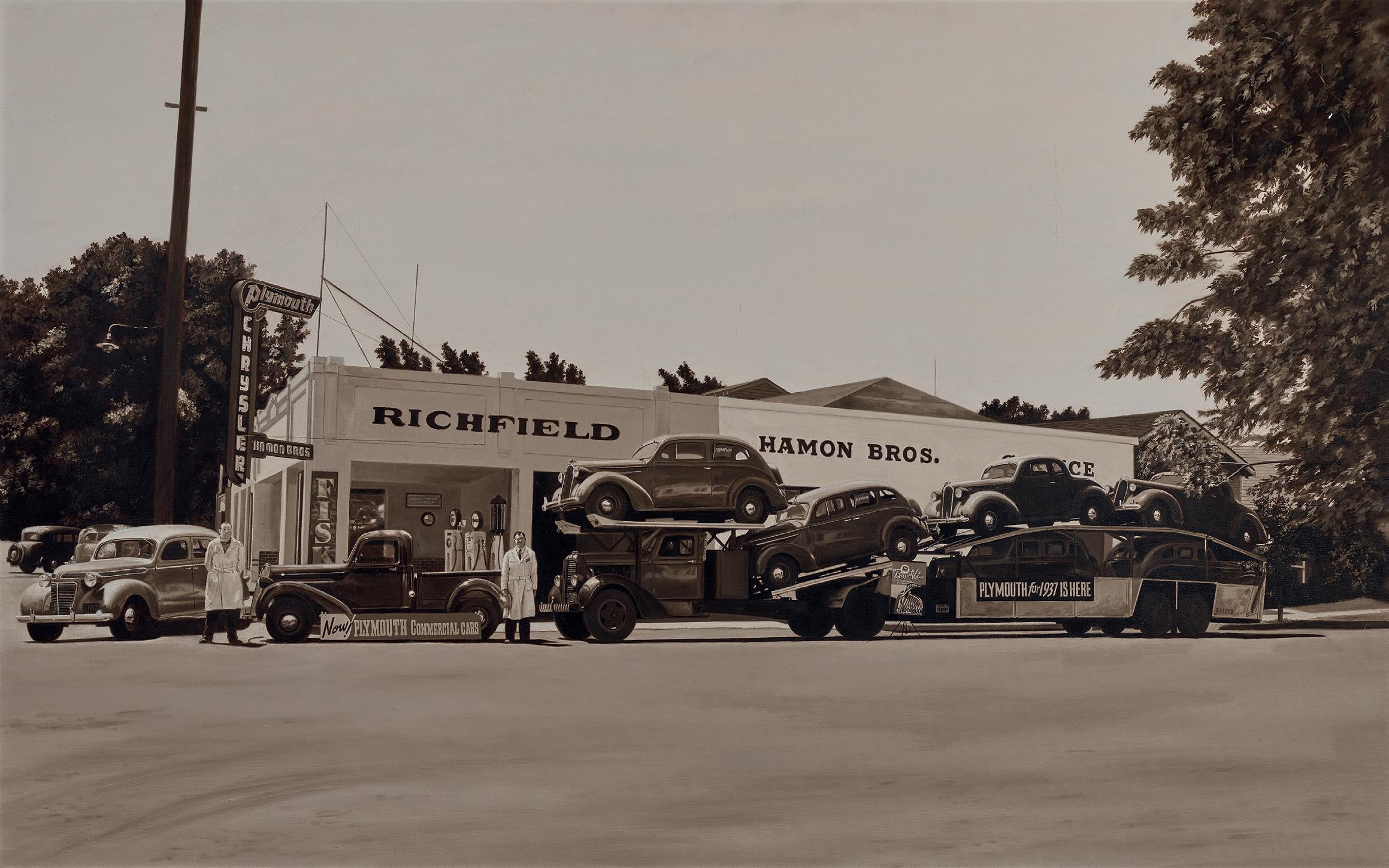
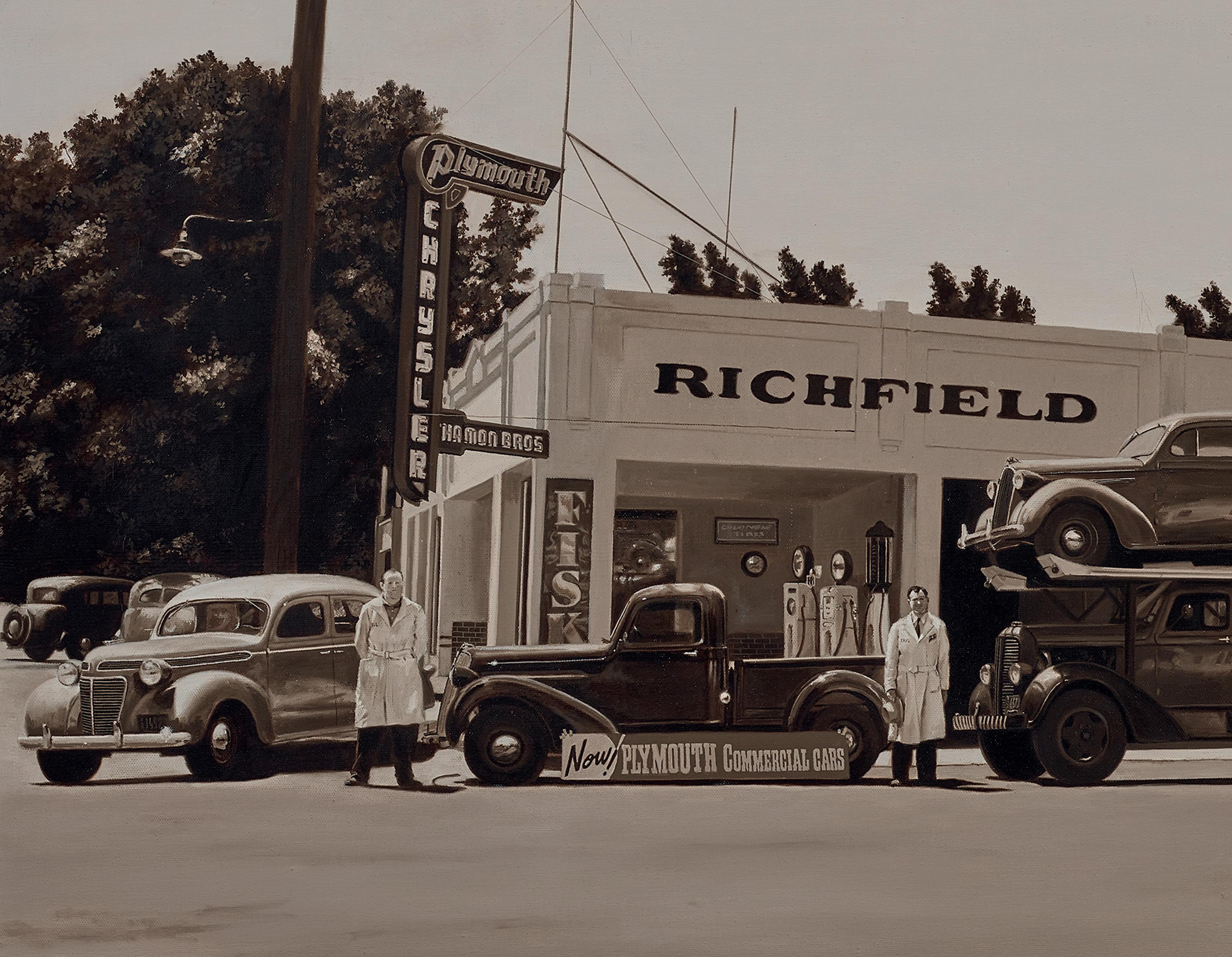
 White Manna Hamburgers 1974 oil on canvas, 76.2 × 121.9 cm
White Manna Hamburgers 1974 oil on canvas, 76.2 × 121.9 cm
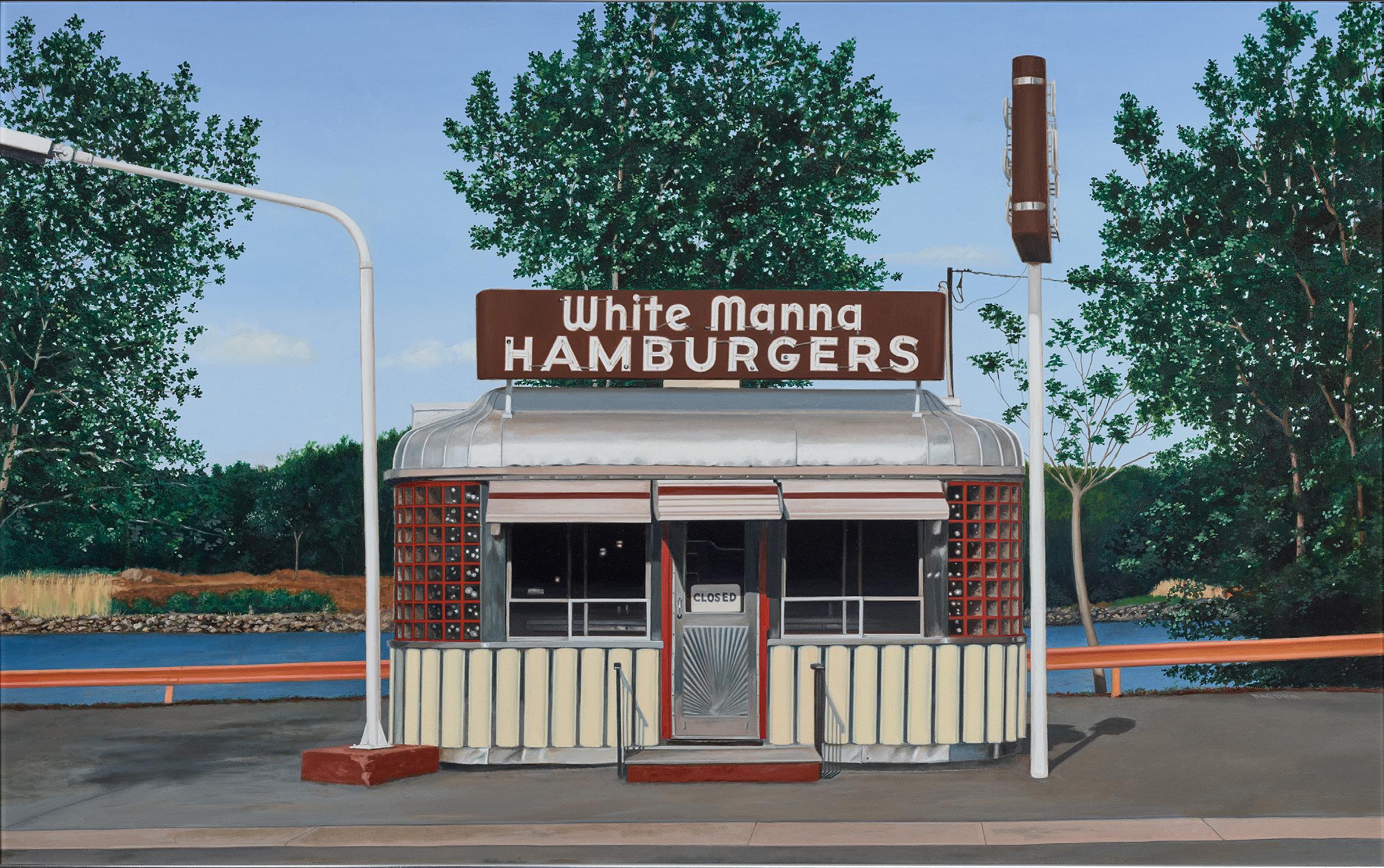
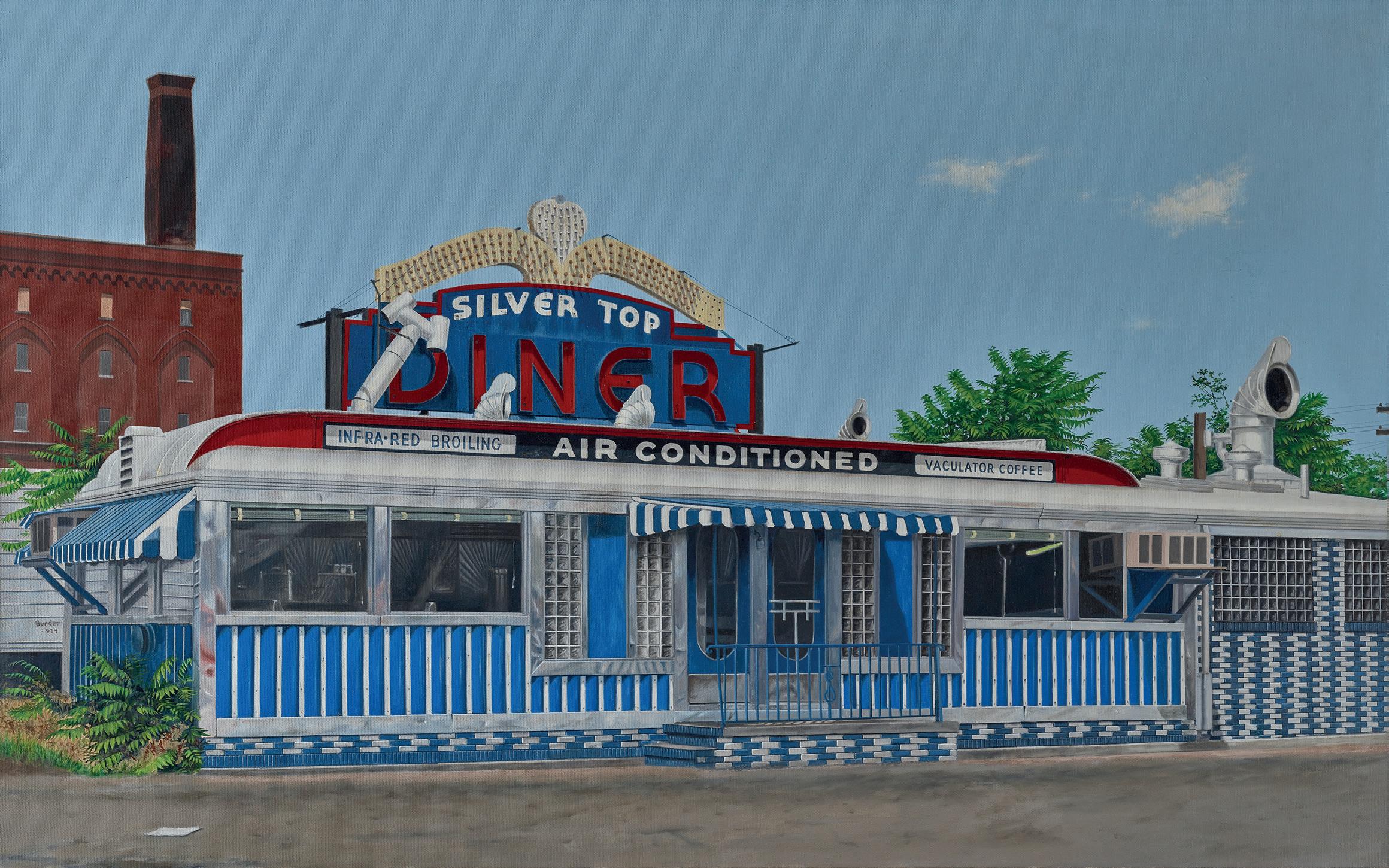 Silver Top Diner 1974 oil on canvas, 76.2 × 121.9 cm
Silver Top Diner 1974 oil on canvas, 76.2 × 121.9 cm
JOHN BAEDER (b. 1938, South Bend, IN) is celebrated for his detailed paintings of iconic American roadside diners and eateries. Born in Indiana and raised in Georgia, his interest in small towns began as a young boy living and travelling in the American South. In the late 1950s, Baeder attended Auburn University, AL making frequent road trips between there and Atlanta that further piqued his curiosity in roadside diners and rural landscapes. In 1960, he began working as an art director for a New York-based advertising agency, eventually moving to the city in 1964. After building up a successful career, Baeder eventually left advertising in 1972 to pursue his artistic ambition full-time. That same year, Ivan Karp’s influential OK Harris gallery in New York began exhibiting his artwork.
Showing an unwavering dedication to representing the diner, a uniquely American icon that was disappearing from the landscape, Baeder manages to transport the viewer to a bygone age; his pictures have an indefinable nostalgia that evoke a simpler time. His interest in this aspect of declining American culture was spurred on by the photographs of Berenice Abbott and Walker Evans, discovered while visiting the Museum of Modern Art in New York in the late 1960s. Around the same time, he began collecting postcards of gas stations, motels, campsites and diners, haunted by the quickly changing and soon disappearing roadside views. In addition to his own photographs, these postcards provided Baeder with valuable source material.
work has also been included in critical institutional exhibitions. In 2007, the Morris Museum of Art, GA, organised a travelling retrospective exhibition of his work, Pleasant Journeys and Good Eats Along the Way: The Paintings of John Baeder. Other significant group exhibitions include HyperAmerica: Landscape – Image – Reality, Kunsthaus Graz, Austria (2015); Hiperrealismo 1967 – 2013, Bilbao Fine Arts Museum, Spain (2015) and the touring exhibition Photorealism: 50 Years of Hyperrealistic Painting (2013 – 2017), which opened in Kunsthalle Tübingen, Germany before moving to 10 locations including Museo Thyssen-Bornemisza, Madrid; Birmingham Museum & Art Gallery, UK; and Tampa Museum of Art, FL.
Since his first solo presentation in 1972, Baeder has had more than 30 solo exhibitions, including at the key galleries to pioneer Photorealist painting in that era, the Louis K. Meisel Gallery and OK Harris gallery, both located in New York. His
John Baeder currently lives in Nashville, TN.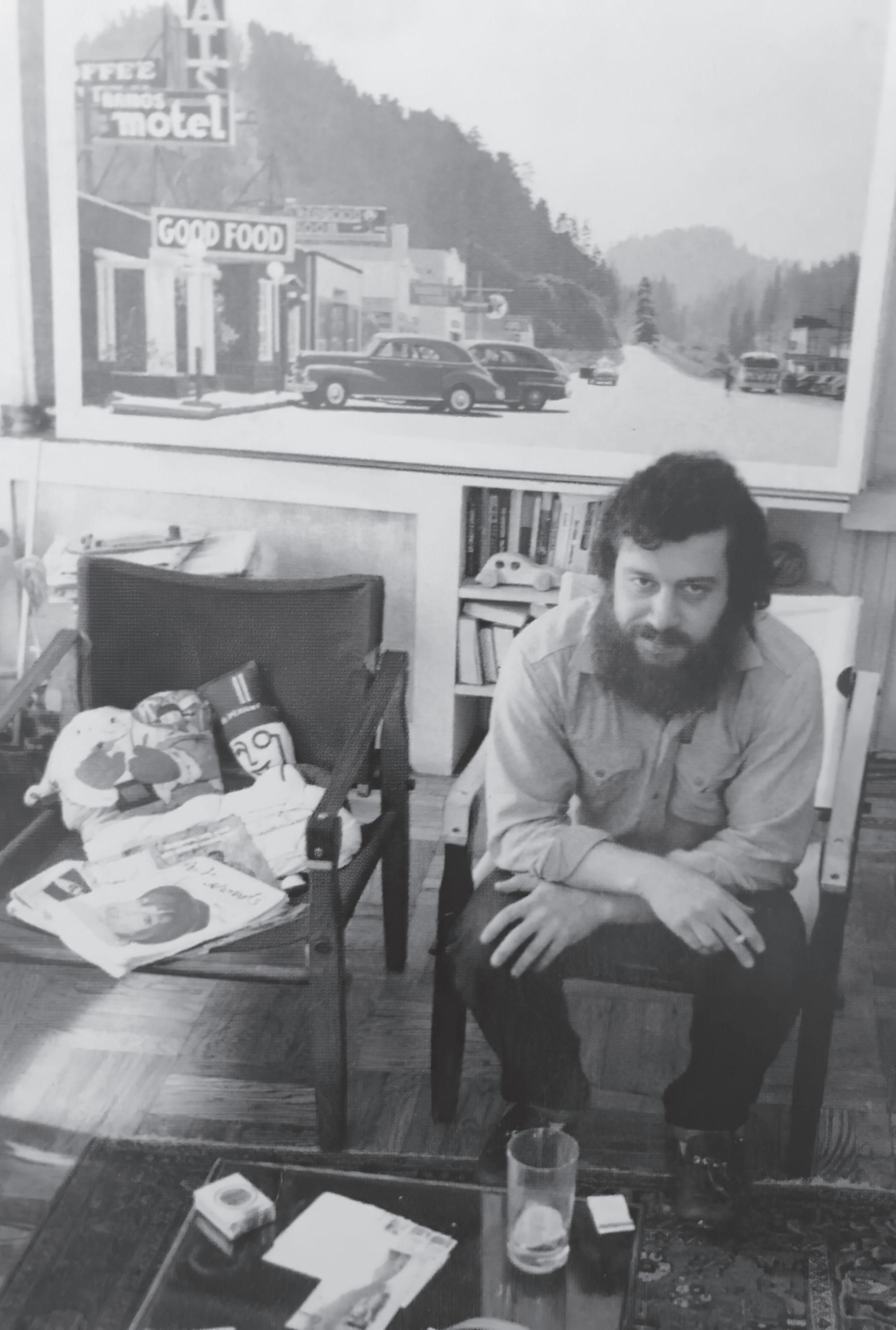
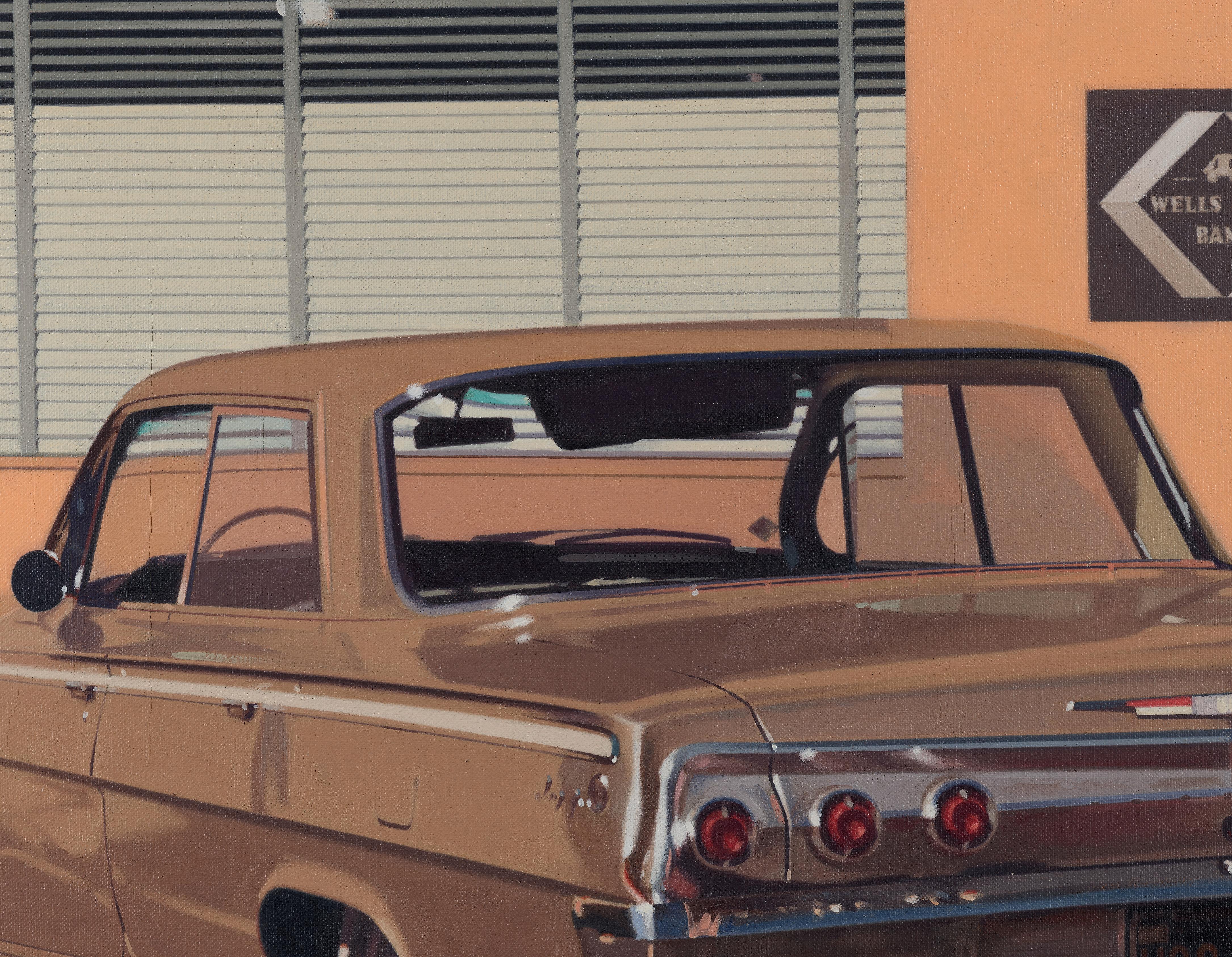
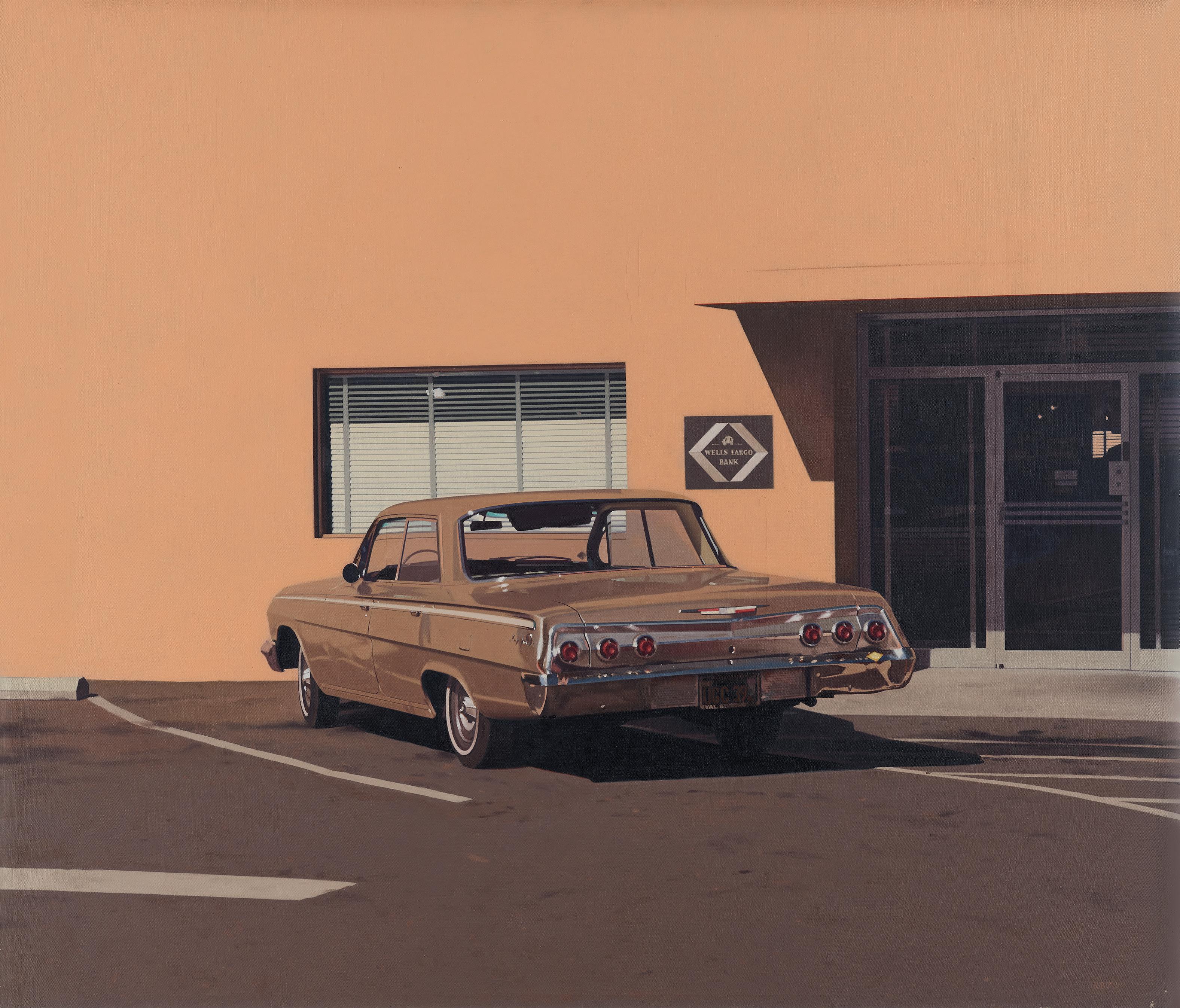
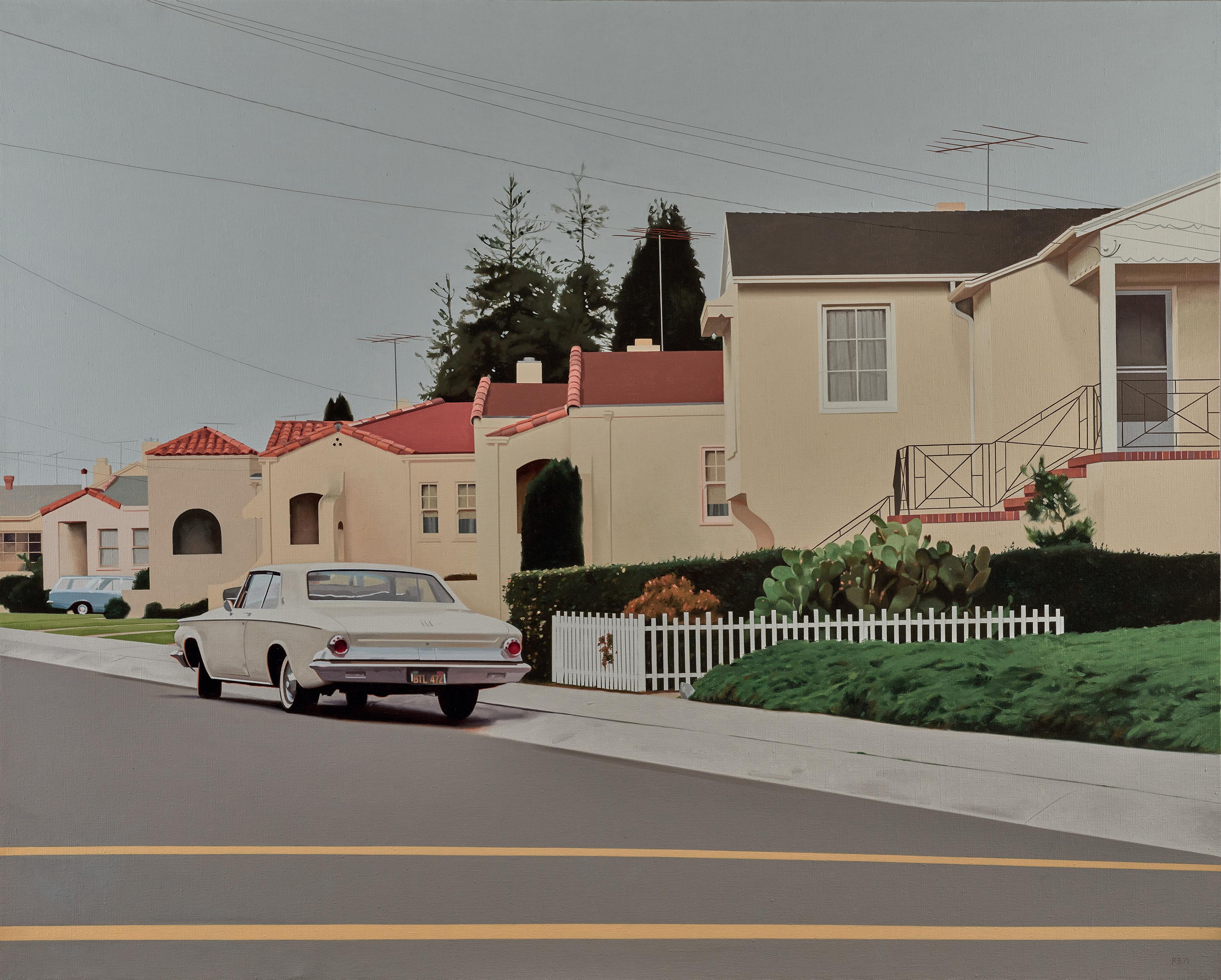 ’64 Chrysler 1971 oil on canvas, 121.9 × 151.8 cm
’64 Chrysler 1971 oil on canvas, 121.9 × 151.8 cm
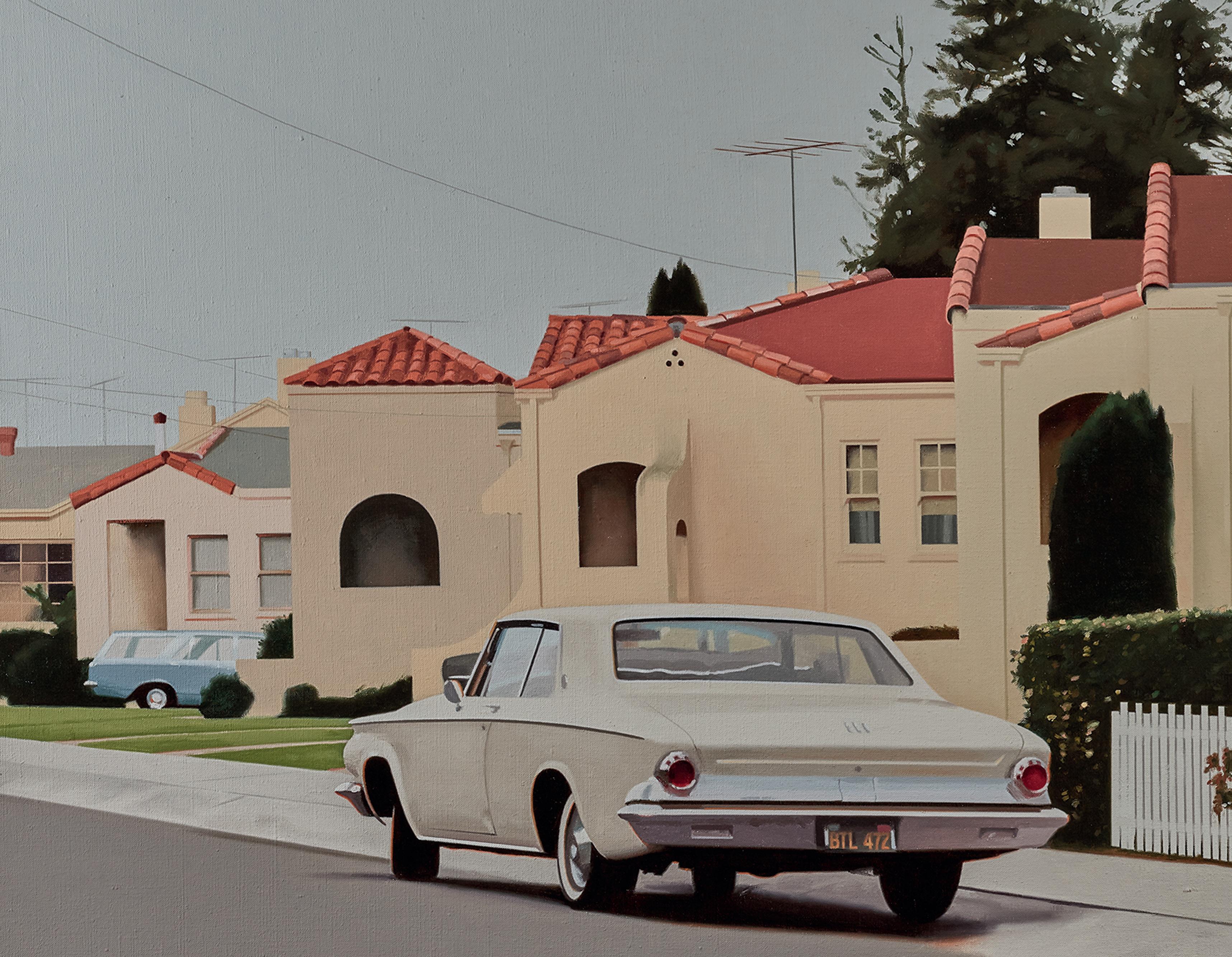
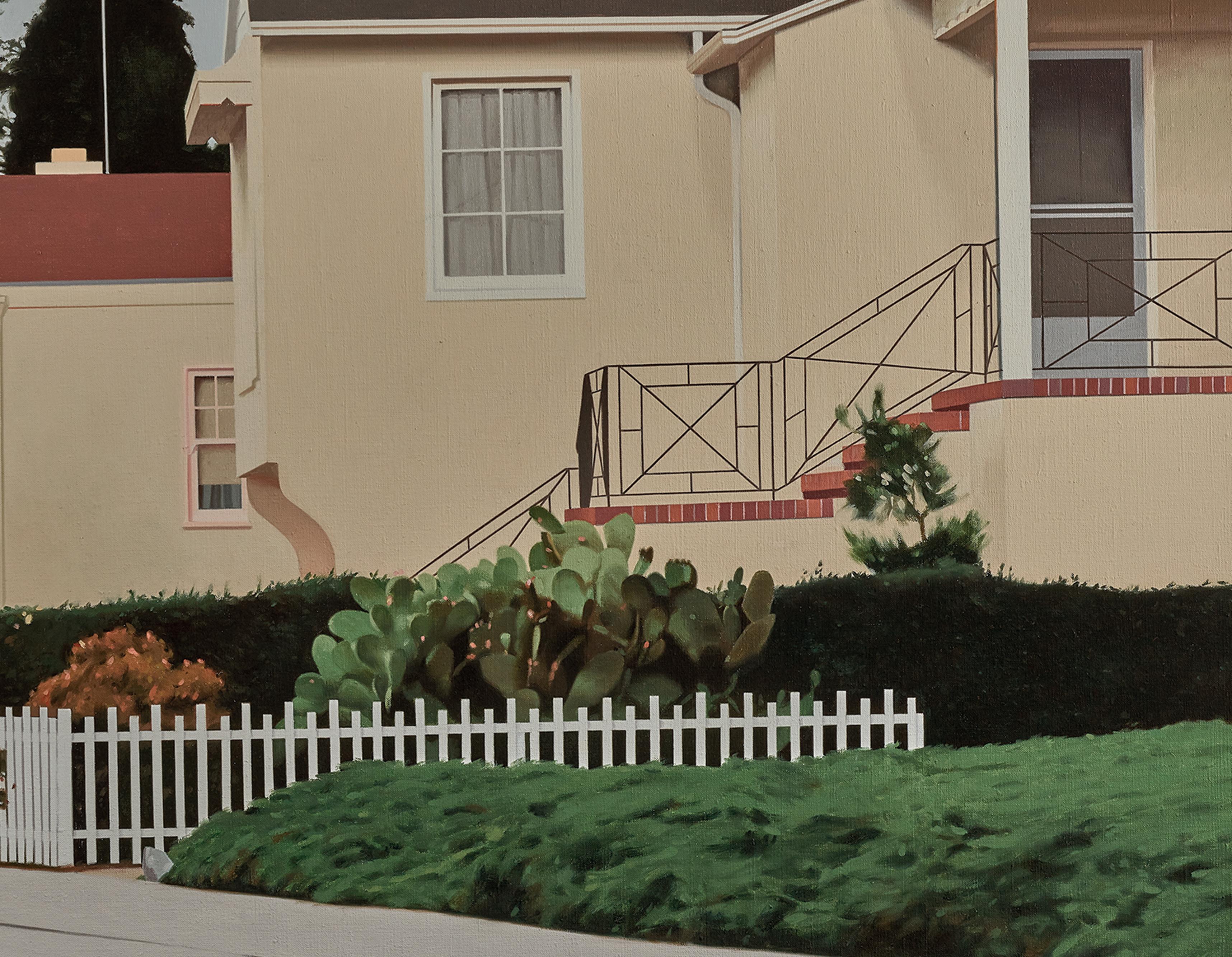
ROBERT BECHTLE (b. 1932, San Francisco, CA; d. 2020, Berkeley, CA) is best known for painting things most familiar to him: the streets, houses and cars in his neighbourhood as well as family and friends, all reminiscent of pictures from private photo albums. Bechtle studied graphic design and fine art at the California College of Arts and Crafts in Oakland, receiving his BFA in 1954 and MA in 1956. After being briefly drafted into the US Army and stationed in Berlin, he returned to the West Coast to teach at the University of California, Berkeley. From 1967 to 1968 he taught at the University of California, Davis and from 1968 at San Francisco State University. There, Bechtle discovered the Bay Area Figurative Movement, a group of artists, including Richard Diebenkorn, who had abandoned abstraction for figuration; where they used an expressionistic hand, Bechtle opted for a pared-back, ‘no style’ aesthetic.
Bechtle introduced photography into his painting process in 1964 as a studio aid; by 1966, his photographs had evolved into a working sketchbook. Drawn to their simplicity, Bechtle typically photographed middle-class neighbourhoods with uniform houses and sensible saloon cars, things he described as ‘ordinary fare’. Bechtle visited the same streets repeatedly: Almeda, where he grew up, and Oakland, San Francisco and Berkeley, where he later lived. Rather than taking quick snapshots, Bechtle would spend an age looking and noticing changes, photographing the same scenes at different times of day, fascinated by the changing light, carefully composing his photographs to balance light and dark.
Szeemann’s documenta 5: Questioning Reality – Pictorial Worlds Today, Kassel (1972) and Photo-Realism, at the Serpentine Gallery, London (1973). Recent institutional exhibitions include American Dream, National Museum in Krakow, Poland (2009); Picturing America: Photorealism in the 1970s, Deutsche Guggenheim, Berlin (2009); Photorealism: 50 Years of Hyperrealistic Painting (2013 – 2017), which opened in Kunsthalle Tübingen, Germany before touring to 10 locations including Museo Thyssen-Bornemisza, Madrid; Birmingham Museum & Art Gallery, UK; and Tampa Museum of Art, FL; From Lens to Eye to Hand: Photorealism 1969 to Today, Parrish Art Museum, NY (2017 – 2018) and Chrome Dreams and Infinite Reflections: American Photorealism, Reynolda House Museum of American Art, NC (2022).
Bechtle’s work has been exhibited internationally since the 1970s, and featured in the early presentations: Harald

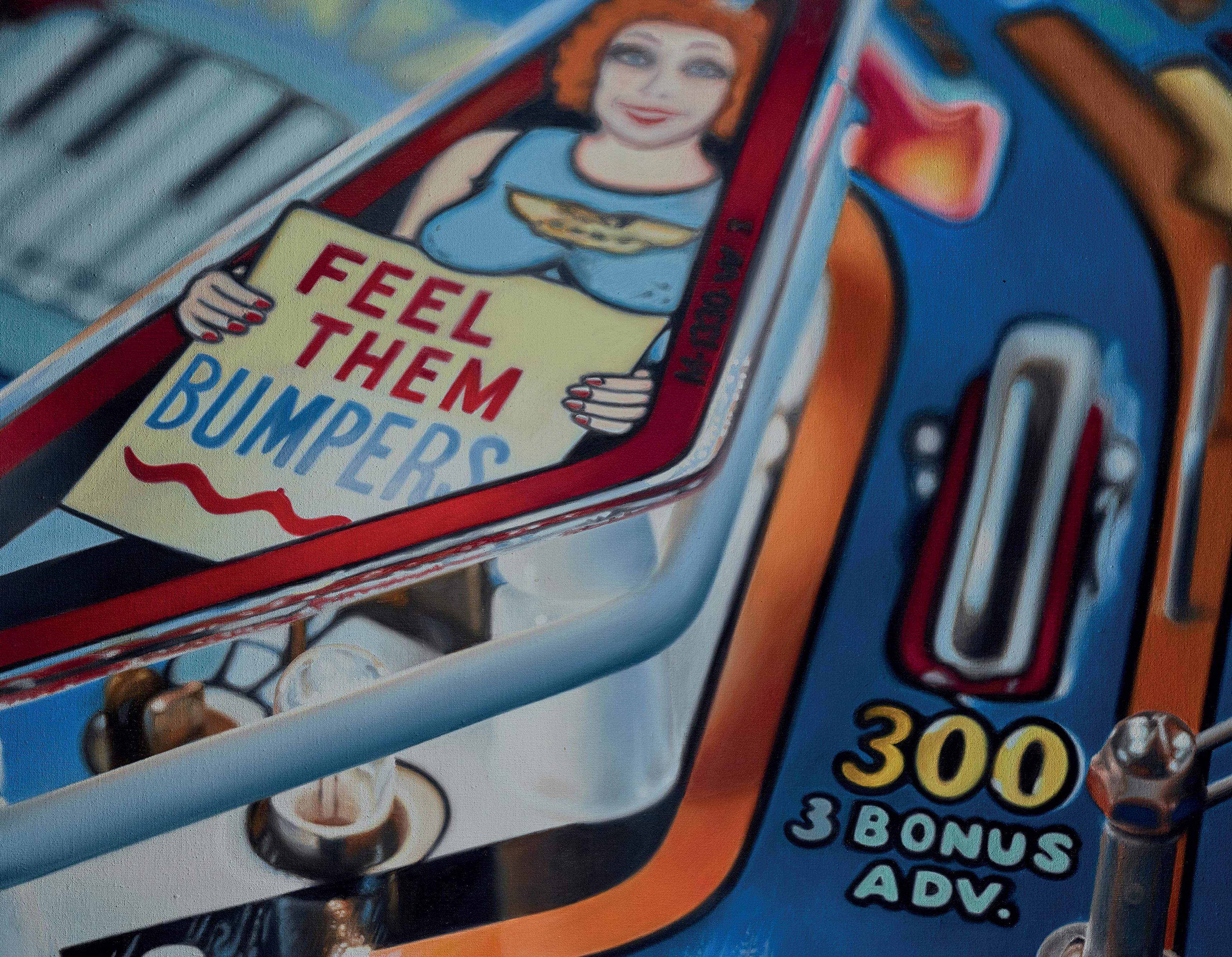
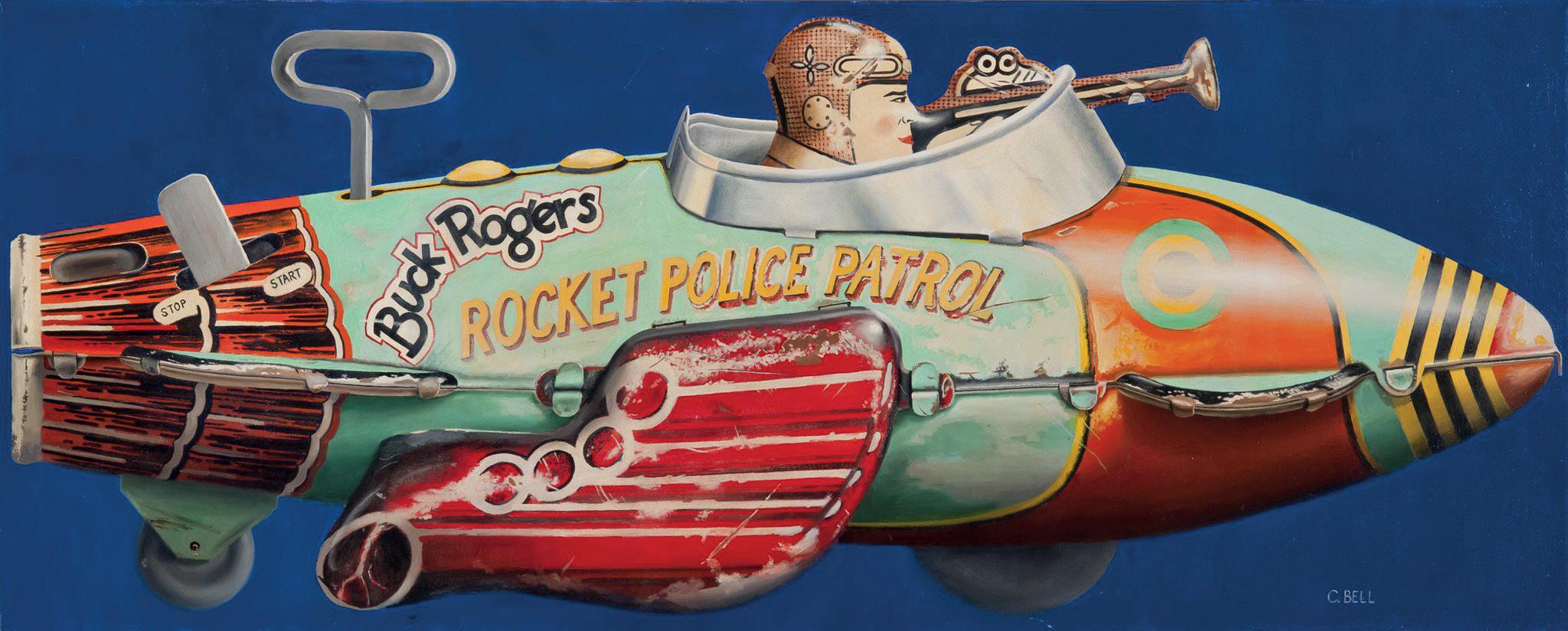
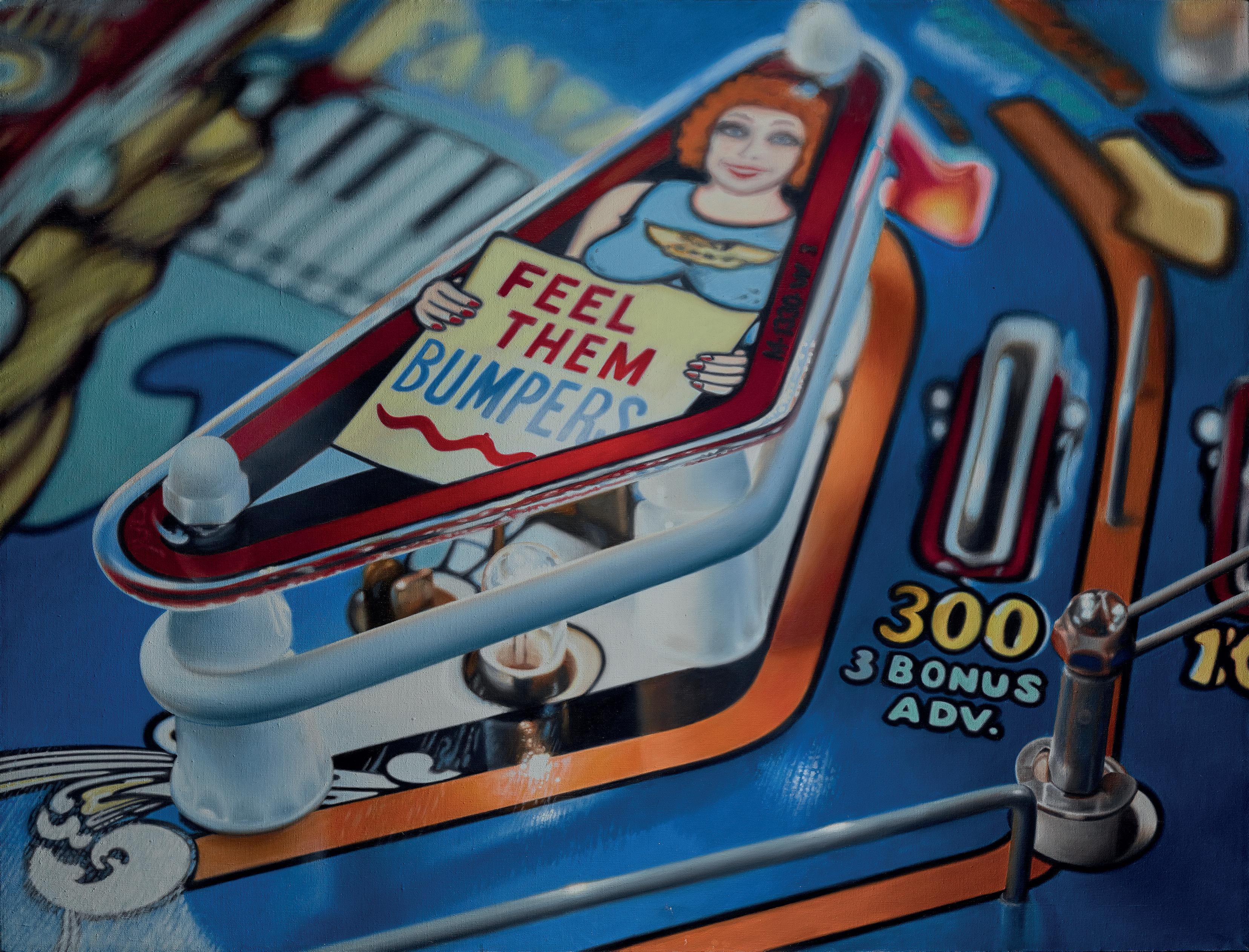
Feel Them Bumpers 1977 oil on canvas, 111.8 × 147.3 cm
Gin 1977 oil on canvas, 152.4 × 182.9 cm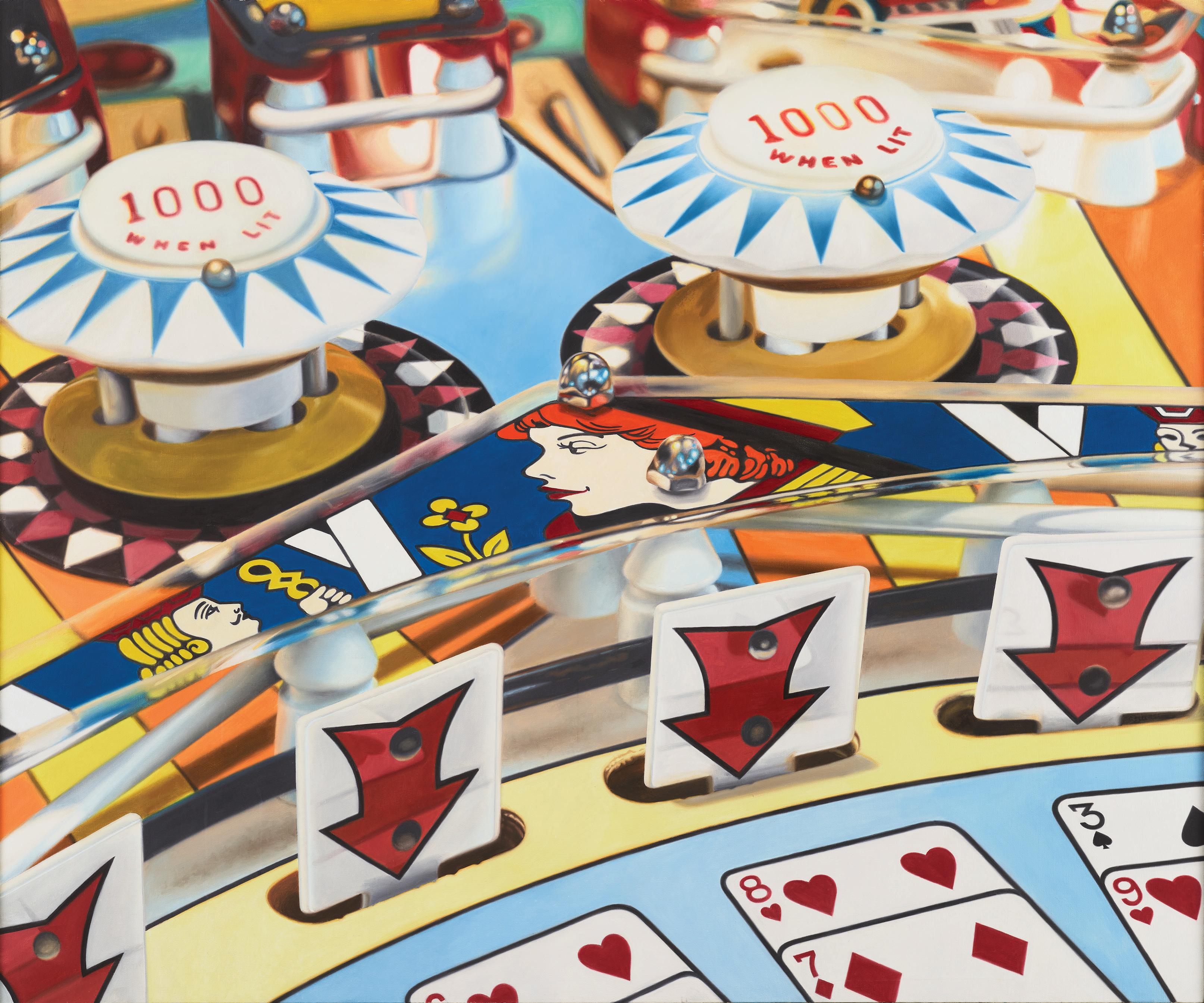
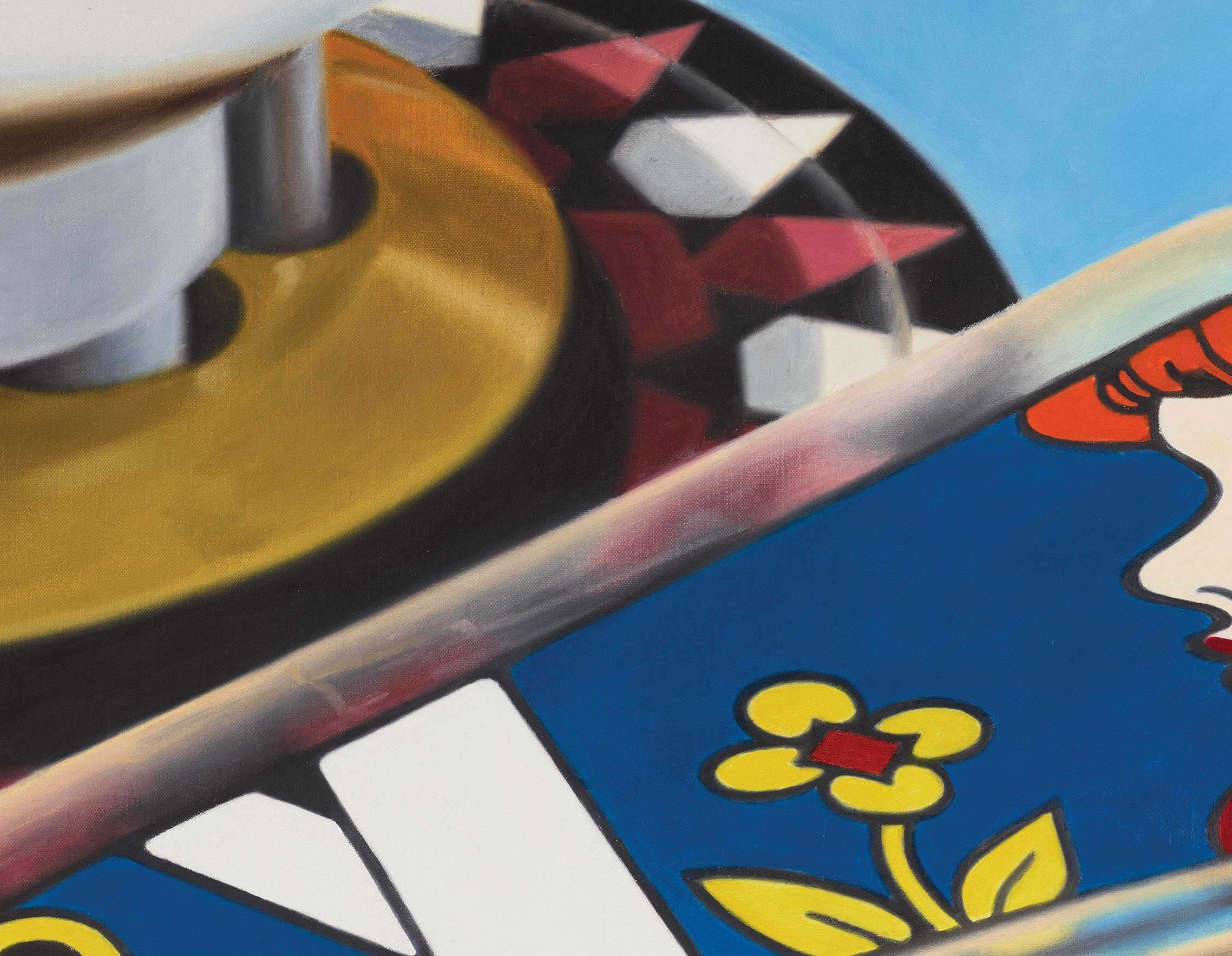

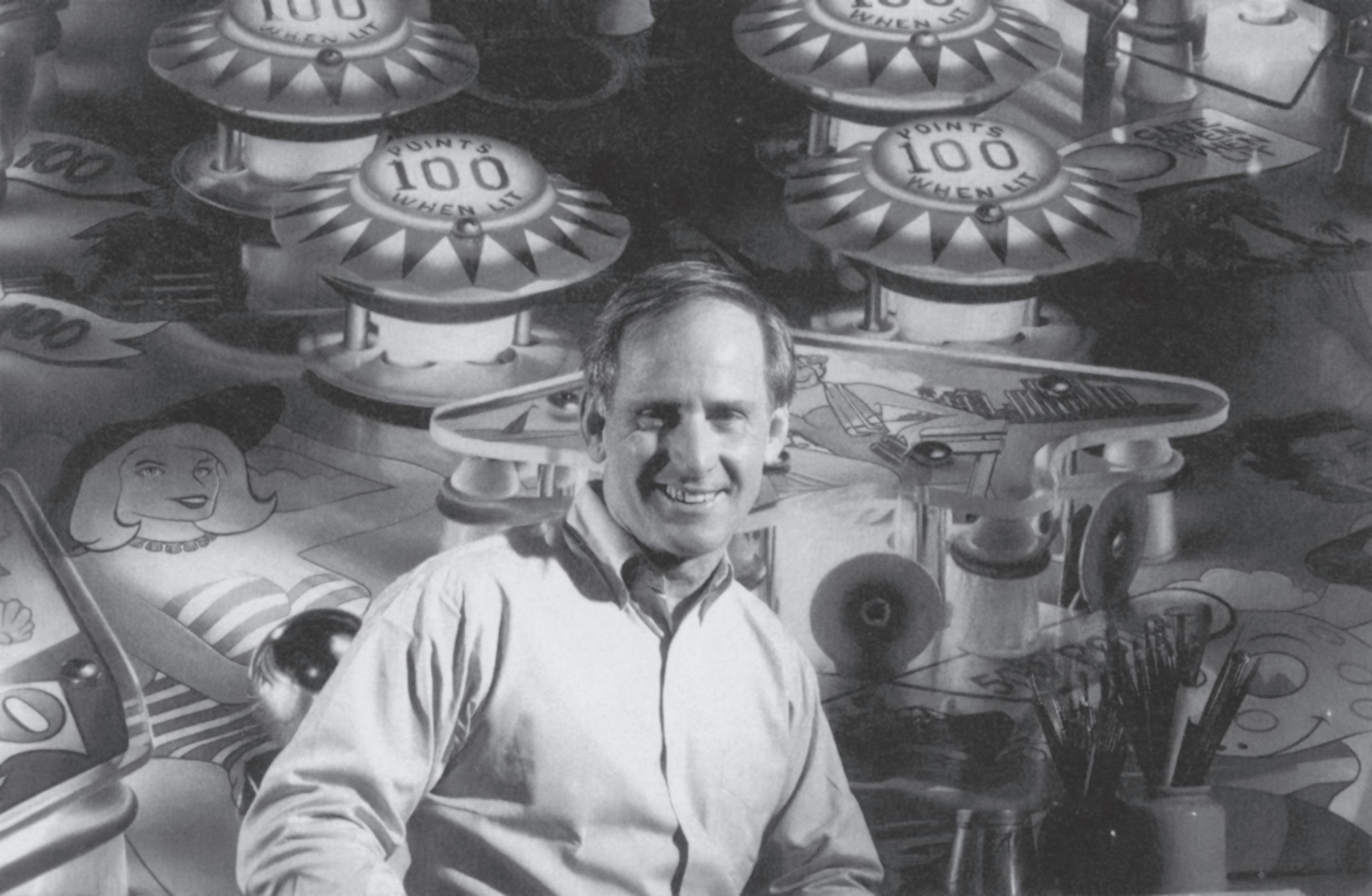
CHARLES BELL (b. 1935, Tulsa, OK; d. 1995, Manhattan, NY) is considered a master of the Photorealist still life, renowned for his paintings of pinball machines, children’s toys and other whimsical objects. In contrast to other artists associated with early Photorealism, Bell never received any formal art training. In 1957 he earned a degree in Business Administration from the University of Oklahoma before serving two years in the US Navy, moving to San Francisco around 1960. While working in the studio of painter Donald Timothy Flores, Bell learned the technique of trompe l’oeil, painting landscapes and still lifes that earned him the Society of Western Artists Award in 1968. Bell moved to New York in 1967. Two years later he began regularly showing at the Louis K. Meisel Gallery, simultaneously working as a comptroller for the International Corporation, eventually becoming becoming a full-time artist in 1980.
Collection, organised by the Smithsonian Institution (1983 – 85), as well as exhibitions at Wadsworth Atheneum, Hartford, CT (1974); Tokyo Biennial (1974); Guggenheim Museum, NY (1977, 1981); Museu de arte moderna de São Paulo (1995); and Deutsche Guggenheim, Berlin (2009). More recent institutional exhibitions include Hiperrealismo 1967 – 2013, Bilbao Fine Arts Museum, Spain (2015); Photorealism: 50 Years of Hyperrealistic Painting (2013 – 2017), which opened in Kunsthalle Tübingen, Germany, before touring to 10 locations and From Lens to Eye to Hand: Photorealism 1969 to Today, Parrish Art Museum, NY (2017 – 2018). Bell’s works are held in collections including the Art Museum of Southeast Texas, Beaumont; The Metropolitan Museum of Art, New York; The Solomon R. Guggenheim Museum, New York; the Smithsonian American Art Museum in Washington DC, and the Hiroshima City Museum of Contemporary Art in Japan, among others.
While most West Coast Photorealists preferred landscapes, particularly images of cars, trucks and homes within a suburban setting, Bell, like many New York–based Photorealists, focused on still life. Drawing inspiration from America’s love affair with consumer culture, play, toys and arcade games, Bell’s images celebrate these colourful worlds of children and adults, enlarging ordinary objects like toys and gumball machines to an unusually grand scale. Based on close-up photographs that Bell magnified many times before projecting them onto canvas, these paintings capture their subjects’ highlights, reflections and iridescent surfaces.
In addition to 10 solo shows at the Louis K. Meisel Gallery, Bell’s work was included in Photo-Realism (1973 – 78) and Assignment: Aviation—The Stuart M. Speiser Photo-Realist
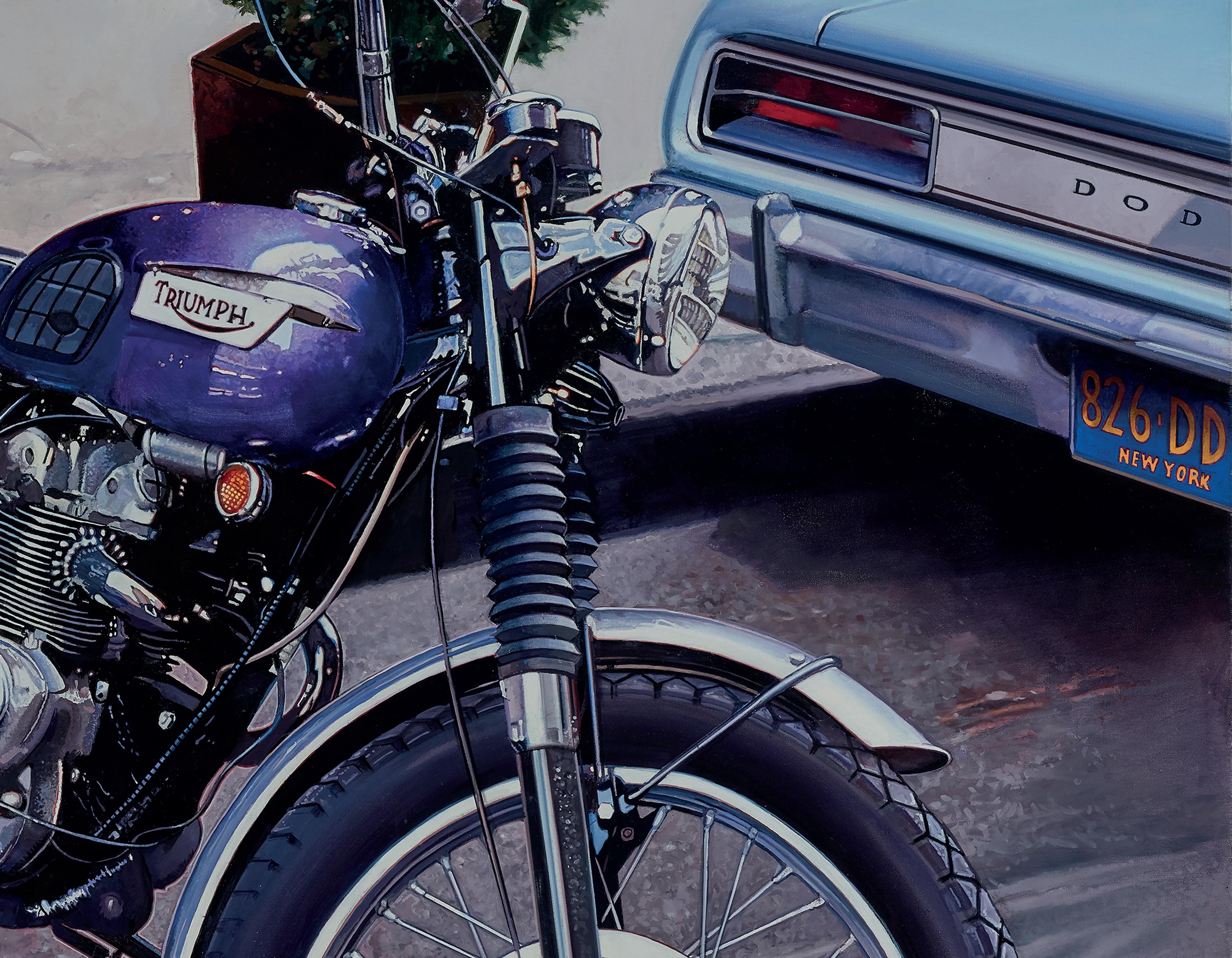
Queens Boulevard 1974 oil on canvas, 155.2 × 211 cm
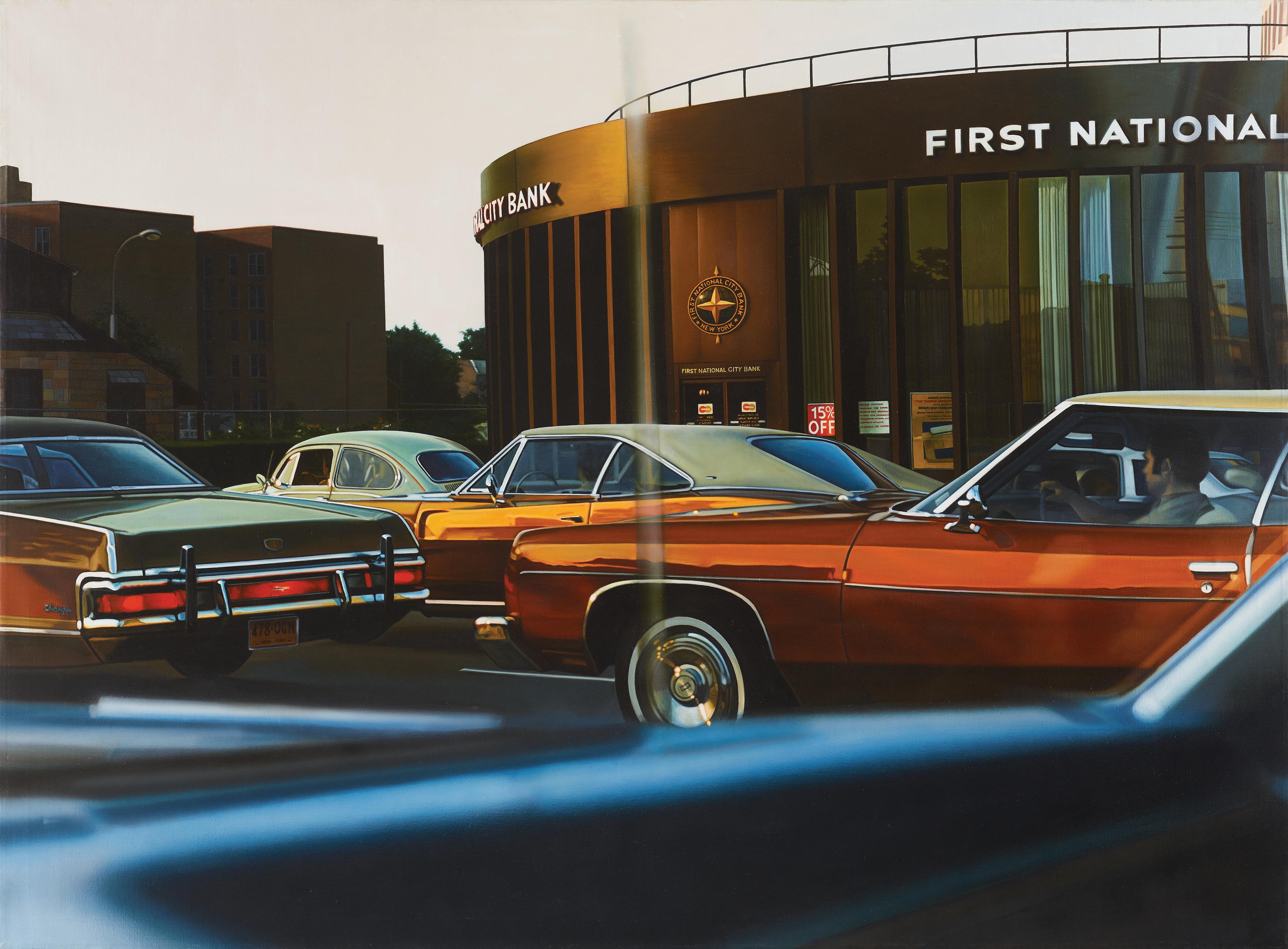
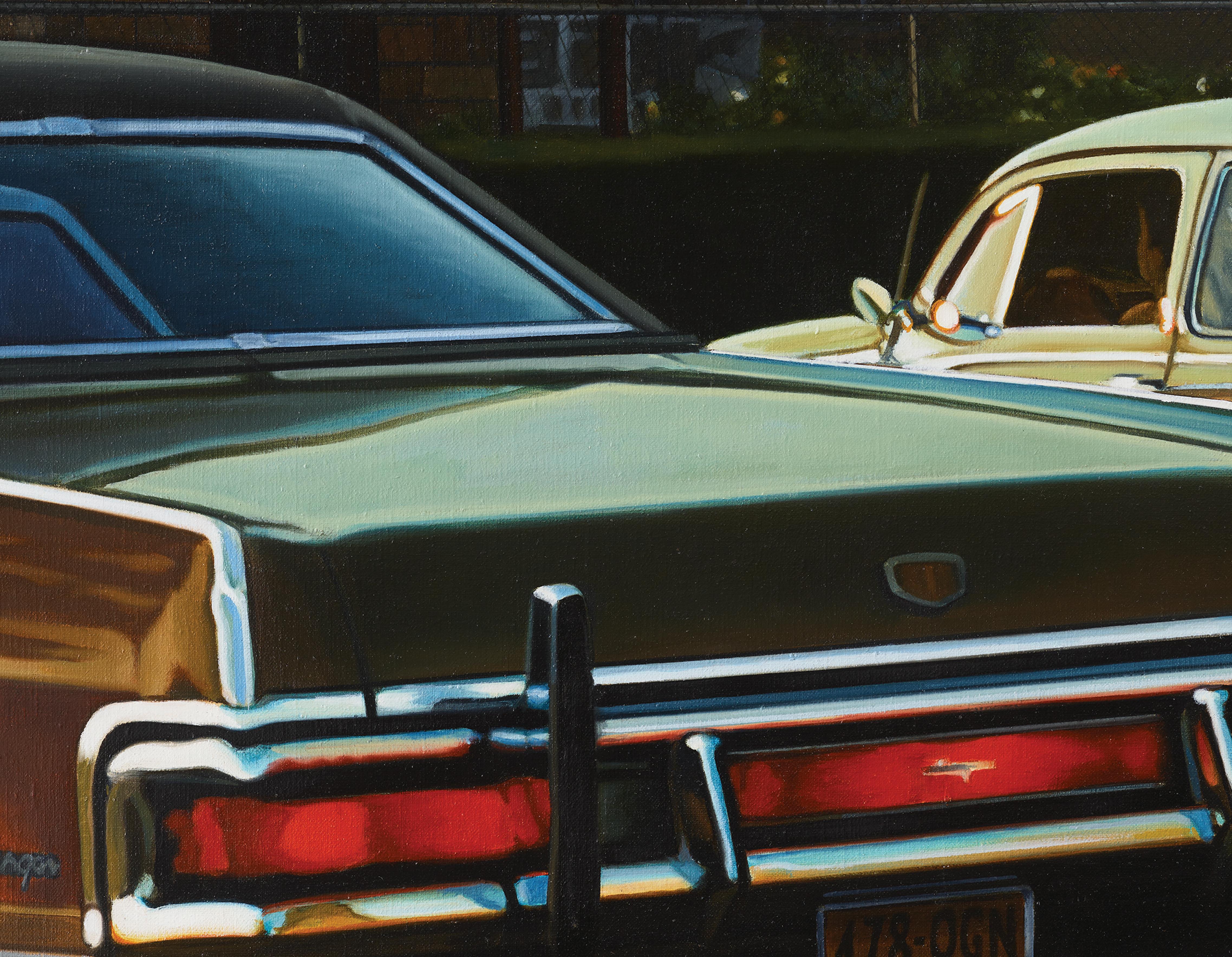
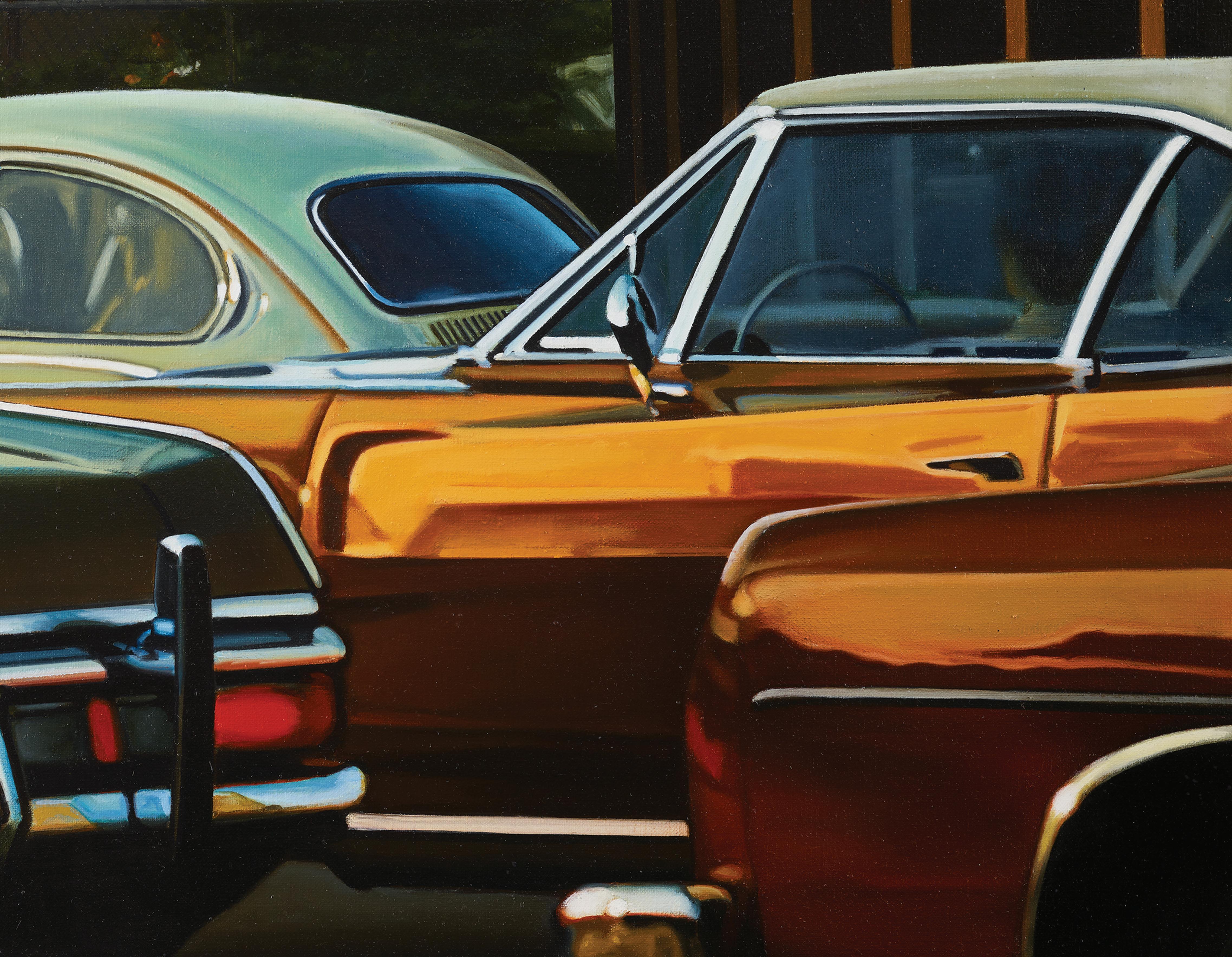
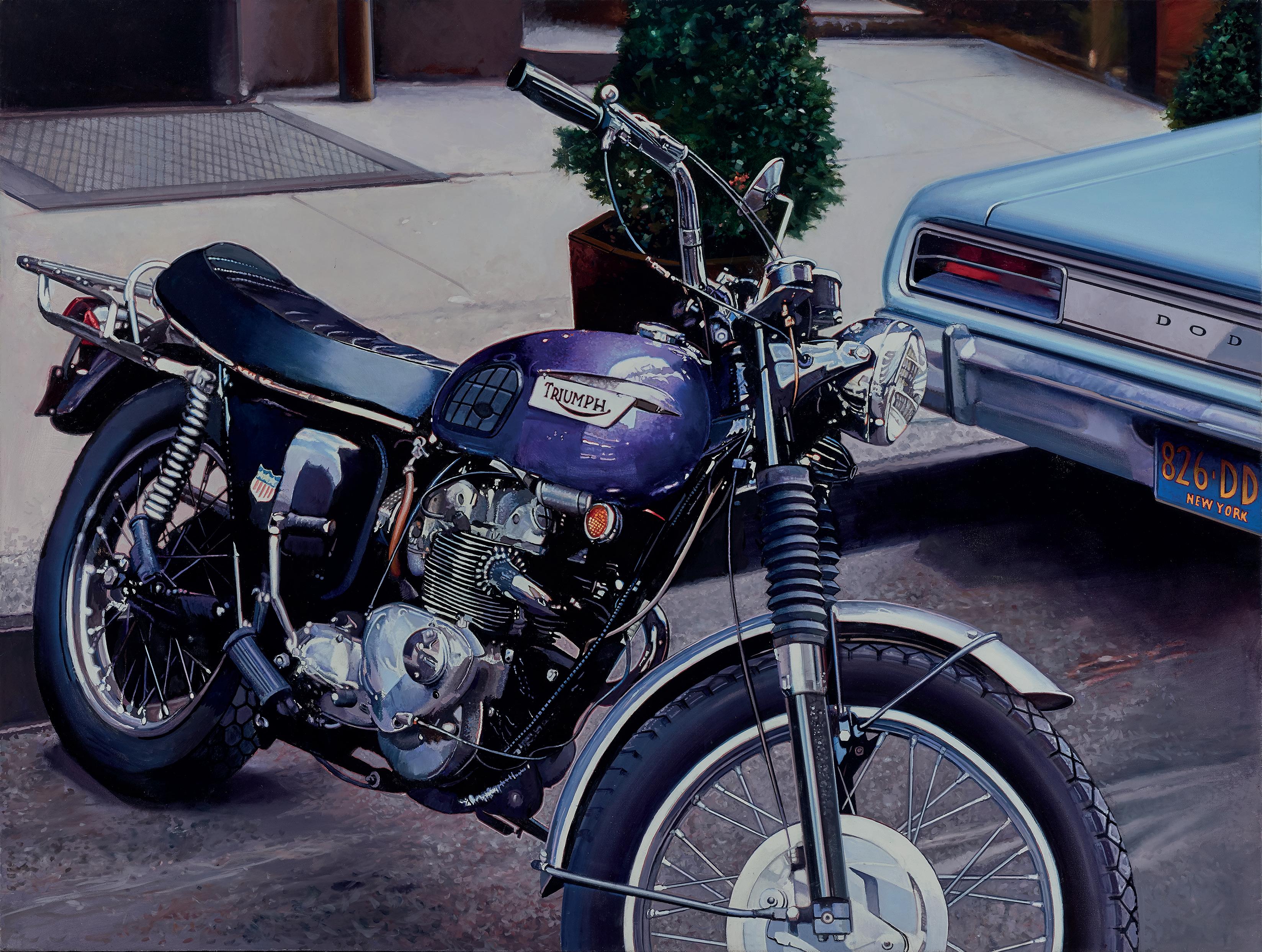 Thompson St. Triumph 1975
oil on canvas, 127 × 168 cm
Thompson St. Triumph 1975
oil on canvas, 127 × 168 cm

TOM BLACKWELL (b. 1938, Chicago, IL; d. 2020, Poughkeepsie, NY) produced a significant body of work based on vehicles, particularly the motorcycle and aeroplanes, but also affordable family motor cars in urban settings. Born in Chicago, Blackwell began his career as an Abstract Expressionist before becoming enamoured with the Pop Art movement of the 1960s. It was with his Post-Pop paintings, which used imagery from photographic sources, that Blackwell garnered early success. By the early 1970s, Blackwell had abandoned his Pop sensibilities and started painting in the newly emerging Photorealist style, becoming one of its leading proponents.
Blackwell’s large-format works of motorcycles are considered among the icons of Photorealist painting. In these pictures he is primarily interested in their shiny surfaces, particularly engines, the different materials from which the machines are built and the interrelation of their forms. Blackwell later turned his attention to elaborate shop window displays decorated with brightly coloured goods or elegantly dressed mannequins; today, we read these as symbols of modern consumer society. In his window shop series, which echoes the work of Richard Estes, Blackwell masterfully captures the reflection of the street scenes as well as the outlines of historic buildings, creating a synthesis of old and new, reality and artifice.
Blackwell is the recipient of the American Academy and Institute of Arts and Letters purchase award and several state grants. He has had numerous solo exhibitions, including at the key galleries to pioneer early Photorealist painting, the Louis K. Meisel Gallery and OK Harris, both located in New York. His work has been included in important institutional exhibitions, such as Picturing America: Photorealism in the 1970s,
Deutsche Guggenheim, Berlin (2009) and Photorealism: 50 Years of Hyperrealistic Painting (2013 – 2017), which started in Kunsthalle Tübingen, Germany before touring to 10 locations including Museo Thyssen-Bornemisza, Madrid; Birmingham Museum & Art Gallery, UK; and Tampa Museum of Art, FL.

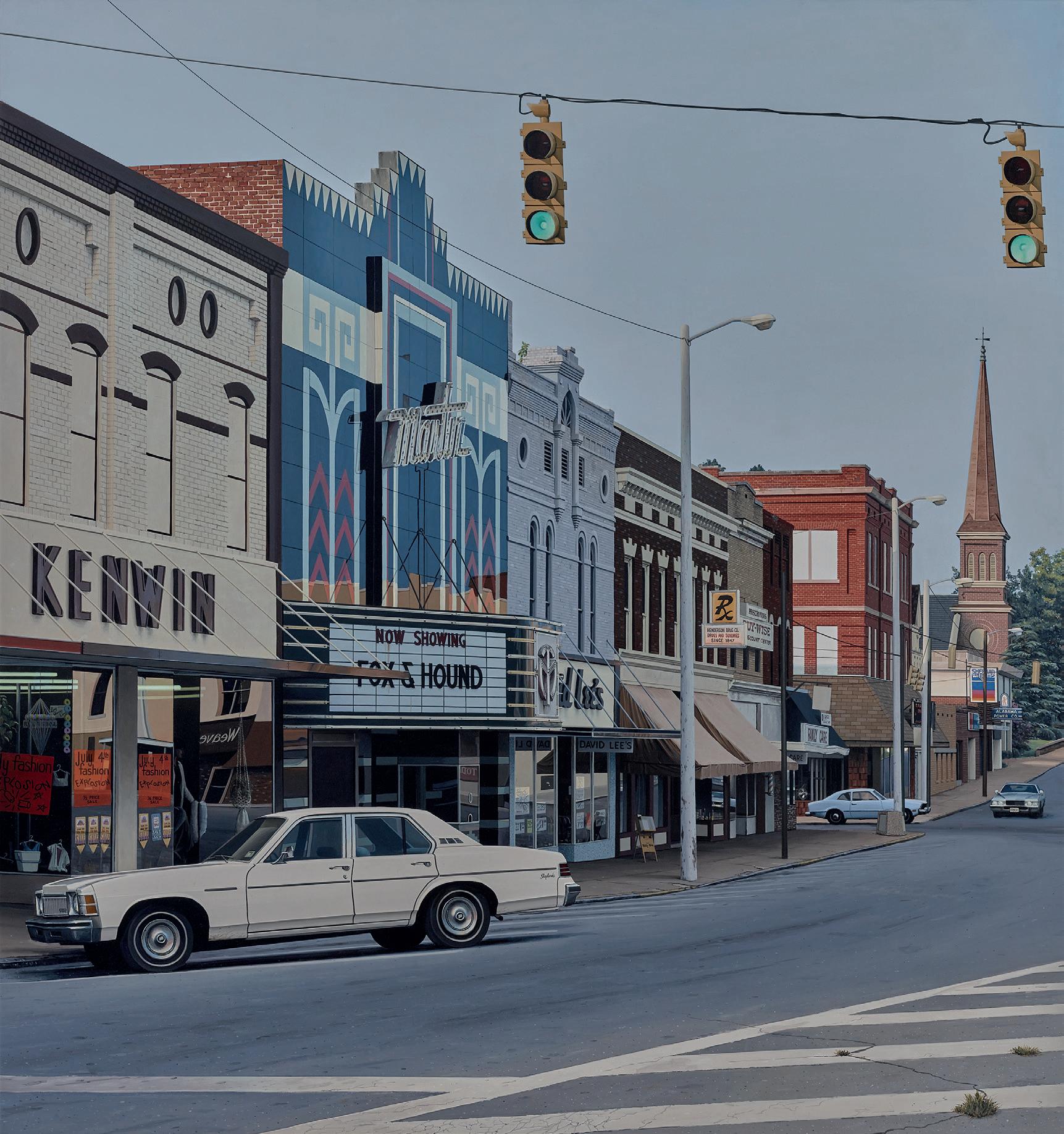
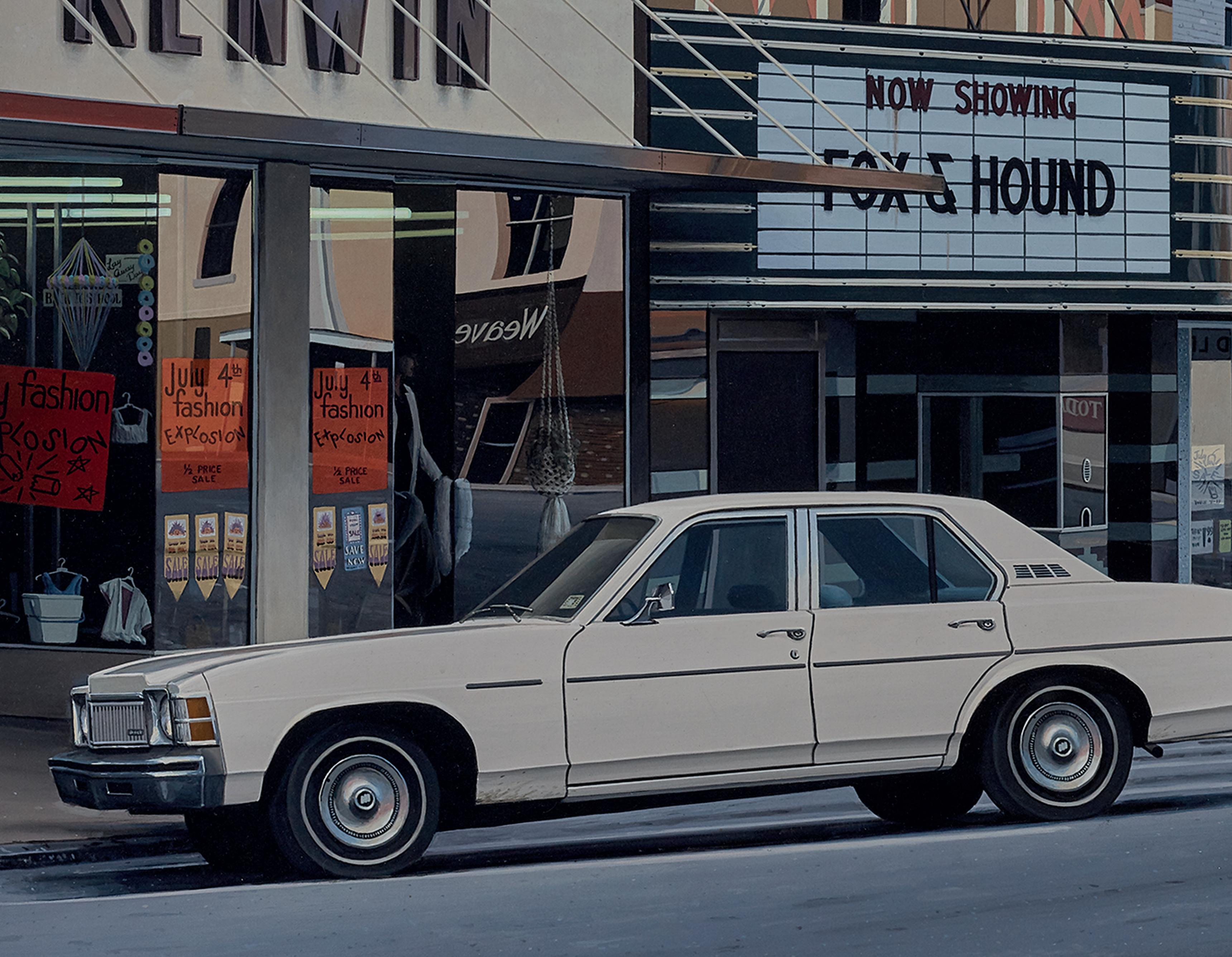
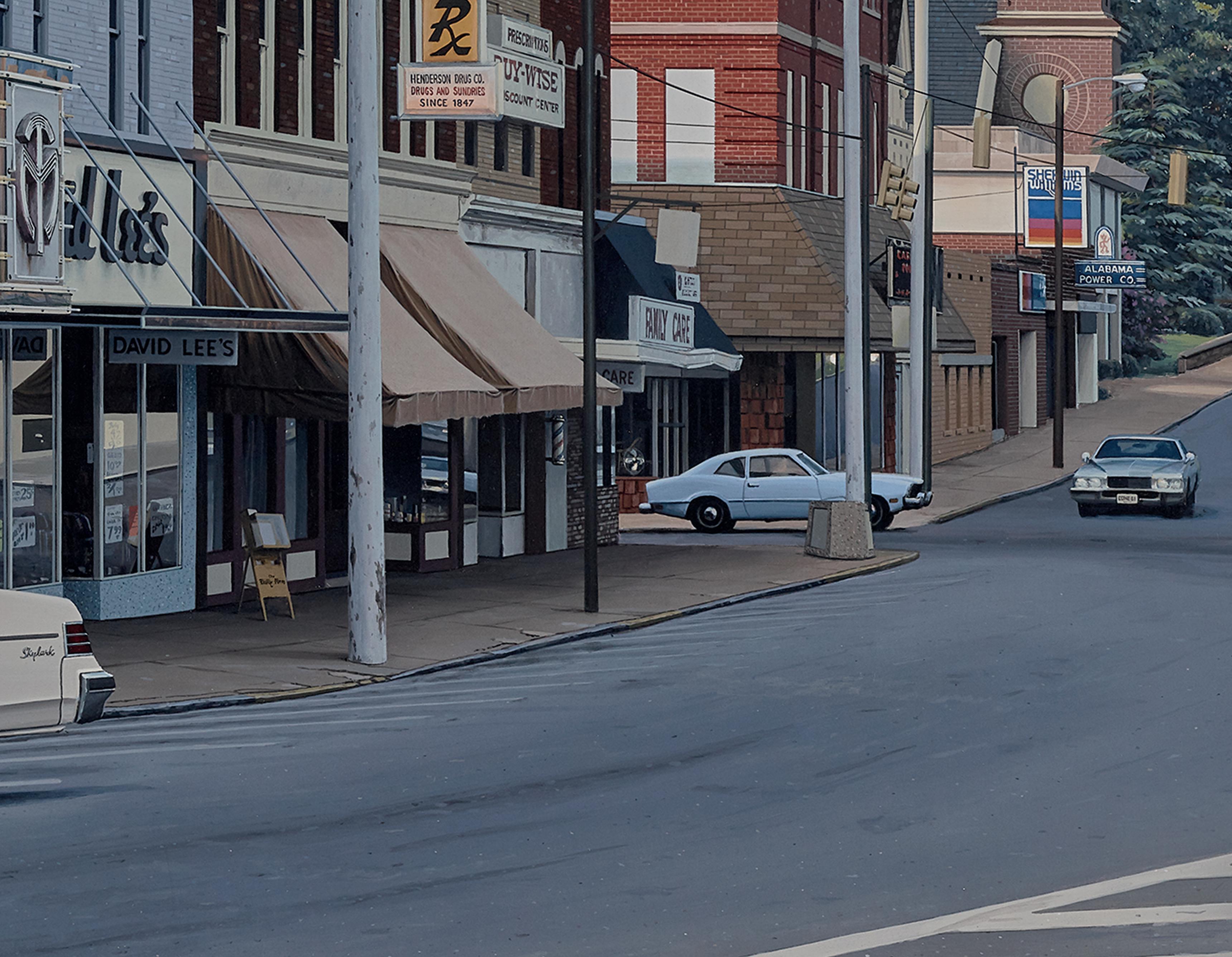
DAVIS CONE (b. 1950, Augusta, GA) is known for his wistful depictions of Art Deco-period cinemas in rural America. He received a BFA in 1972 from Mercer University in Macon, Georgia, and did postgraduate work in photography and design at the University of Georgia until 1973. Cone began exhibiting regionally in 1977 and became one of Photorealism’s leading figures after joining the group in the late 1970s. By 1981, Cone’s work had been shown in Tokyo, Lisbon, Madrid and Nuremberg, as well as cities throughout America.
Cone has devoted his practice to documenting old and sometimes run-down cinemas to convey nostalgia for a bygone age and show the endurance of America’s movie culture. He captures these vintage establishments in cities and suburban settings at various hours, from multiple angles and in different weather systems and lighting, paying particular homage to his subjects’ neon lights and architectural grandeur. Using the dozens of photographs he takes, Cone depicts scenes in which figures rarely appear or are only incidental to the image, capturing an atmospheric quality redolent of Edward Hopper.
Cone’s first solo exhibition was at OK Harris, New York, in 1979. Significant institutional exhibitions include the Pennsylvania Academy of Fine Arts Contemporary American Realism since 1960 (1981); the Tokyo Metropolitan Museum’s Visions of NYC: American Paintings, Drawings, and Prints of the 20th Century (1981) and American Realism and Figurative Art: 1955 – 1990 organised by the Miyagu Museum of Art, Miyagi, Japan (1991). Recent landmark survey shows include Shock of the Real: Photorealism Exhibited at Boca Raton Museum of Art, Art, Boca Raton, FL (2009) and Photorealism: 50 Years
of Hyperrealistic Painting (2013 – 2017), which started in Kunsthalle Tübingen, Germany, before touring to 10 locations including Museo Thyssen-Bornemisza, Madrid, Birmingham Museum & Art Gallery, UK, and Tampa Museum of Art, FL.
Davis Cone lives and works in Los Angeles.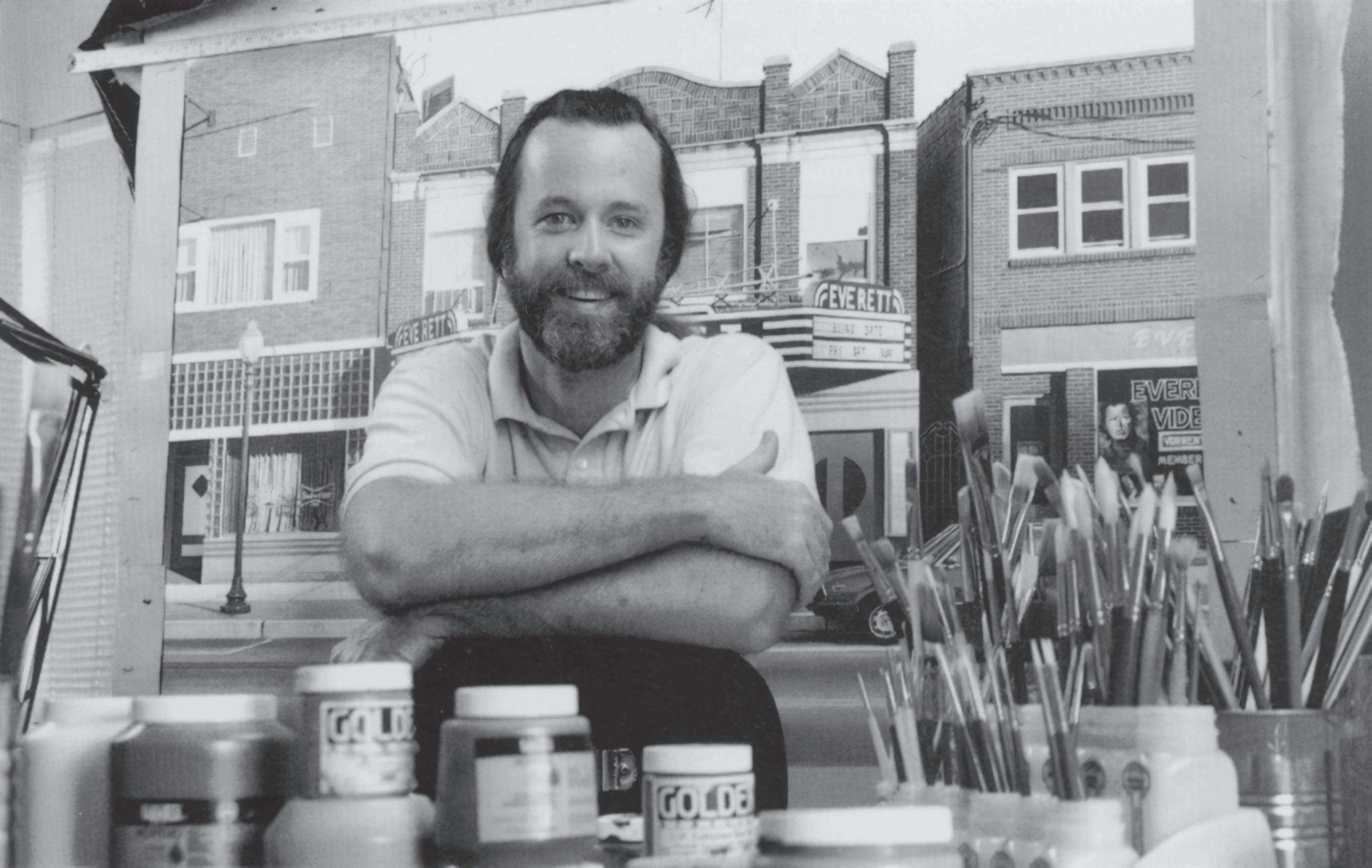
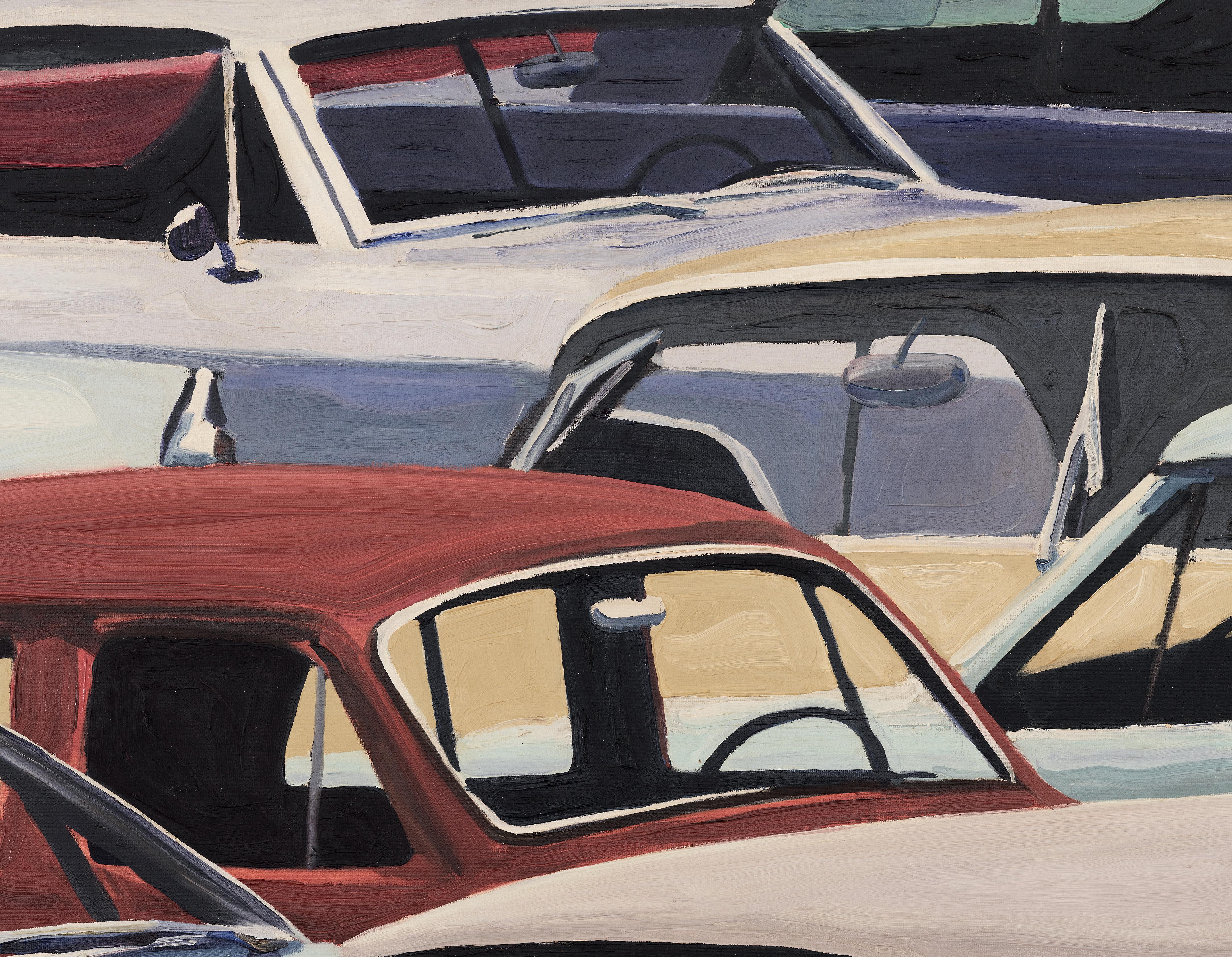
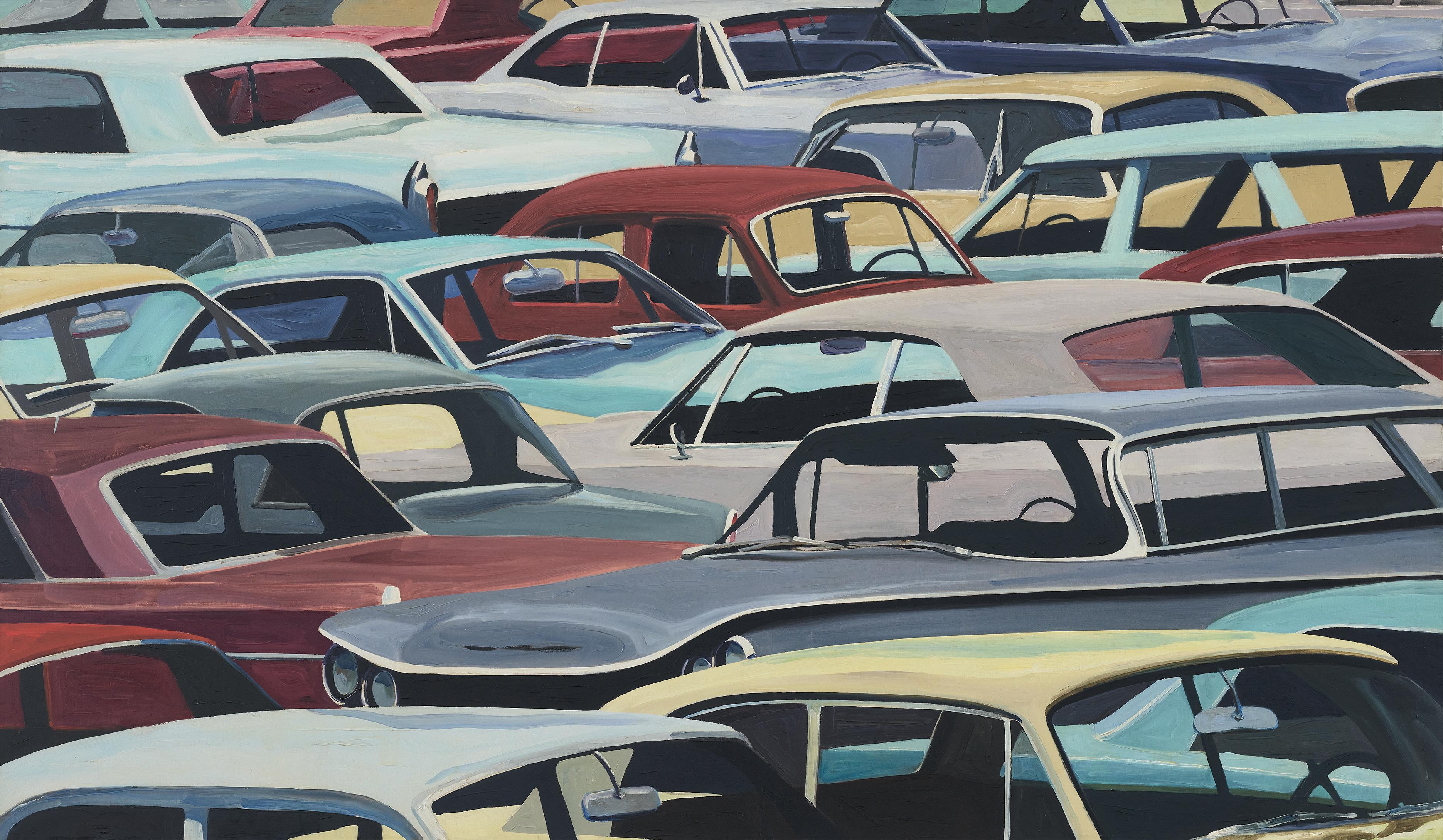
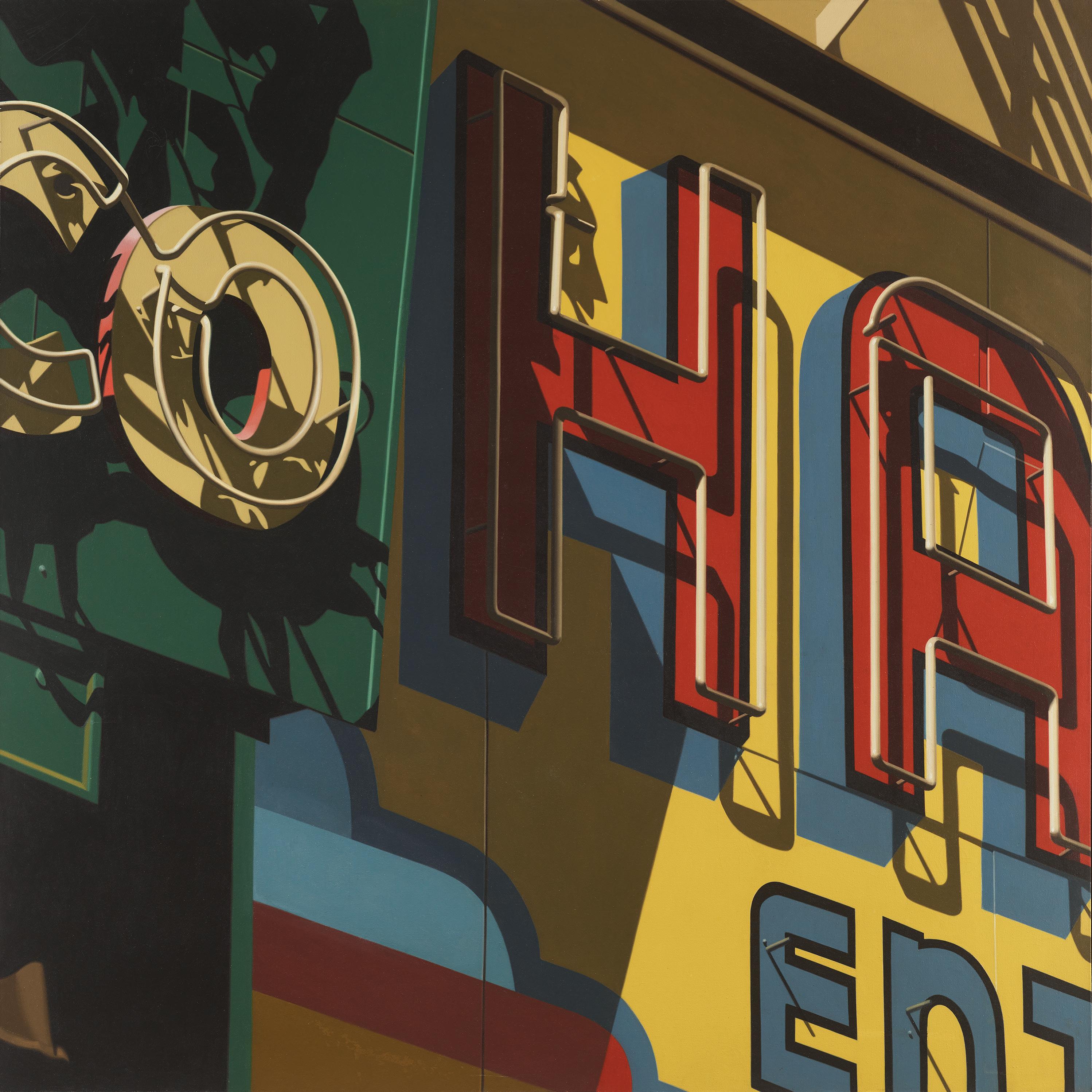 HA 1971 oil on canvas, 198 × 198 cm
HA 1971 oil on canvas, 198 × 198 cm
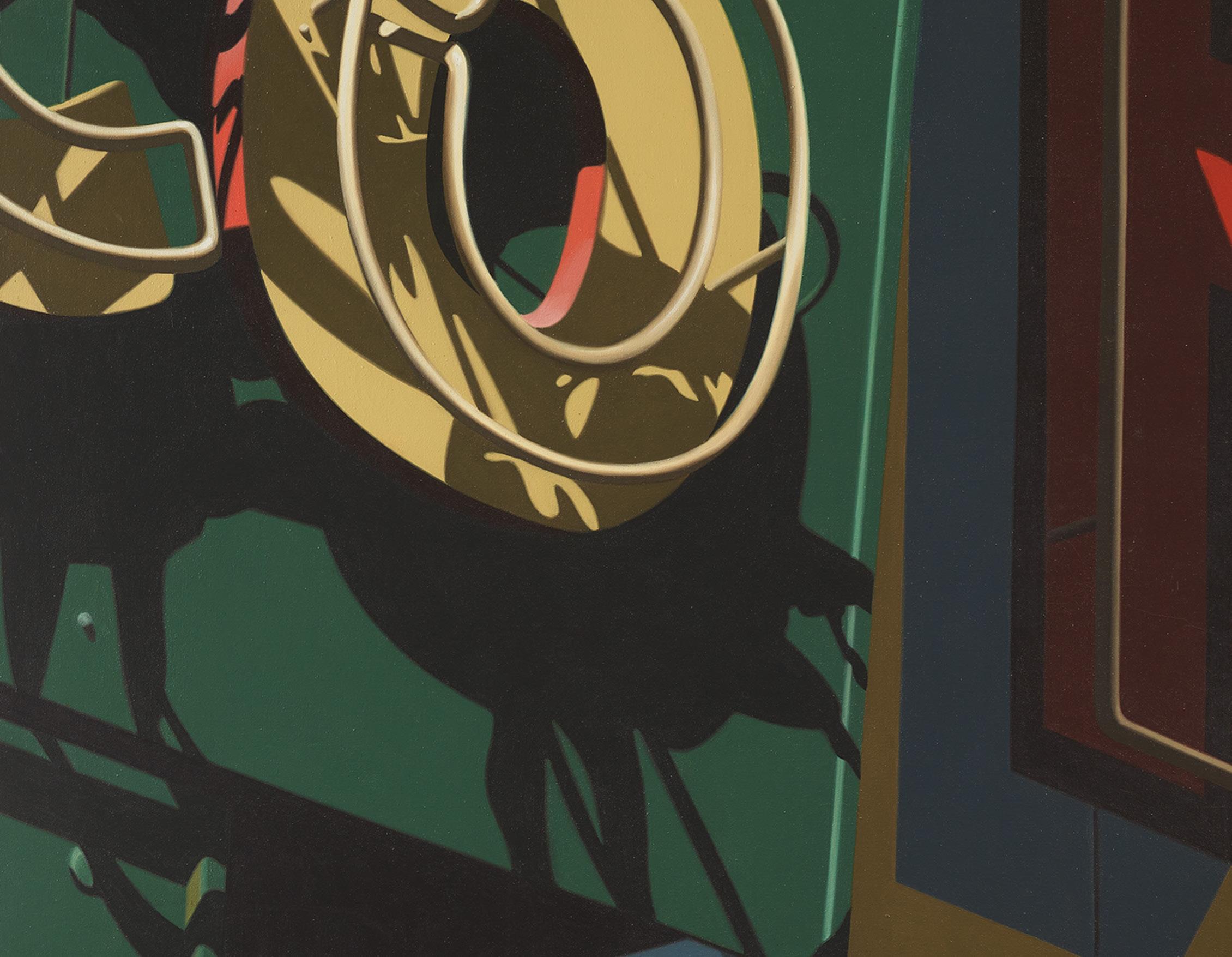
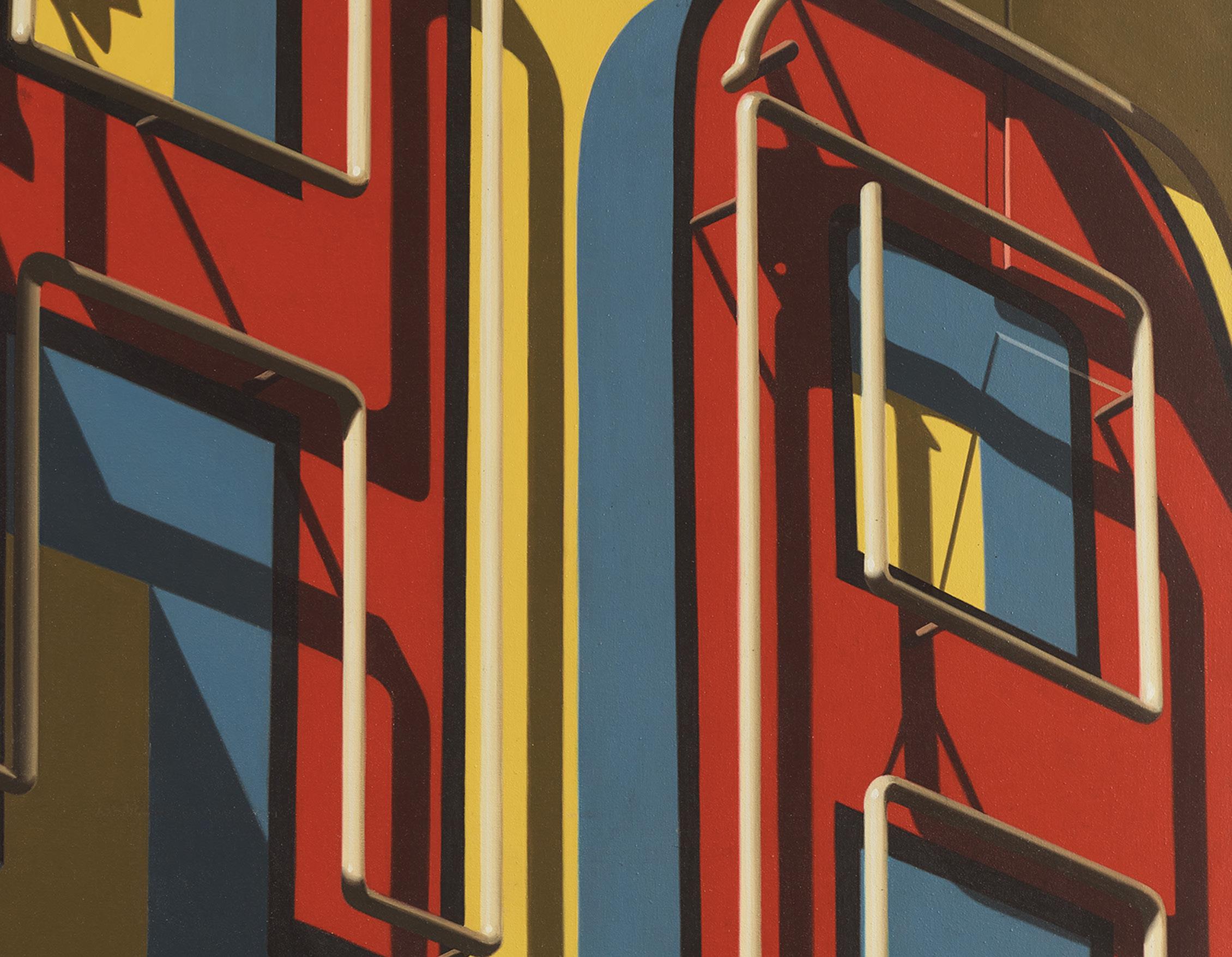 Miller High Life 1977 oil on canvas, 198.1 × 198.1 cm
Miller High Life 1977 oil on canvas, 198.1 × 198.1 cm
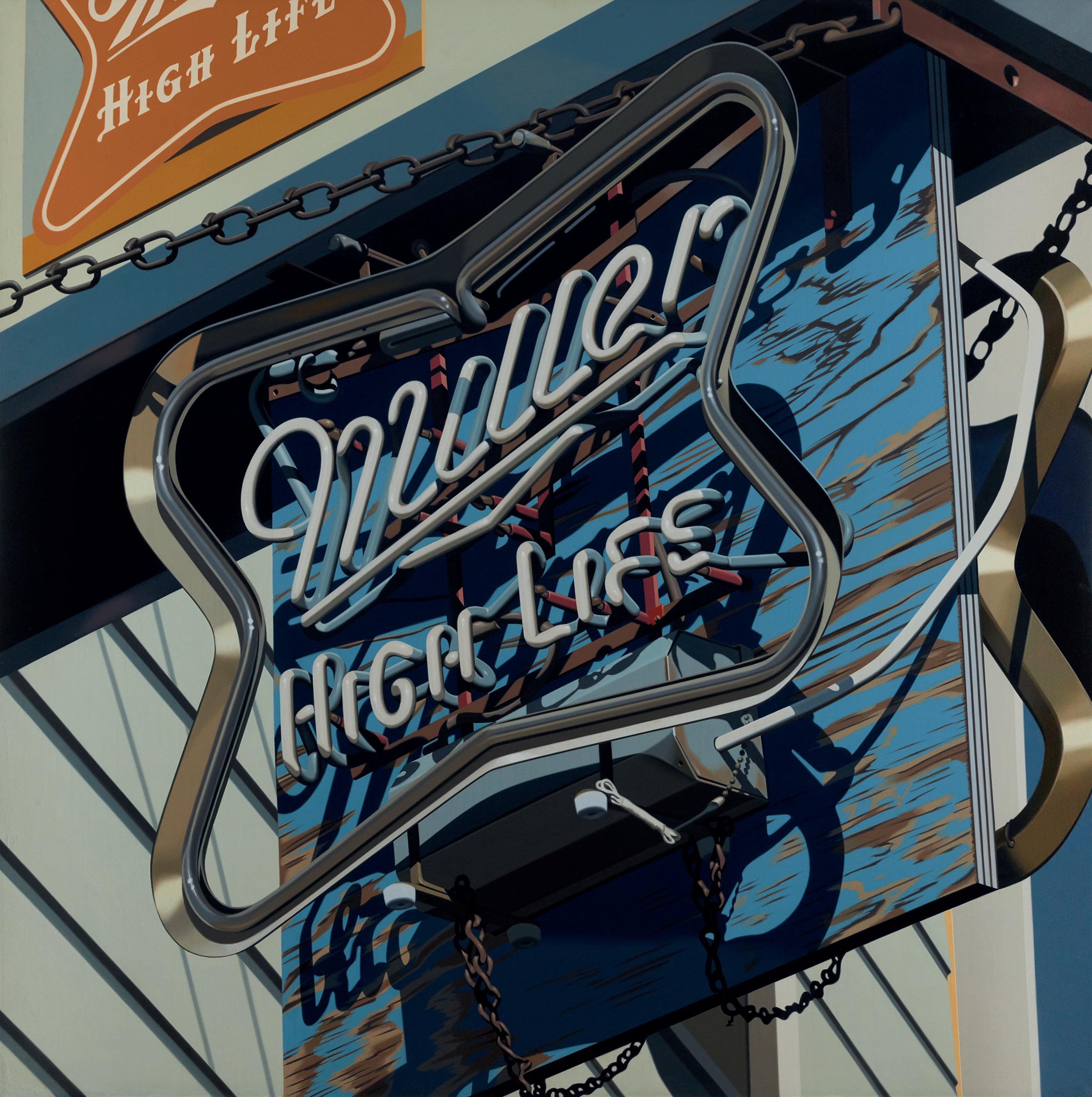
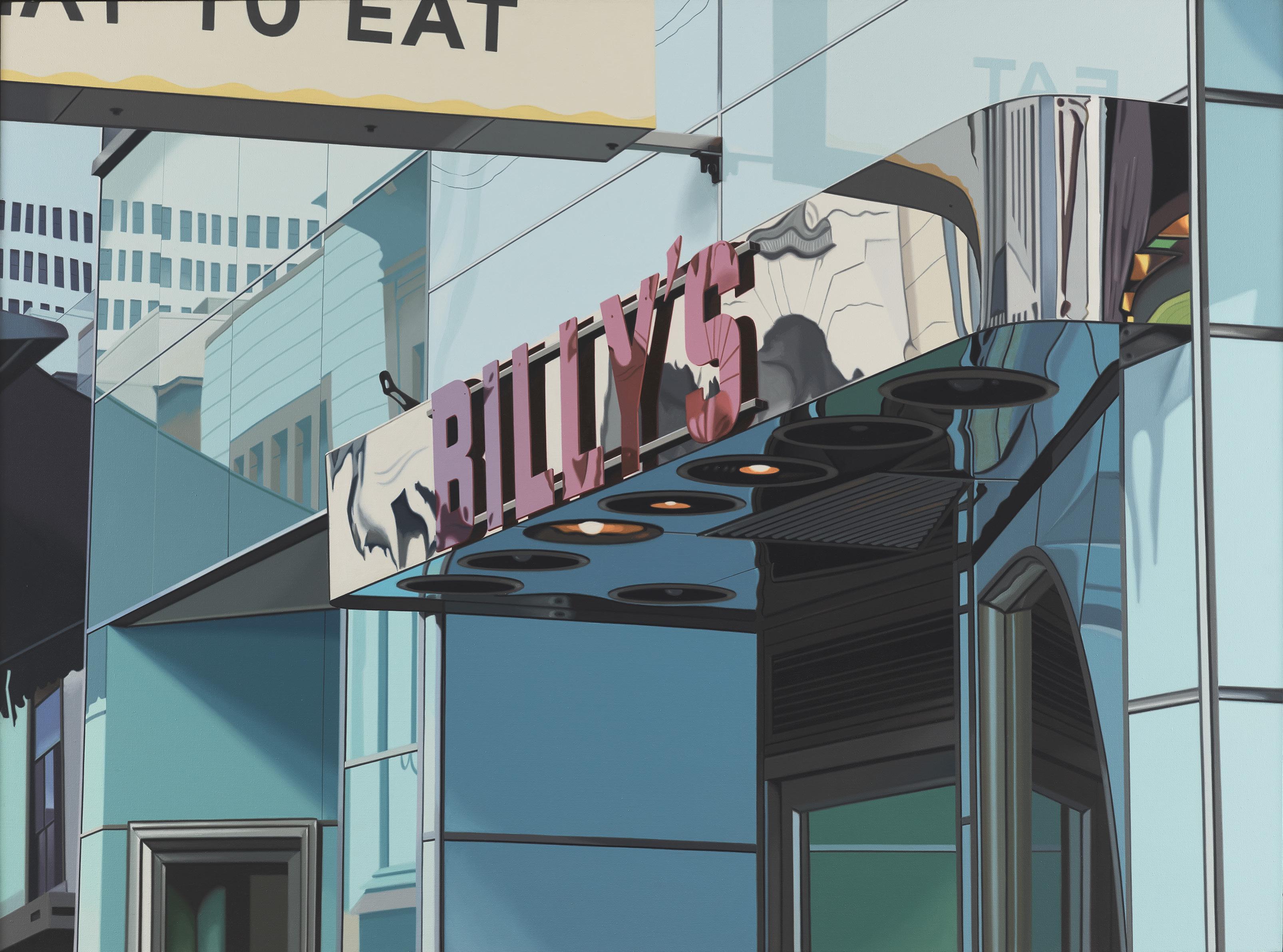 Billy’s 1980 oil on canvas, 124.5 × 167.6 cm
Billy’s 1980 oil on canvas, 124.5 × 167.6 cm
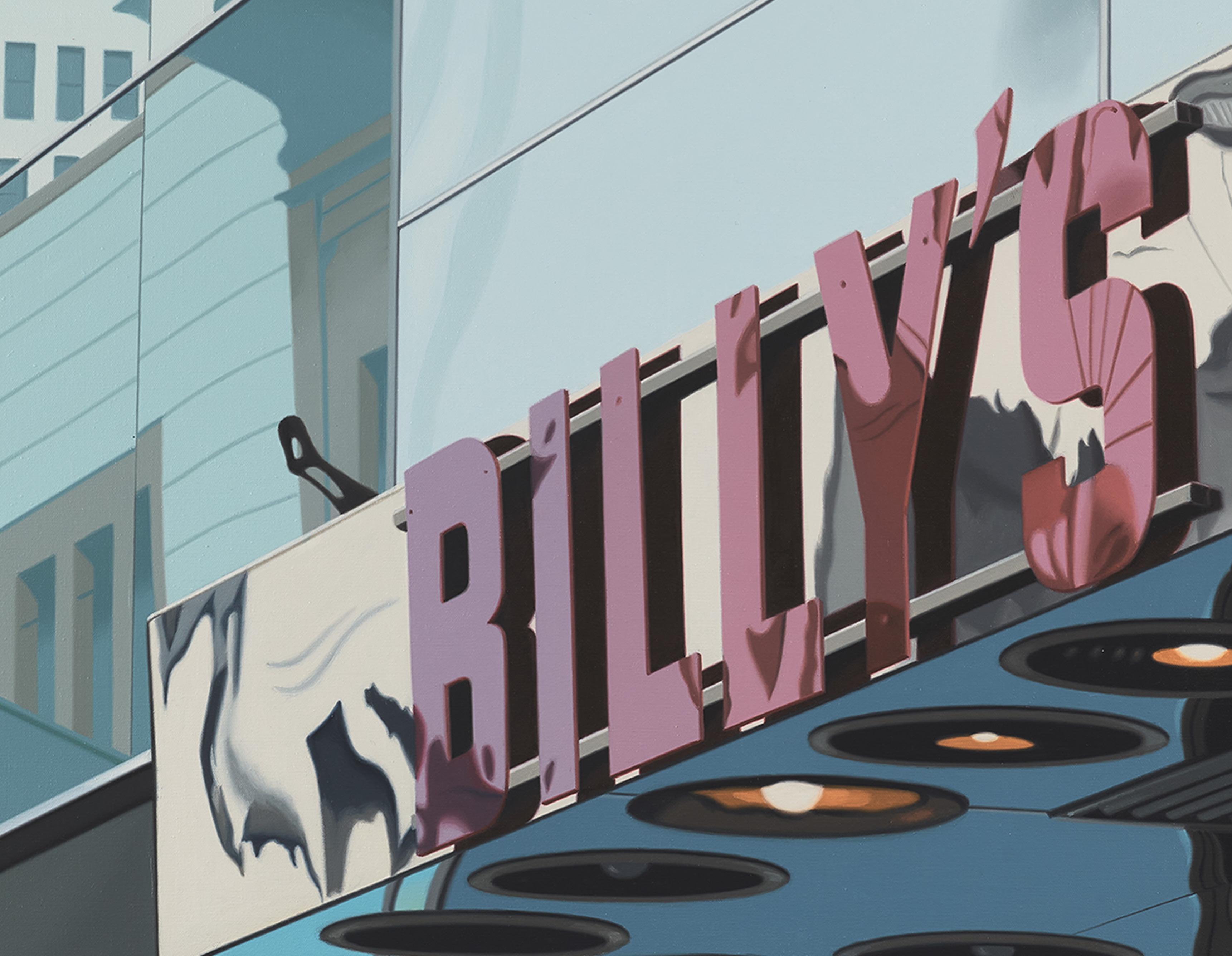
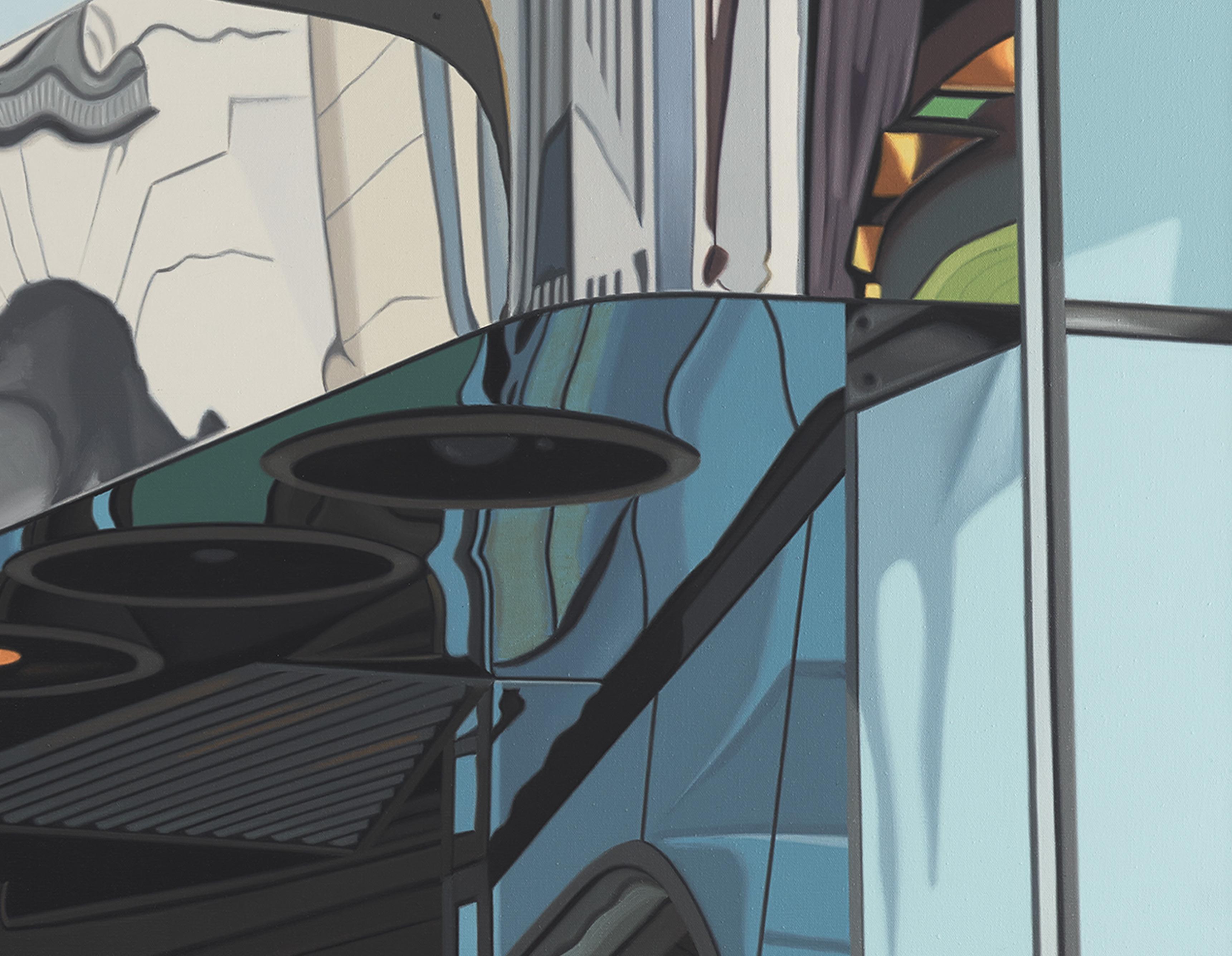 Old Crow 1983 oil on canvas, 117.2 × 152.4 cm
Old Crow 1983 oil on canvas, 117.2 × 152.4 cm
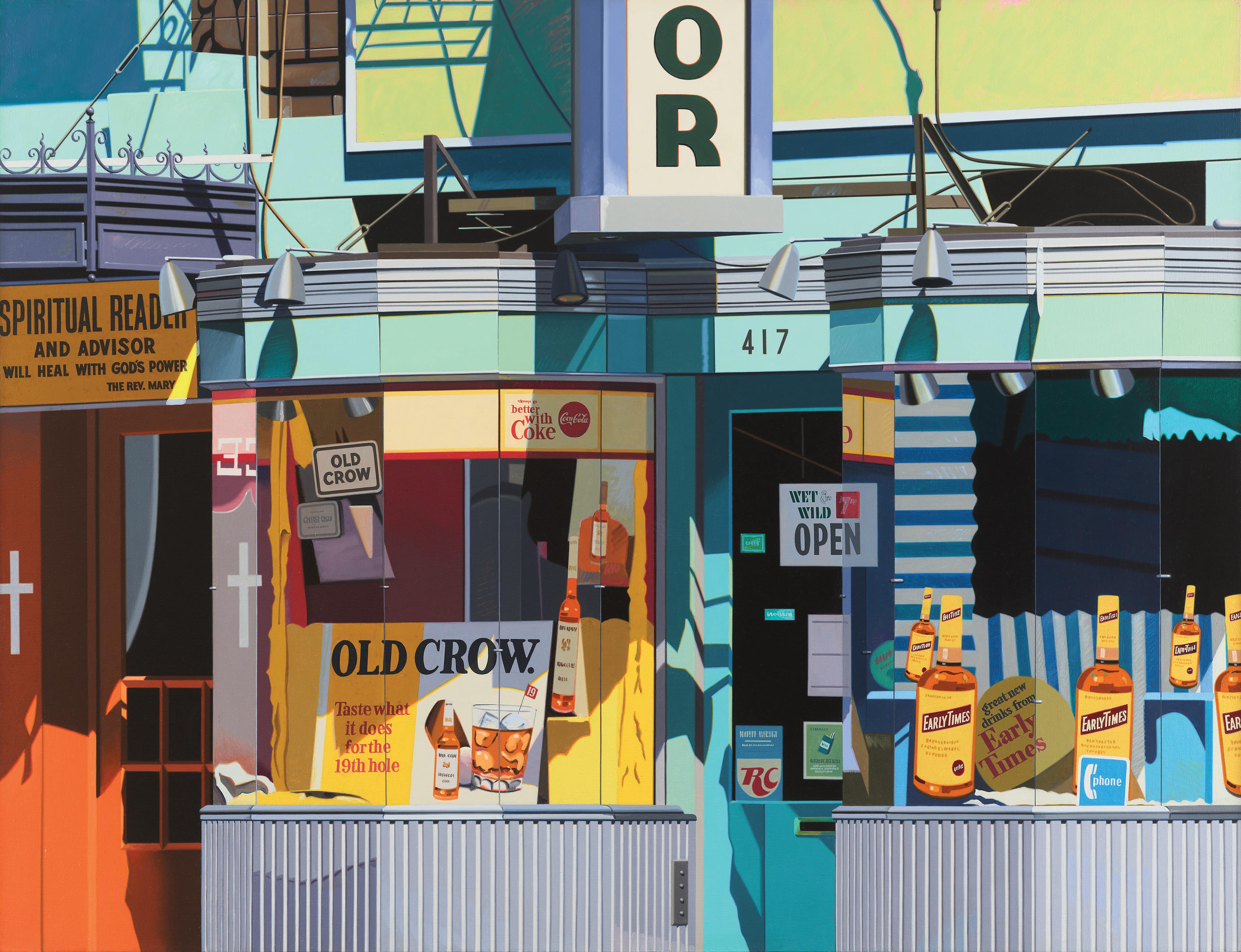
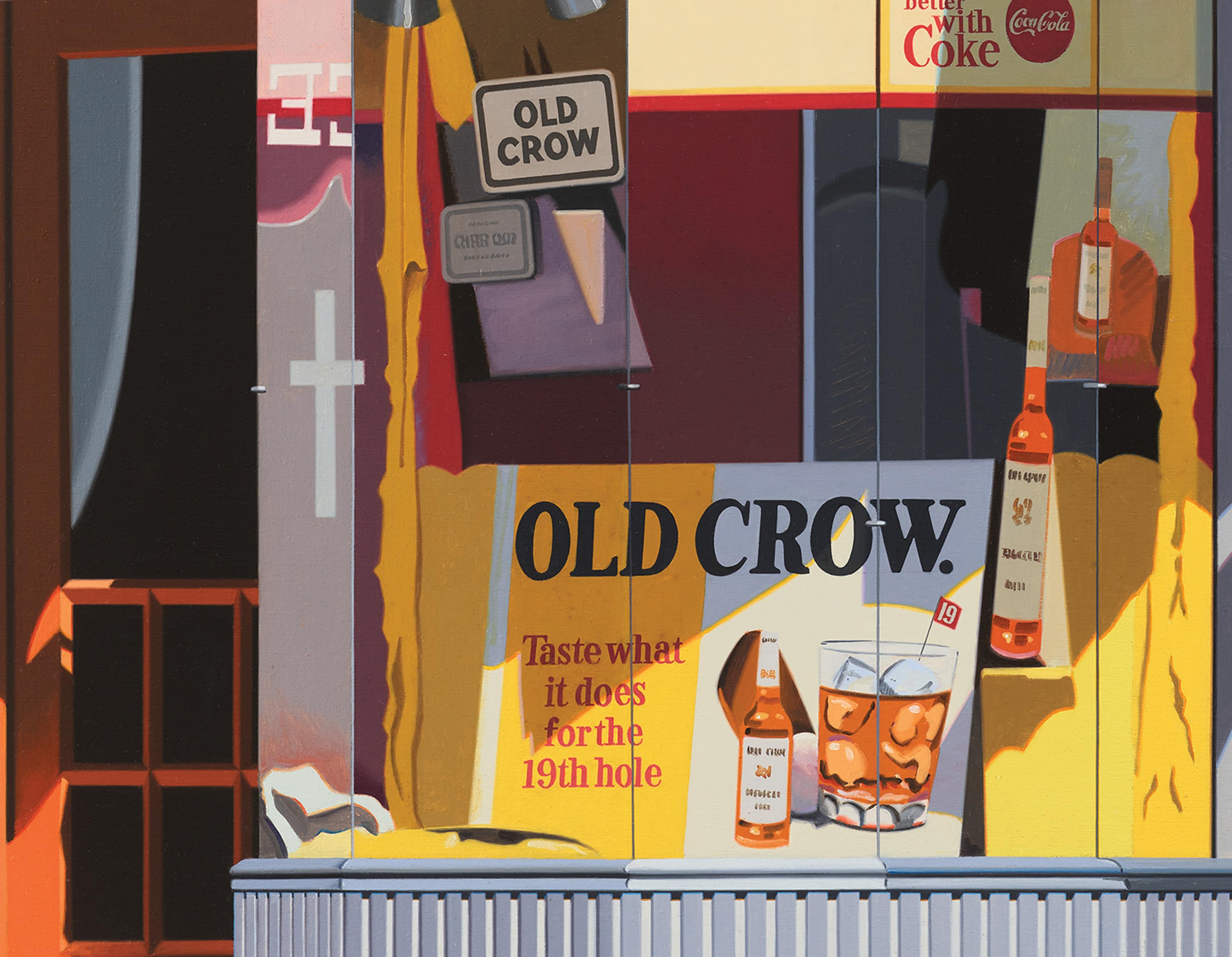
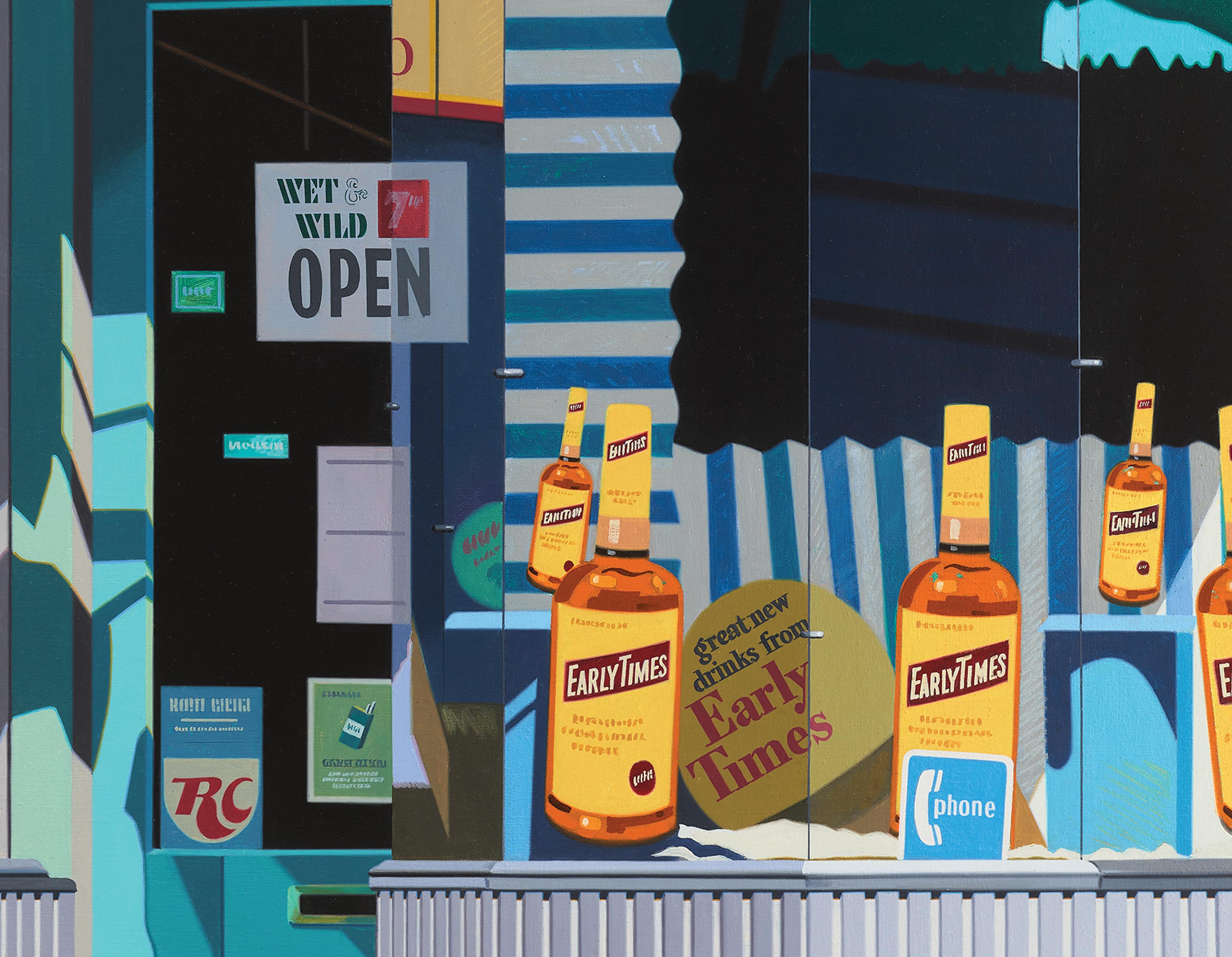
ROBERT COTTINGHAM (b. 1935, Brooklyn, NY) is recognised for his Photorealist paintings of American urban landscapes, particularly his depictions of painted and neon shop signs and building façades. After serving in the US Army from 1955 to 1958, Cottingham studied at the Brooklyn Pratt Institute, earning a BFA in 1963, after which he began a career as an art director in advertising. In 1964, he relocated to Los Angeles for work, where he became inspired by the drastically different environment of the West Coast metropolis. There, Cottingham began to commit seriously to painting and, in 1968, ended his career in advertising to devote himself to art, with his first solo show in 1971 at Ivan Karp’s OK Harris in New York.
Although considered a leading figure of Photorealism, Cottingham rejects association with the movement. Instead, he sees himself as working in the long tradition of American realism, citing Edward Hopper and the New Realists as influences. Changing the words in his signs and façades, Cottingham does not regard his work as mere copies of photographs but edits their meaning to draw out the subject matter of so-called Americana. He describes his fascination with signs and undeniable interest in typography and letters as originating from trips to Times Square as a child. In the late 1960s, Cottingham started to incorporate photography into his practice, using his camera to separate and isolate each detail of his surroundings from their context.
Cottingham’s work was featured in seminal early presentations, including Harald Szeemann’s documenta 5: Questioning Reality – Pictorial Worlds Today, Kassel (1972) and Photo-Realism, at the Serpentine Gallery, London (1973). He was elected an associate Academician of the National
Academy of Design in 1990, becoming a full Academician in 1994. In 1998 Cottingham had a retrospective, Eyeing America: Robert Cottingham Prints, at the Smithsonian American Art Museum, Washington, DC. Recent institutional group exhibitions include American Dream, National Museum in Krakow, Poland (2009); Picturing America: Photorealism in the 1970s, Deutsche Guggenheim, Berlin (2009); HyperAmerica: Landscape – Image – Reality, Kunsthaus Graz, Austria (2015) and Photorealism: 50 Years of Hyperrealistic Painting (2013 – 2017), which opened in Kunsthalle Tübingen, Germany before touring to 10 locations including Museo Thyssen-Bornemisza, Madrid; Birmingham Museum & Art Gallery, UK; and Tampa Museum of Art, FL.
Robert Cottingham lives in western Connecticut.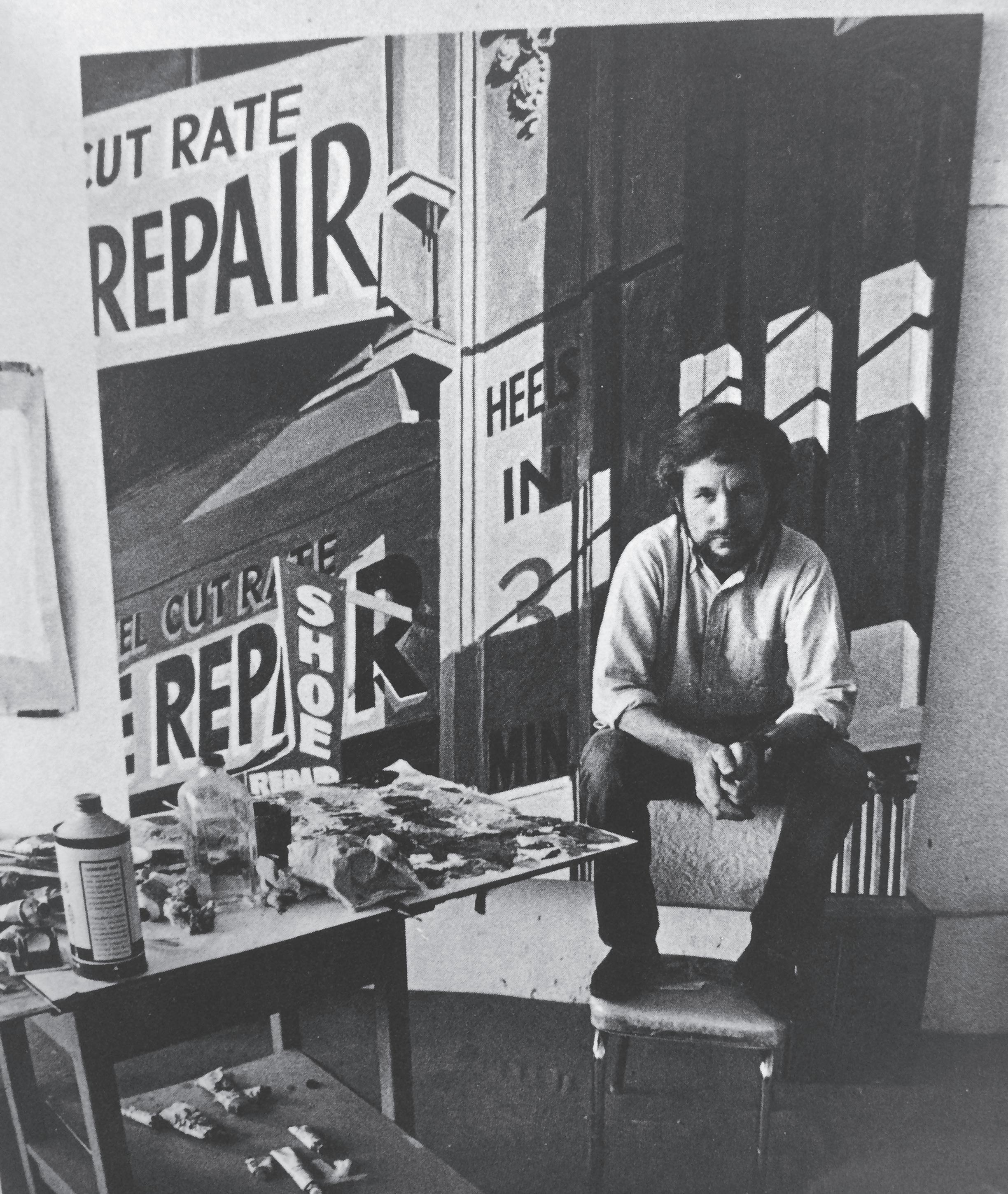
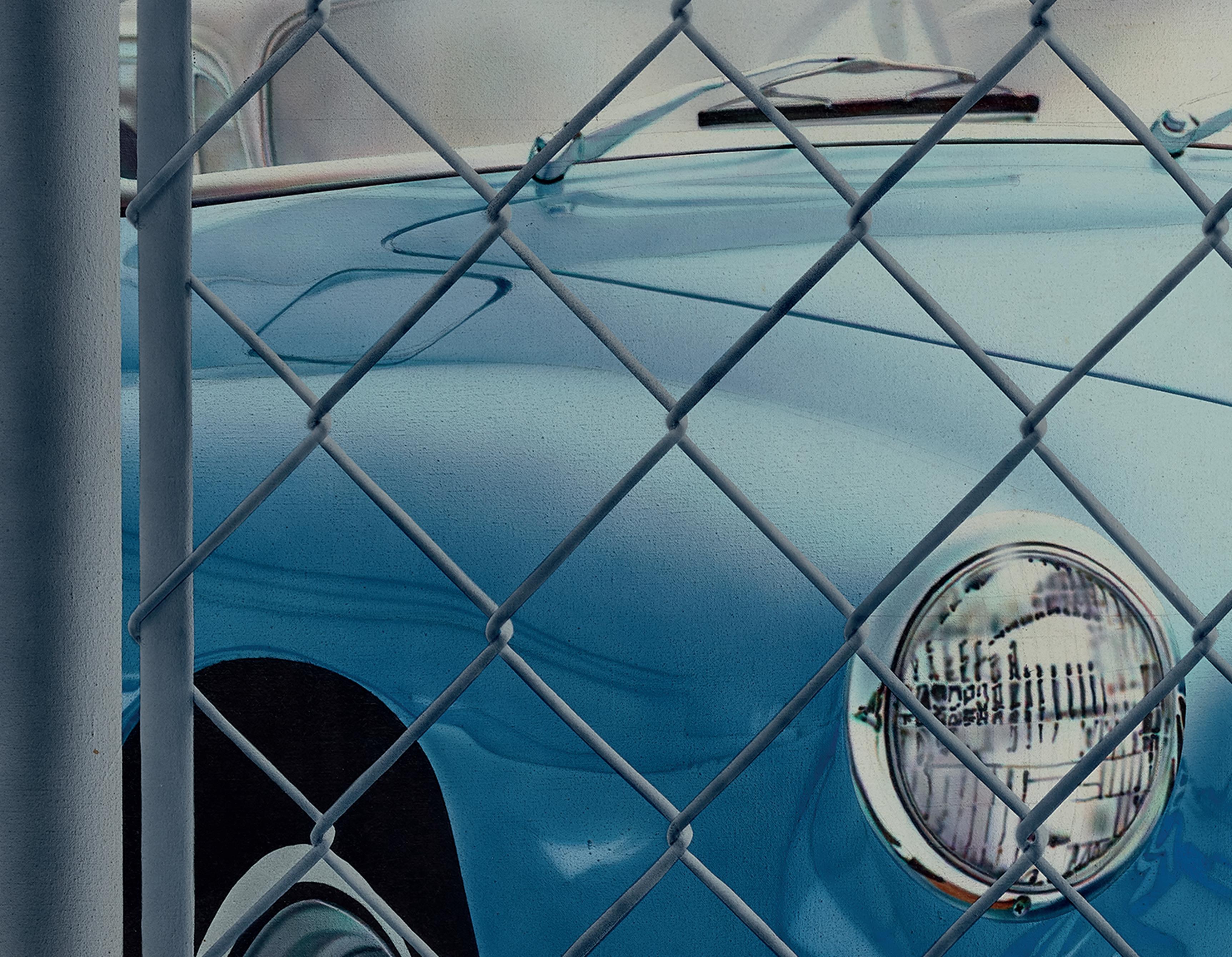
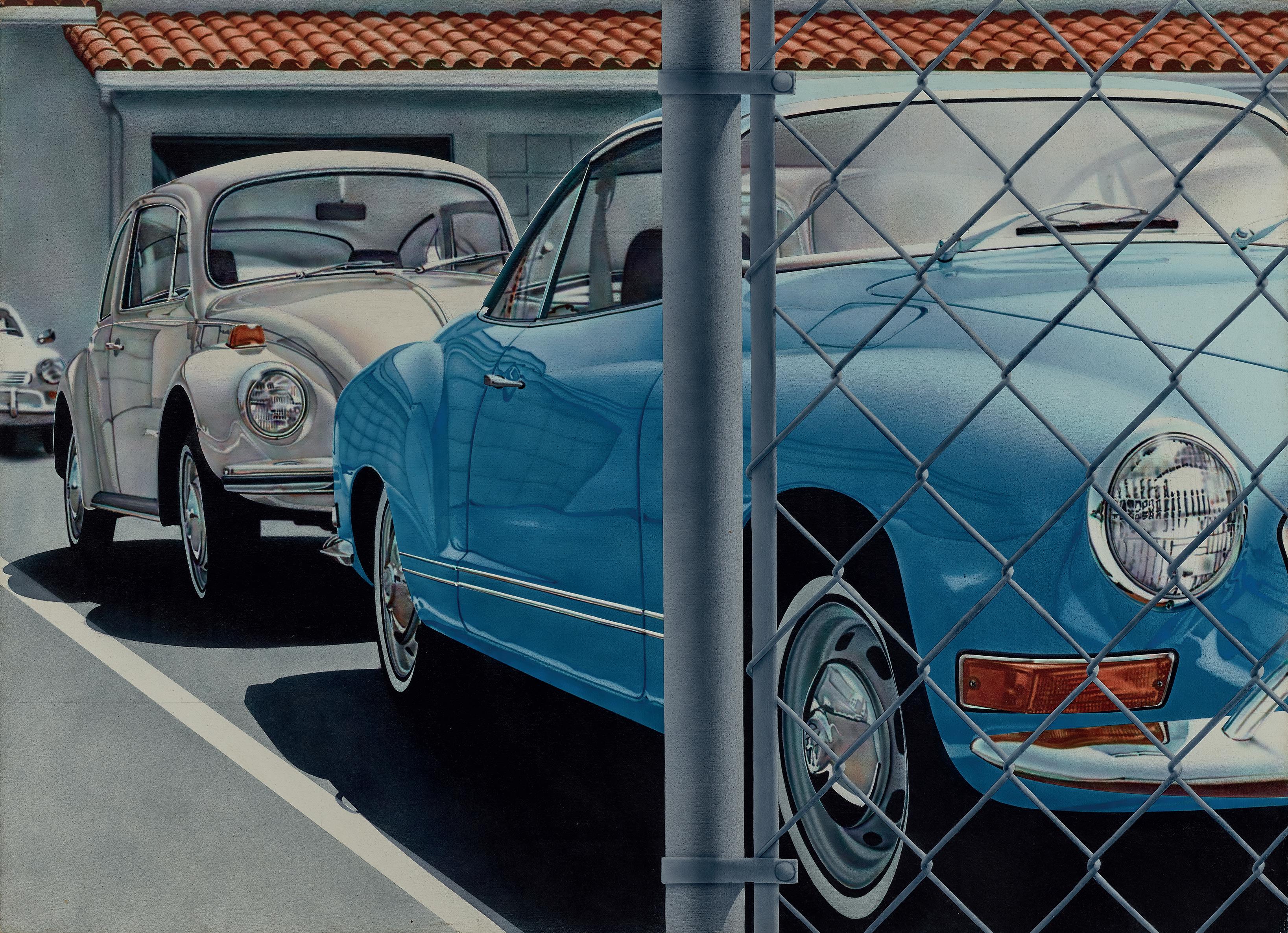
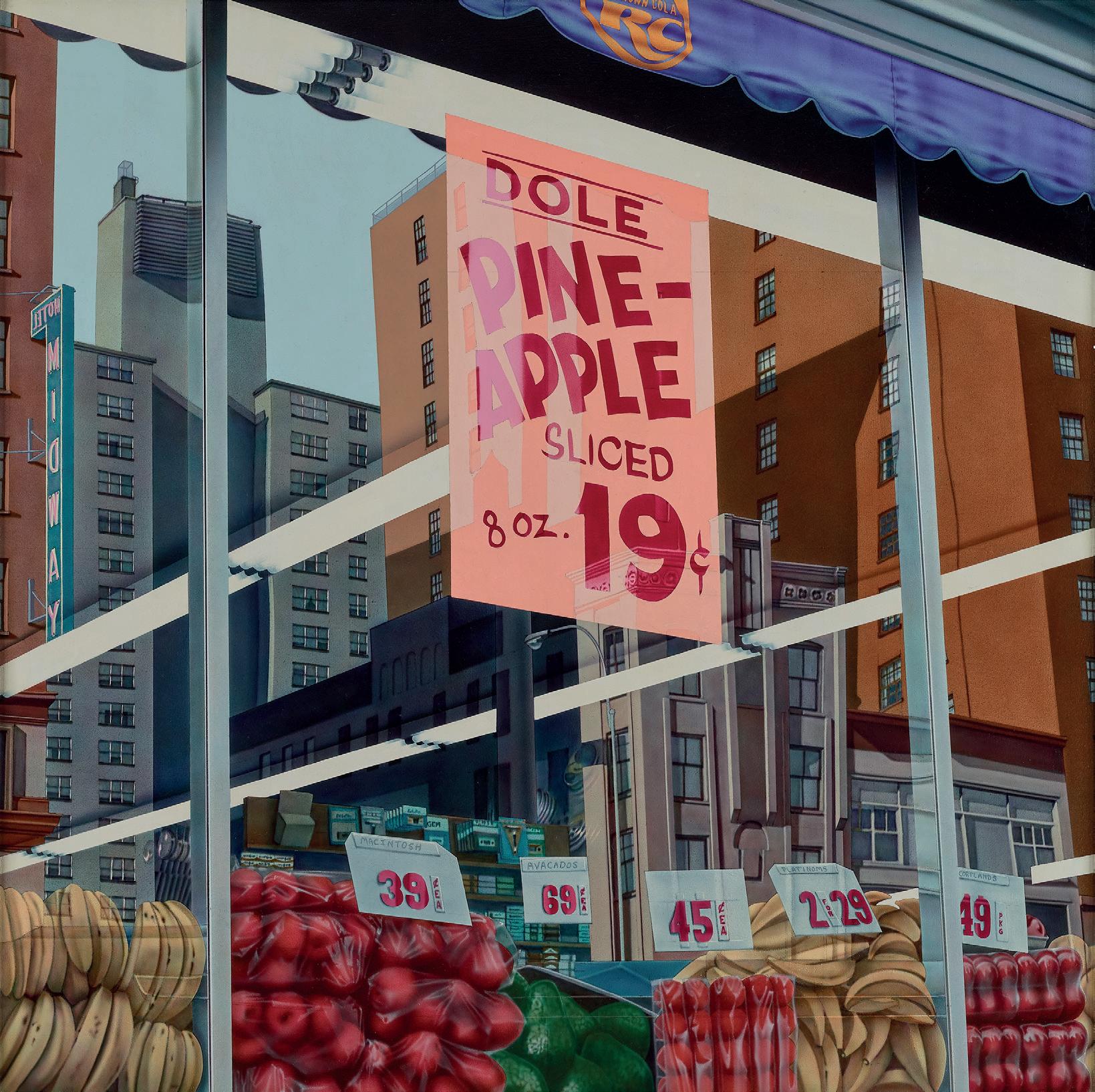
Bananas, Apples, Avocados, Tomatoes; Supermarket Window III 1973 acrylic on canvas, 127 × 127 cm
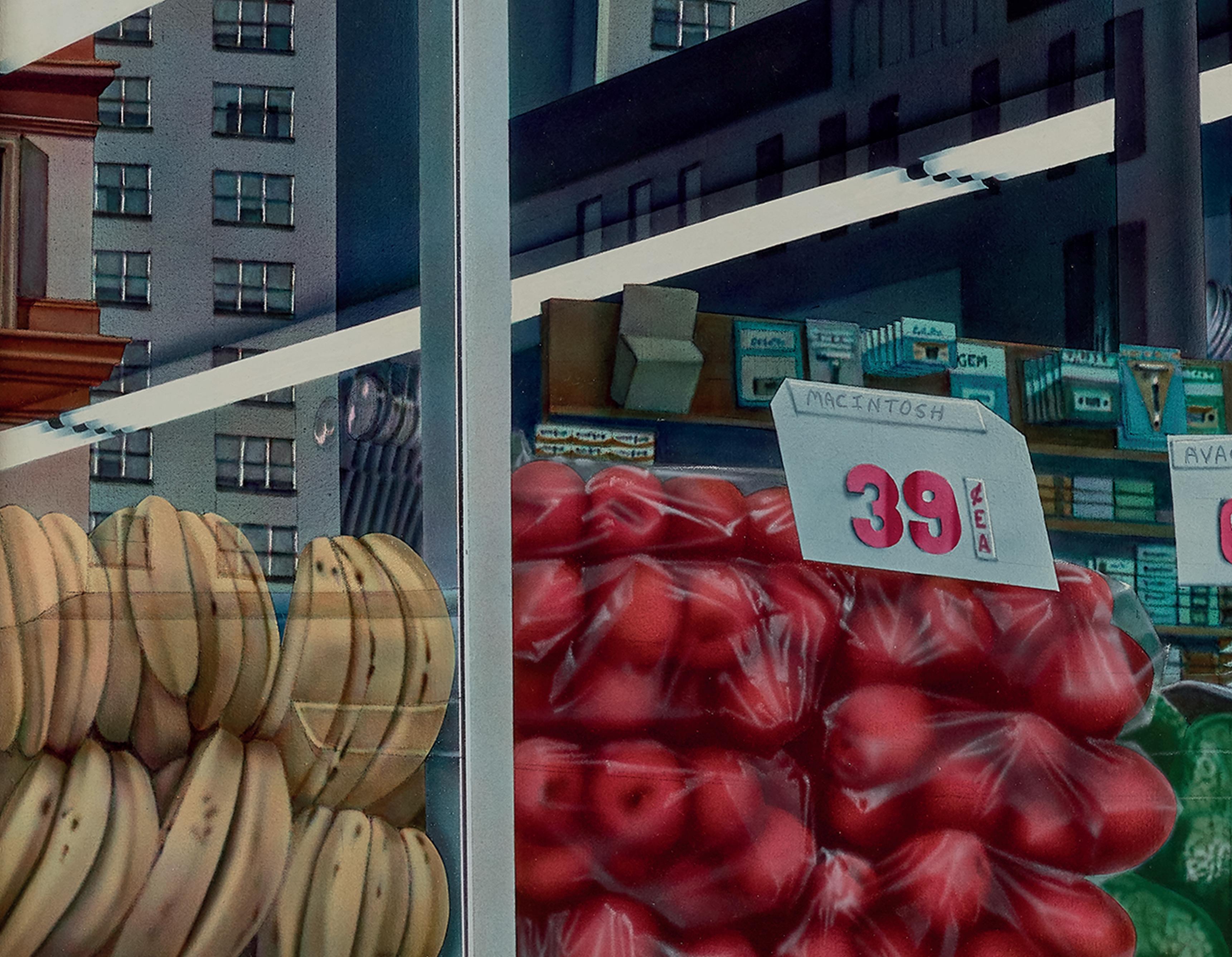

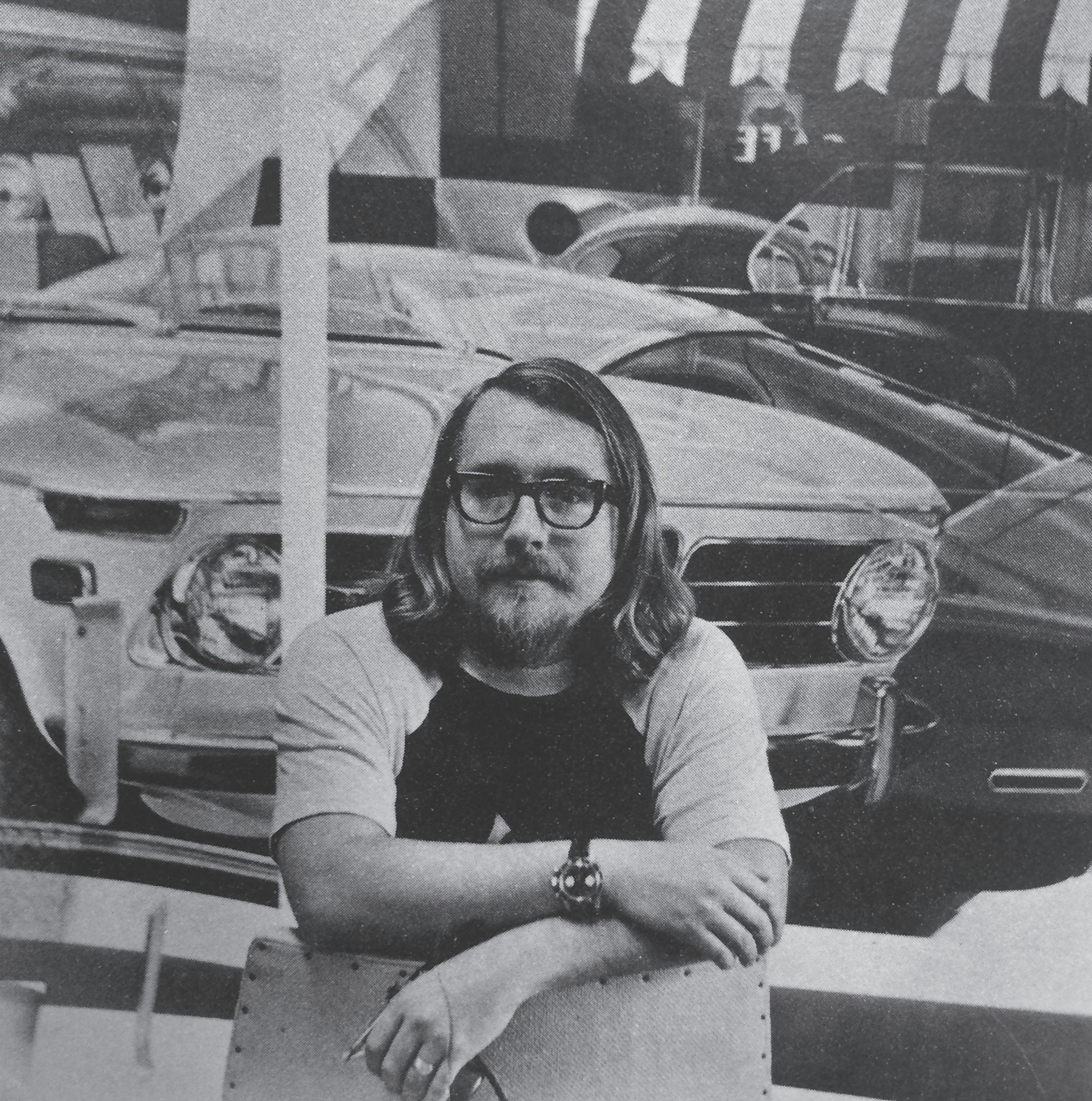
DON EDDY (b. 1944, Long Beach, CA), is known for his paintings of automotive subjects and the reflections in storefront windows. Notably, Eddy worked at his father’s auto body shop as a teenager, an experience that familiarised him with Southern Californian car culture, the airbrush as a painting tool and a working-class concern for craft. He received a BFA and MFA from the University of Hawaii in 1967 and 1969, and completed a PhD in Art History at the University of California, Santa Barbara. During his time as a doctoral student, Eddy continued to paint and, in 1972, gained widespread recognition after being included in Sharp Focus Realism at Sidney Janis Gallery in New York.
Focused on the theme of the automobile throughout the 1970s, the reflective qualities of materials became more central to Eddy’s works at the beginning of the 1980s, when he started to paint subjects such as glass and silverware placed on shiny surfaces. In the 1990s, his style evolved to include multi-panel pieces of assorted images juxtaposed within a single work. Painting using a systematic, detailed process he developed early in his career, Eddy has explained he wishes to “force the viewer to see the act of translation from the object to the photo to the painting”.
Eddy has been included in numerous critical institutional exhibitions, such as: Harald Szeeman’s documenta 5, Questioning Reality – Pictorial Worlds Today, Kassel (1972); Photo-Realism, Serpentine Gallery and The Arts Council, London (1973); California Realist Painters, Santa Barbara Museum of Art, CA (1973); Hyper Realism American, Realism European, Centre National d’Art Contemporain, Paris (1974); Picturing America: Photorealism in the 1970s, Deutsche
Guggenheim, Berlin (2009); Photorealism: 50 Years of Hyperrealistic Painting (2013 – 2017) which started in Kunsthalle Tübingen, Germany before touring to 10 locations including Museo Thyssen-Bornemisza, Madrid; Birmingham Museum & Art Gallery, UK; and Tampa Museum of Art, FL; Hiperrealismo 1967 – 2013, Bilbao Fine Arts Museum, Spain (2015); HyperAmerica: Landscape – Image – Reality, Kunsthaus Graz, Austria (2015); A Feast for the Eyes, Nassau County Museum of Art, NY (2016) and Chrome Dreams and Infinite Reflections: American Photorealism, Reynolda House Museum of American Art, NC (2022).
Don Eddy lives and works in New York.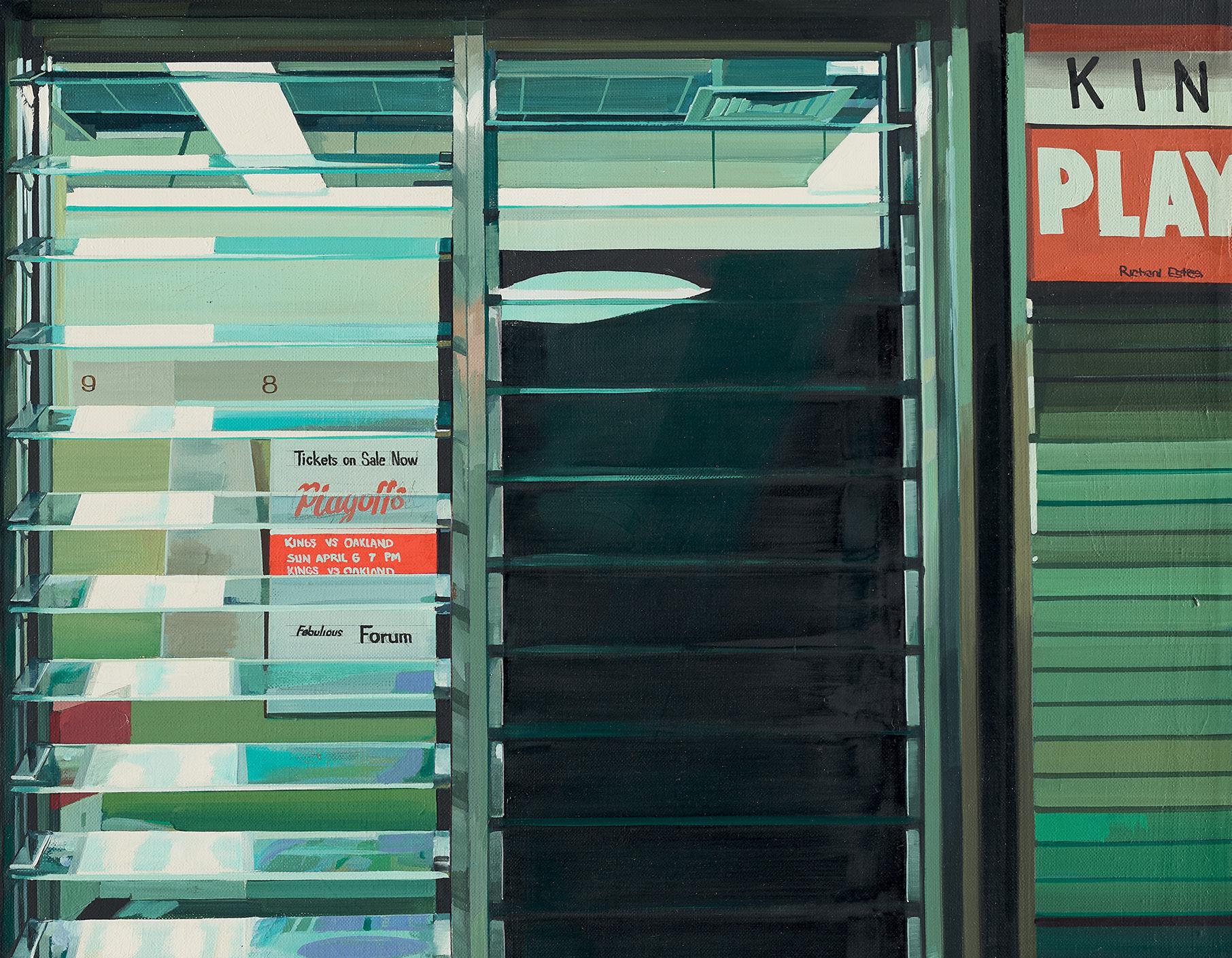

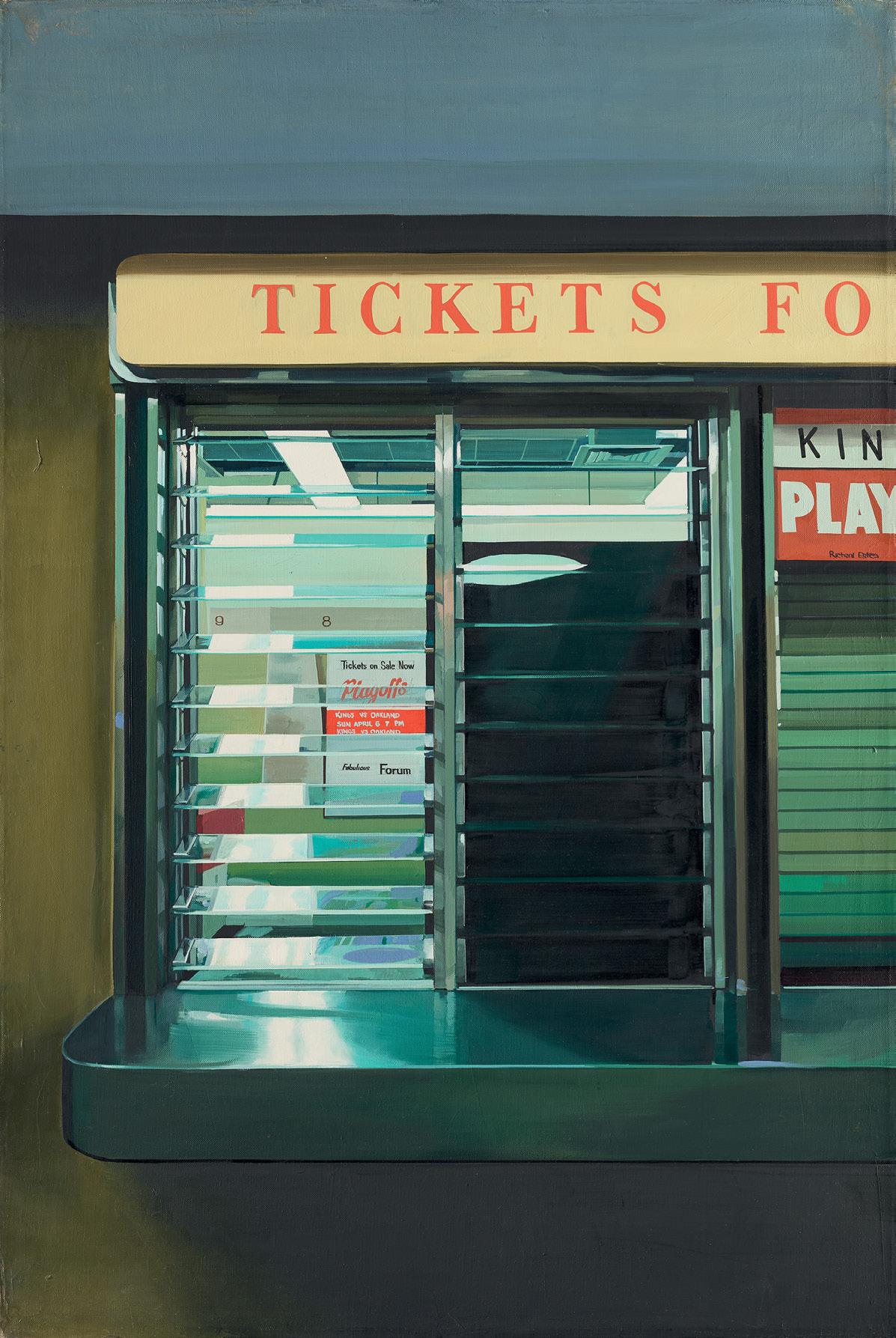
Ticket Window 1969
oil on canvas, 77.2 × 52 cm

 Circus, Circus 1971 oil on paper, mounted on wooden board, 43.2 × 61 cm
Circus, Circus 1971 oil on paper, mounted on wooden board, 43.2 × 61 cm

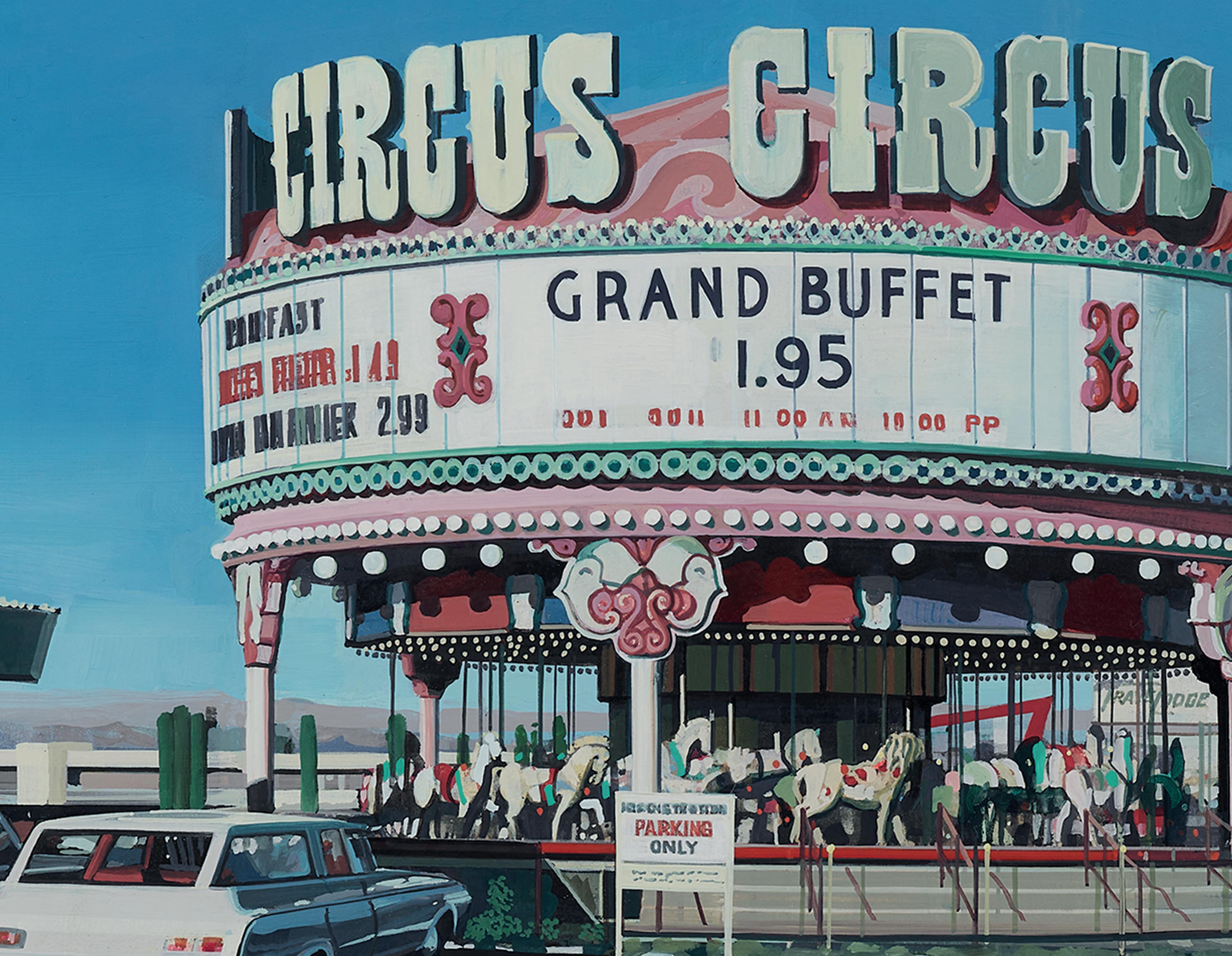
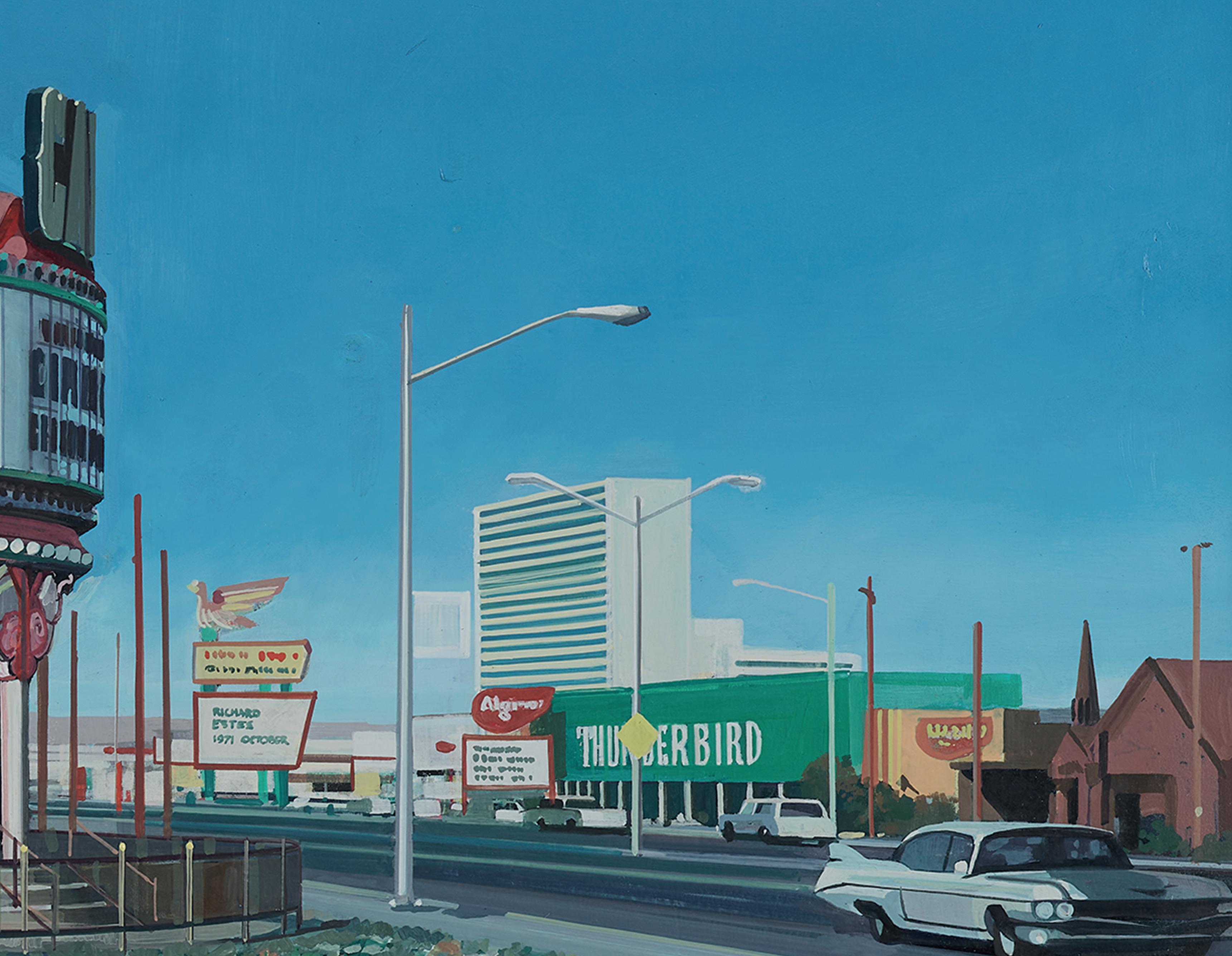
RICHARD ESTES (b. 1932, Kewanee, IL) is considered one of the founding Photorealists and perhaps its most well-known proponent. He is celebrated for his uncanny paintings of urban landscapes – usually of New York, although he has also painted Venice, Florence, Barcelona, Cordova and Hiroshima. Estes received a BFA in 1956 from the Art Institute of Chicago, where he examined the works of realist painters such as Edgar Degas, Edward Hopper and Thomas Eakins. After graduation, he lived and worked intermittently in New York and Spain as a freelance graphic designer for various publishing and advertising agencies, painting in his spare time. Estes moved back to Chicago briefly and, by 1959, had gained enough financial stability to return to New York. Estes began photographing the city, using these images as departure points for his paintings and in 1966 finally left his job in advertising and committed to painting full-time.
Estes’ paintings of cityscapes, which often feature reflective surfaces, are masterfully created by combining several photographs to achieve a sharp focus throughout the canvas. They extend beyond the mere translation of a picture, transforming the light and forms into a painting of exaggerated focus and luminosity. These paintings draw closer attention to previously unseen or overlooked aspects of the urban environment, encouraging viewers to interrogate the relationship between reality and vision.
Estes’ work has been acquired by the Museum of Modern Art in New York, the Art Institute of Chicago and the High Museum of Art in Atlanta, among others. Important institutional exhibitions include Harald Szeemann’s documenta 5, Questioning Reality – Pictorial Worlds Today,
Kassel (1972); Photo-Realism, Serpentine Gallery, London (1973); American Dream, National Museum in Krakow, Poland (2009); Picturing America: Photorealism in the 1970s, Deutsche Guggenheim, Berlin (2009); Photorealism: 50 Years of Hyperrealistic Painting (2013 – 2017) which started in Kunsthalle Tübingen, Germany before touring to 10 locations including Museo Thyssen-Bornemisza, Madrid; Hipperrealismo 1967 – 2013, Bilbao Fine Arts Museum, Spain (2015); HyperAmerica: Landscape – Image – Reality, Kunsthaus Graz, Austria (2015); Richard Estes: Voyages, Newport Street Gallery, London (2021) and Chrome Dreams and Infinite Reflections: American Photorealism, Reynolda House Museum of American Art, NC (2022).
Richard Estes lives and works between New York and Maine.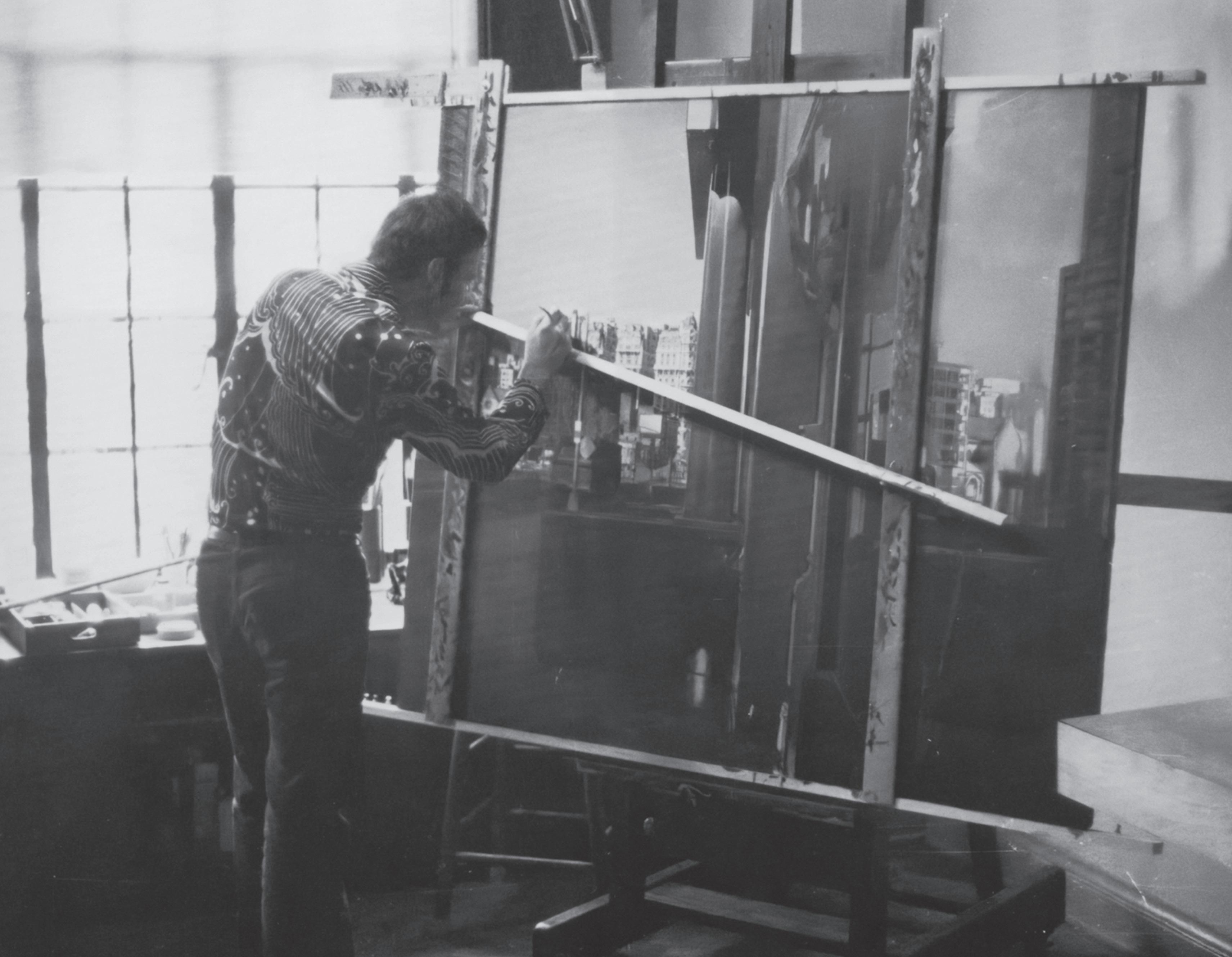
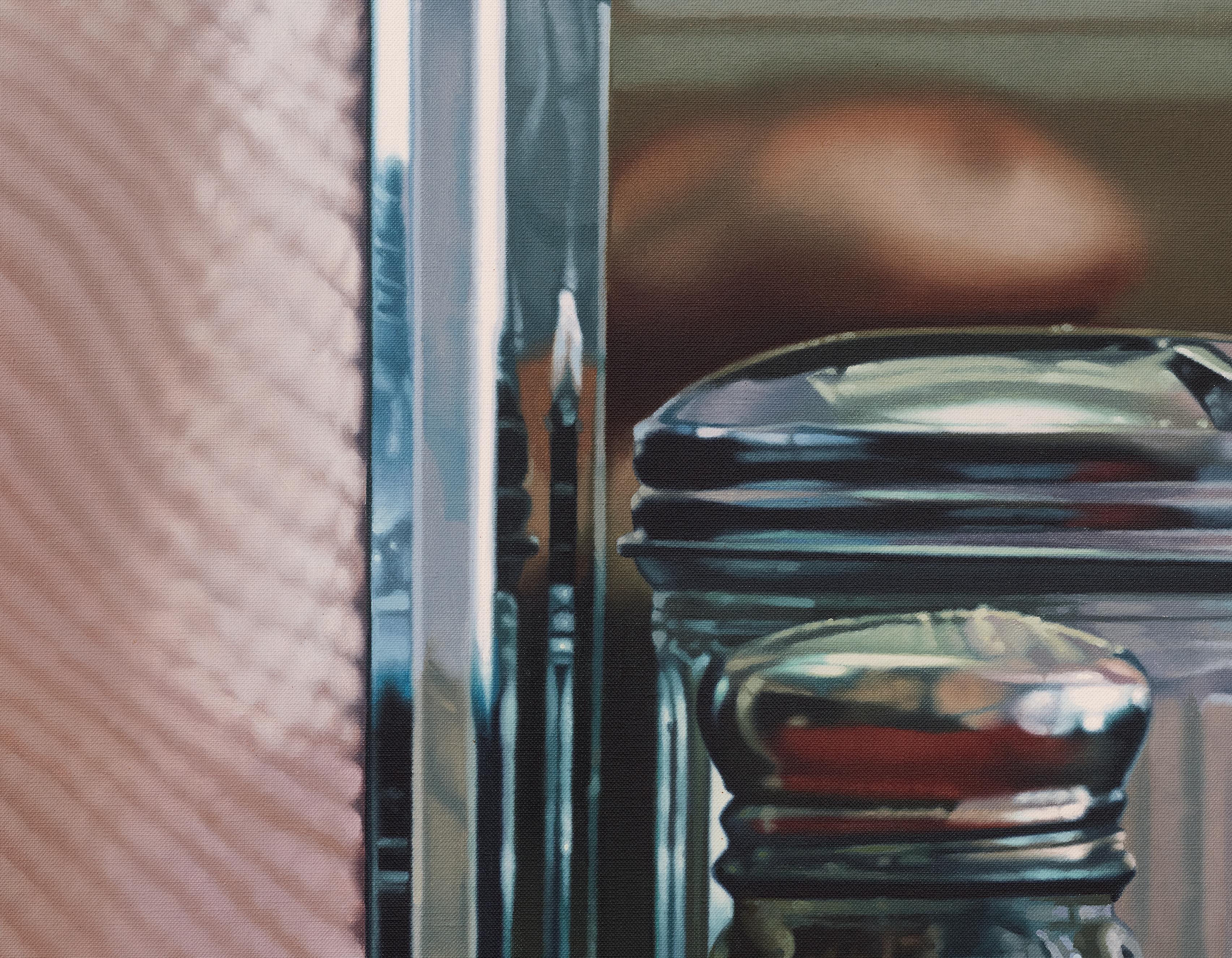
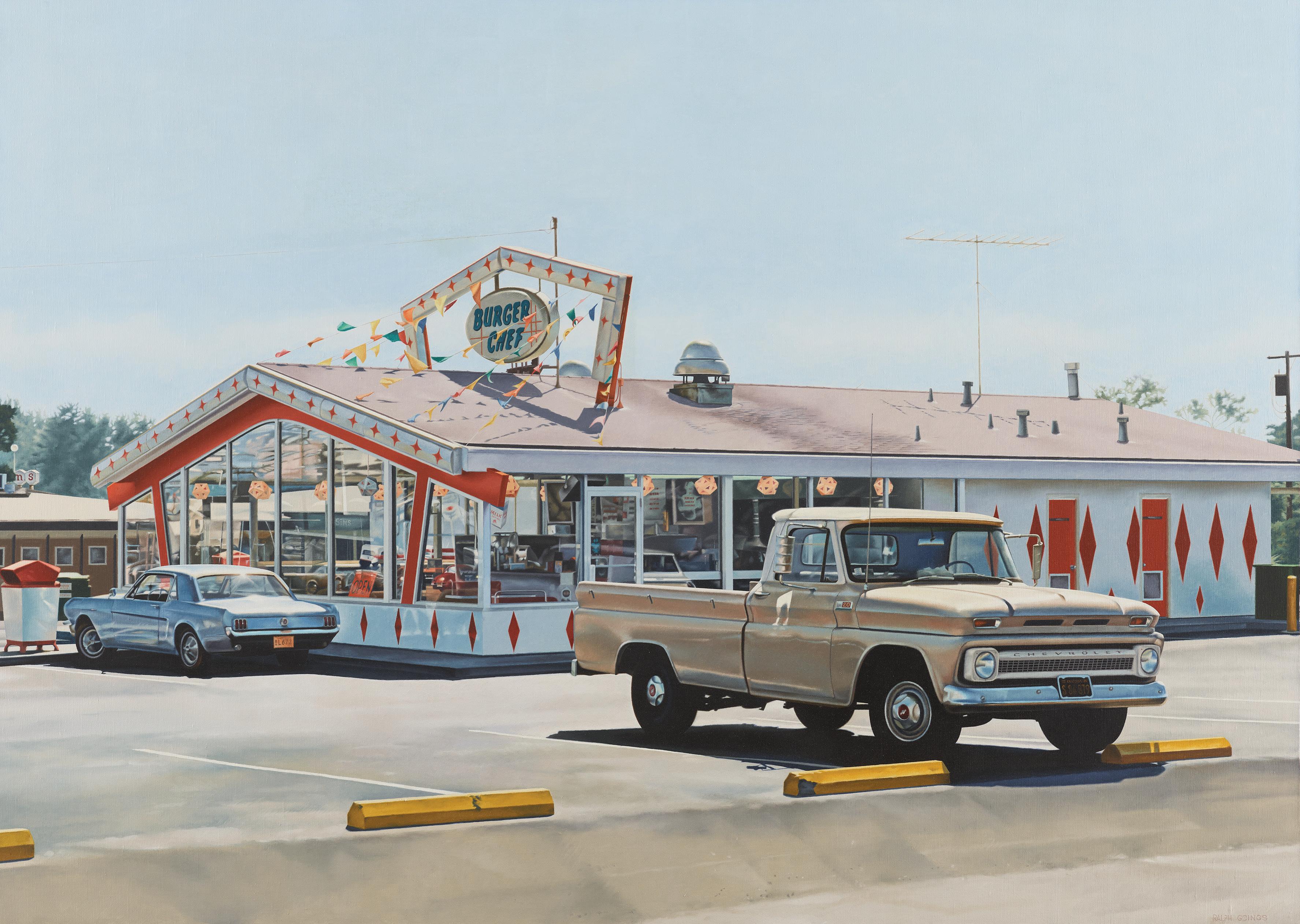 Burger Chef 1970 oil on linen, 101.6 × 142.2 cm
Burger Chef 1970 oil on linen, 101.6 × 142.2 cm
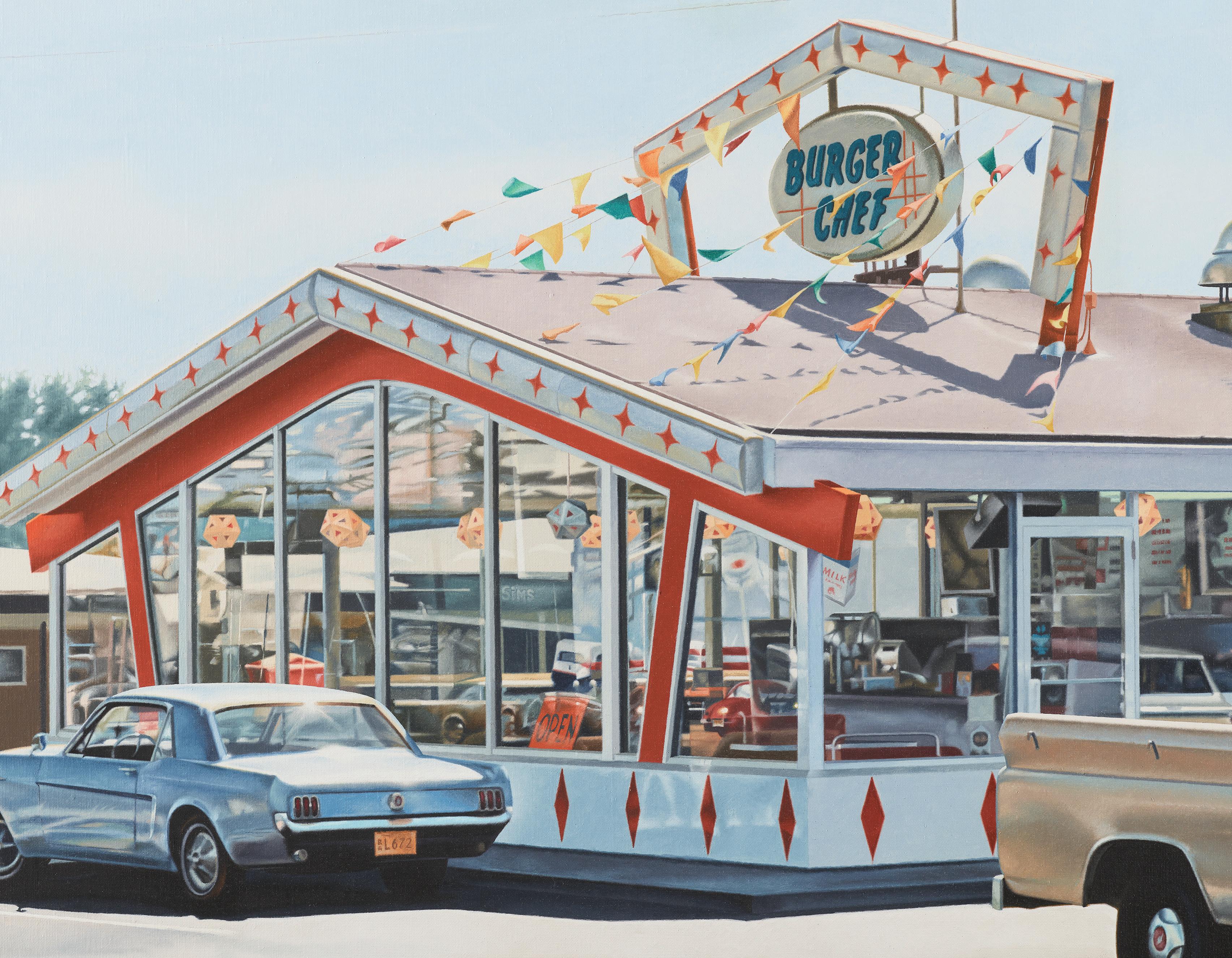 White Ford Overdrive 1970 oil on canvas, 114.3 × 160 cm
White Ford Overdrive 1970 oil on canvas, 114.3 × 160 cm
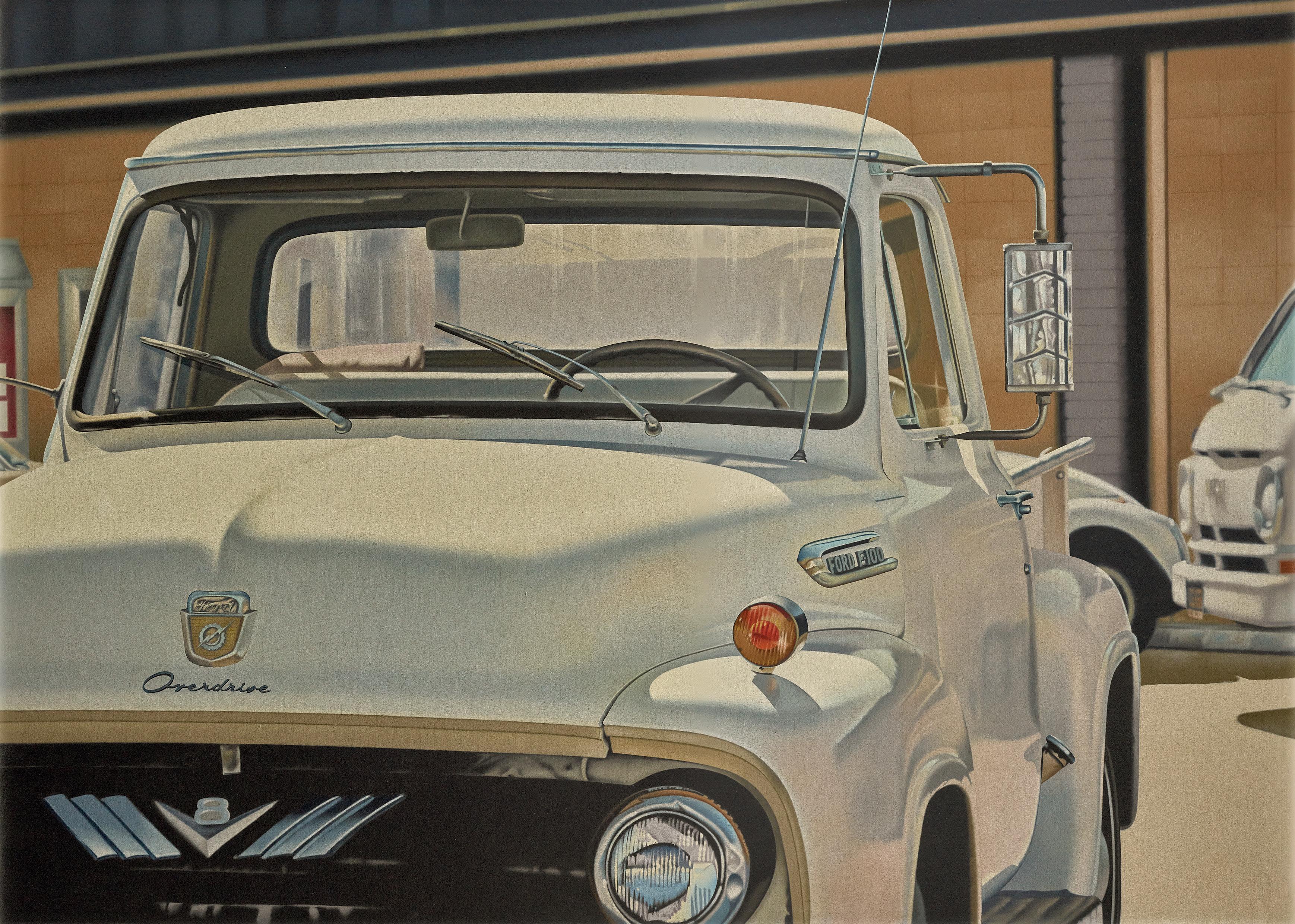
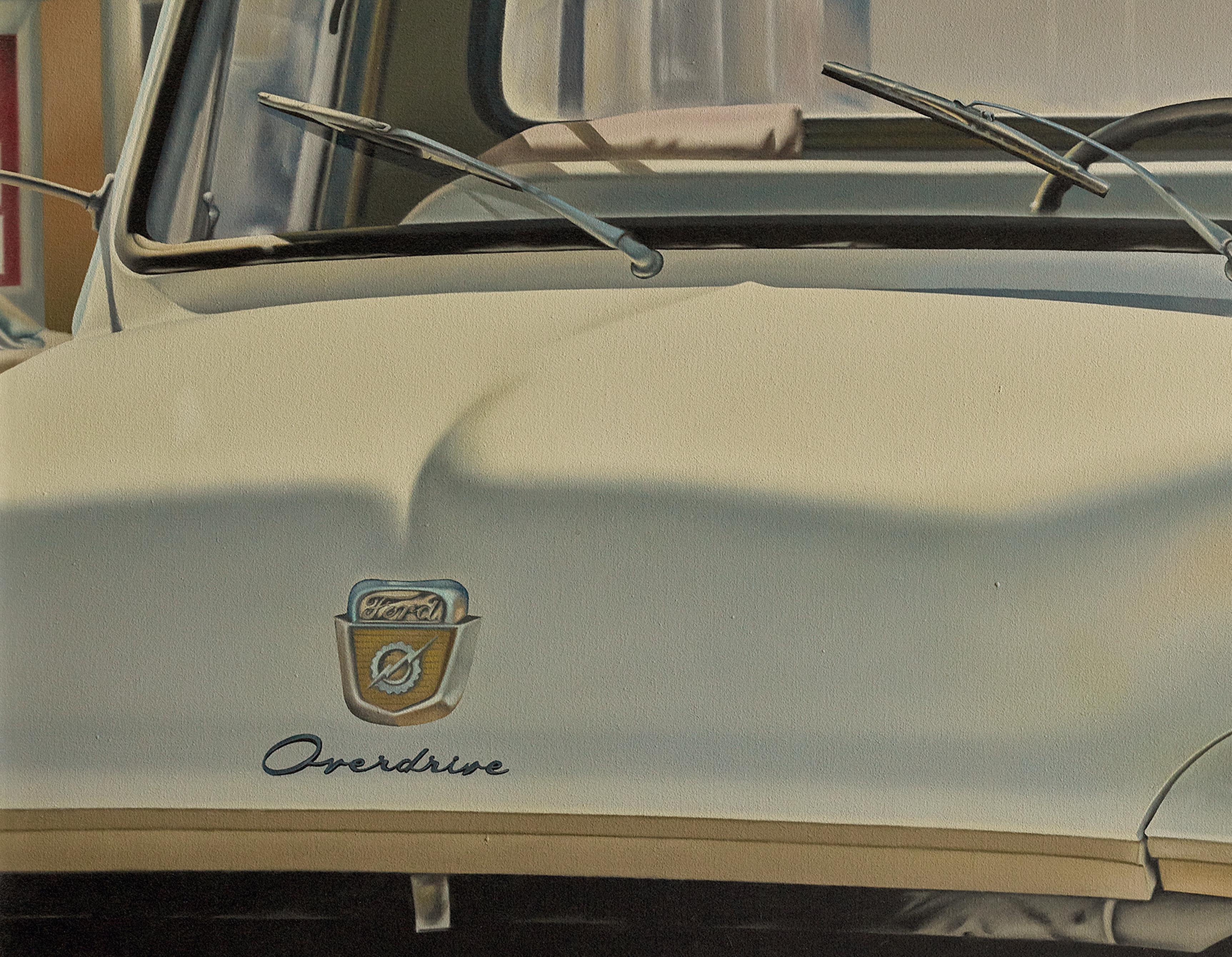
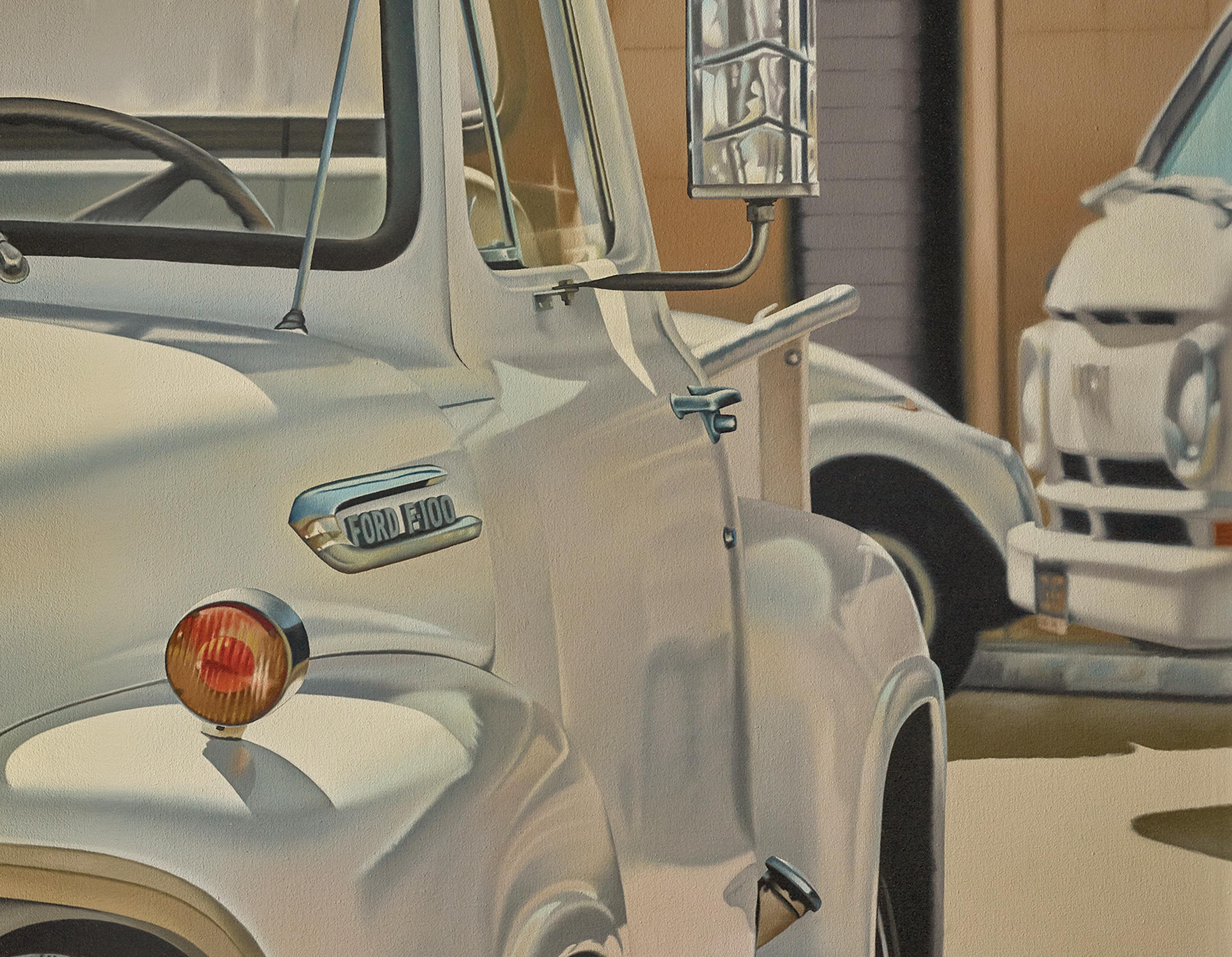
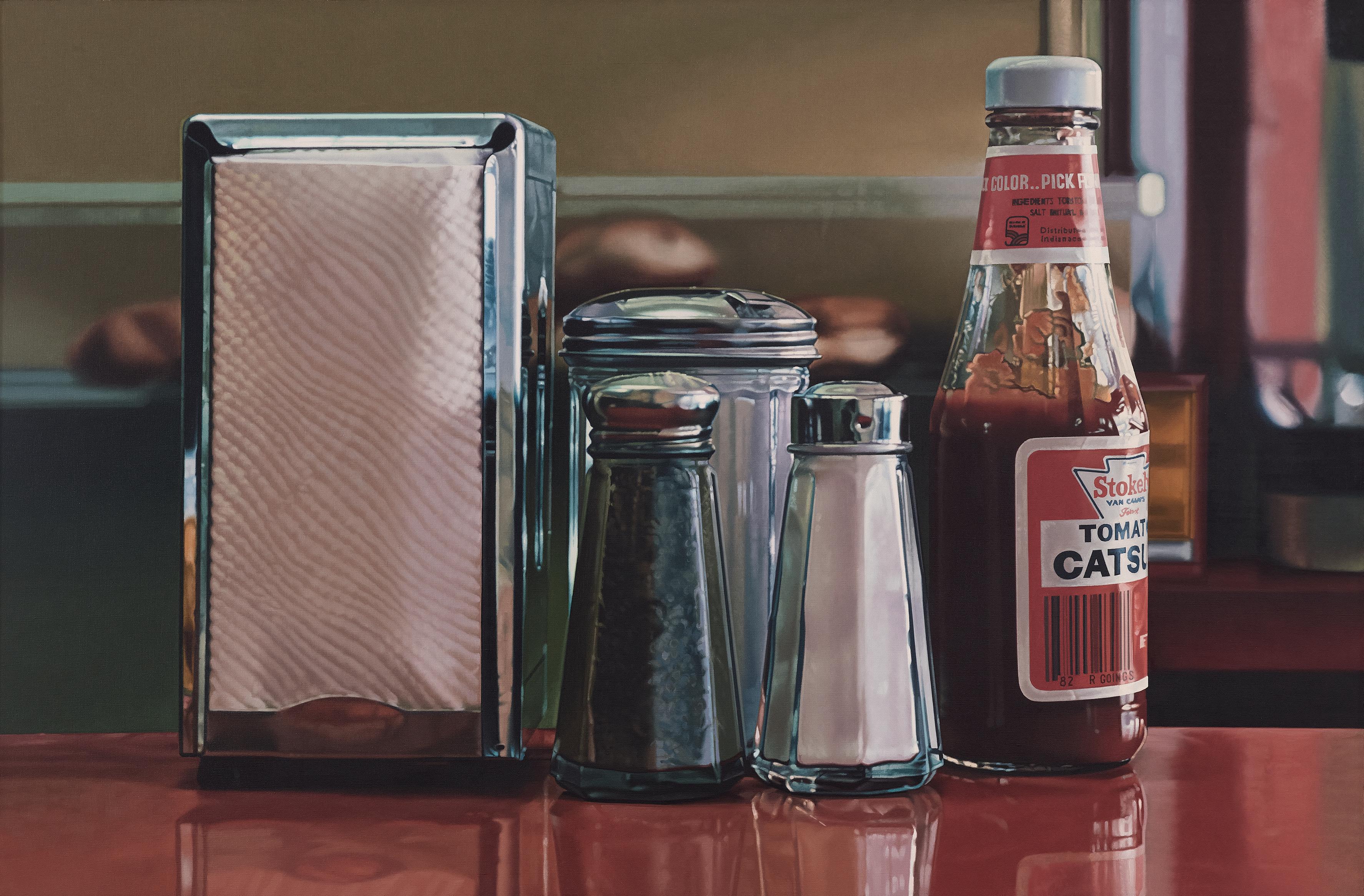
Still Life (Color Pick) 1982
oil on canvas, 101.6 × 152.4 cm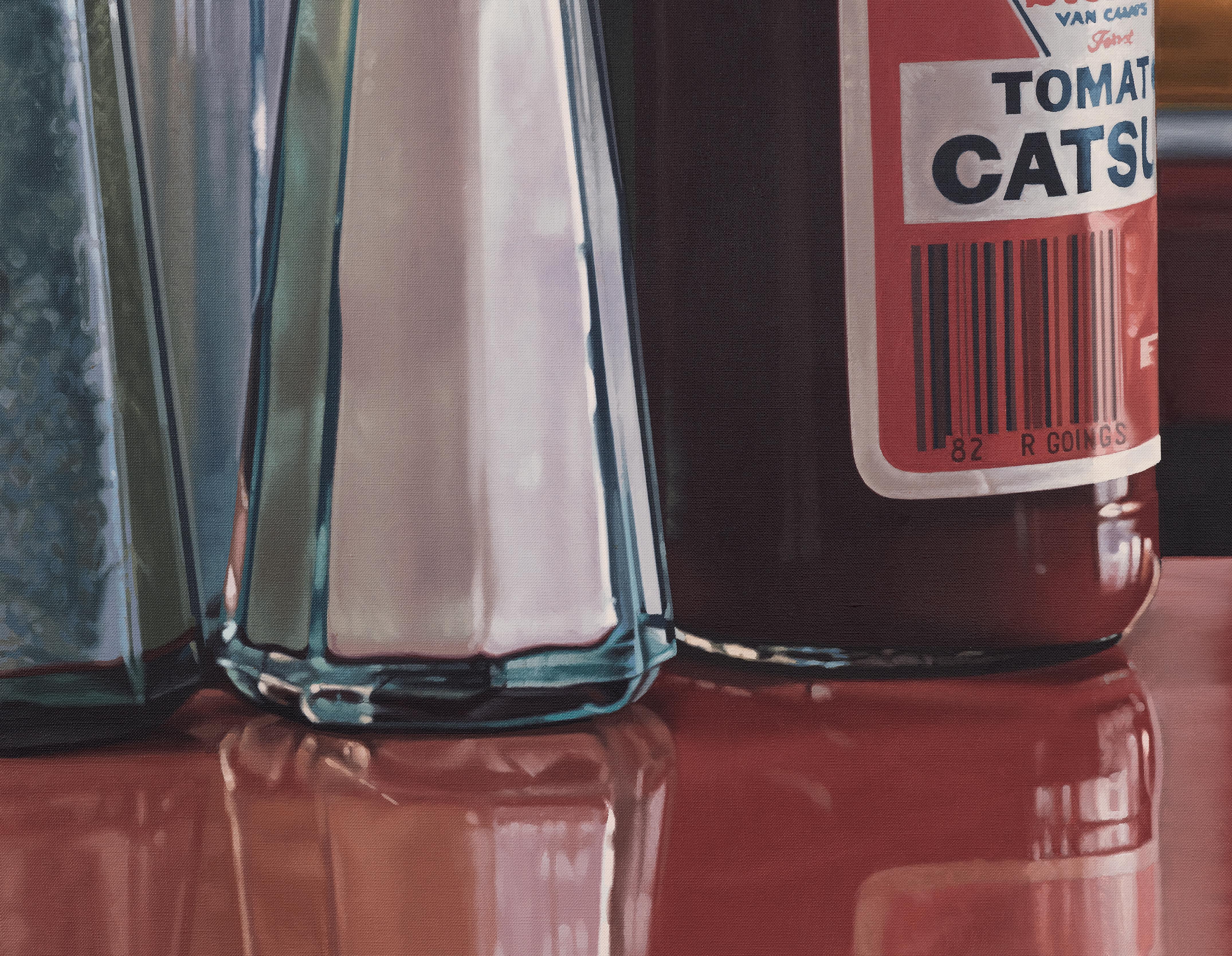 Richmond Diner 1983 oil on canvas, 101.6 × 147.3 cm
Richmond Diner 1983 oil on canvas, 101.6 × 147.3 cm
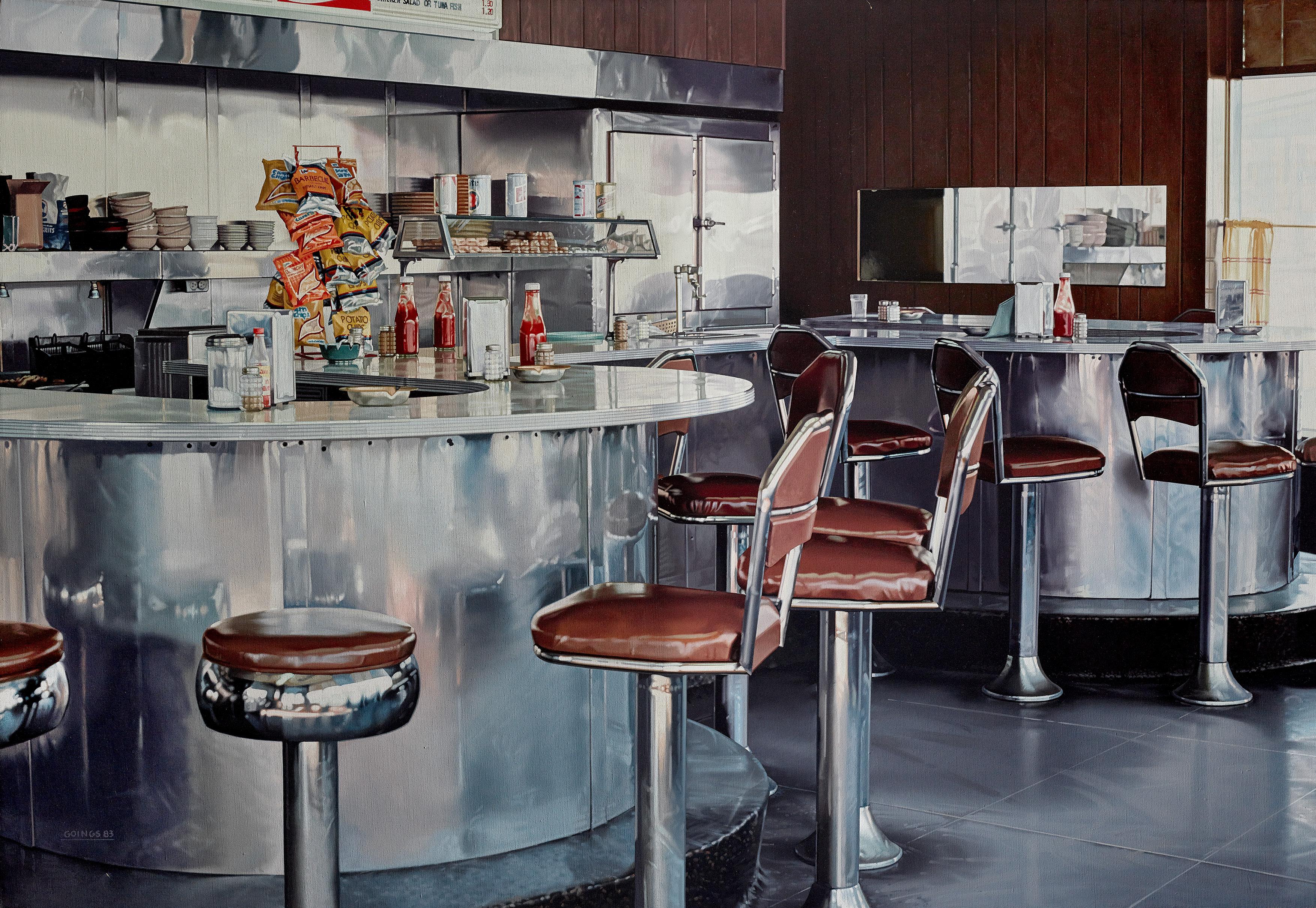

RALPH GOINGS (b. 1928, Corning, CA; d. 2016, Sacramento, CA) was an original member of the West Coast Photorealists during the late 1960s, celebrated for his light-filled but matter-of-fact portrayal of archetypal mid-20th century America – laundromats, gas stations, supermarkets, hamburger stands, fast-food eateries and vintage automobiles. Born to a working-class family, Goings had early ambitions to pursue a creative career, studying at the California College of Arts & Crafts in Oakland in the early 1950s and, in 1965, an MFA in painting at Sacramento State College. His first solo exhibition took place at OK Harris in 1970. Following its success, Goings moved to New York in 1974 to pursue his artistic ambitions full-time.
This move focused Goings’ energies on depicting the interiors of quintessential American diners, including still life paintings of their condiments. These intimate views of seating booths, gleaming stainless steel counters and glass ketchup bottles contrast with his earlier depictions of bright, exterior Californian space. While portrayed in an objective manner that enhances his subject’s mundanity, Goings’ use of intense light – he photographed his subjects on exceptionally bright mornings – gives them an elegant glamour. Working from multiple 35 mm colour slides of the subject, Goings made detailed pencil drawings of his preferred image, enlarging it with a projector onto canvas, a process he described as using “the impersonal, mechanical image of the photograph to paint”.
including Harald Szeemann’s documenta 5: Questioning Reality – Pictorial Worlds Today, Kassel (1972) and PhotoRealism, at the Serpentine Gallery, London (1973). Recent institutional group exhibitions include American Dream, National Museum in Krakow, Poland (2009); Picturing America: Photorealism in the 1970s, Deutsche Guggenheim, Berlin (2009); Photorealism: 50 Years of Hyperrealistic Painting (2013 – 2017); Hipperrealismo 1967 – 2013, Bilbao Fine Arts Museum, Spain (2015); HyperAmerica: Landscape – Image –Reality, Kunsthaus Graz, Austria (2015); A Feast for the Eyes, Nassau County Museum of Art, New York (2016); From Lens to Eye to Hand: Photorealism 1969 to Today, Parrish Art Museum, New York (2017 – 2018); and Chrome Dreams and Infinite Reflections: American Photorealism, Reynolda House Museum of American Art, NC (2022).
Paintings by Goings are held in important institutional collections including Guggenheim and MoMA in New York. His paintings featured in seminal early presentations,

Lightning Strikes Twice, Twice 1971
acrylic on canvas, 177.8 × 177.8 cm
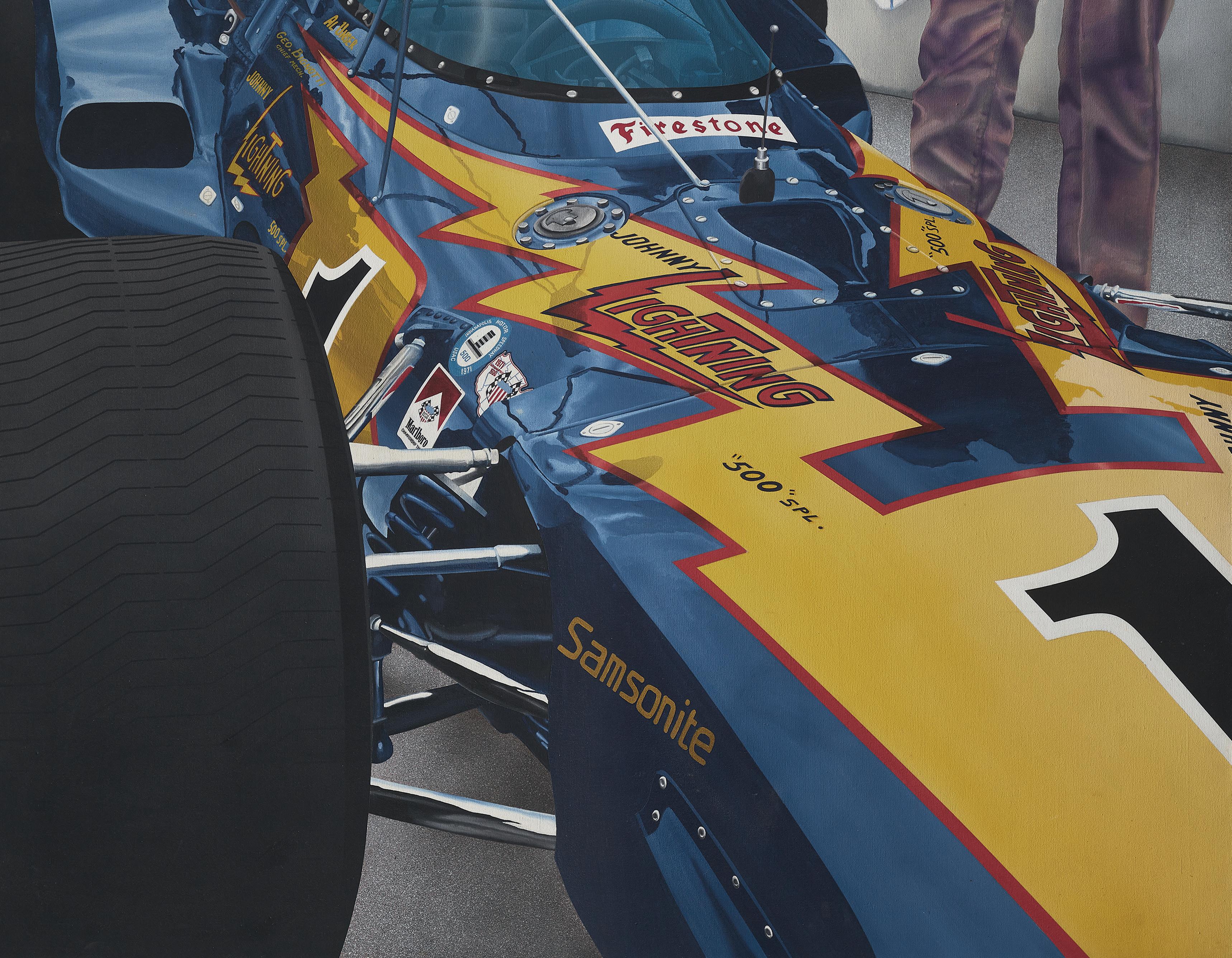
Harry Loves Maxine The American Way 1973
acrylic on canvas, 153 × 153 cm
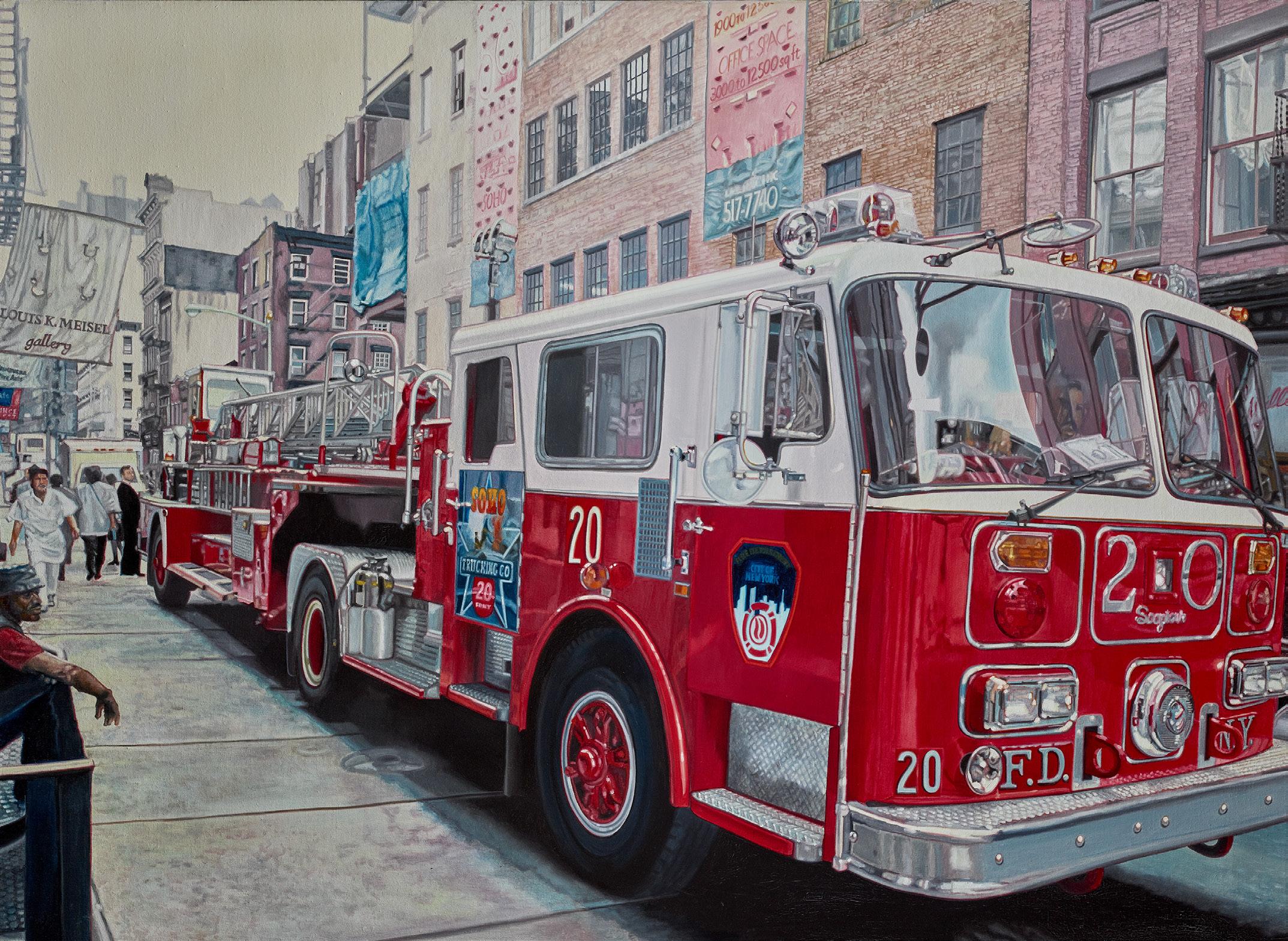 20/20 1990
oil on canvas, 111.8 × 152.4 cm
20/20 1990
oil on canvas, 111.8 × 152.4 cm
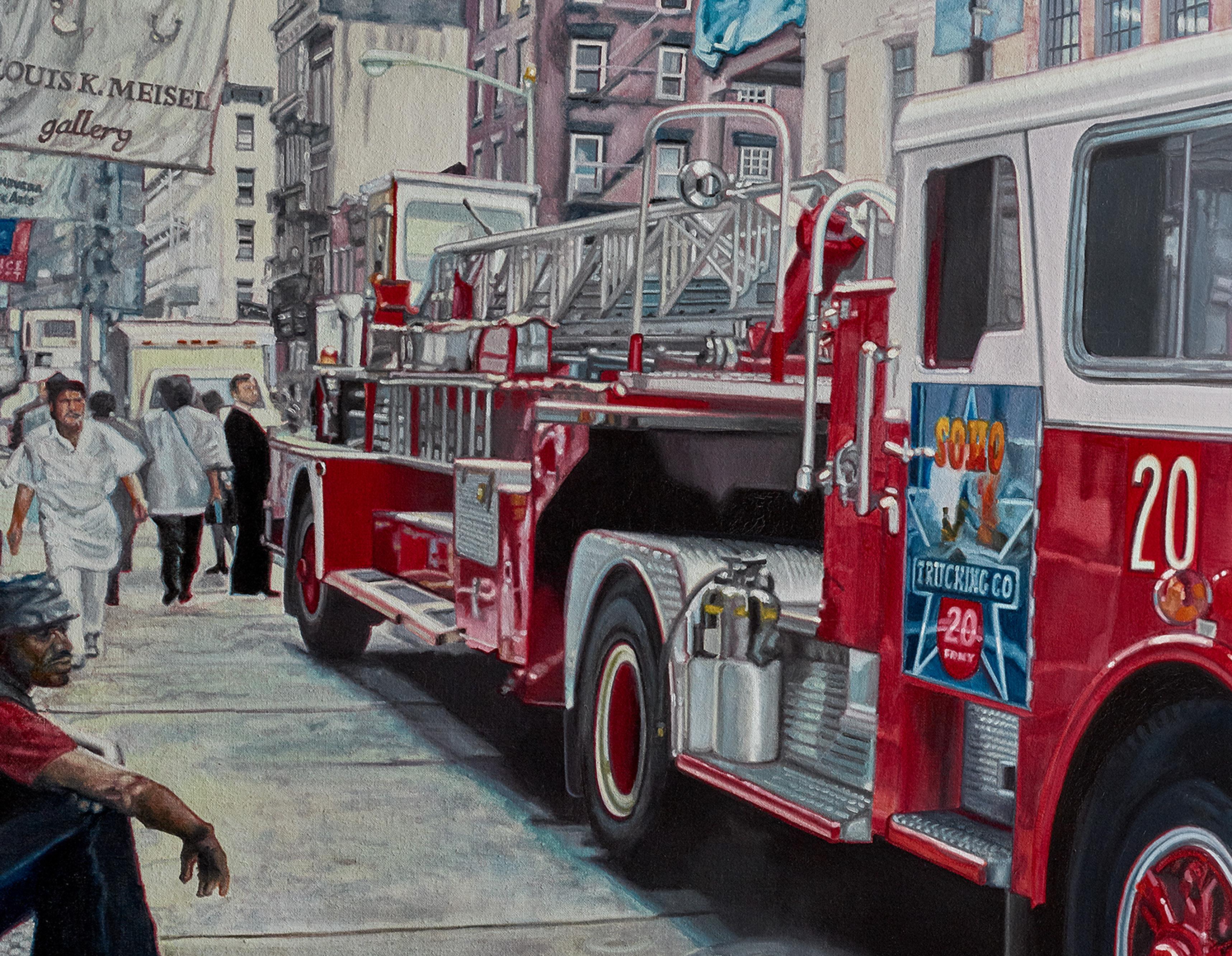
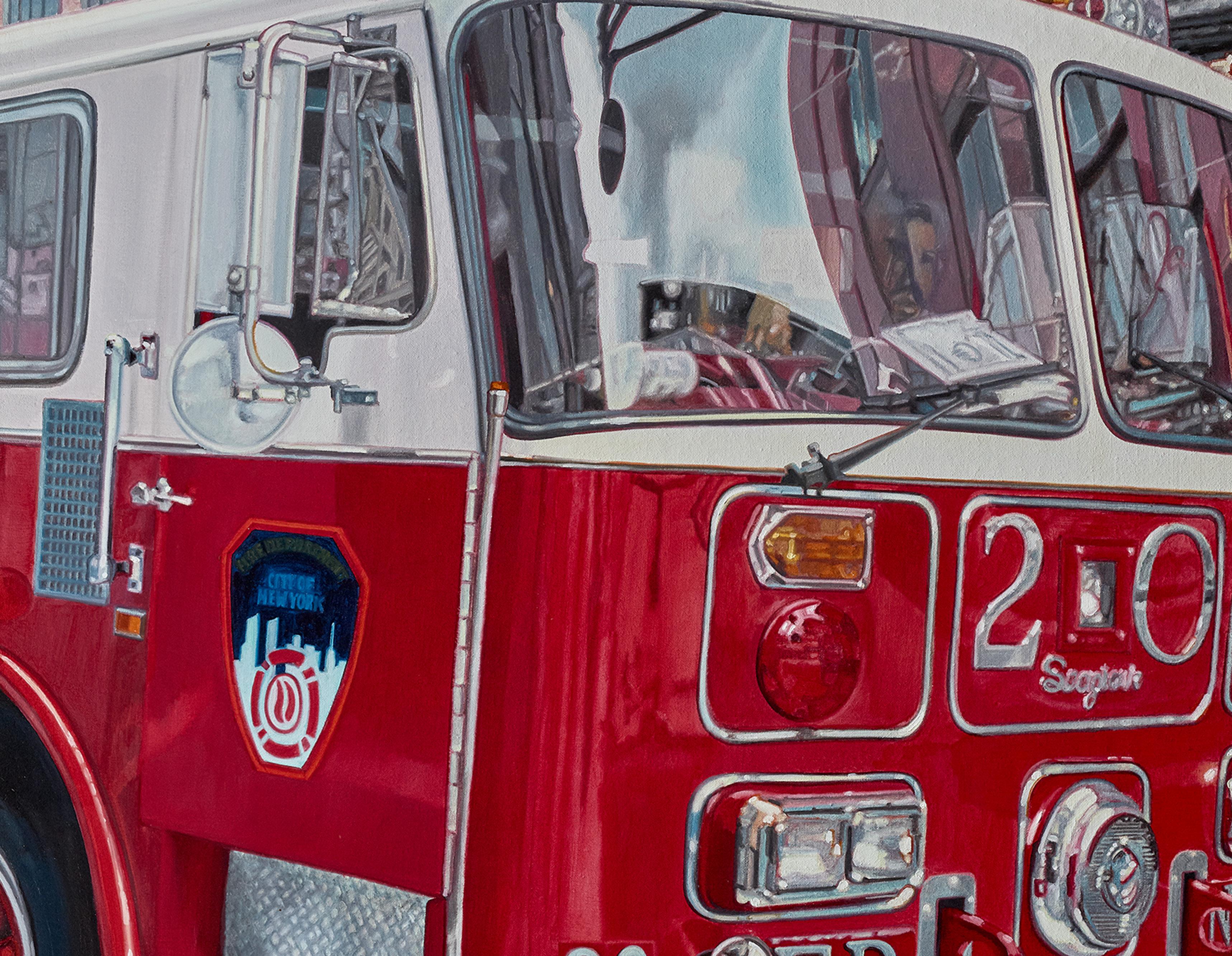
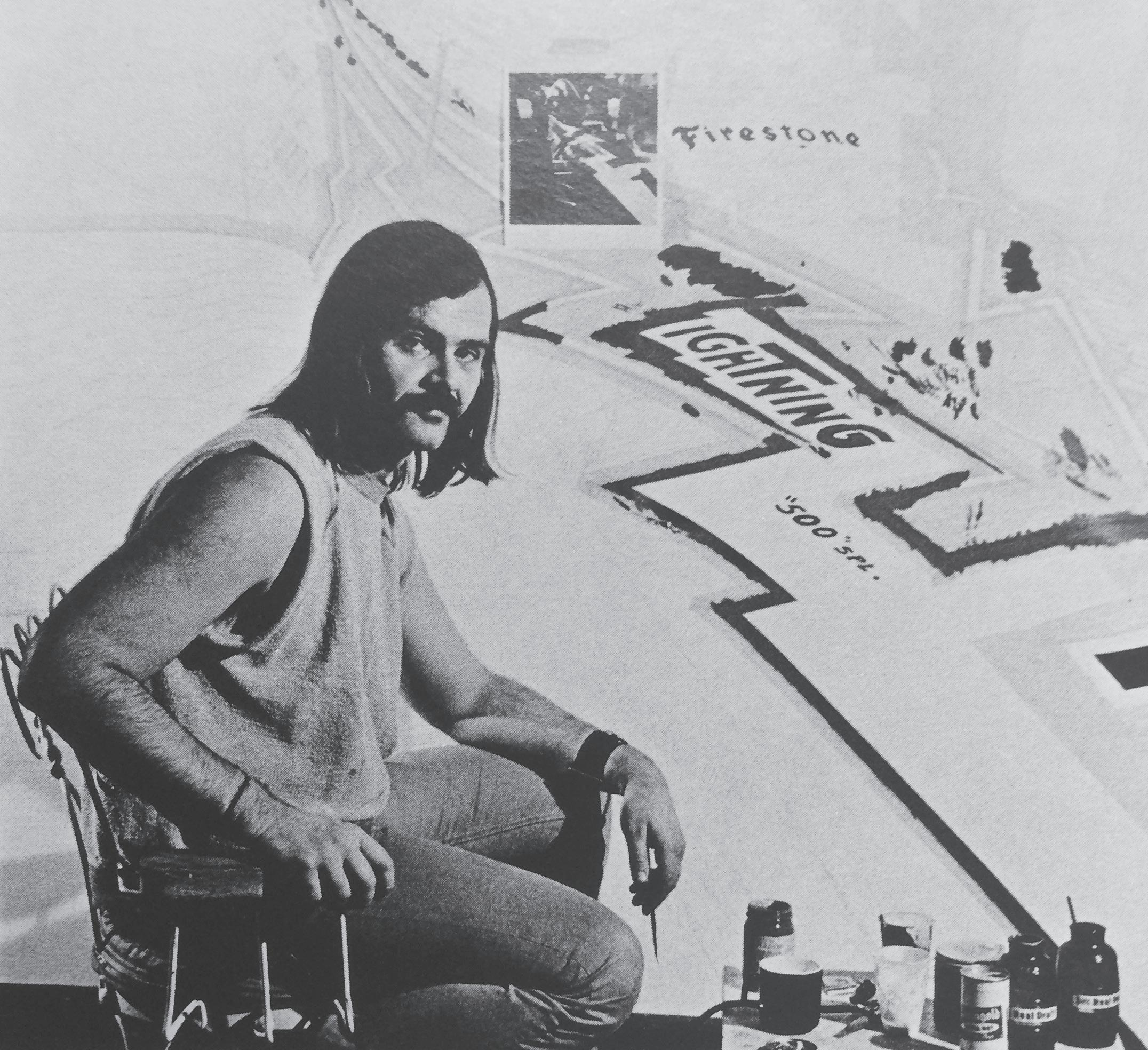
RON KLEEMANN (b. 1937, Bay City, MI; d. 2014, Great Barrington, MA) is known for his paintings of shiny, brightly coloured race cars, trucks, aeroplanes and vehicles he viewed as American icons, such as police cars and fire engines. In 1961, Kleemann earned a BA in Architecture and Design from the University of Michigan and, moving straight to New York, began his career as an abstract sculptor before turning to painting in the late 1960s. Kleemann’s subsequent images conveyed a Pop Art sensibility, and he increasingly focused his work on what he deemed ‘corporate graffiti’, depicting the branding marks and logos on automobiles. In 1968, Kleemann began to use photographs as aides and, in the early 1970s, started to focus on extreme close-ups of race car engines. After being shown at the Louis K. Meisel Gallery in the early 1970s, he became well-known as a Photorealist artist.
Kleemann cited his Midwestern upbringing as the source of his love of automobiles. Beginning with Grand Prix cars, he later painted Indy 500 and NASCAR race cars. “I simply paint what I see and what appeals to me”, he explained, “I like the display of things: signs, labels, colours, and compositions are all very important to me”. In the 1990s, Kleemann produced a series of works about the annual Macy’s Thanksgiving Day Parade in New York, another icon of American culture, which retained the same sharply realistic aesthetic.
Kleemann’s work has been exhibited extensively throughout the United States and is included in many notable public collections, including Guggenheim and MoMA in New York. Important recent institutional exhibitions include Picturing America: Photorealism in the 1970s, Deutsche Guggenheim, Berlin (2009); Photorealism: 50 Years of Hyperrealistic Painting
(2013 – 2017) which opened in Kunsthalle Tübingen, Germany, before moving to 10 locations, including Museo ThyssenBornemisza, Madrid; Birmingham Museum & Art Gallery, UK; and Tampa Museum of Art, FL; Hipperrealismo 1967 – 2013, Bilbao Fine Arts Museum, Spain (2015); and Chrome Dreams and Infinite Reflections: American Photorealism, Reynolda House Museum of American Art, NC (2022).
A complete overview of Ron Kleemann’s life and work is available online in the Smithsonian Institute’s Archives of American Art, which includes an extensive interview and his personal and work-related papers.
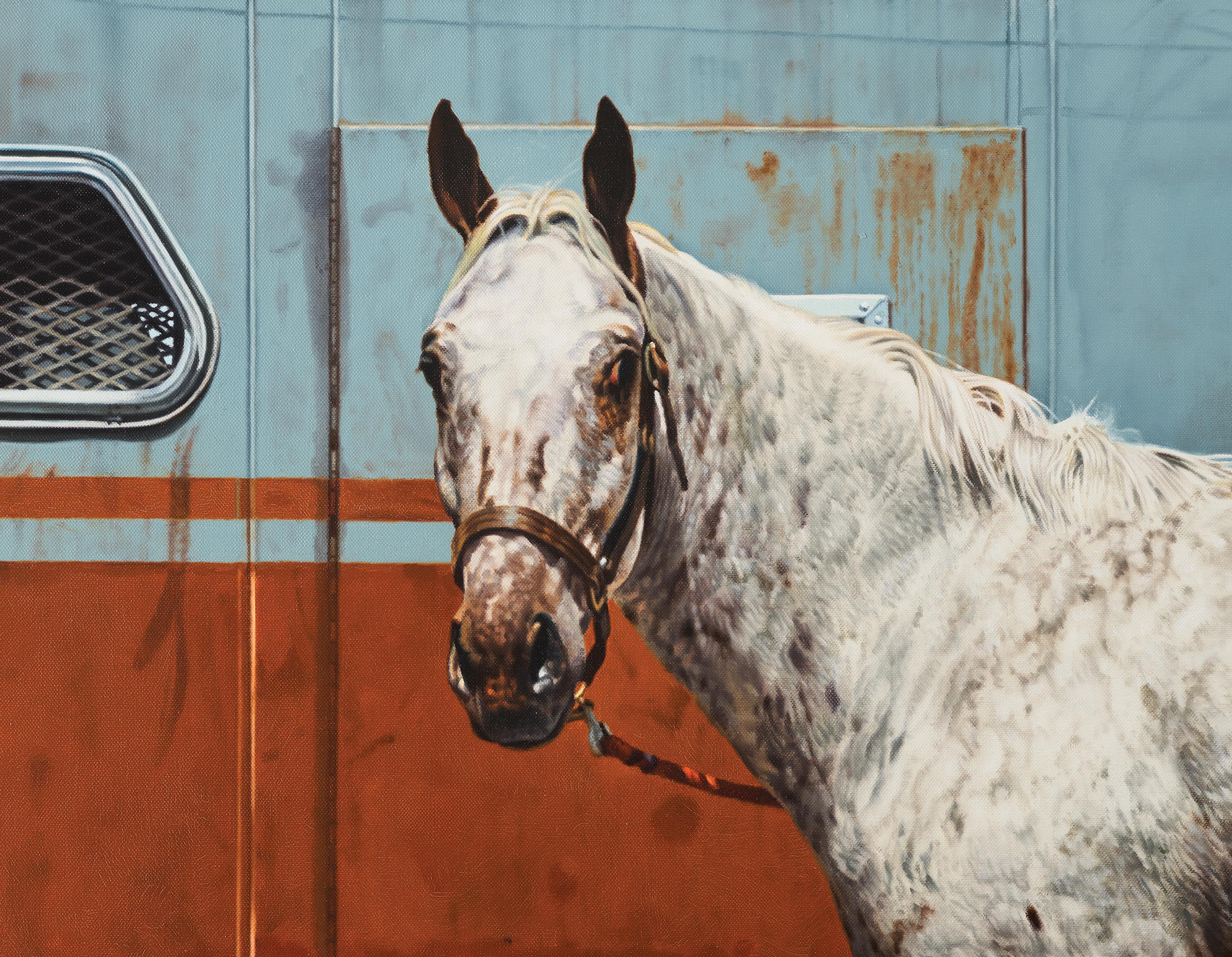

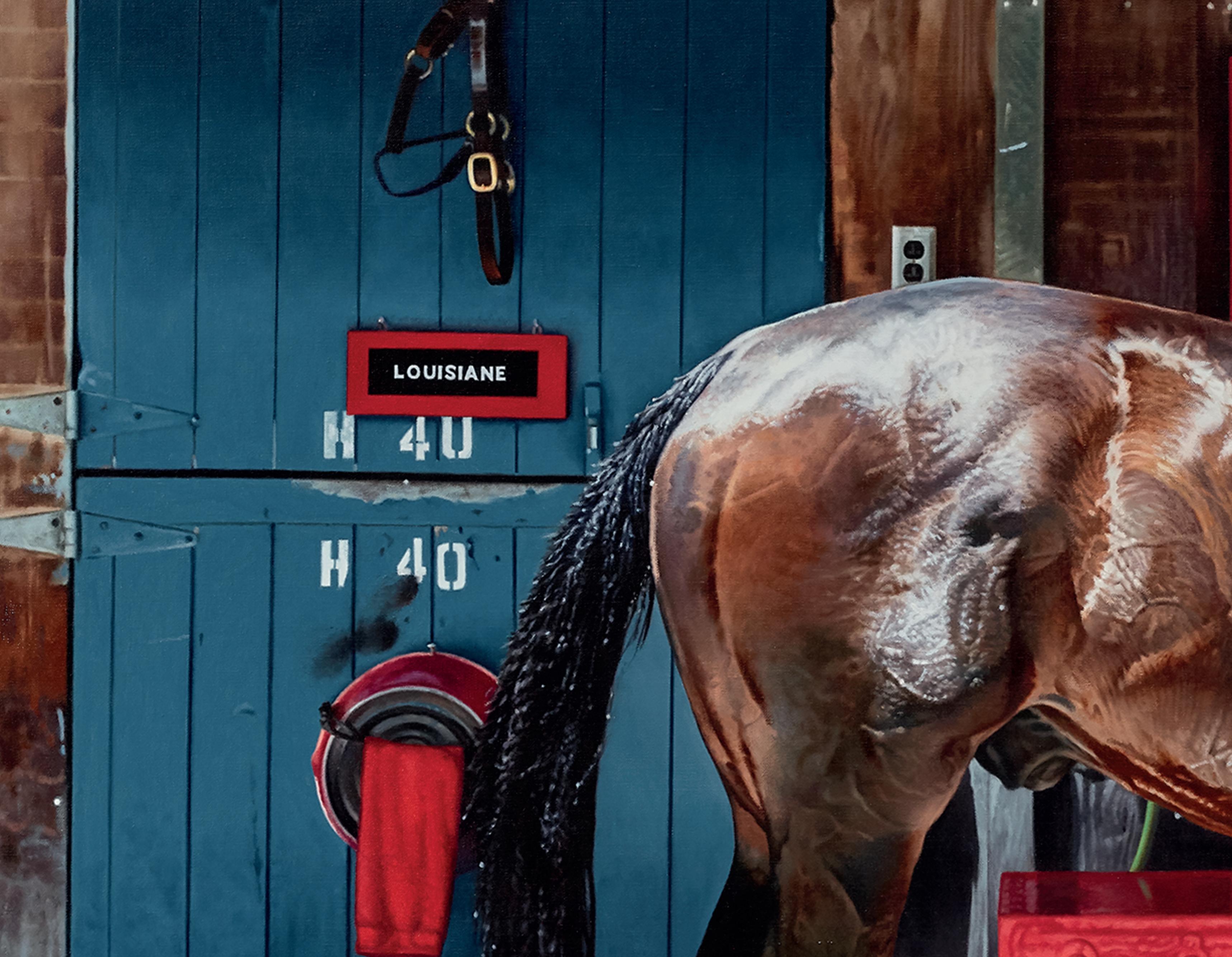
 The Sheik 1983 oil on canvas, 126 × 172.7 cm
The Sheik 1983 oil on canvas, 126 × 172.7 cm
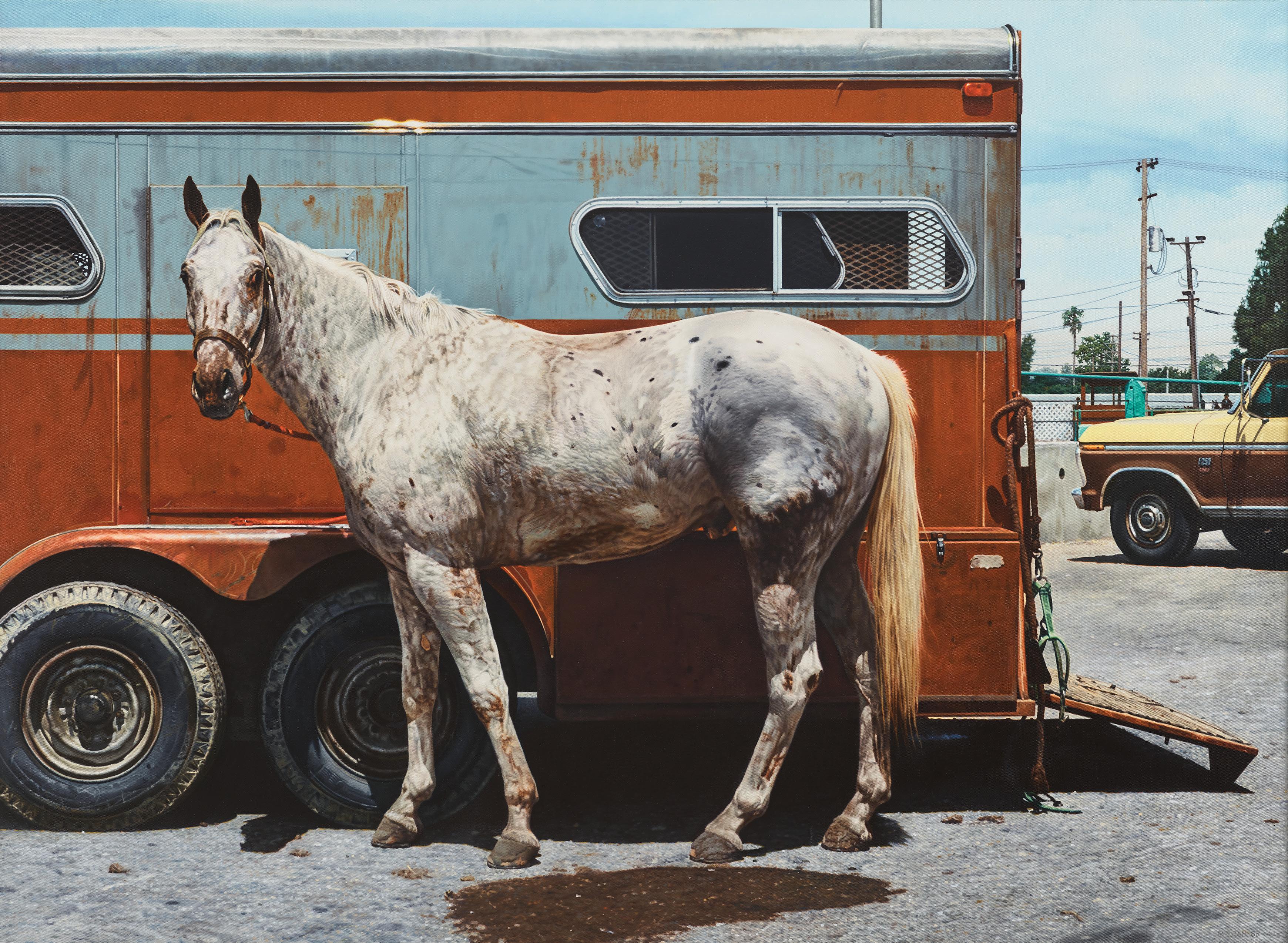
One of the early Photorealist painters, RICHARD MCLEAN (b. 1934, Hoquiam, WA; d. 2014, Castro Valley, CA) is also one of the foremost painters of horses in contemporary art. McLean spent most of his life in California, receiving a BFA in 1958 from the California College of Arts and Crafts and an MFA from Mills College, both in Oakland. He had his first solo exhibition in 1957 at the Lucien Labaudt Gallery, San Francisco, followed by solo shows at the Richmond Art Center, CA (1963) and Berkeley Gallery, San Francisco (1964, 1966). He also exhibited regularly at OK Harris, New York in the 1970s and 1980s.
While McLean’s large-scale and detailed depictions of horses and their riders exhibit the slick finish and exaggerated accuracy typical of Photorealism, his rural subjects established McLean as a unique voice within the movement. Aligned with the Pop artists in their appropriation of popular media, McLean’s significant body of painting was based on colour Kodachromes featured in monthly magazines dedicated to horse breeding and showmanship, with the Kodachromes themselves based on black-and-white photographs. McLean transformed the banal yet sentimentalised poses found in these monthlies into statements on the distortions presented by photographs and the mass media. From the late 1970s, McLean sometimes used his own photographs to obtain greater control of the image. Despite the cool seriality of his work, McLean introduces a psychological element: the more accurate the rendering of the photograph and the more exaggerated the realism, the more imaginative the paintings are.
McLean’s work was featured in the most prominent early Photorealist exhibitions, including Twenty-Two Realists, Whitney Museum of American Art, New York (1970); Harald Szeemann’s documenta 5, Questioning Reality – Pictorial Worlds Today, Kassel (1972); Photo-Realism, Serpentine Gallery, London (1973); New/Photo Realism, Wadsworth Atheneum, Hartford, CT (1974); and Aspects of the Figure, Cleveland Museum of Art, OH (1974). More recently, it has been presented in Picturing America: Photorealism in the 1970s, Deutsche Guggenheim, Berlin (2009); Photorealism: 50 Years of Hyperrealistic Painting (2013 – 2017) which started in Kunsthalle Tübingen, Germany, before touring to 10 locations including Museo Thyssen-Bornemisza, Madrid; HyperAmerica: Landscape – Image – Reality, Kunsthaus Graz, Austria (2015) and Chrome Dreams and Infinite Reflections: American Photorealism, Reynolda House Museum of American Art, NC (2022).
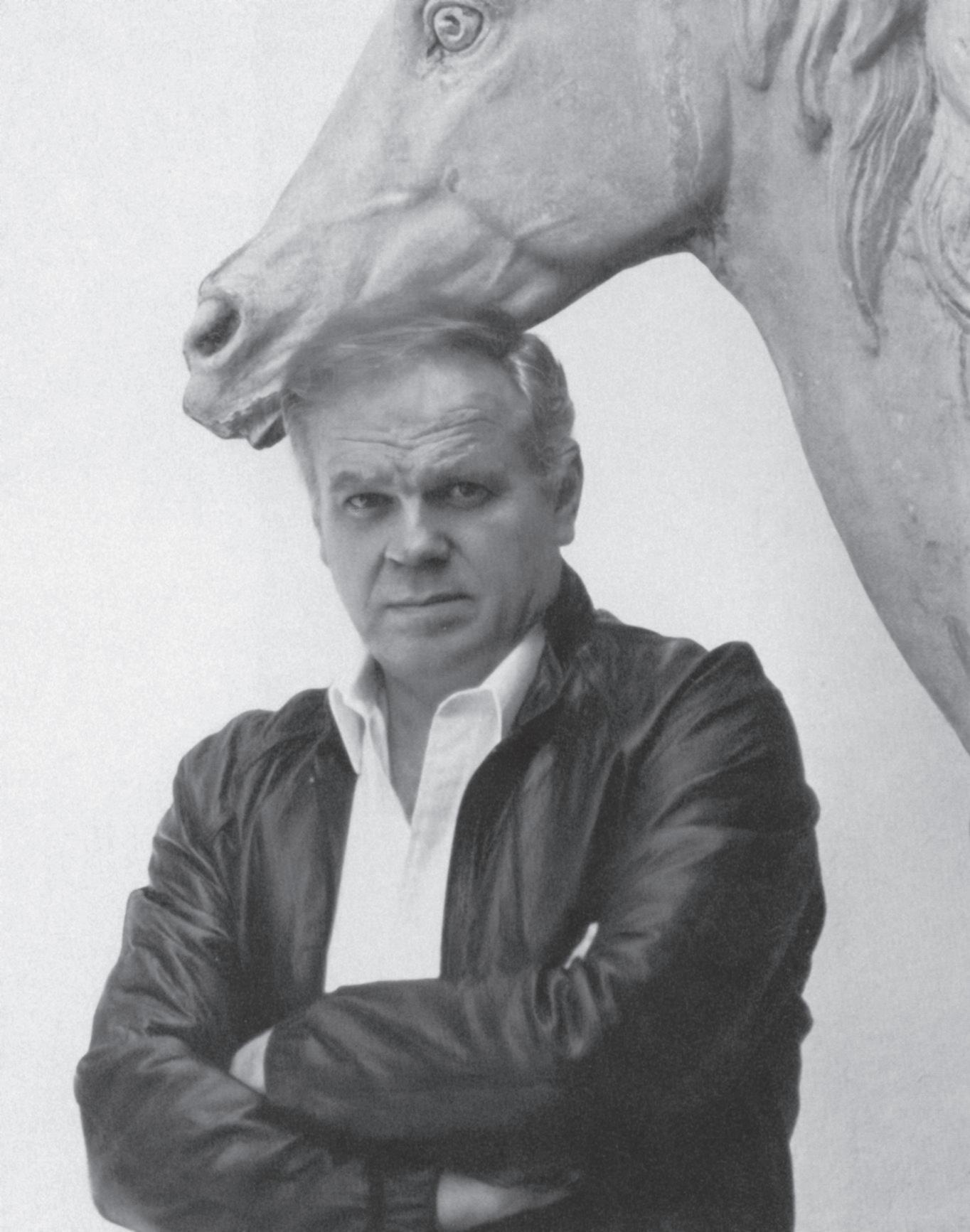
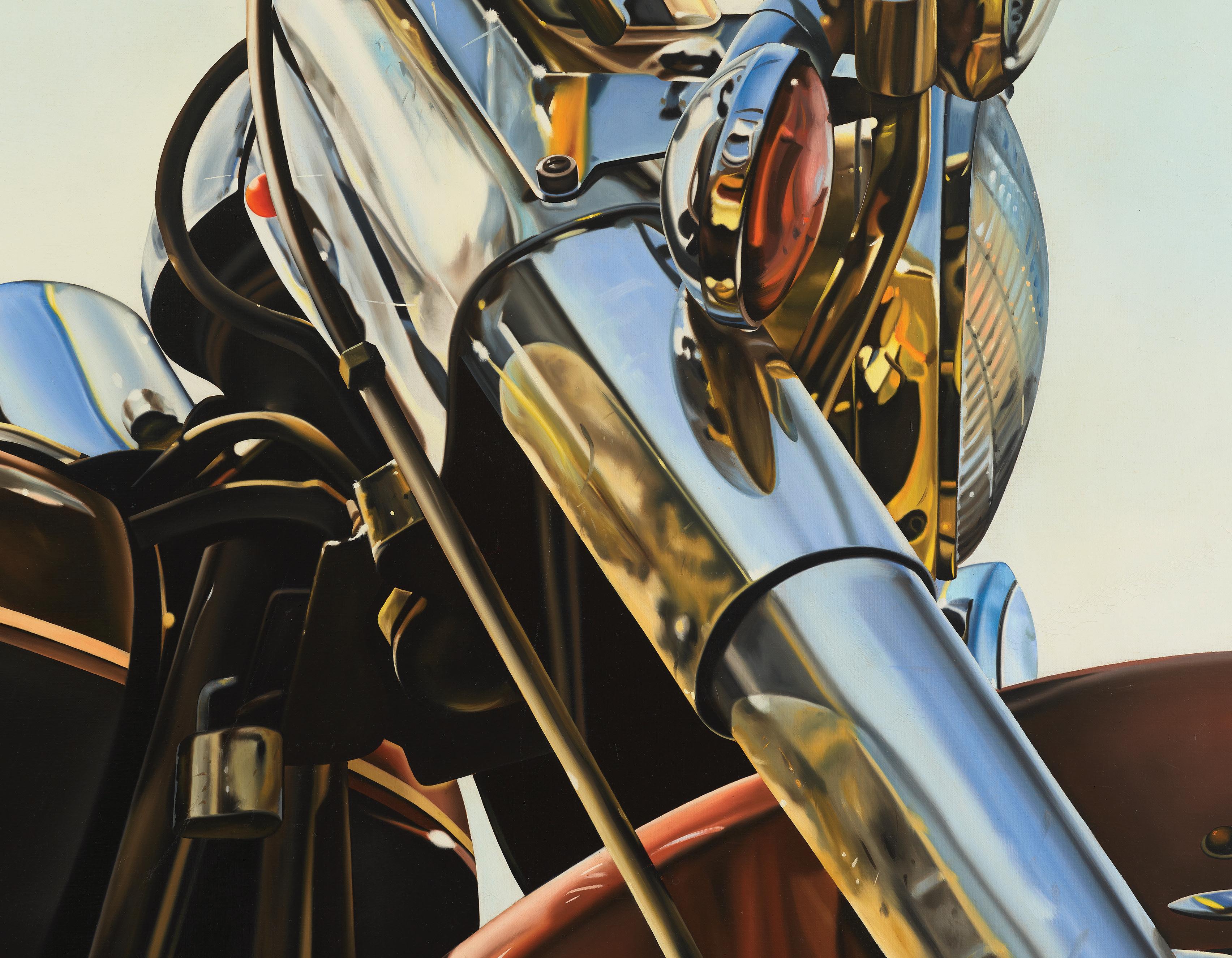
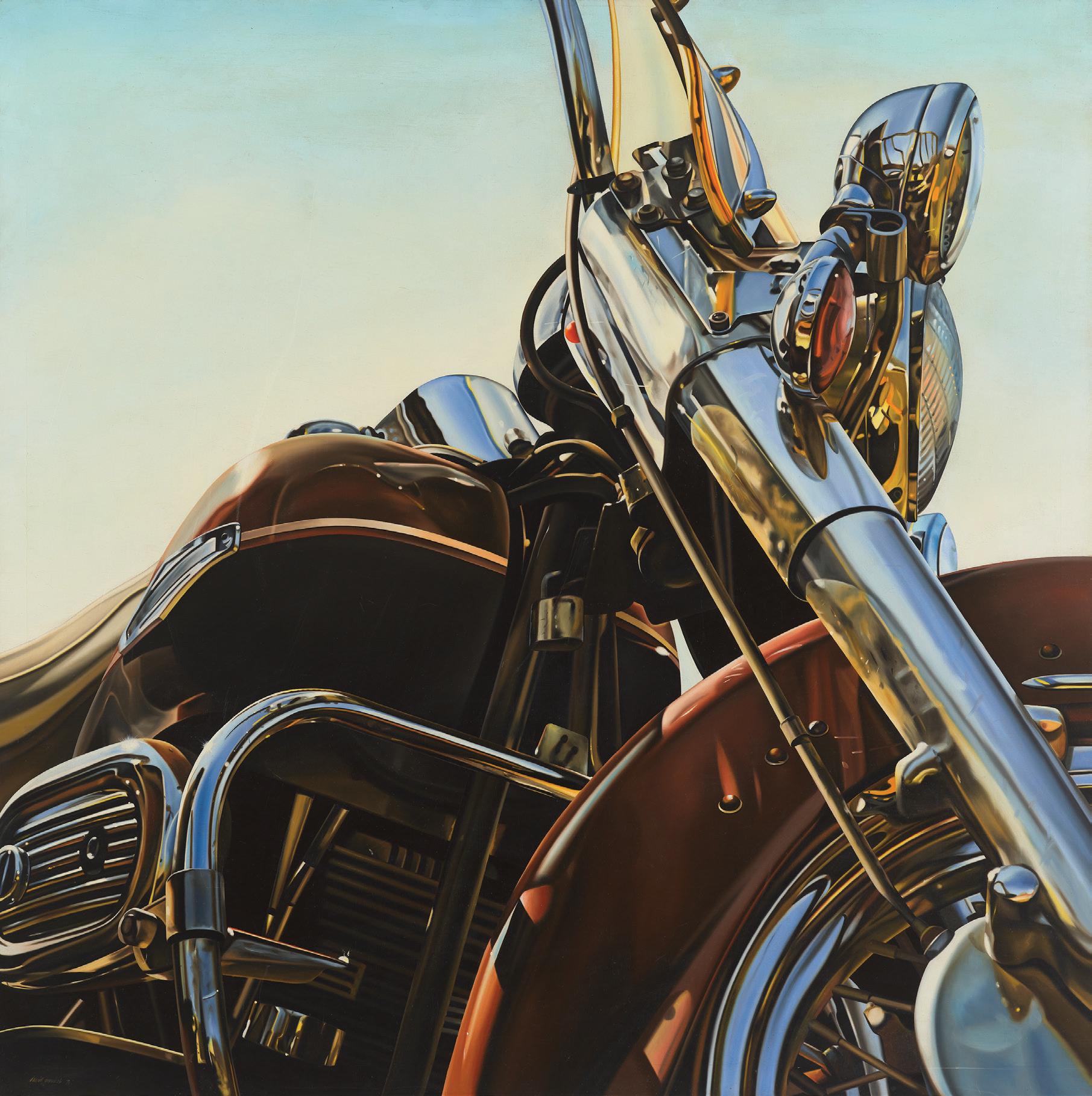
DAVID PARRISH (b. 1939, Birmingham, AL) spent his early decades as an artist chasing, photographing and painting motorcycles, gaining widespread recognition for his intricate Photorealist paintings of metallic engines and colourful bodywork against solid-coloured, flattened backgrounds. Parrish completed his BFA at the University of Alabama in 1961 and, having spent some time in New York before earning his degree, returned to the capital hoping to secure a position as a magazine illustrator. Instead, he was hired as a concept artist for the aerospace firm Hayes International in Huntsville, AL and spent the rest of the 1960s working as a draughtsman and exhibit designer for Hayes, NASA’s Marshall Space Flight Center and other engineering firms. In 1970, Parrish had his first solo exhibition at the Brooks Memorial Art Gallery in Memphis, TN and in 1971, he became a full-time painter.
Parrish’s motorcycle paintings are readily identifiable by their close-up focus on the distinctive lines and shapes that appealed to him and their glossy and reflective surfaces. Parrish began producing images based on photographs in 1964, initially with a scene of a country store, yet, having grown up around motorcycles (his father had toured the country by motorbike before settling down as a banker), Parrish quickly gravitated towards depicting these machines, as well as automobiles and aircraft. Later, Parrish’s subject matter expanded to include amusement park rides and porcelain models of Pop icons such as Marilyn Monroe and Elvis Presley.
Paintings by Parrish have been exhibited widely throughout the United States and internationally. His work was the subject of a solo exhibition at the Huntsville Museum of Art, AL, in 1977. This was followed by the solo institutional presentations David Parrish, Birmingham Museum of Art, AL, touring to Huntsville Museum of Art and Montgomery Museum of Fine Arts, AL (1981); David Parrish, Greenville County Museum of Art, SC (1987) and David Parrish: Paintings, Georgetown College Gallery, KT. Recent group surveys include Hiperrealismo 1967 – 2013, Bilbao Fine Arts Museum, Spain (2015); Hyperrealisme: 50 Years of Painting, Kunsthal Rotterdam, The Netherlands (2017) and Imitation Of Life: Contemporary Approaches To Realism, Huntsville Museum of Art, AL (2021 – 2022).
David Parrish lives and works in Huntsville, AL.
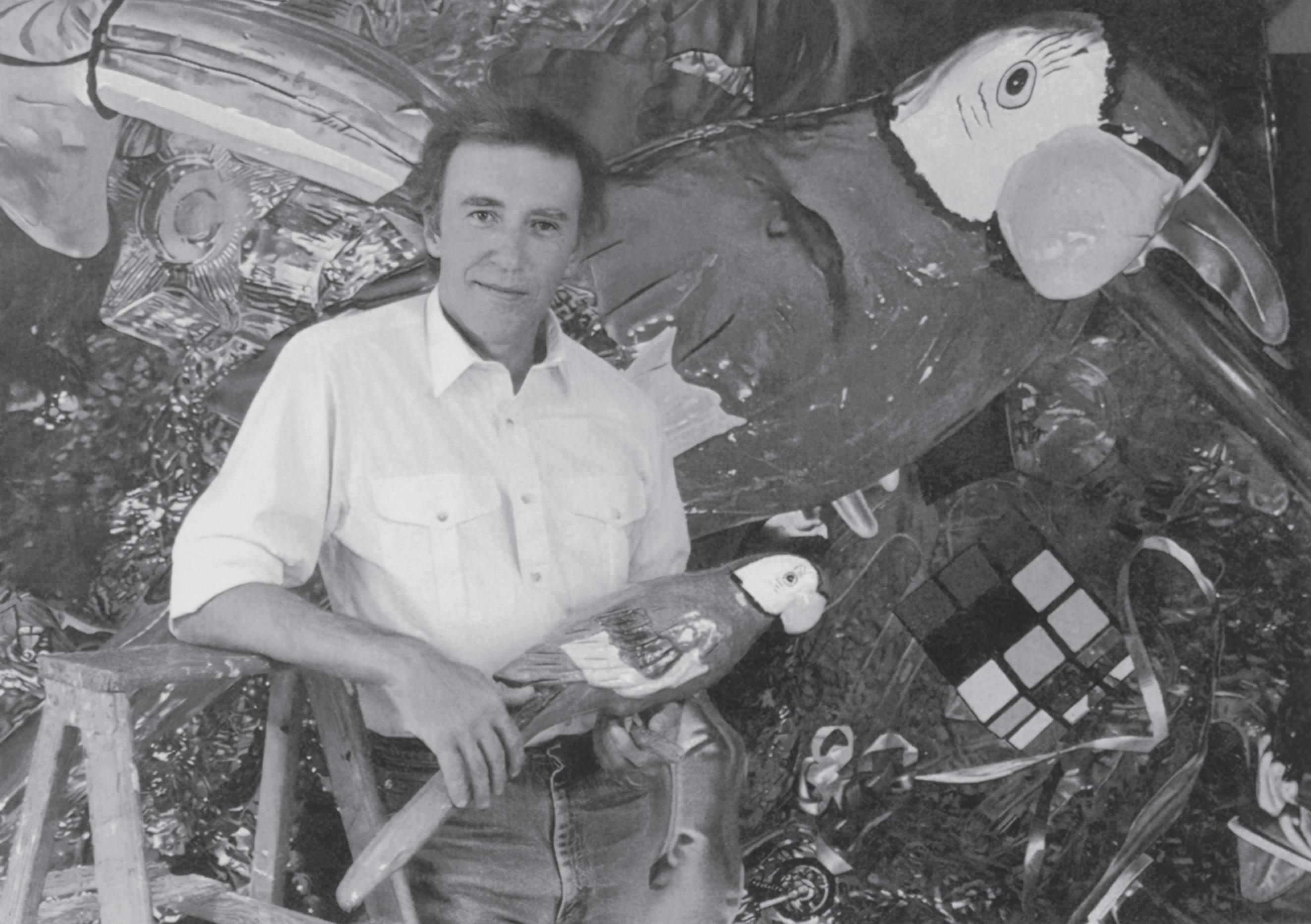
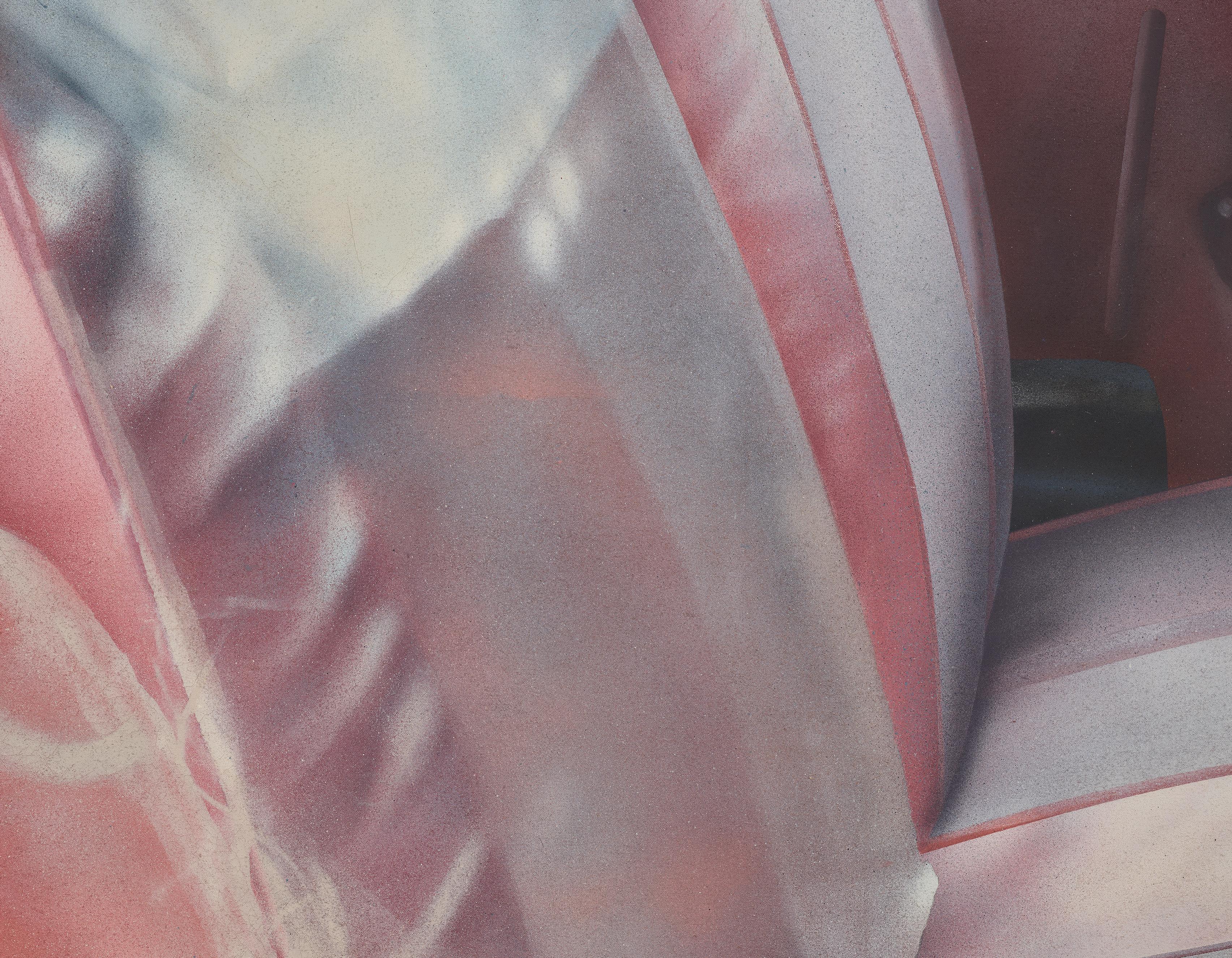
Arrested Vehicle (Silver Upholstery) 1970 oil on canvas, 134.5 × 195.7 cm
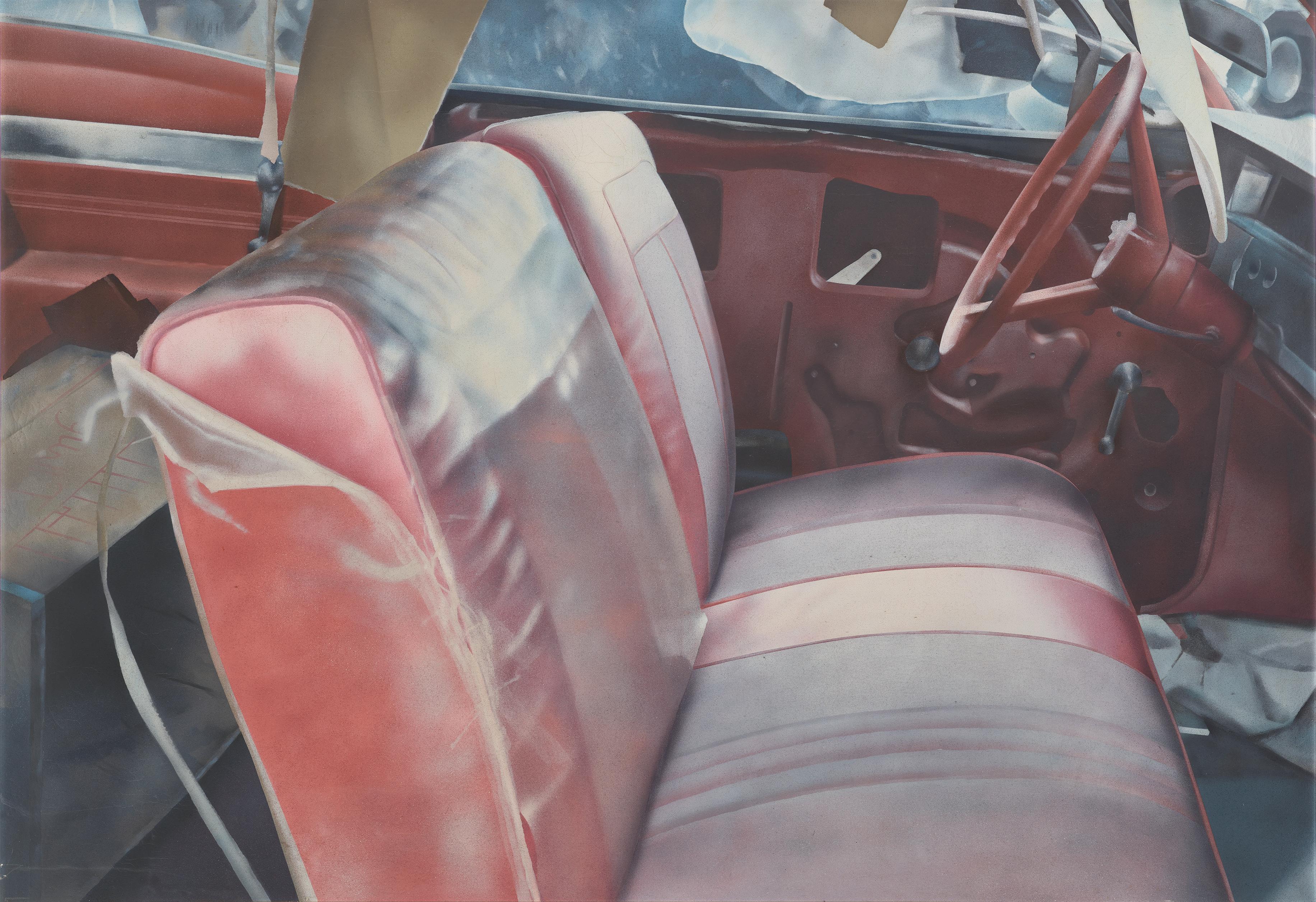
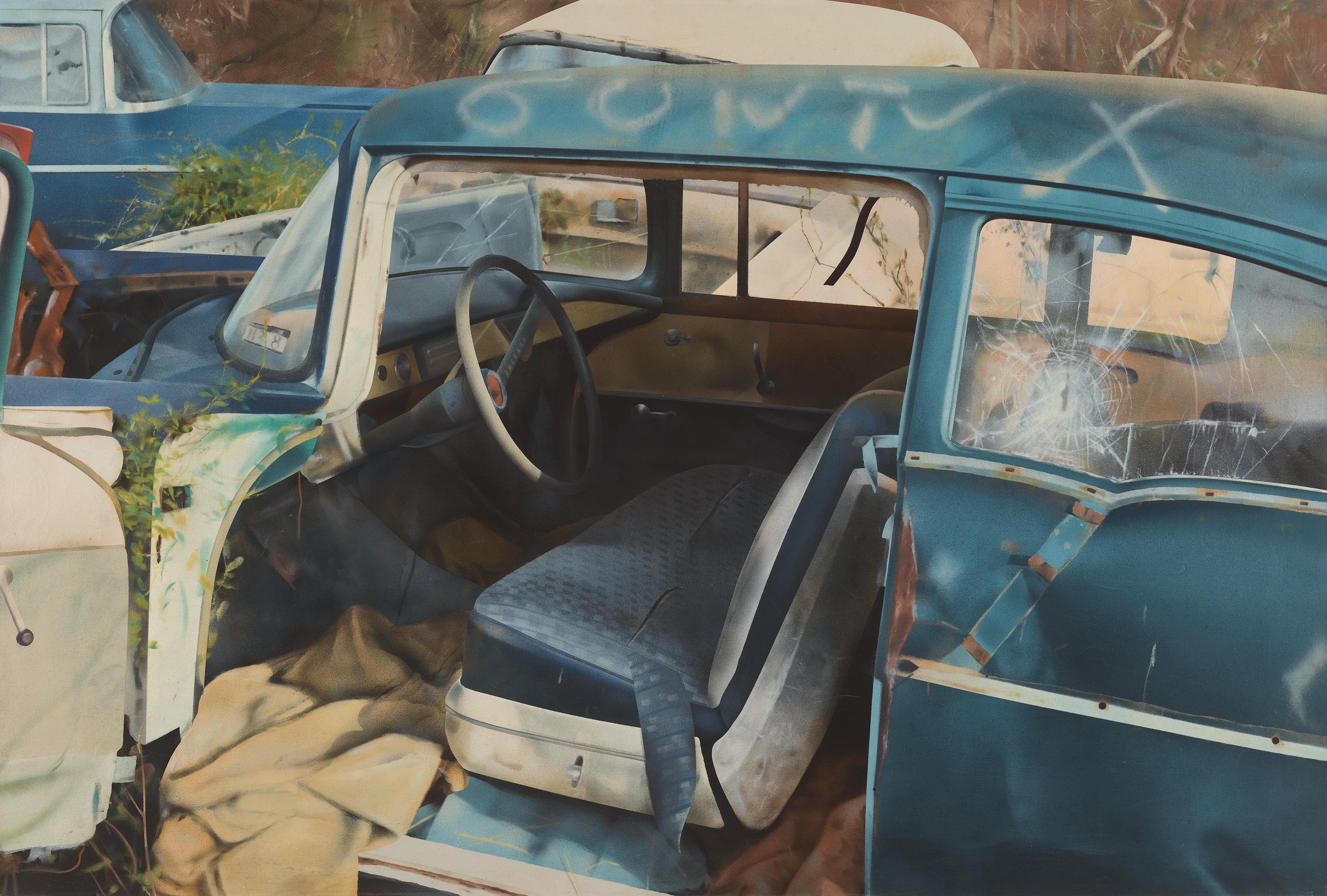
Arrested Vehicle (Writing on Roof) 1970 oil on canvas, 134.8 × 198.9 cm
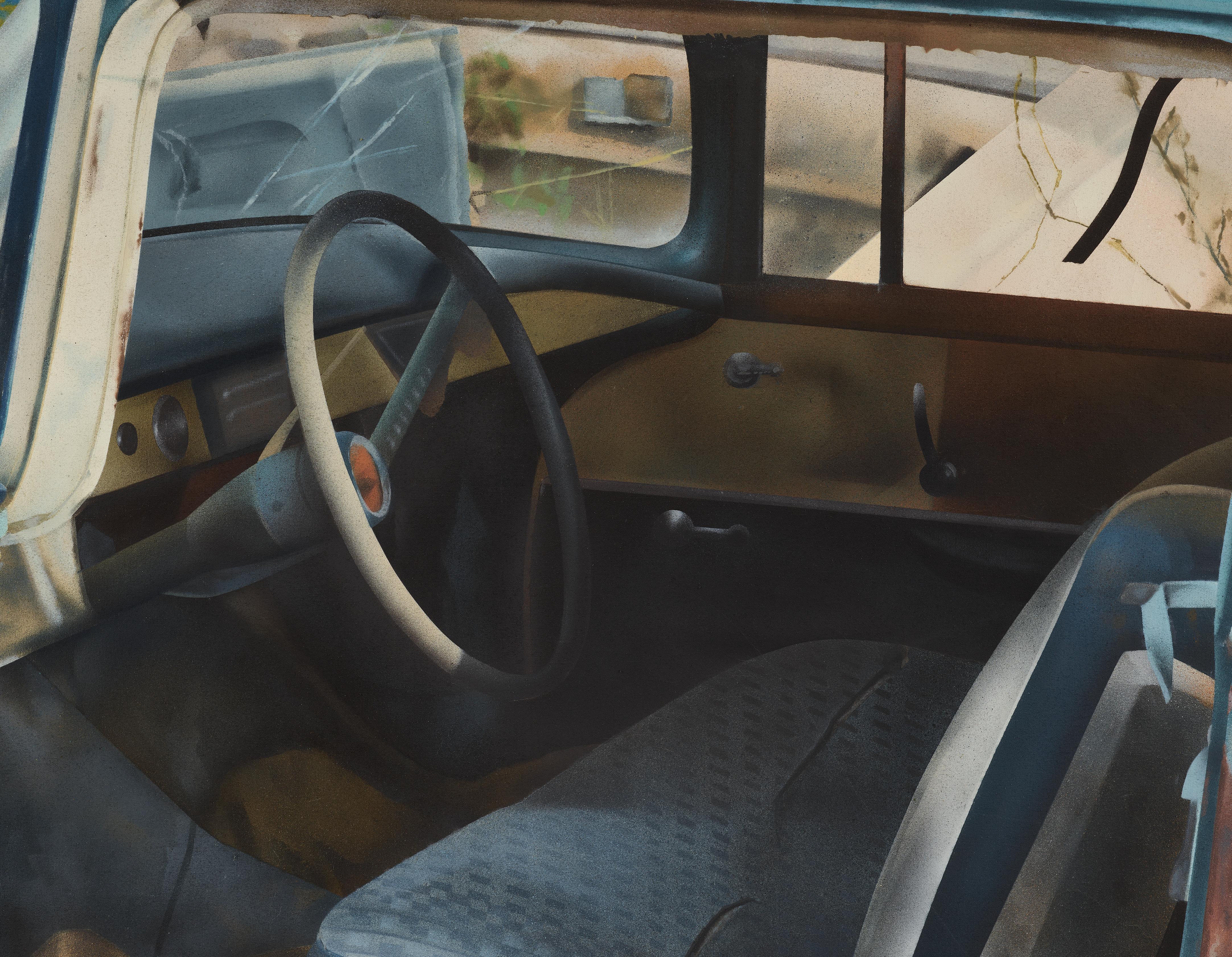
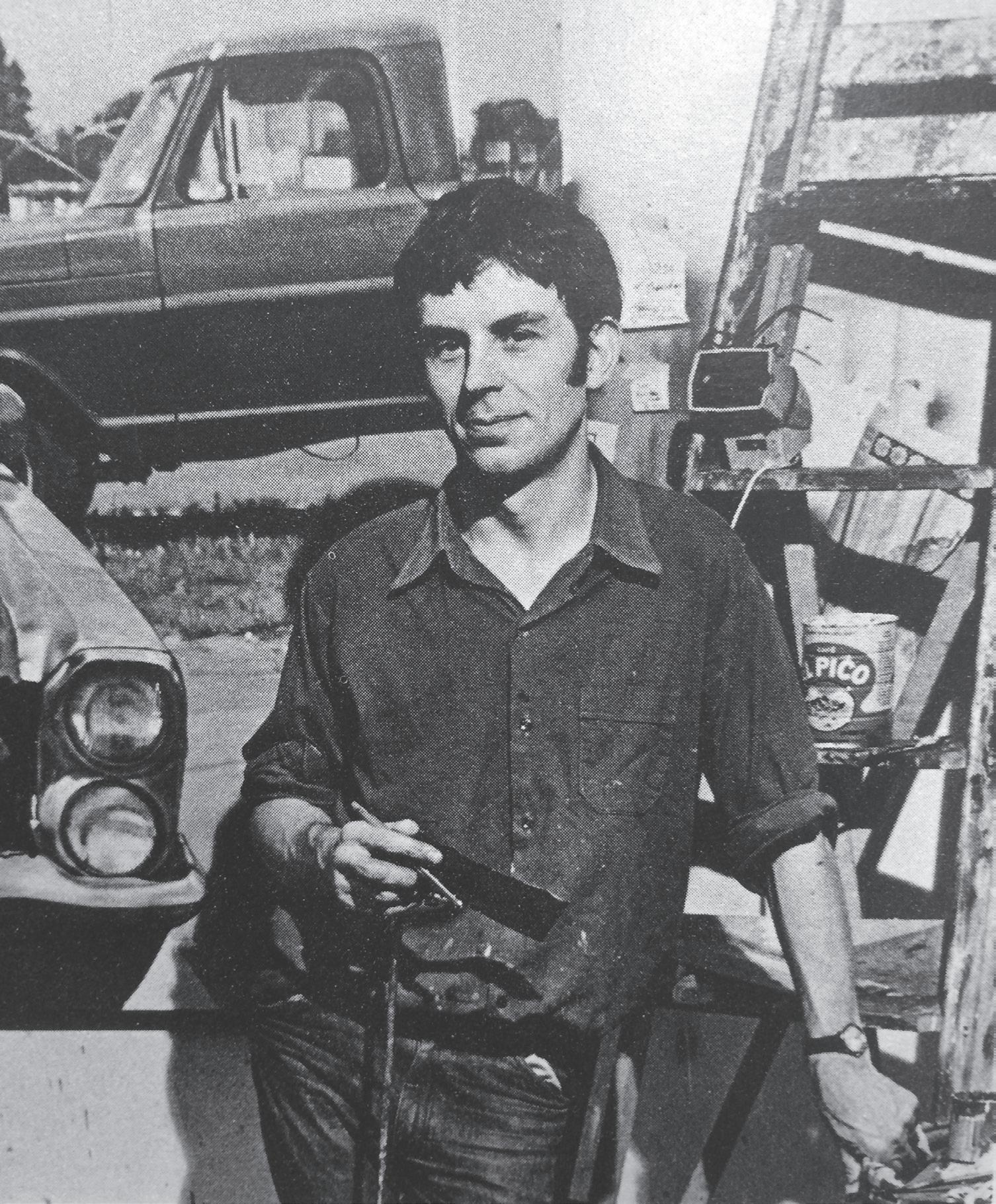
JOHN SALT (b. 1937, Birmingham, UK; d. 2021, Shrewsbury, UK) is the only non-American artist associated with the firstwave Photorealism movement that flourished in the United States between 1960 and 1985. Nevertheless, his nostalgic paintings of often dilapidated classic American vehicles in semi-rural and suburban locations made him one of the movement’s pioneers. Brought up in Birmingham, England, Salt was encouraged to paint as a child and, at 15, he joined the Birmingham School of Art, later studying at the Slade School of Art in London (1958 – 1960). In 1966, Salt moved to the United States to study an MFA at the Maryland Institute College of Art in Baltimore, where automobiles became his primary artistic focus. Salt moved to New York in 1969 and in 1970 had his first solo exhibition at the newly opened OK Harris. He returned to England in 1978.
Salt’s dedicated portrayal of cars is rooted in his upbringing in Birmingham, a city of car manufacturing, and has personal relevance; his father owned an auto repair garage where the young artist would spend his afternoons after school. Once in Baltimore, Salt initially used the slick images from Buick sales brochures (produced to sell the American Dream) as source imagery until his discovery of dumped cars in a scrapyard under the Brooklyn Bridge in New York inspired a fascination with decrepit motors. The jolting violence of wrecked, destroyed and ‘arrested’ vehicles, with traumatised bodywork, broken windows and deflated tyres, jar with the meticulous style of his painting. The redundant cars are symptomatic of a marginalised lifestyle, a world of shacks and trailer homes, locations far from the affluent American metropolis, which is prone to idealisation in the popular imagination.
Salt’s work was selected for seminal early presentations, including Harald Szeemann’s documenta 5: Questioning Reality – Pictorial Worlds Today, Kassel (1972) and Photo-Realism, at the Serpentine Gallery, London (1973). Recent institutional exhibitions include Picturing America: Photorealism in the 1970s, Deutsche Guggenheim, Berlin (2009); Photorealism: 50 Years of Hyperrealistic Painting (2013 – 2017) which opened in Kunsthalle Tübingen, Germany, before touring 10 locations, including Museo ThyssenBornemisza, Madrid; Hipperrealismo 1967 – 2013, Bilbao Fine Arts Museum, Spain (2015) and HyperAmerica: Landscape – Image – Reality, Kunsthaus Graz, Austria (2015). In 2011, Salt had a major retrospective at the IKON gallery in Birmingham.
This homecoming is notable: Salt was the first artist to exhibit at the gallery in its original Bullring venue in 1965.

Fruit of the Month (F.O.T.M) 1972
acrylic on canvas, 243.8 × 243.8 cm
BEN SCHONZEIT (b. 1942, Brooklyn, NY), known for the surreal juxtaposition of subjects in his canvases, helped pioneer the Photorealist airbrush technique. After a year of studying architecture at the Cooper Union, New York, Schonzeit switched to fine art, receiving a BFA in 1964. With a group of paintings based on photographs he made of downtown Manhattan, Schonzeit had his first solo exhibition at French and Company, New York, in 1970, his career flourishing as Photorealism came into its own.
Schonzeit’s work is distinguishable from other Photorealist paintings by its eccentric, Surrealist bent. His paintings are based on fabricated still life arrangements intentionally photographed out of focus to emphasise their air of unreality and on compositionally-complex collages made of found images from magazines and journals. The surreal juxtapositions these generate afford his work heightened artificiality, despite his technically accurate painting being faithful to the – edited – source material. Schonzeit’s skill with the airbrush, enhanced by traditional brushstrokes, results in a perfectly smooth painting surface, his eventual use of polyester canvas giving Schonzeit’s work an increasingly polished aesthetic.
Schonzeit has had over 50 solo exhibitions in the United States and abroad. Early institutional presentations include Harald Szeemann’s documenta 5, Questioning Reality –
Pictorial Worlds Today, Kassel (1972) and Photo-Realism, Serpentine Gallery, London (1973). More recently, he has had the solo presentations The Secret Schonzeit, The Butler Institute of American Art, Youngstown, OH (2002) and Ben Schonzeit: Brilliant Realism, Museum of Art, DeLand, FL (2015).
Recent landmark surveys include America: Photorealism in the 1970s, Deutsche Guggenheim, Berlin (2009); Photorealism Revisited, Oklahoma City Museum of Art, OH and Butler Institute of Art, Youngstown, OH (2014); Photorealism: 50 Years of Hyperrealistic Painting (2013 – 2017) which started in Kunsthalle Tübingen, Germany before touring to 10 locations including Museo Thyssen-Bornemisza, Madrid; Hipperrealismo 1967 – 2013, Bilbao Fine Arts Museum, Spain (2015); HyperAmerica: Landscape – Image – Reality, Kunsthaus Graz, Austria (2015); A Feast for the Eyes, Nassau County Museum of Art, NY (2016); From Lens to Eye to Hand:
Photorealism 1969 to Today, Parrish Art Museum, NY and Flint Institute of the Arts, MI (2017 – 2018); 50 Years of Realism, Centro Cultural Center Bank of Brazil, Rio de Janeiro (2019); and Chrome Dreams and Infinite Reflections: American Photorealism, Reynolda House Museum of American Art, NC (2022).
Ben Schonzeit lives and works in Brooklyn, New York.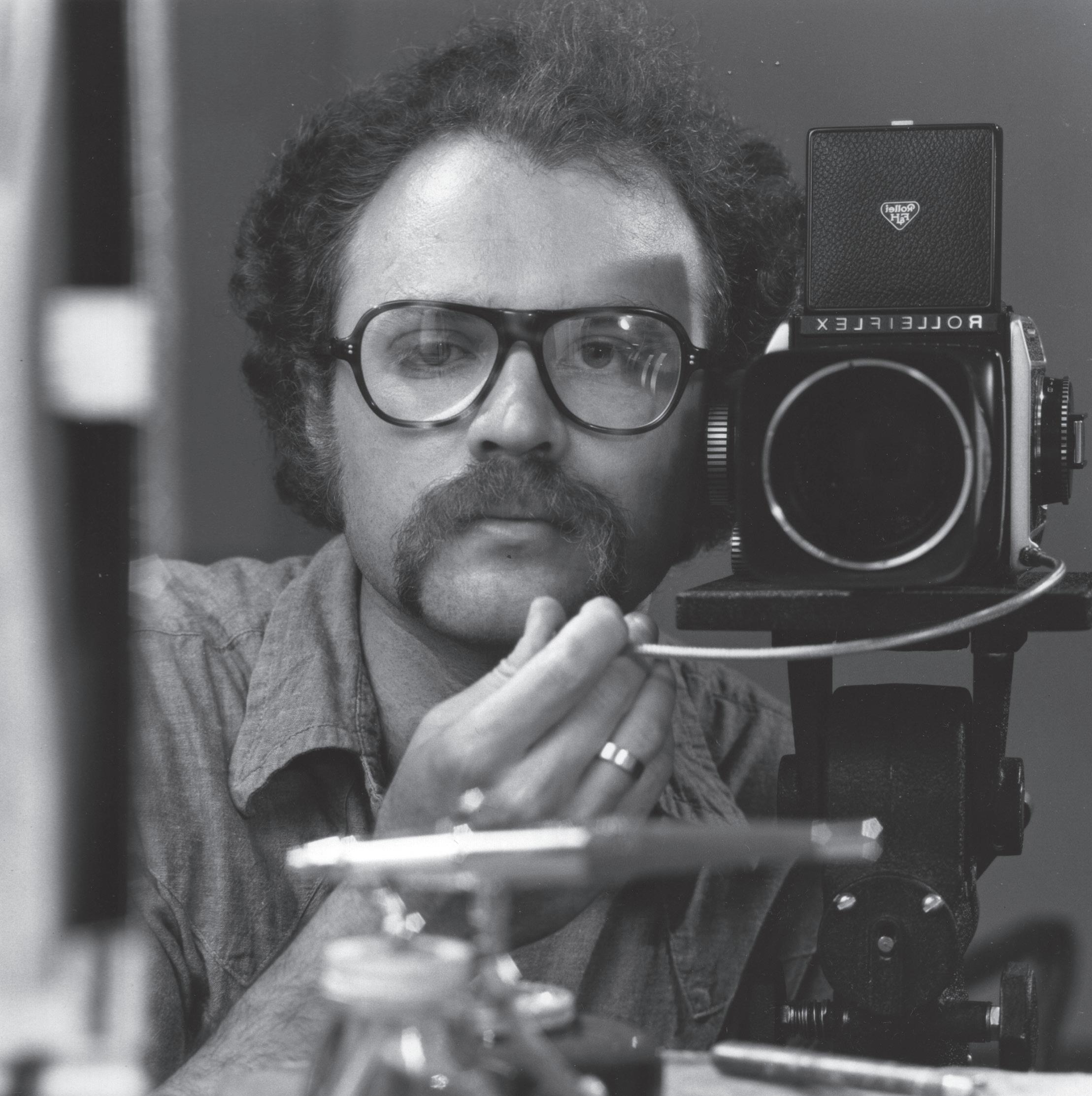

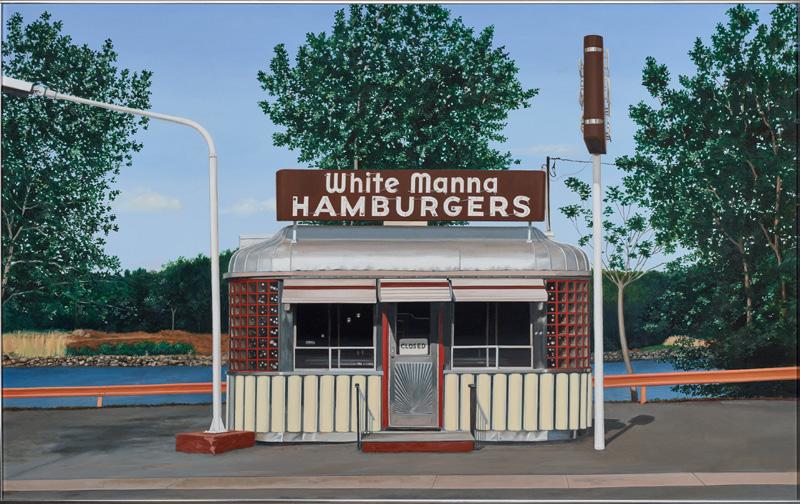
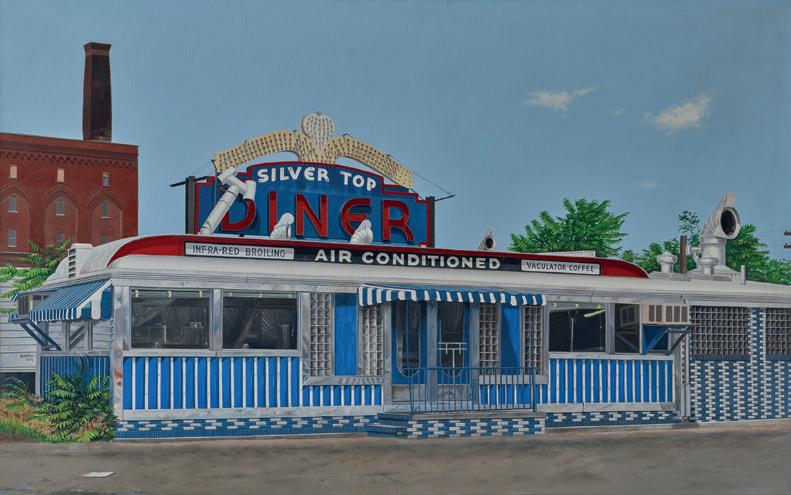
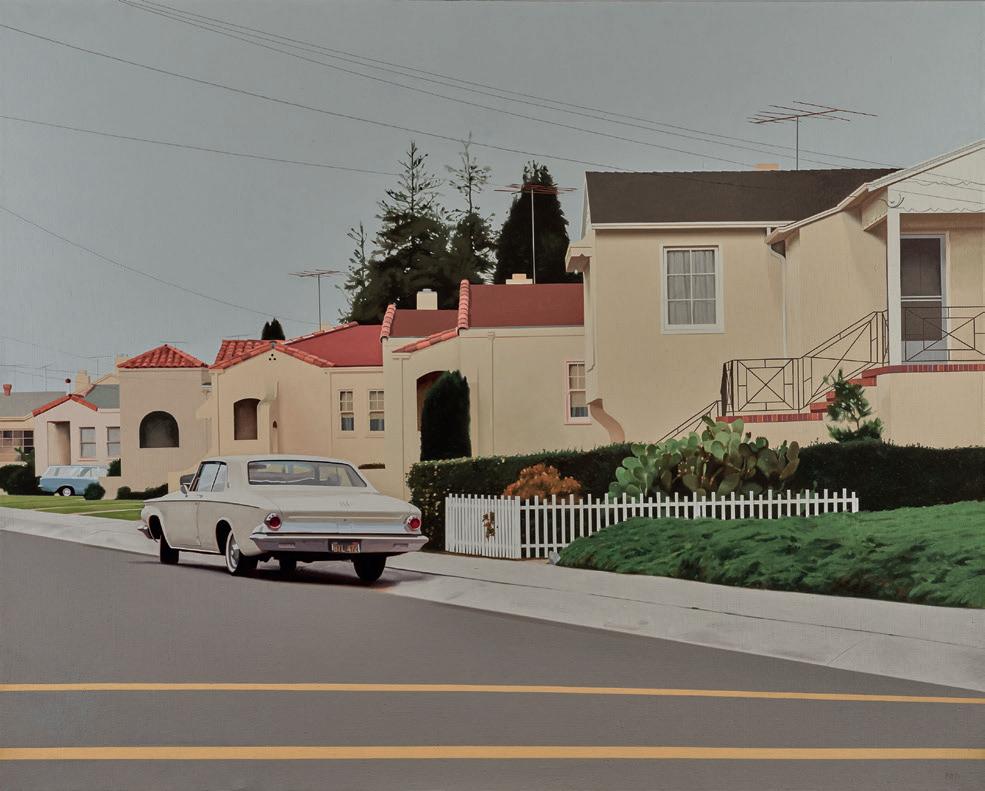

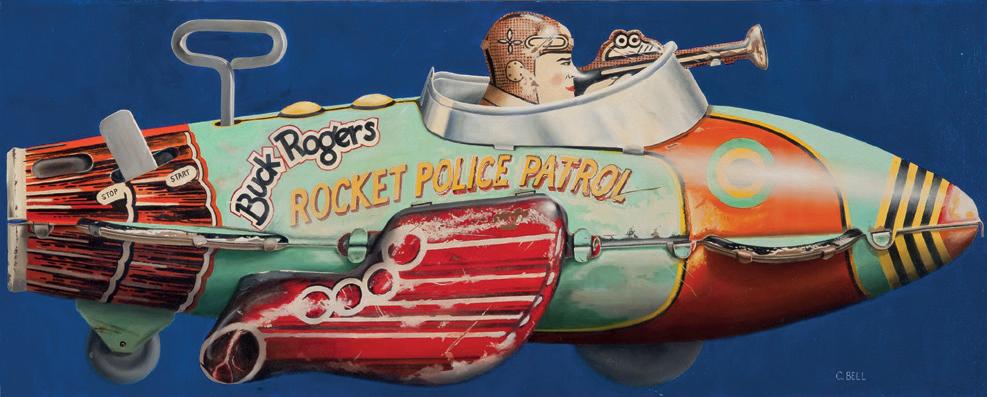
JOHN BAEDER
1 Hamon Bros. Plymouth 1973 oil on canvas, 76.2 × 121.9 cm
2 White Manna Hamburgers 1974 oil on canvas, 76.2 × 121.9 cm
3 Silver Top Diner 1974 oil on canvas, 76.2 × 121.9 cm
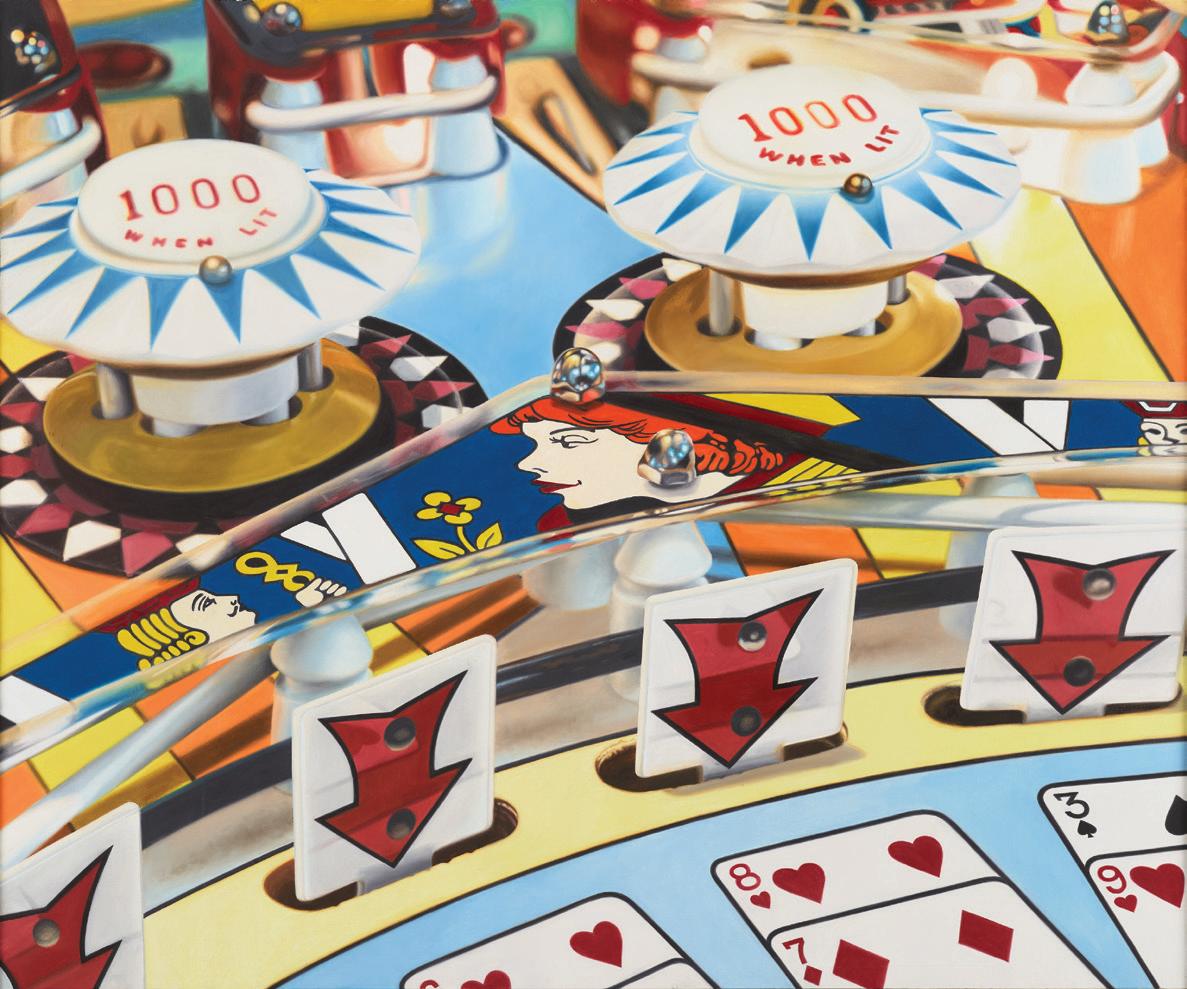
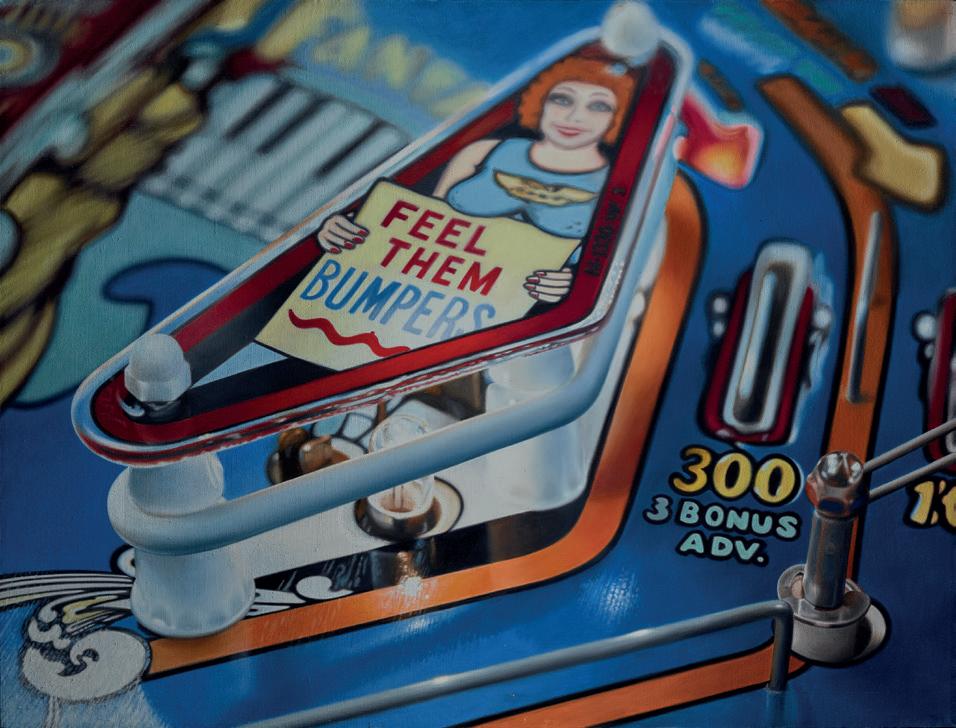
ROBERT BECHTLE
4 ’62 Chevy 1970 oil on canvas, 114.3 × 132.1 cm
5 ’64 Chrysler 1971 oil on canvas, 121.9 × 151.8 cm
CHARLES BELL
6 Buck Rogers 1972 oil on canvas, 61 × 152.1 cm
7 Feel Them Bumpers 1977 oil on canvas, 111.8 × 147.3 cm
8 Gin 1977 oil on canvas, 152.4 × 182.9 cm
TOM BLACKWELL
9 Queens Boulevard 1974
oil on canvas, 155.2 × 211 cm
10 Thompson St. Triumph 1975

oil on canvas, 127 × 168 cm
DAVIS CONE
11 Martin: Talledega 1981
acrylic on canvas, 107.3 × 100.6 cm
ROBERT COTTINGHAM
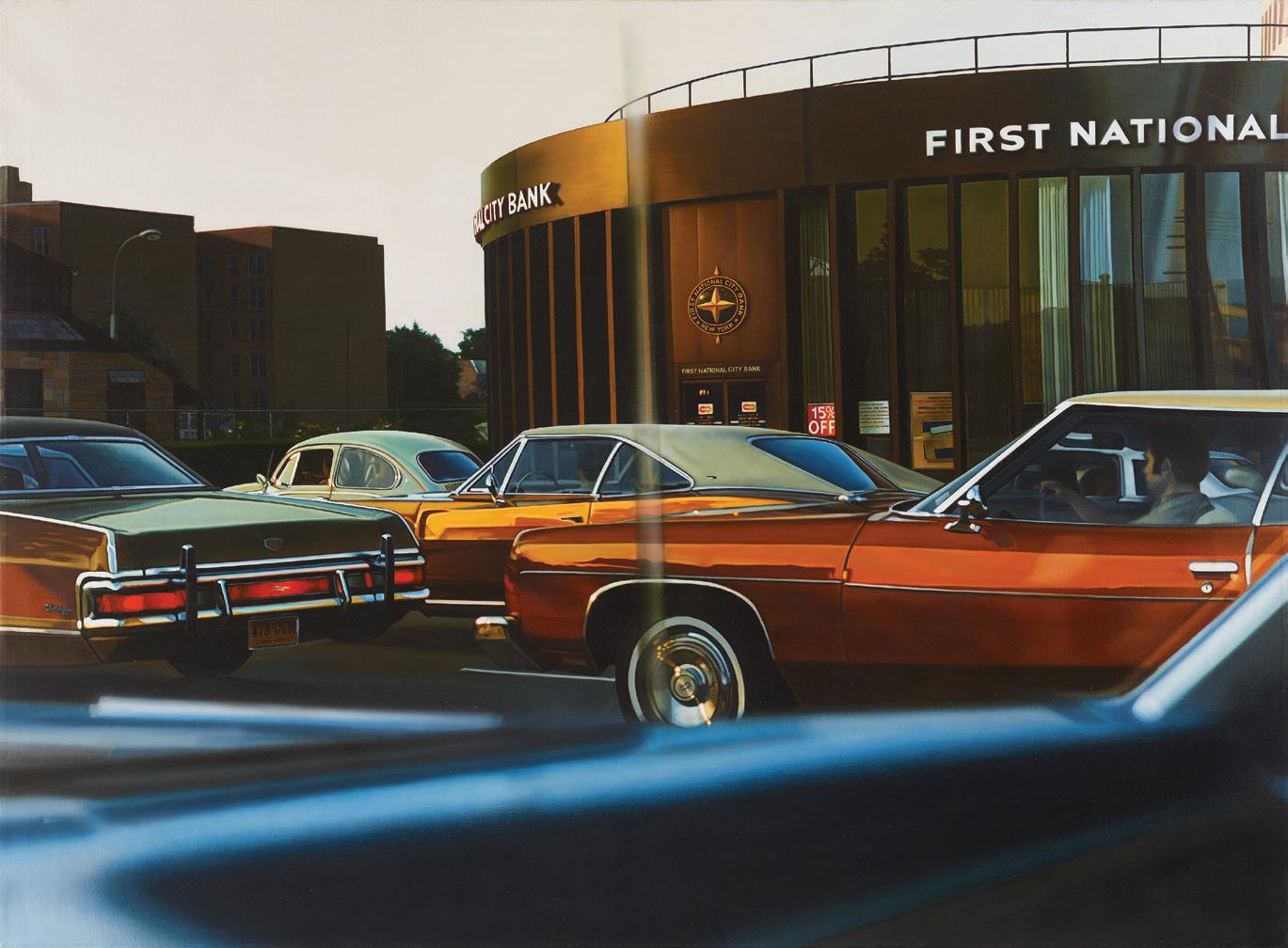
12 Parking Lot 1966
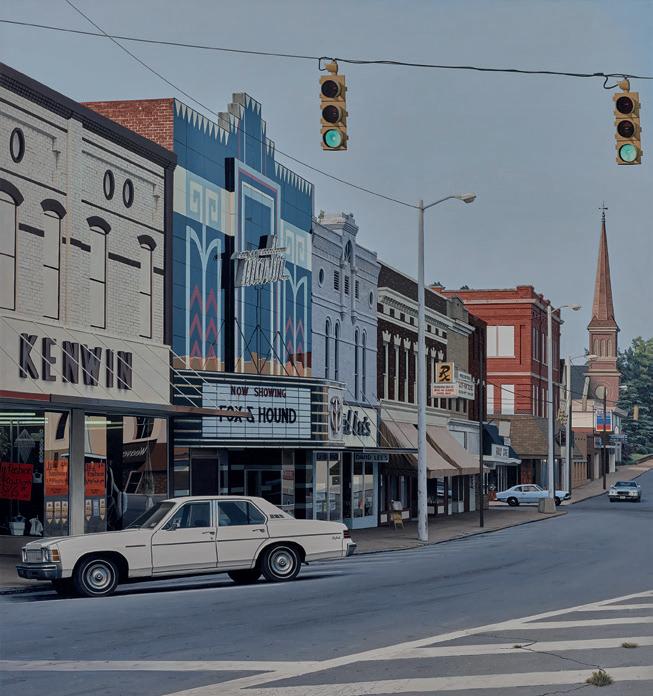
oil on canvas, 111.3 × 190.2 cm
13 HA 1971
oil on canvas, 198 × 198 cm
14 Miller High Life 1977
oil on canvas, 198.1 × 198.1 cm
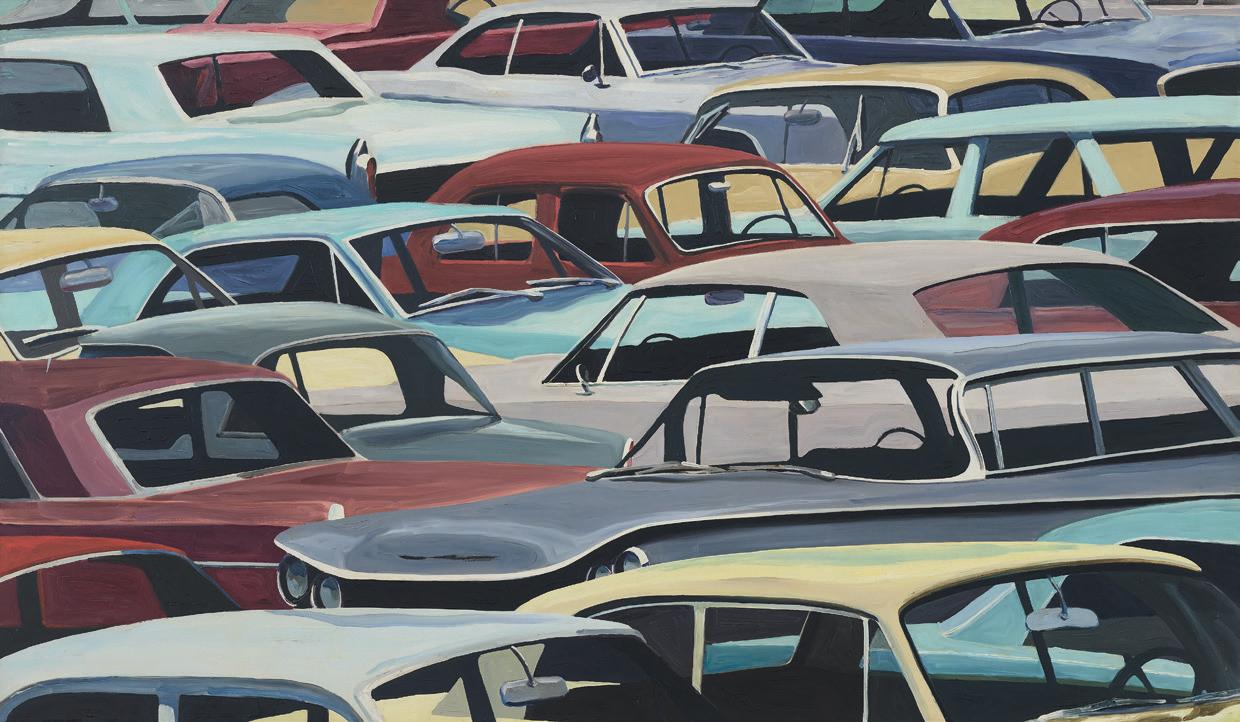
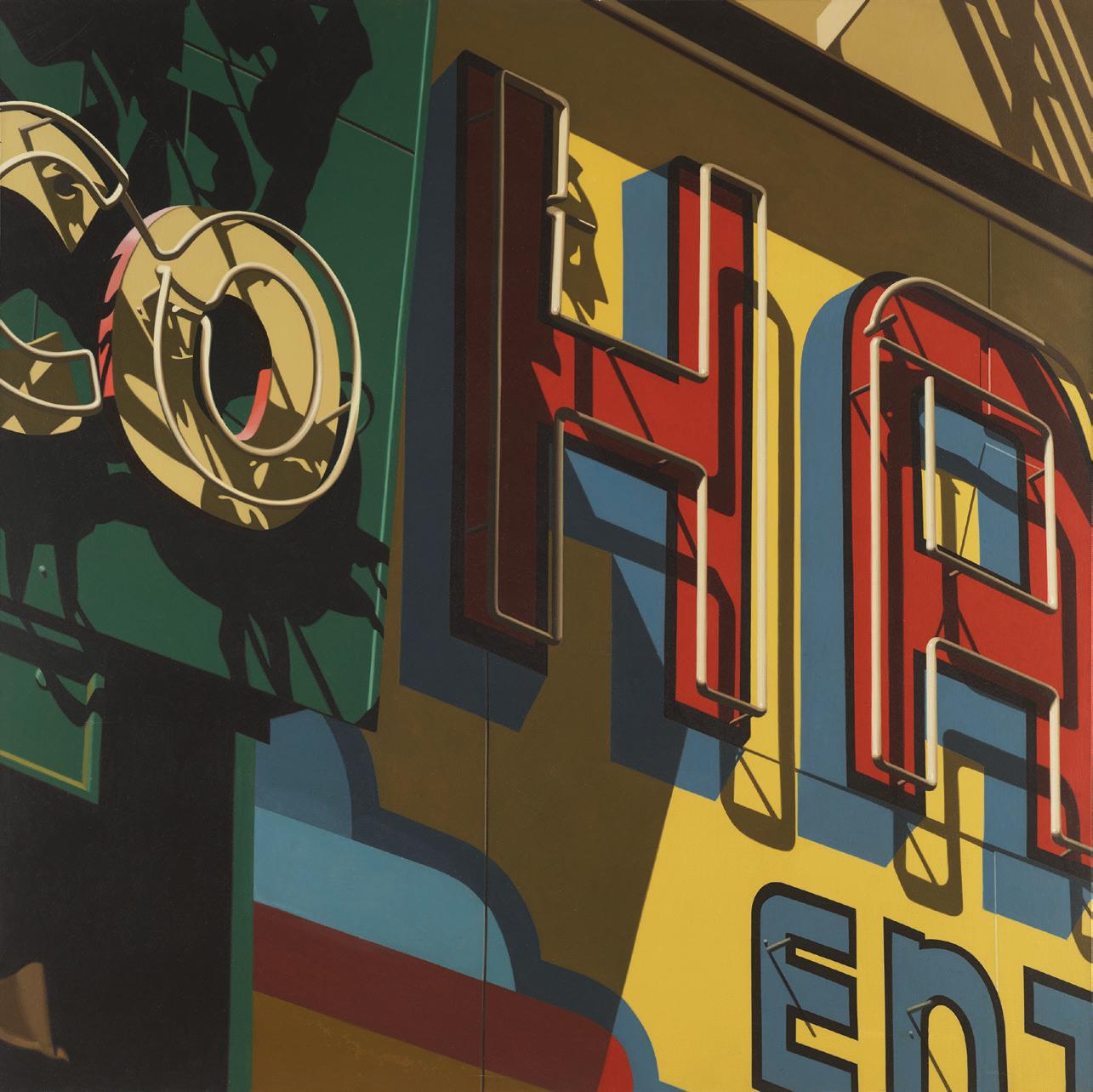
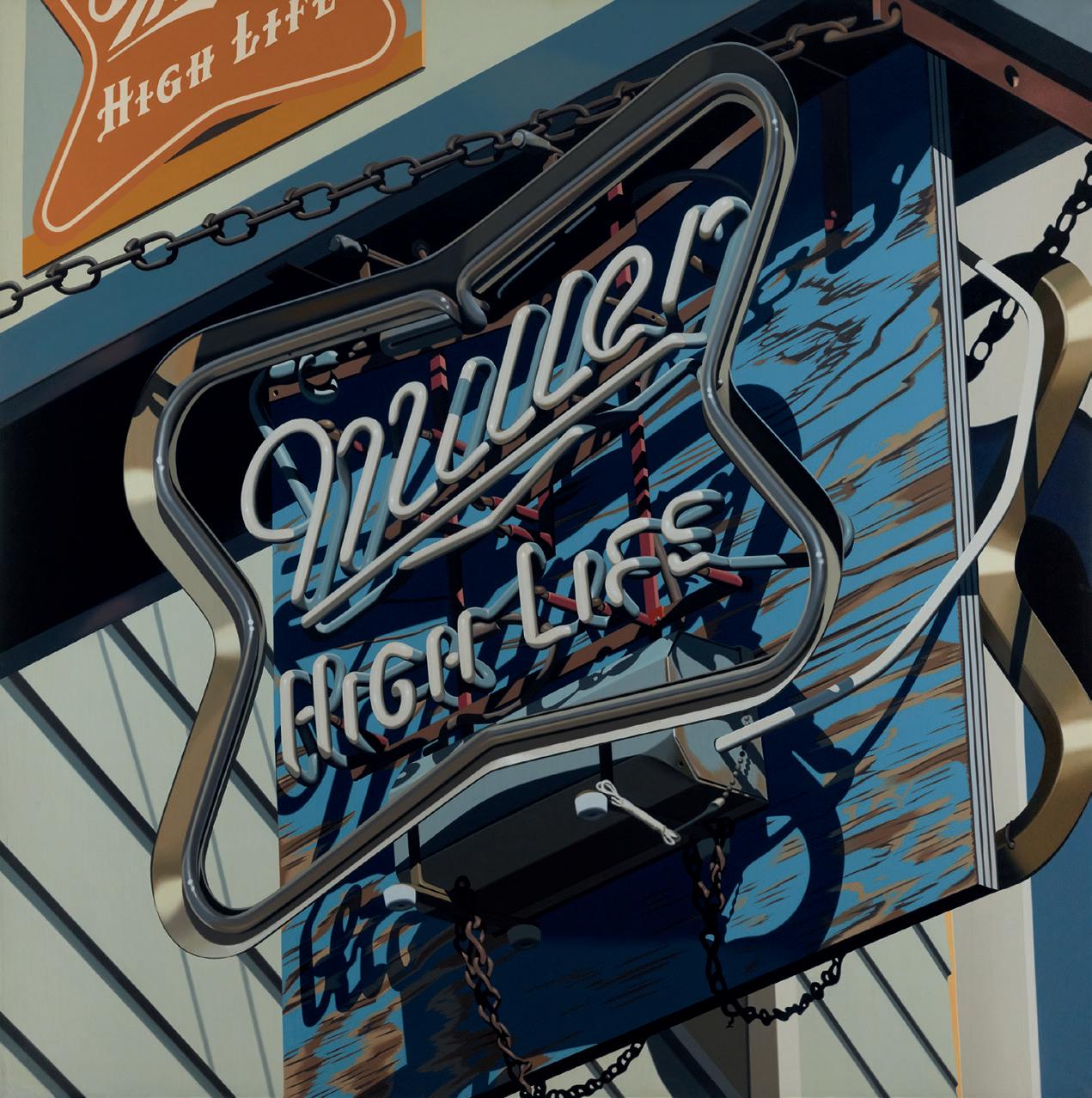
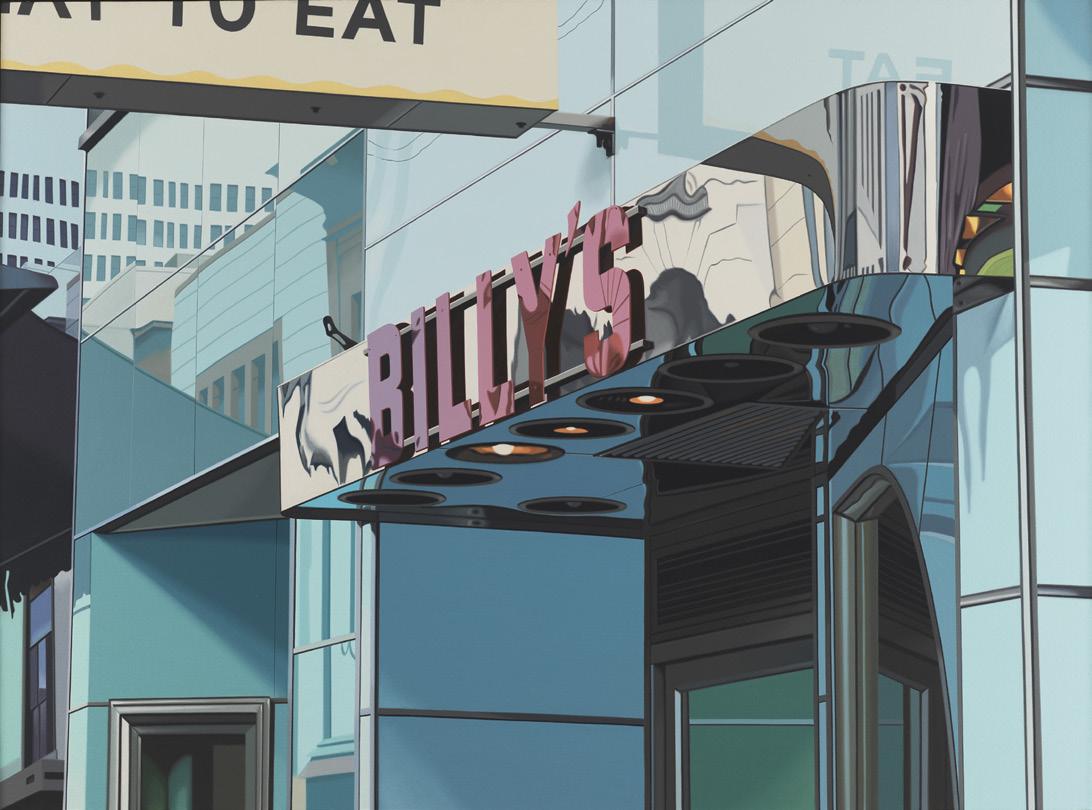
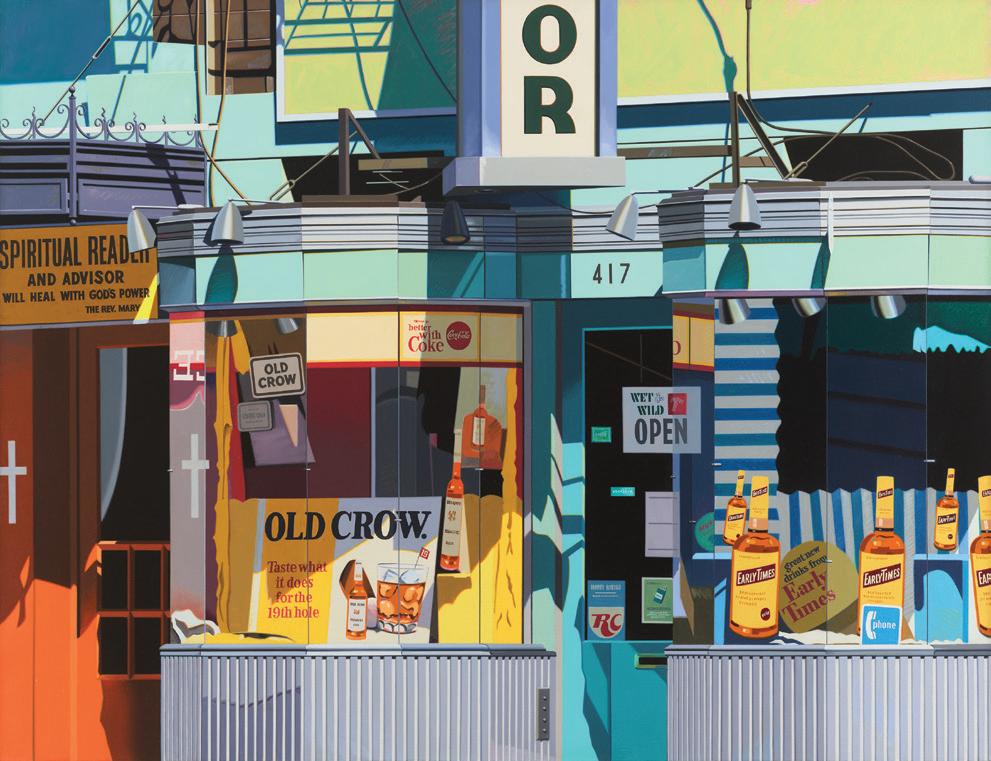
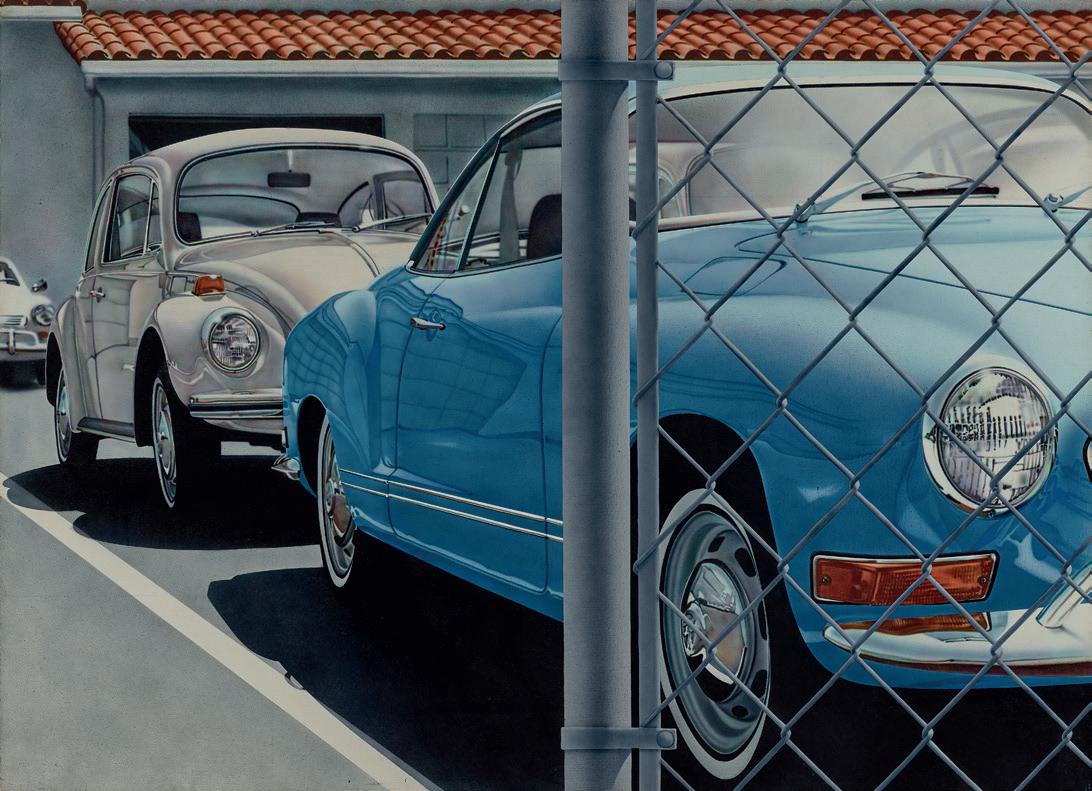
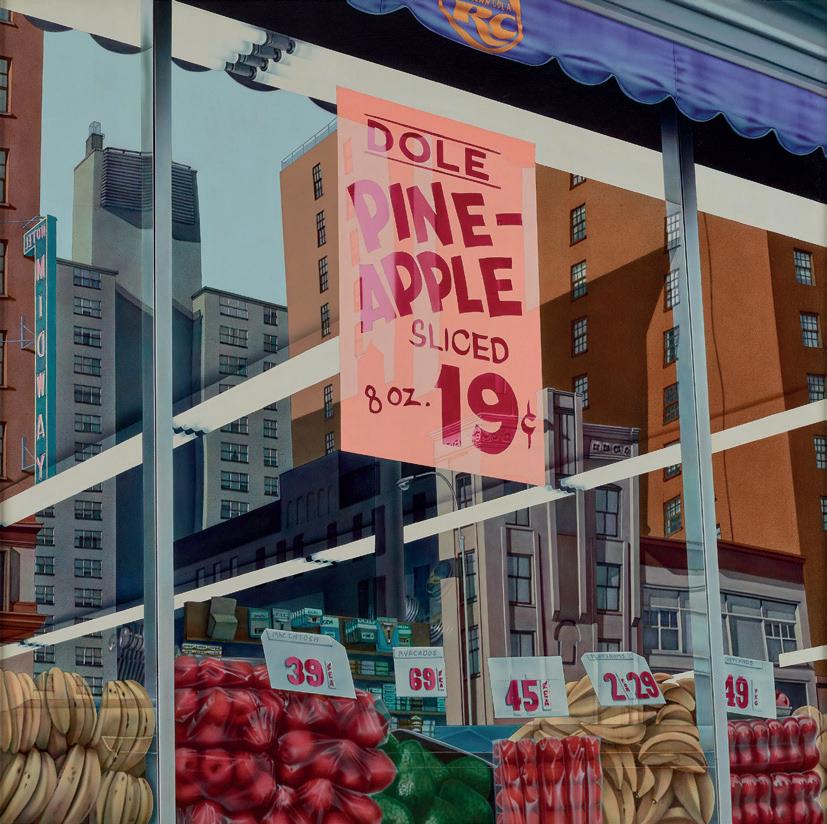
15 Billy’s 1980
oil on canvas, 124.5 × 167.6 cm
16 Old Crow 1983 oil on canvas, 117.2 × 152.4 cm
17 Private Parking III 1971
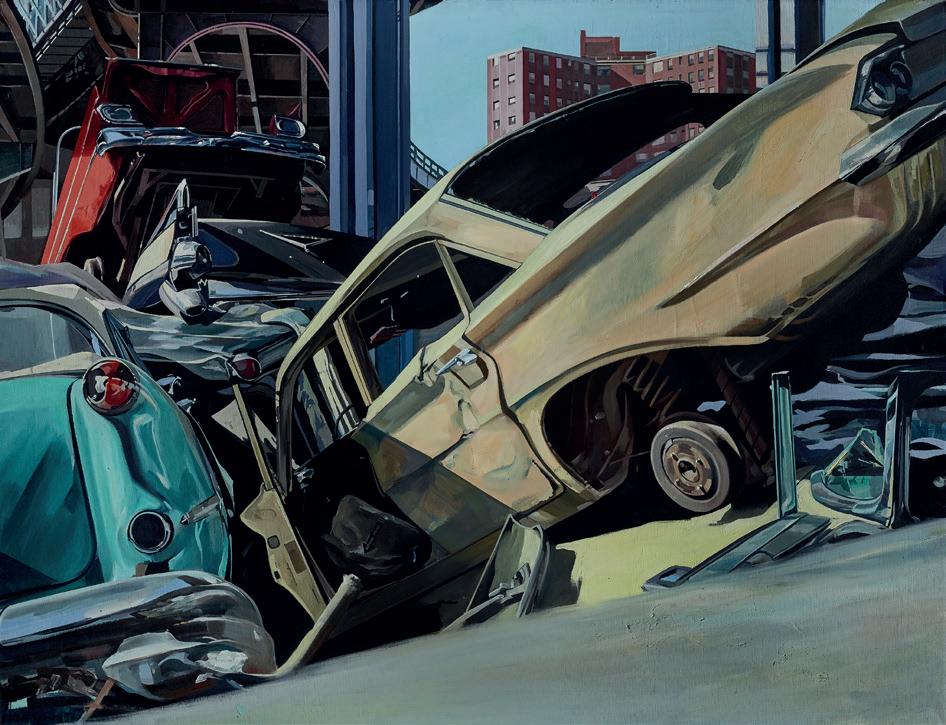
acrylic on canvas, 121.9 × 167.6 cm
18 Bananas, Apples, Avocados, Tomatoes; Supermarket Window III 1973
acrylic on canvas, 127 × 127 cm
19 Auto Graveyard 1968
oil on canvas, 101.6 × 132.1 cm
20 Ticket Window 1969 oil on canvas, 77.2 × 52 cm
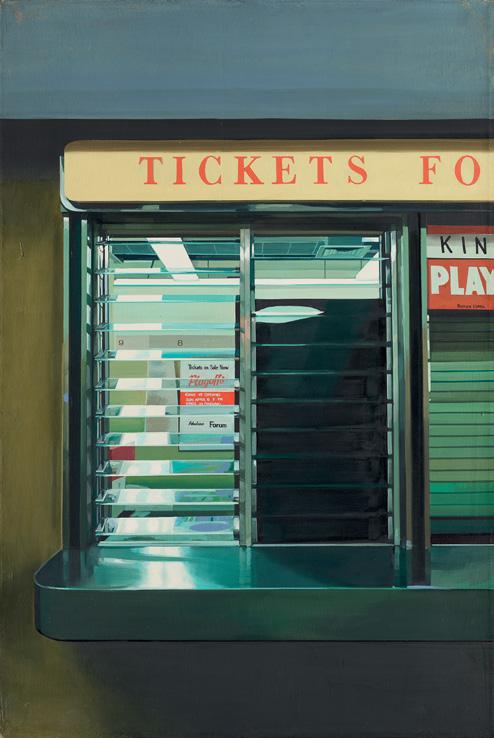
21 Circus, Circus 1971 oil on paper, mounted on wooden board, 43.2 × 61 cm

RALPH GOINGS
22 Burger Chef 1970
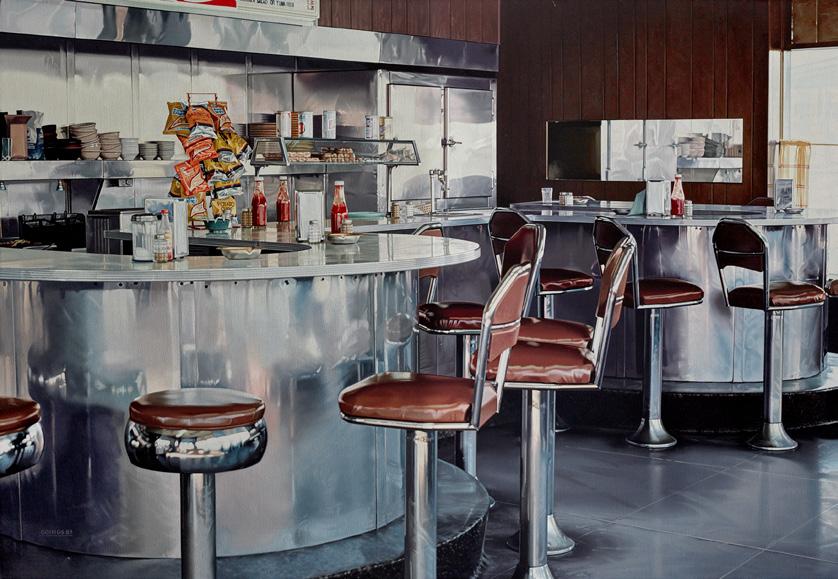
oil on linen, 101.6 × 142.2 cm
23 White Ford Overdrive 1970
oil on canvas, 114.3 × 160 cm
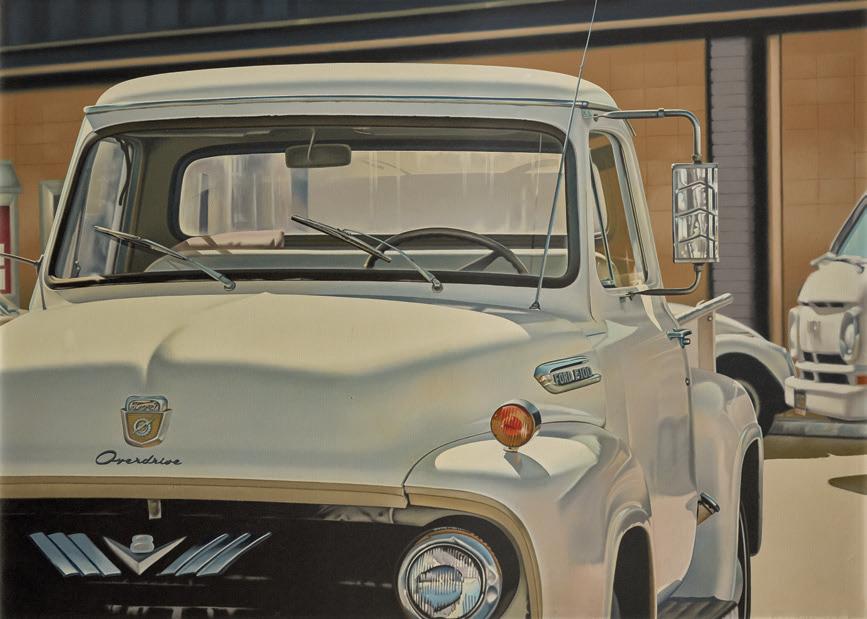
24 Still Life (Color Pick) 1982
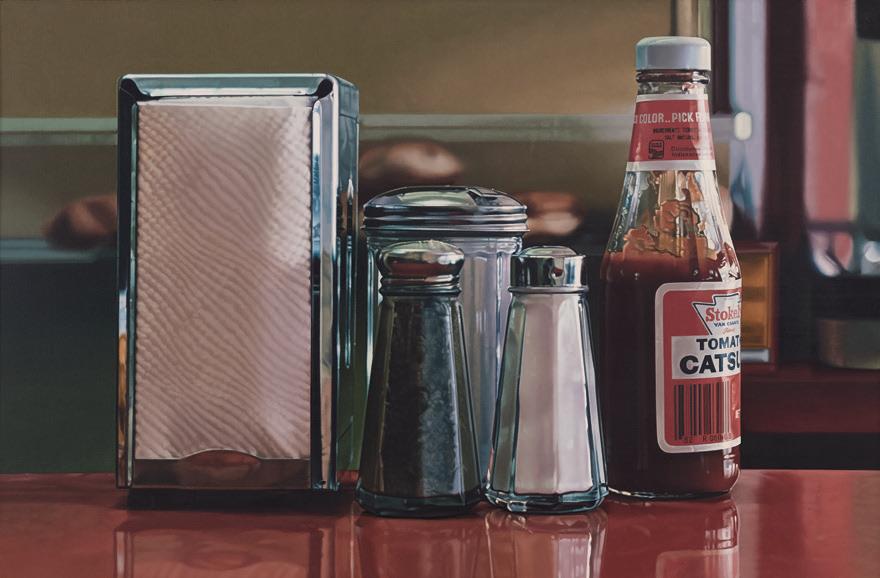
oil on canvas, 101.6 × 152.4 cm
25 Richmond Diner 1983

oil on canvas, 101.6 × 147.3 cm
RON KLEEMANN
26 Lightning Strikes Twice, Twice 1971
acrylic on canvas, 177.8 × 177.8 cm
27 Harry Loves Maxine The American Way 1973
acrylic on canvas, 153 × 153 cm
28 20/20 1990
oil on canvas, 111.8 × 152.4 cm
RICHARD MCLEAN
29 Jack Magill’s Bourbon Jet 1981
oil on canvas, 127 × 172.7 cm
30 The Sheik 1983
oil on canvas, 126 × 172.7 cm
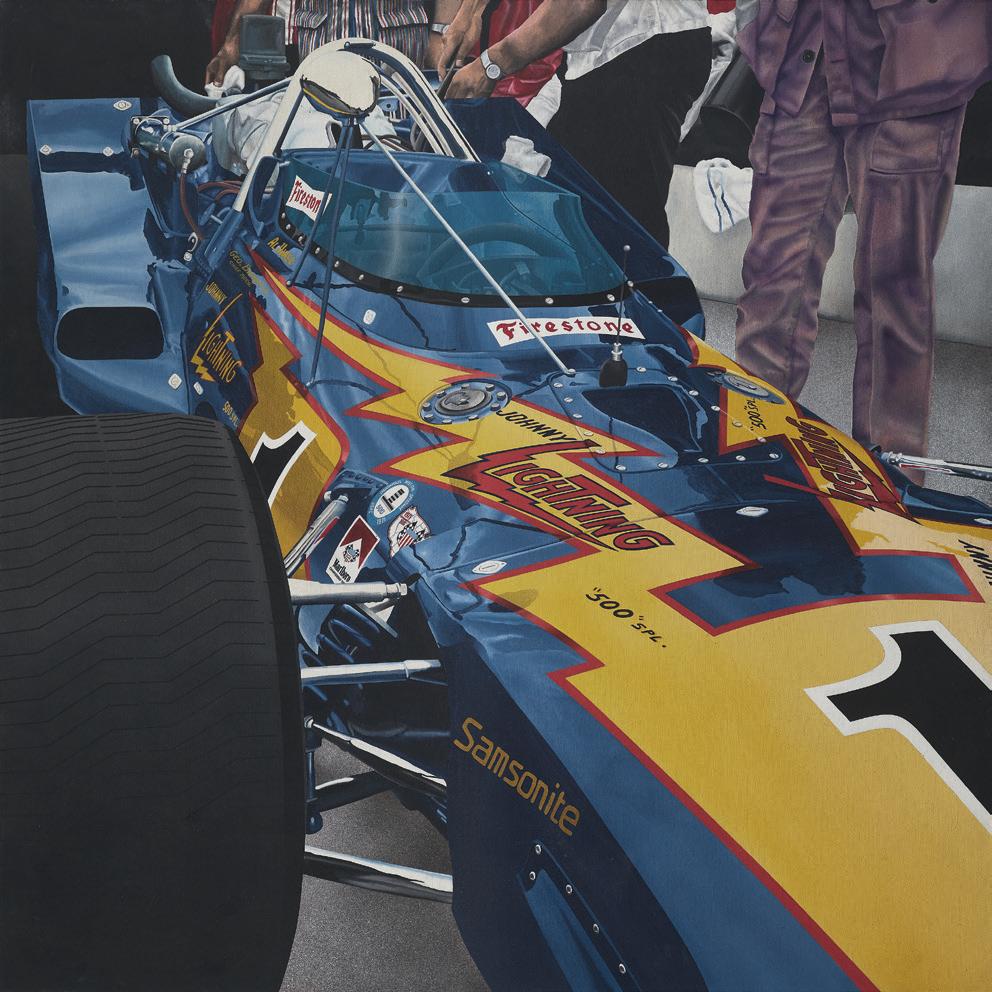

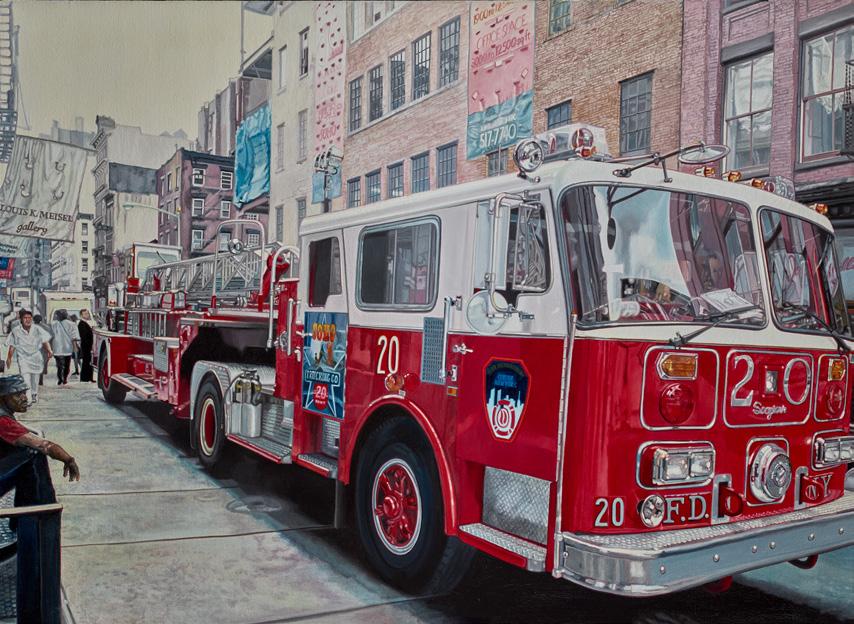
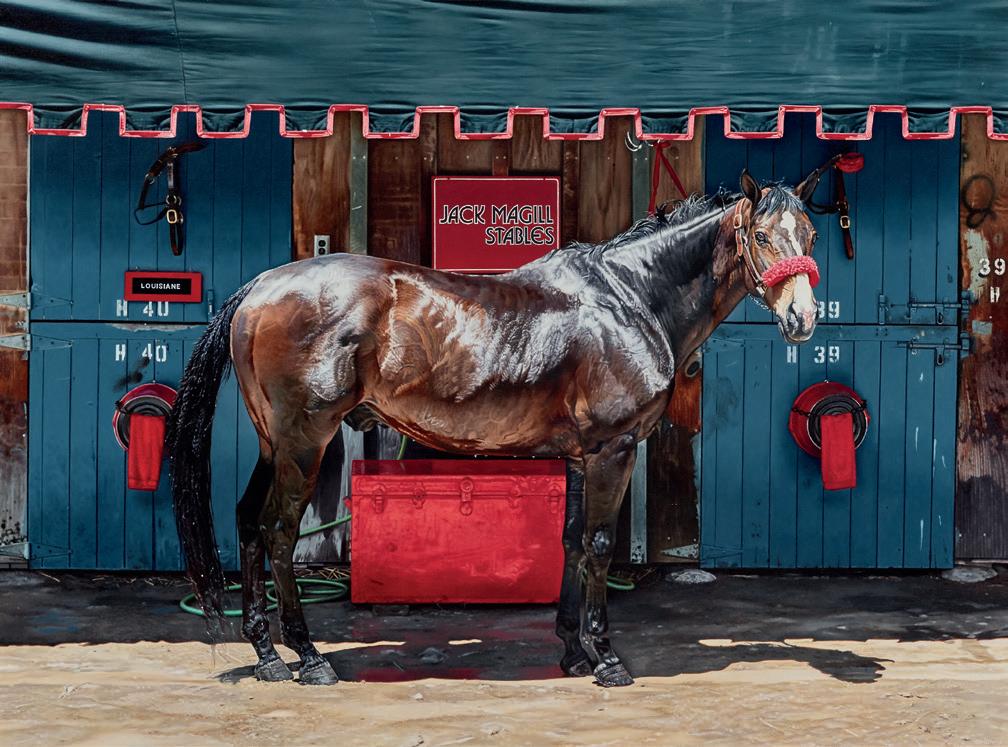
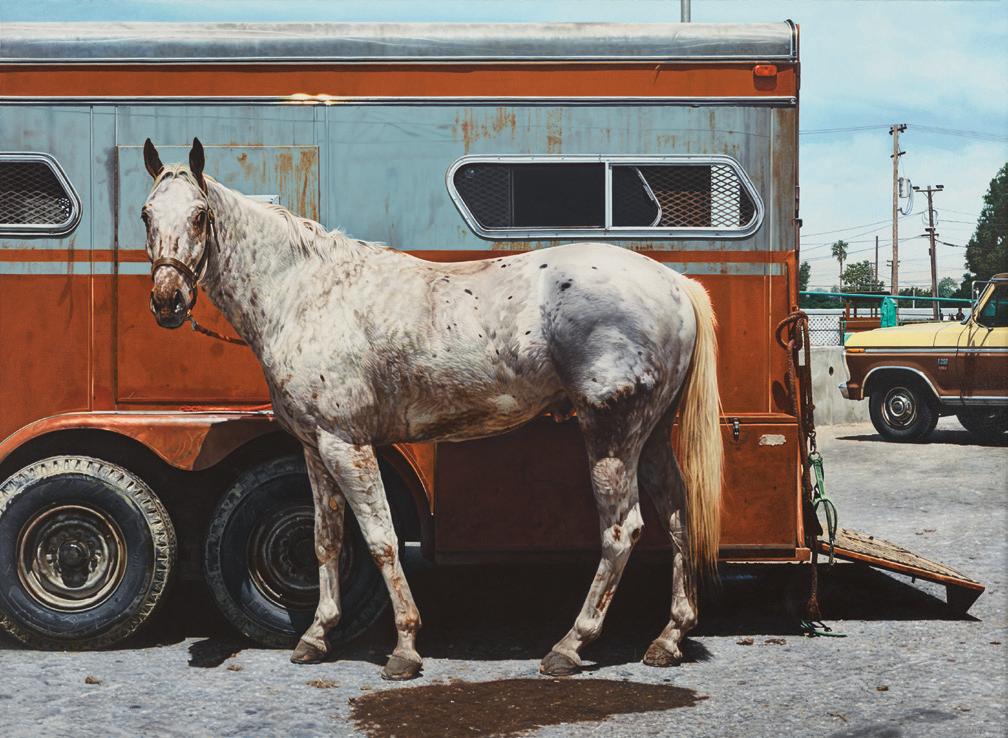
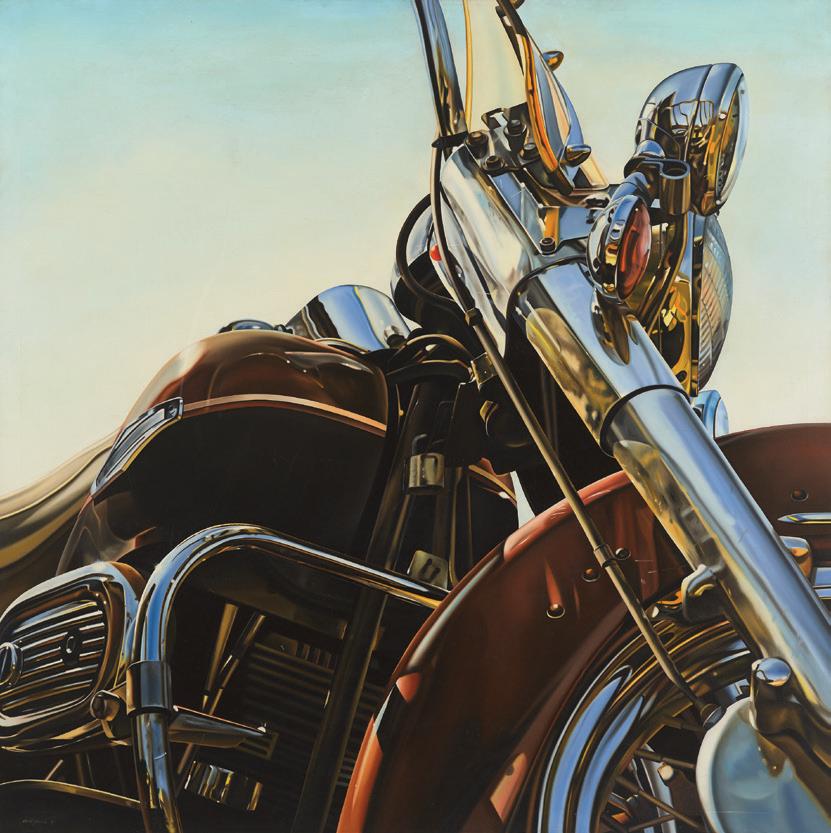
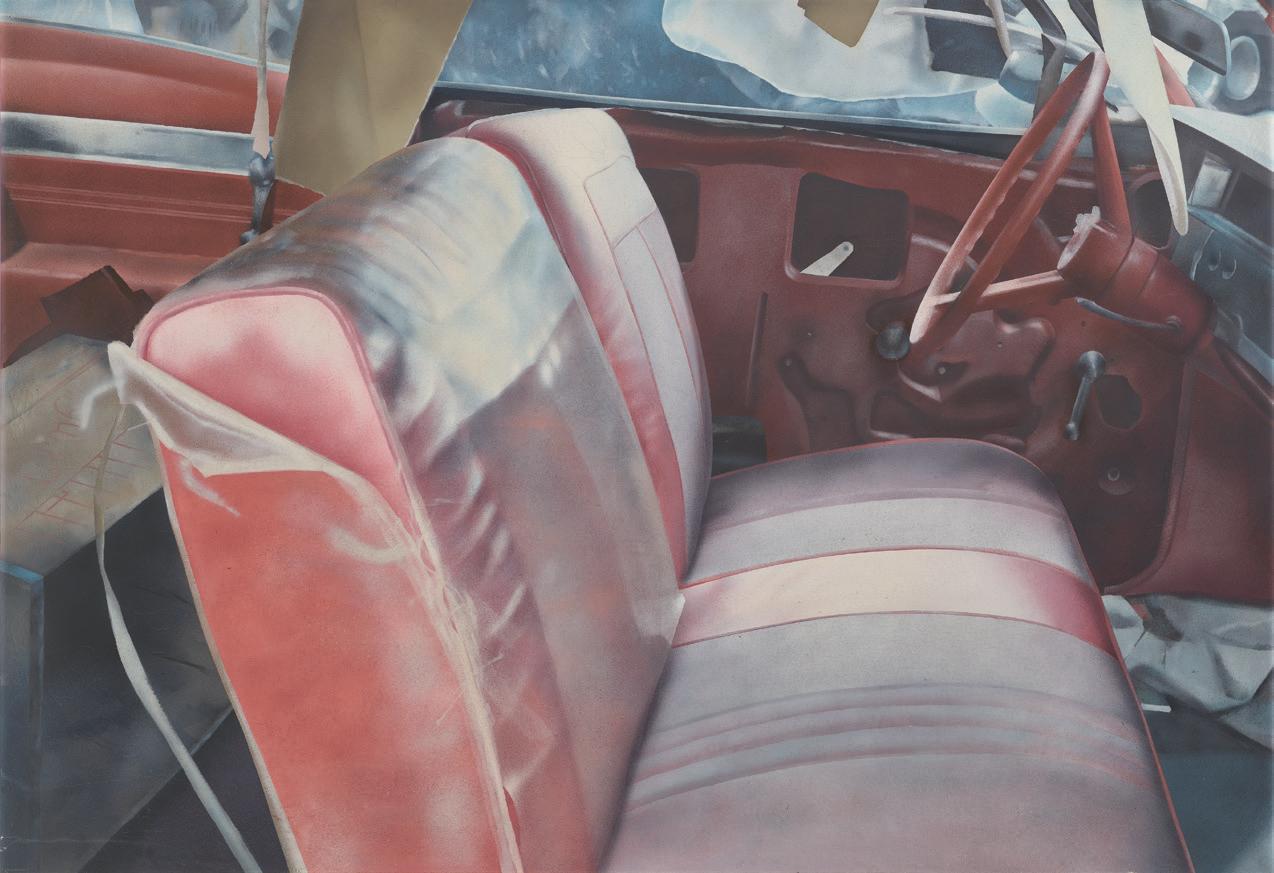
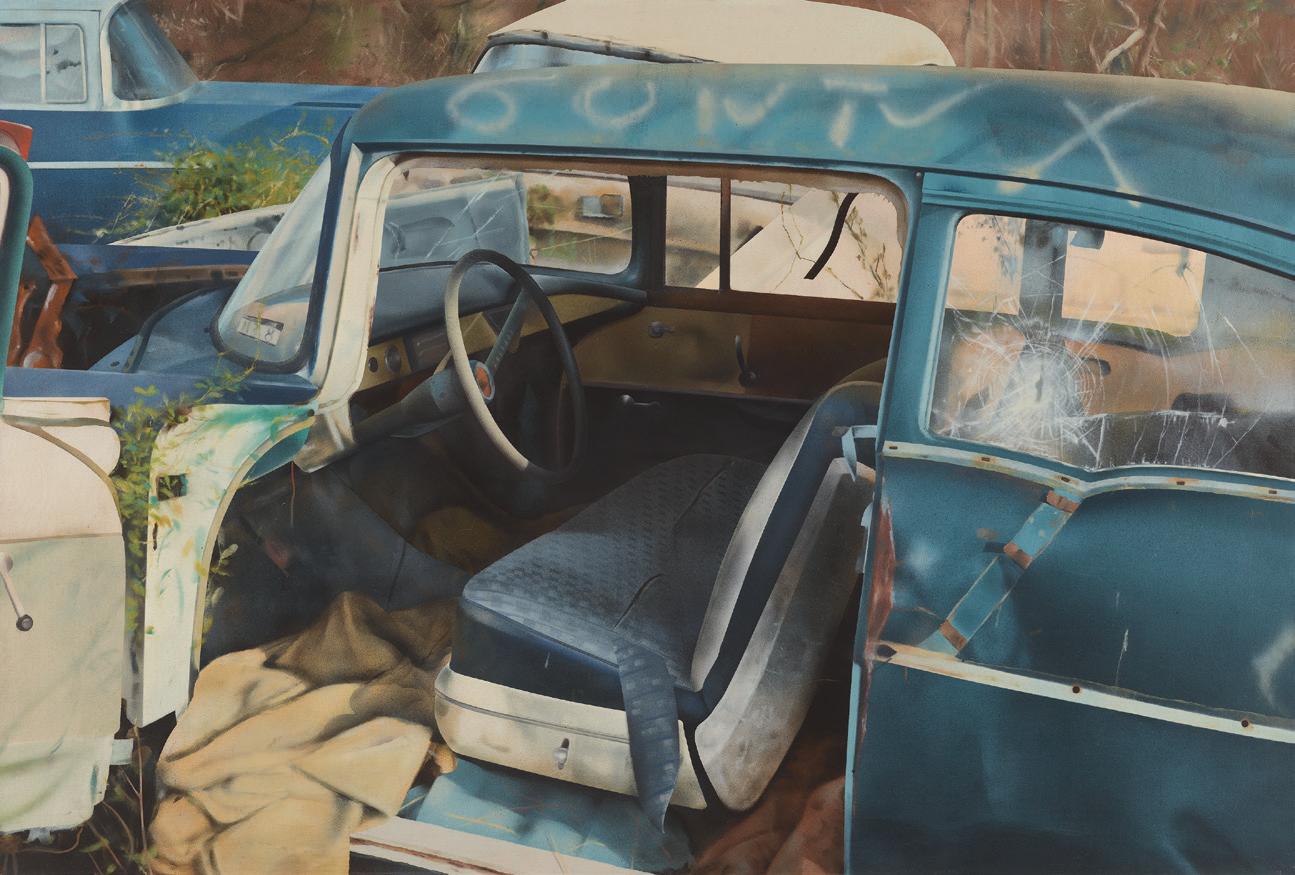
31 Harley Davidson 1971
oil on canvas, 128 × 128 cm
JOHN SALT32 Arrested Vehicle (Silver Upholstery) 1970
oil on canvas, 134.5 × 195.7 cm
33 Arrested Vehicle (Writing on Roof) 1970
acrylic on canvas, 134.8 × 198.9 cm
BEN SCHONZEIT34 Fruit of the Month (F.O.T.M) 1972 acrylic on canvas, 243.8 × 243.8 cm
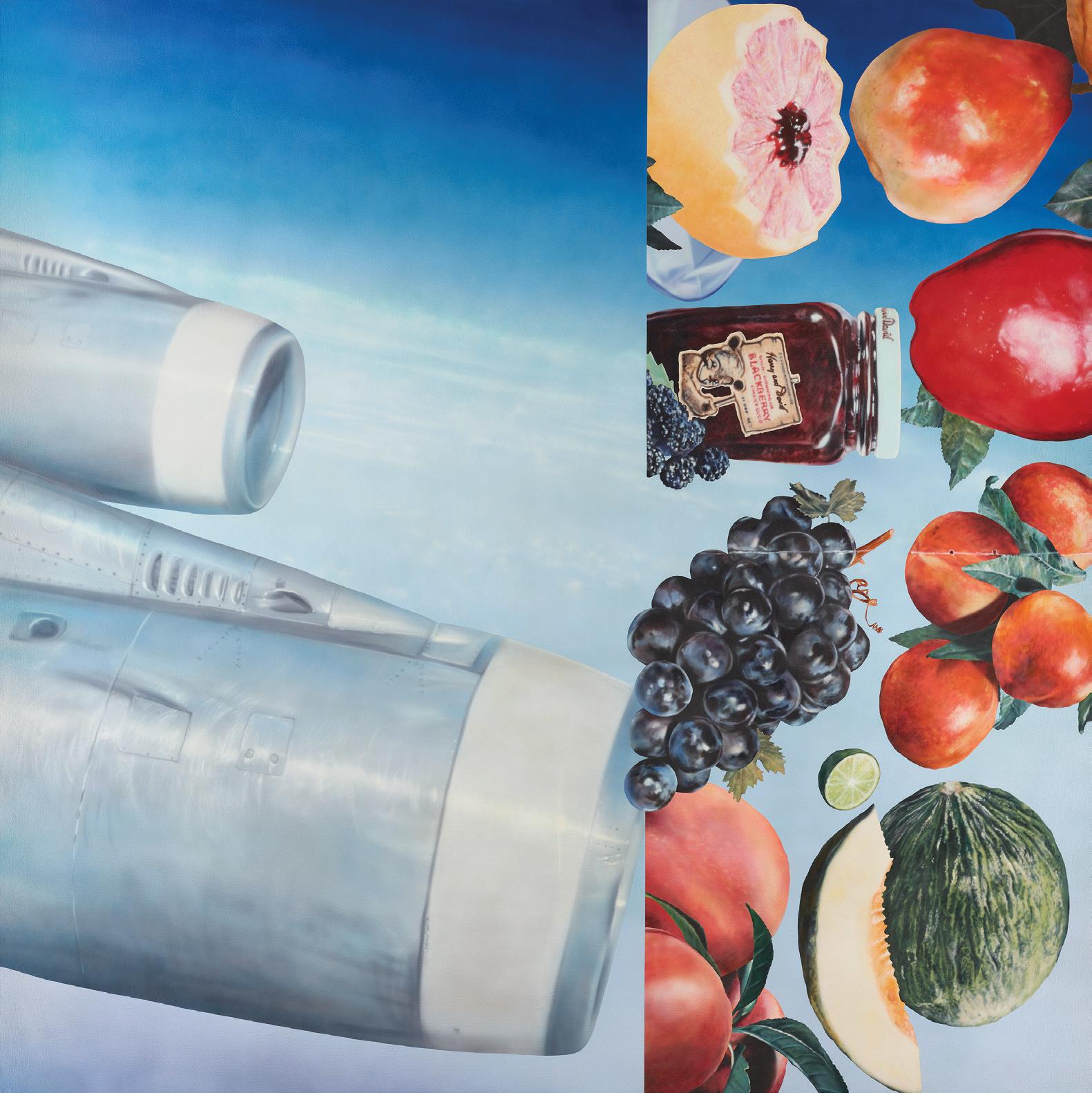

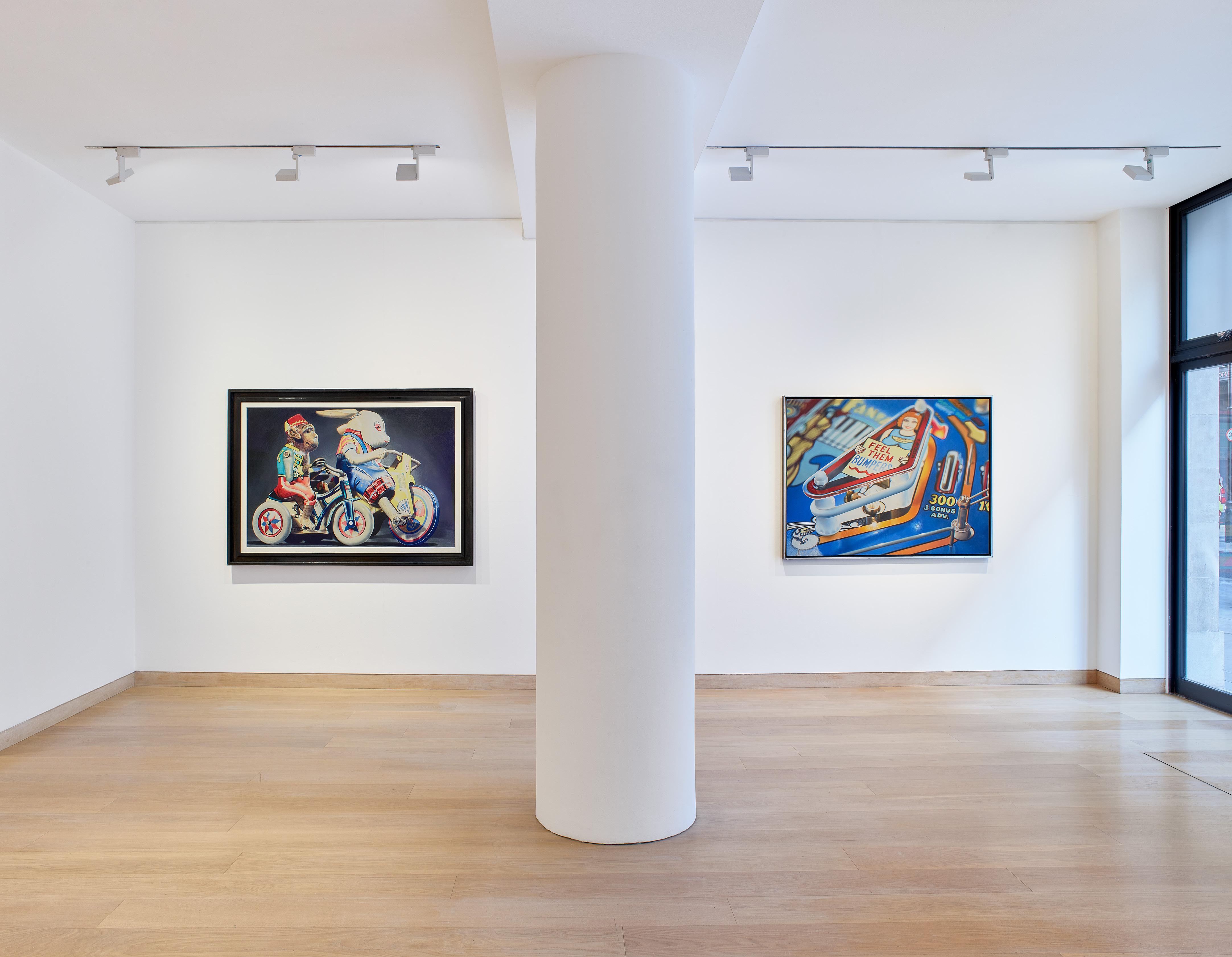
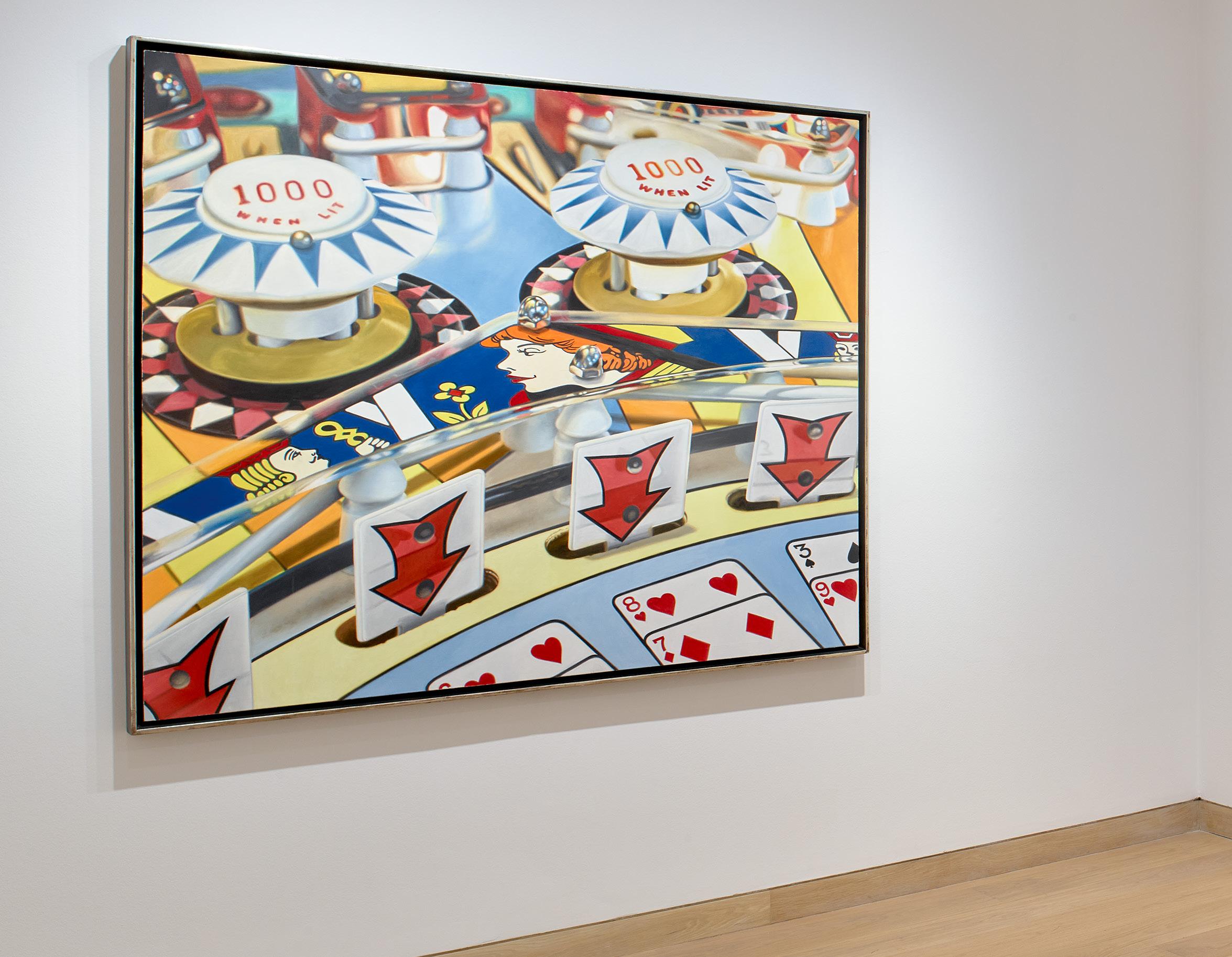
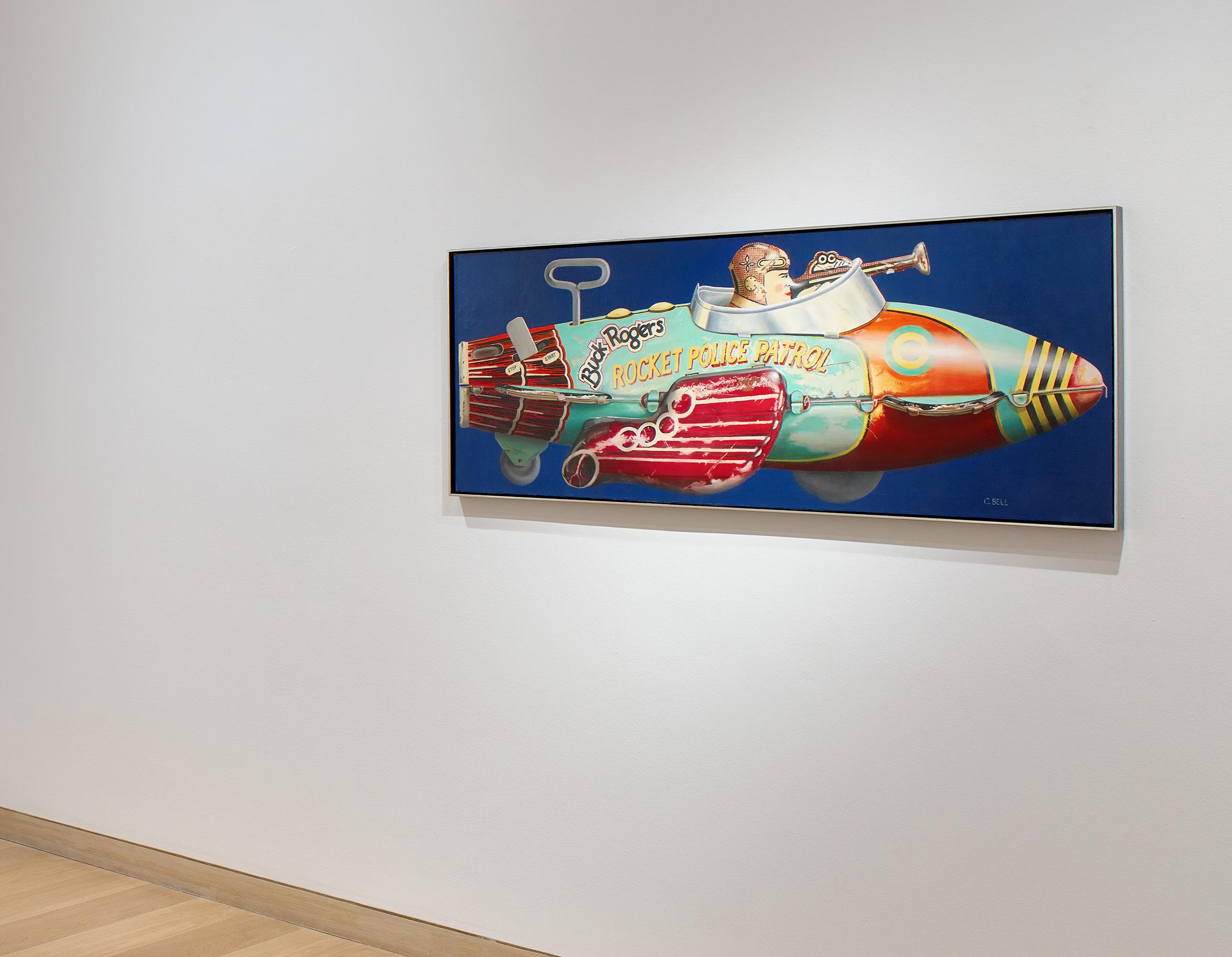
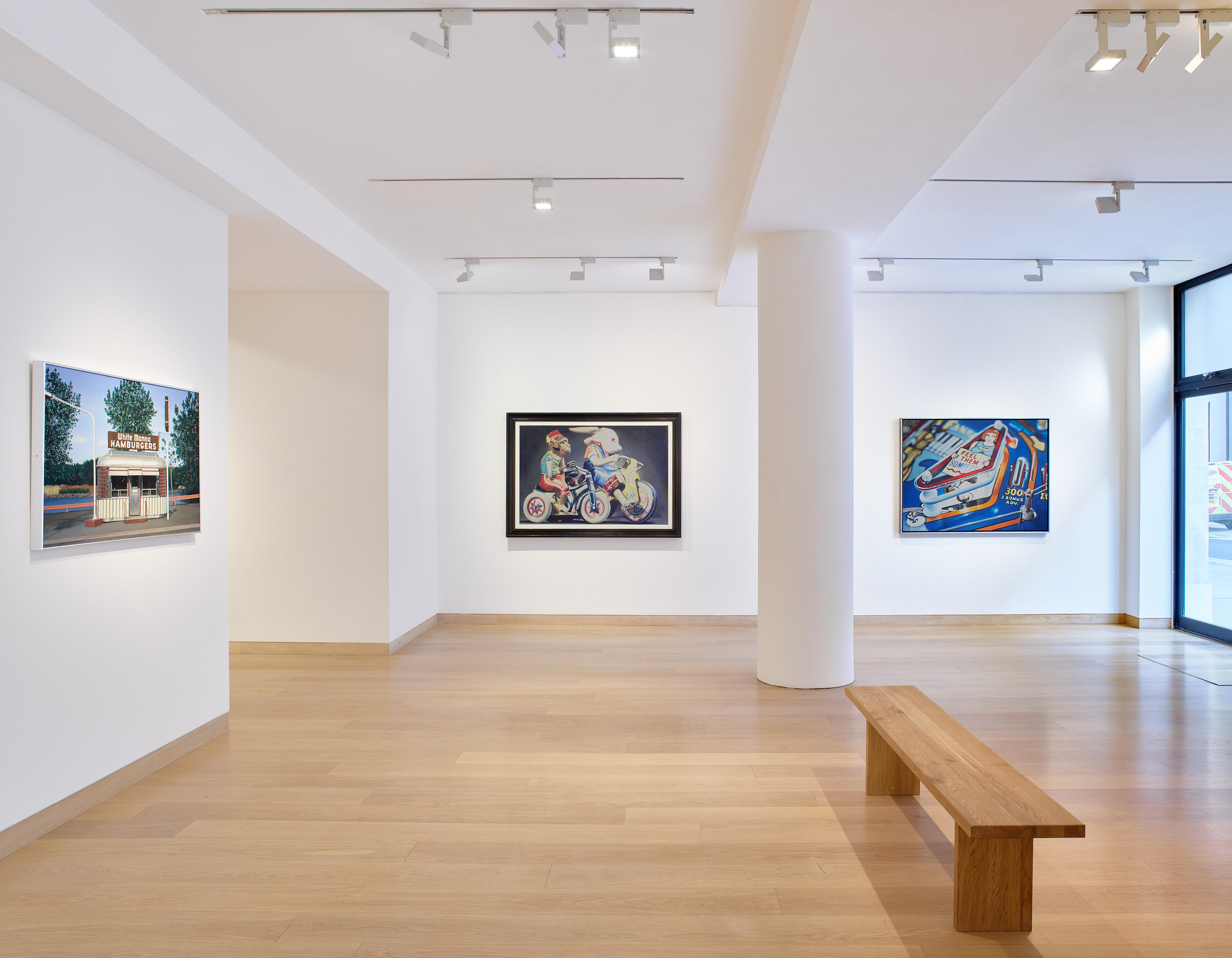
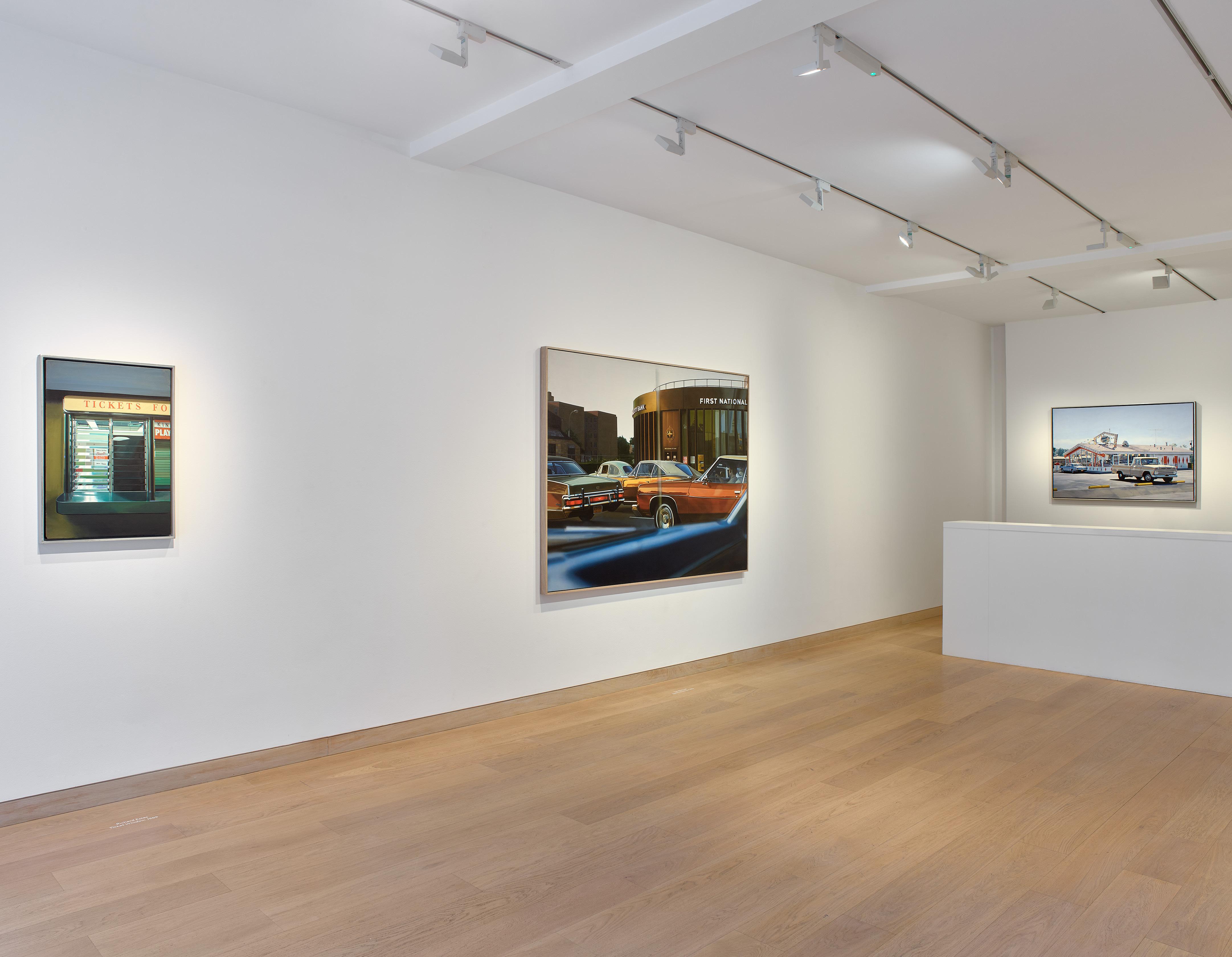
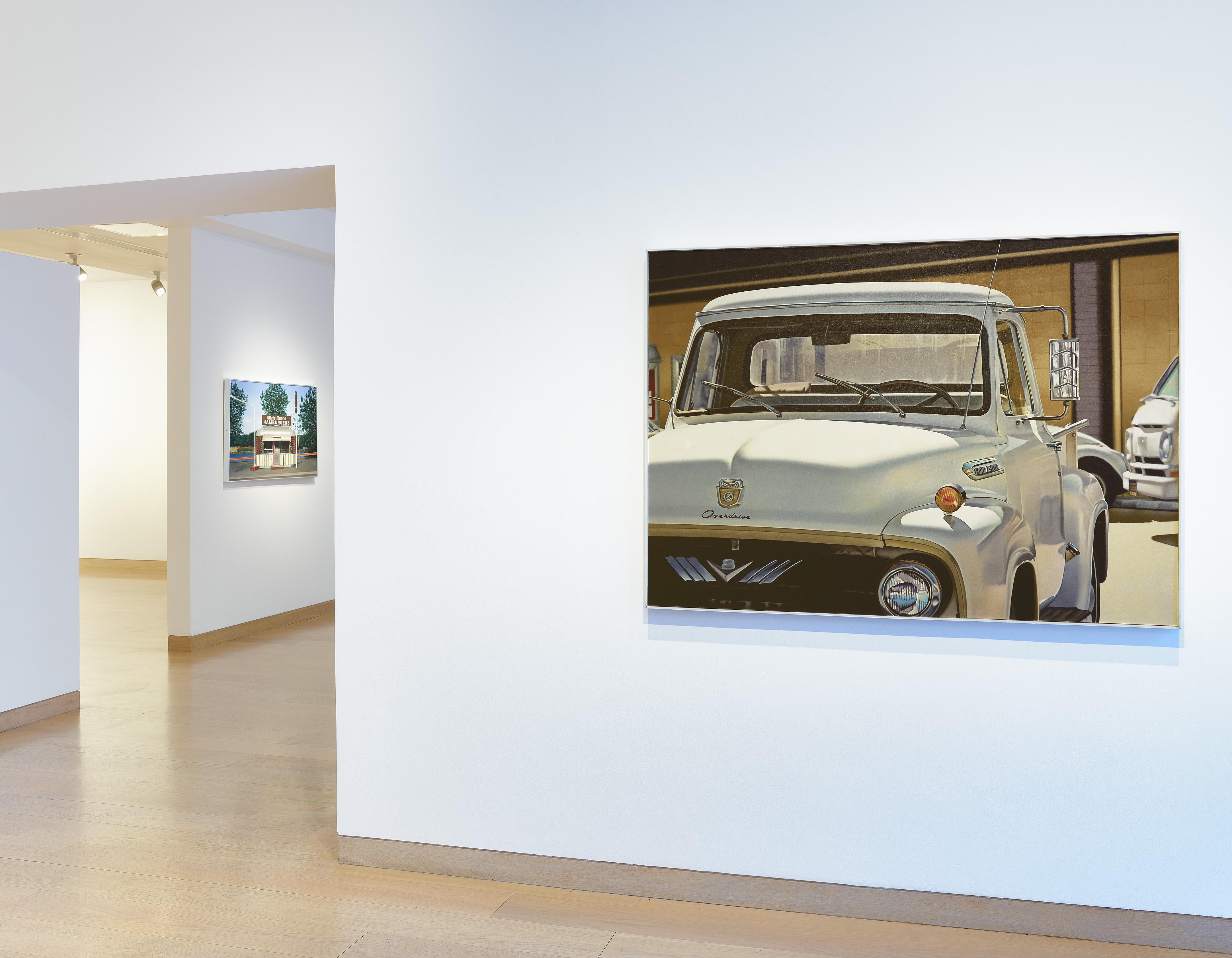
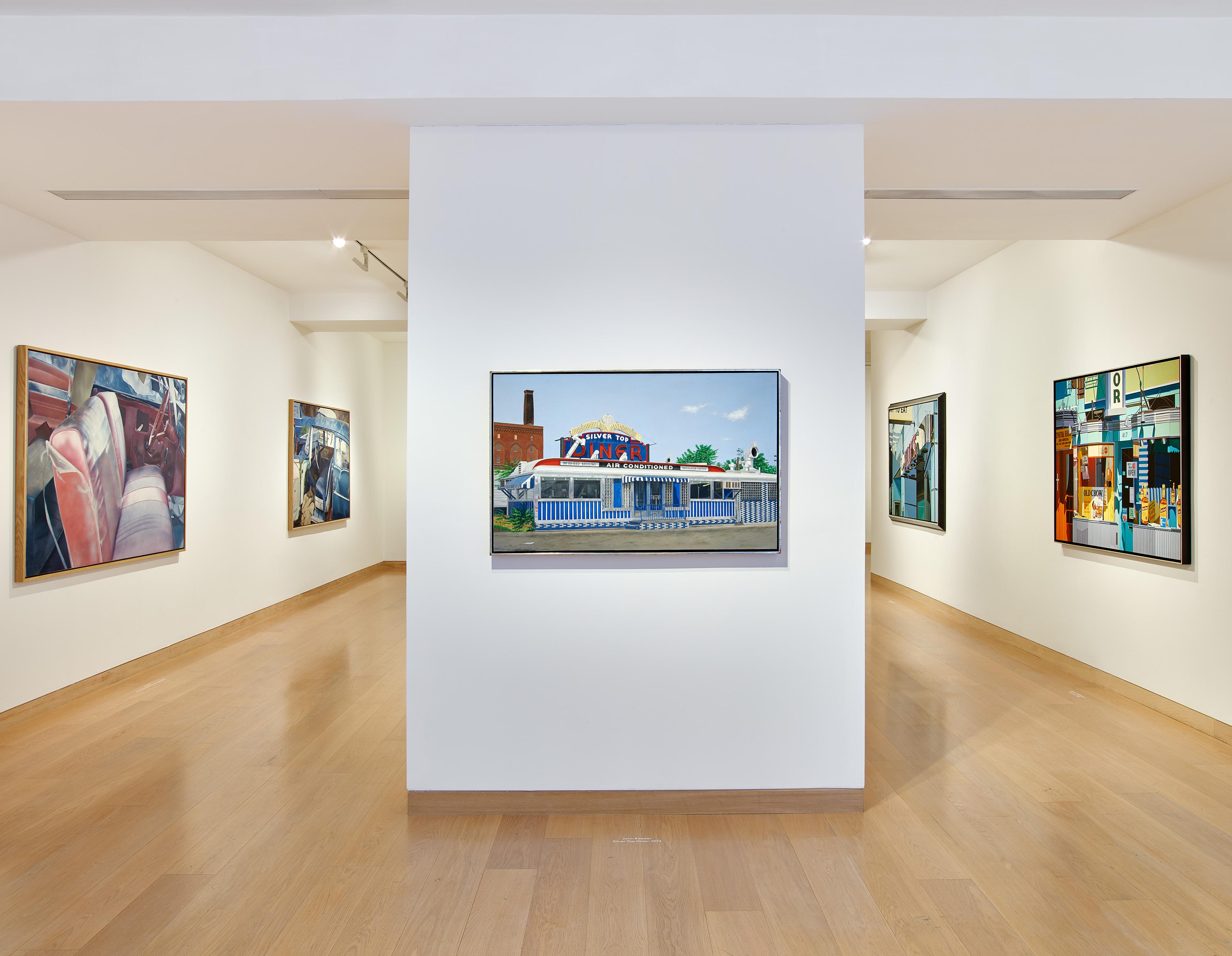
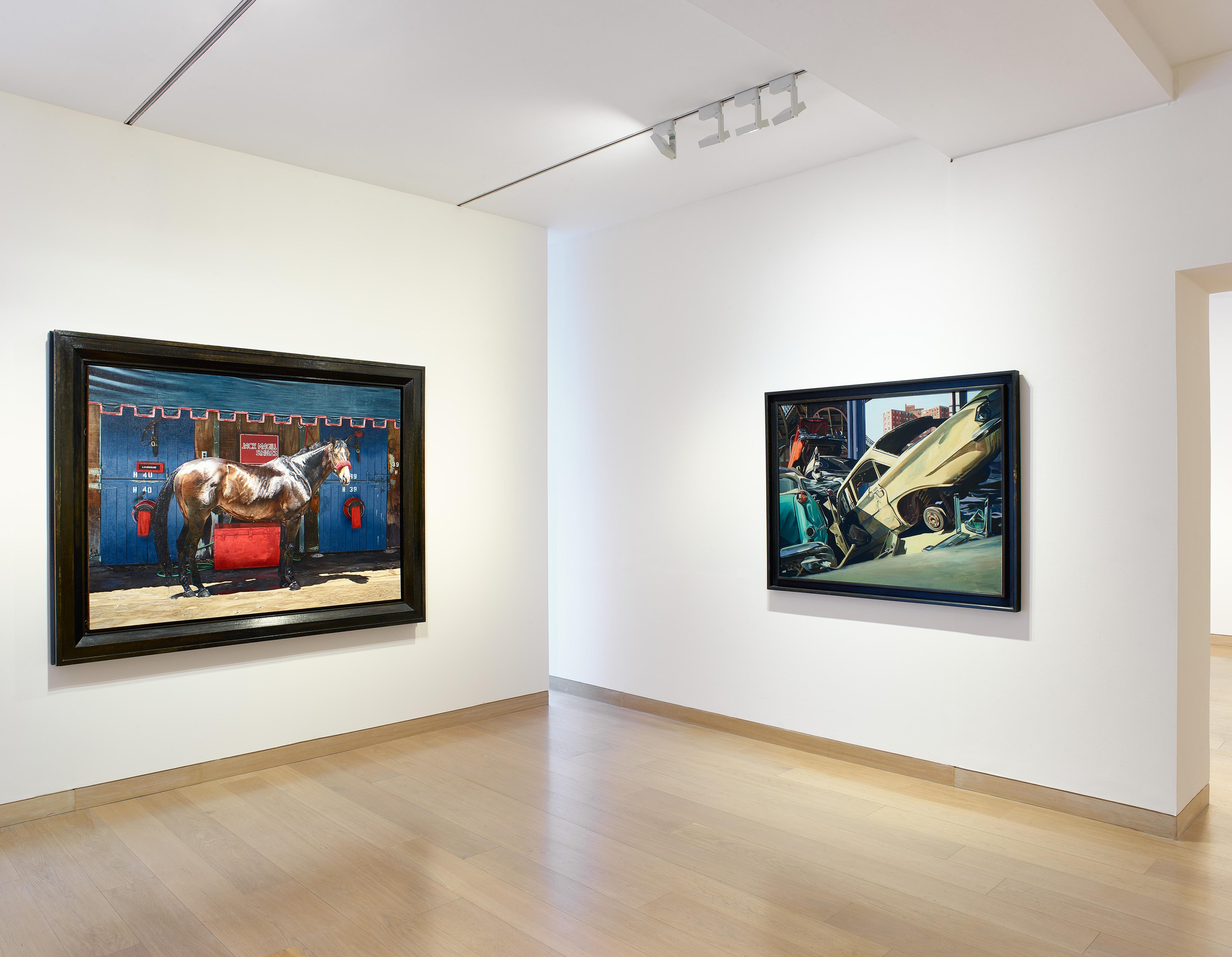
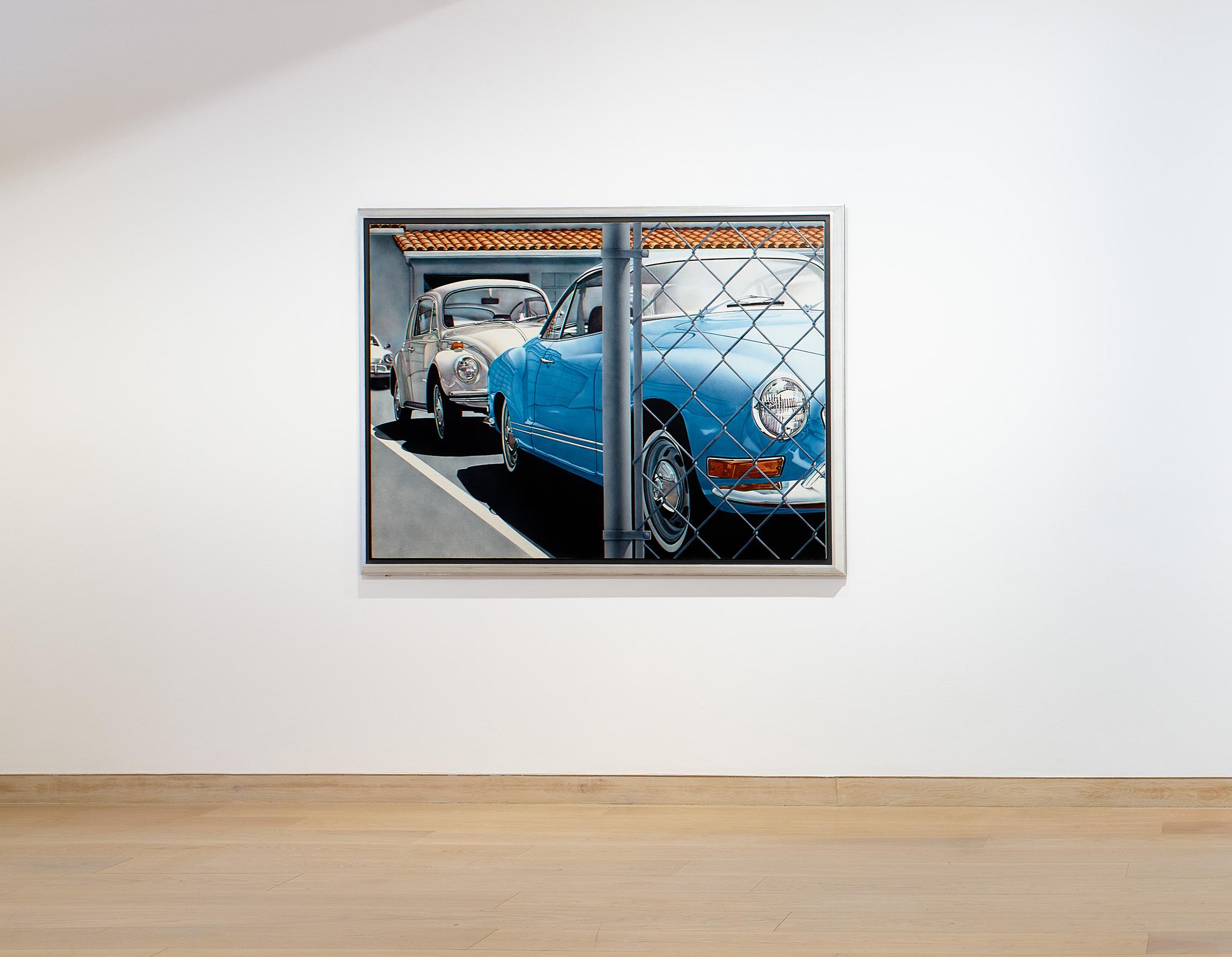
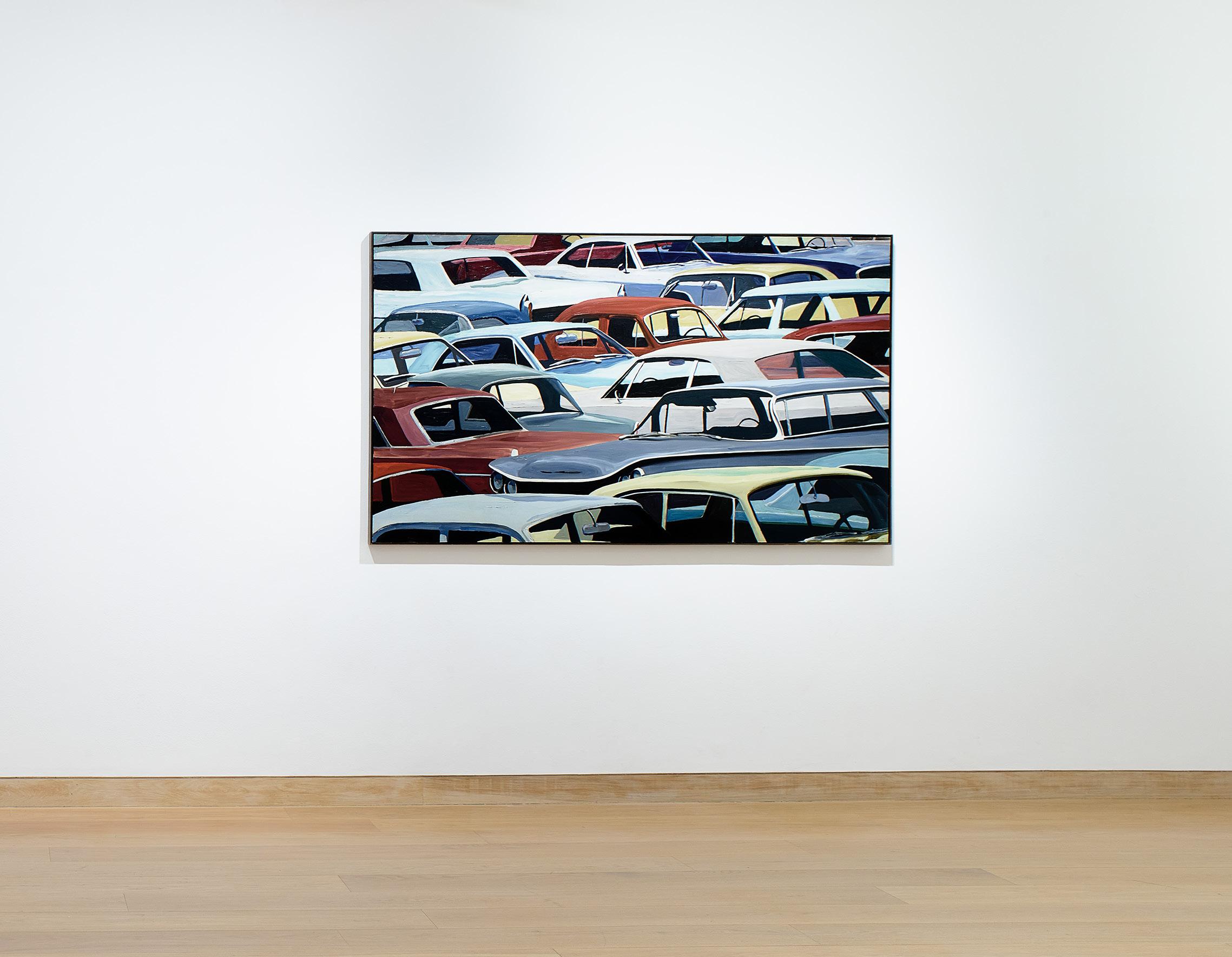
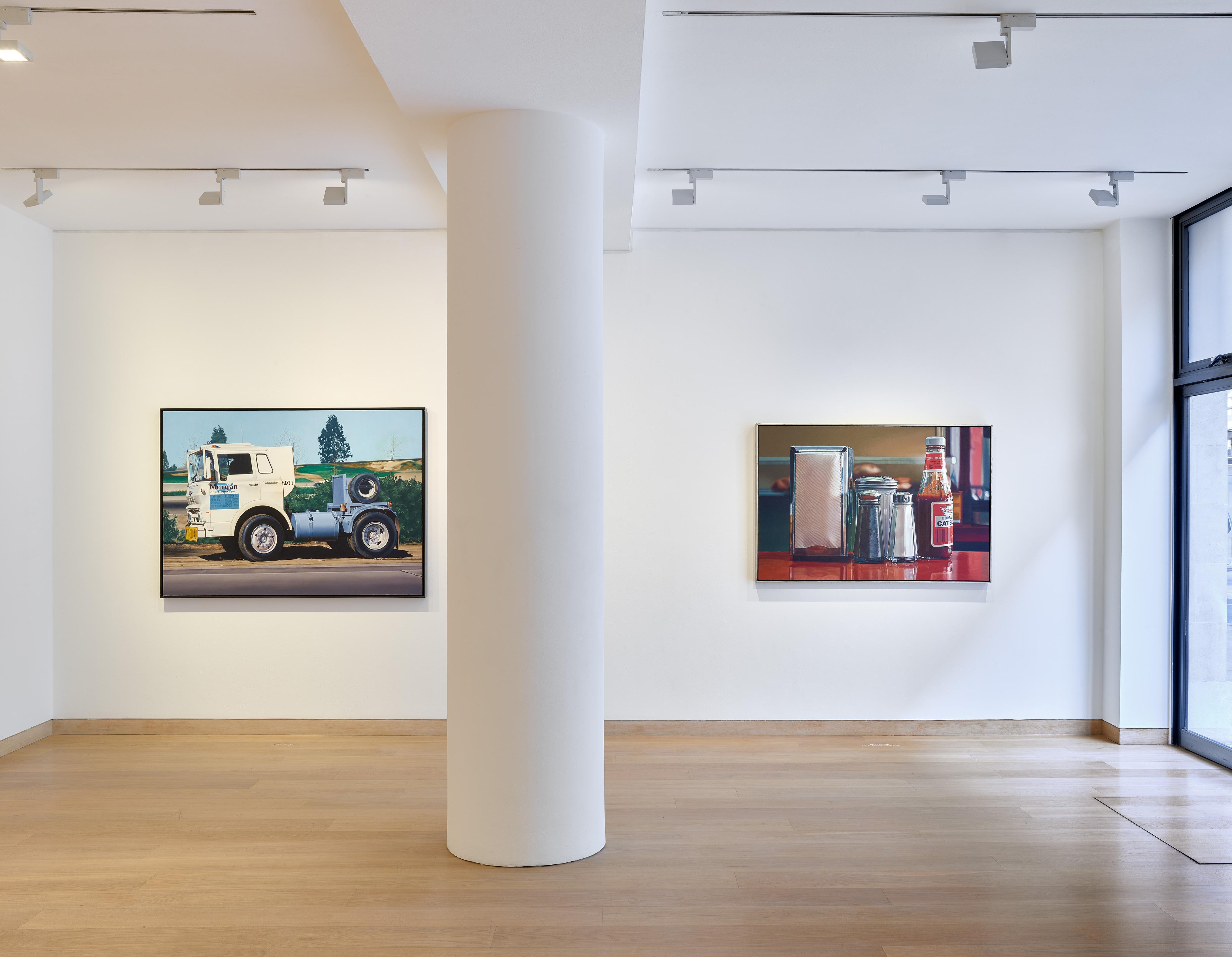

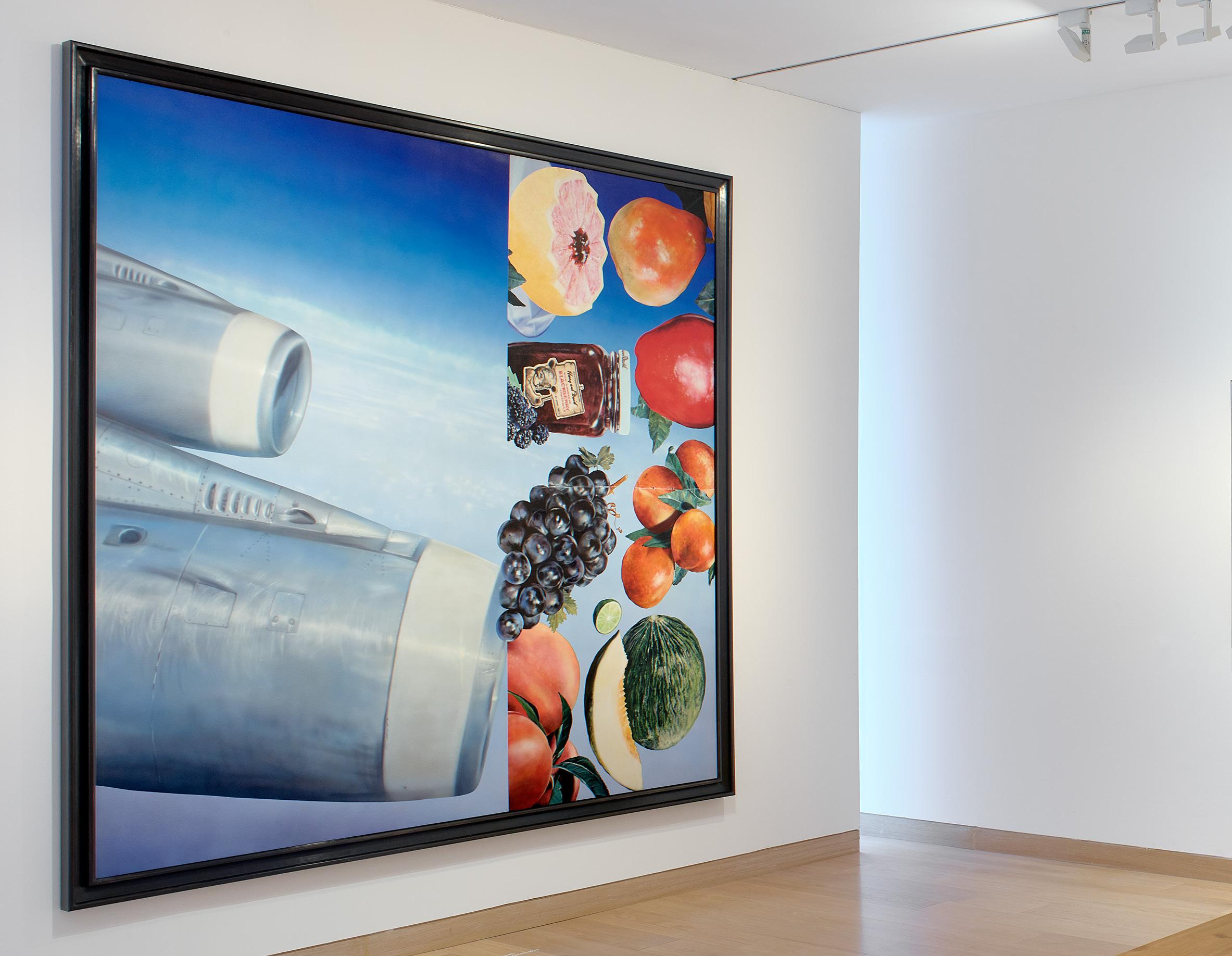
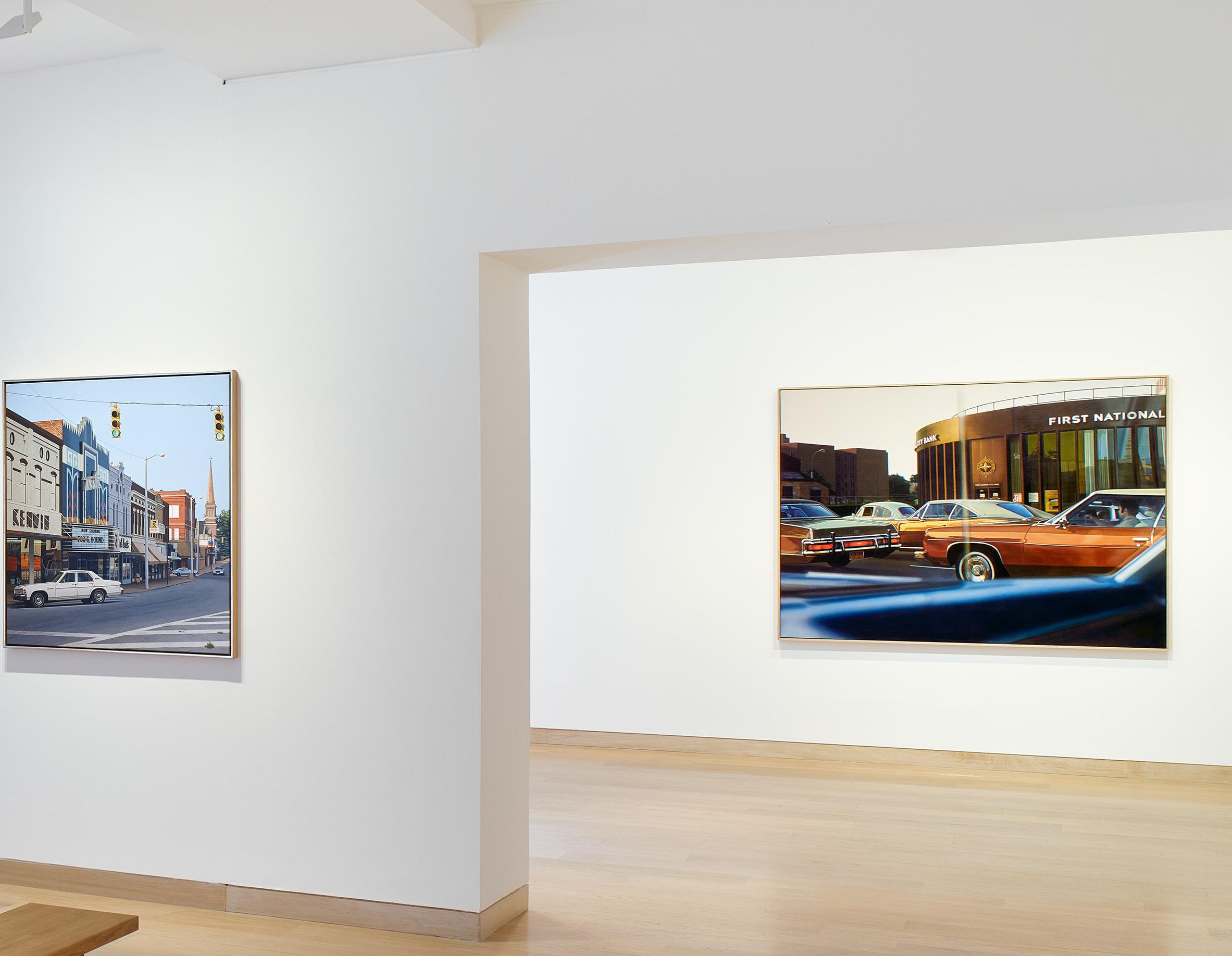
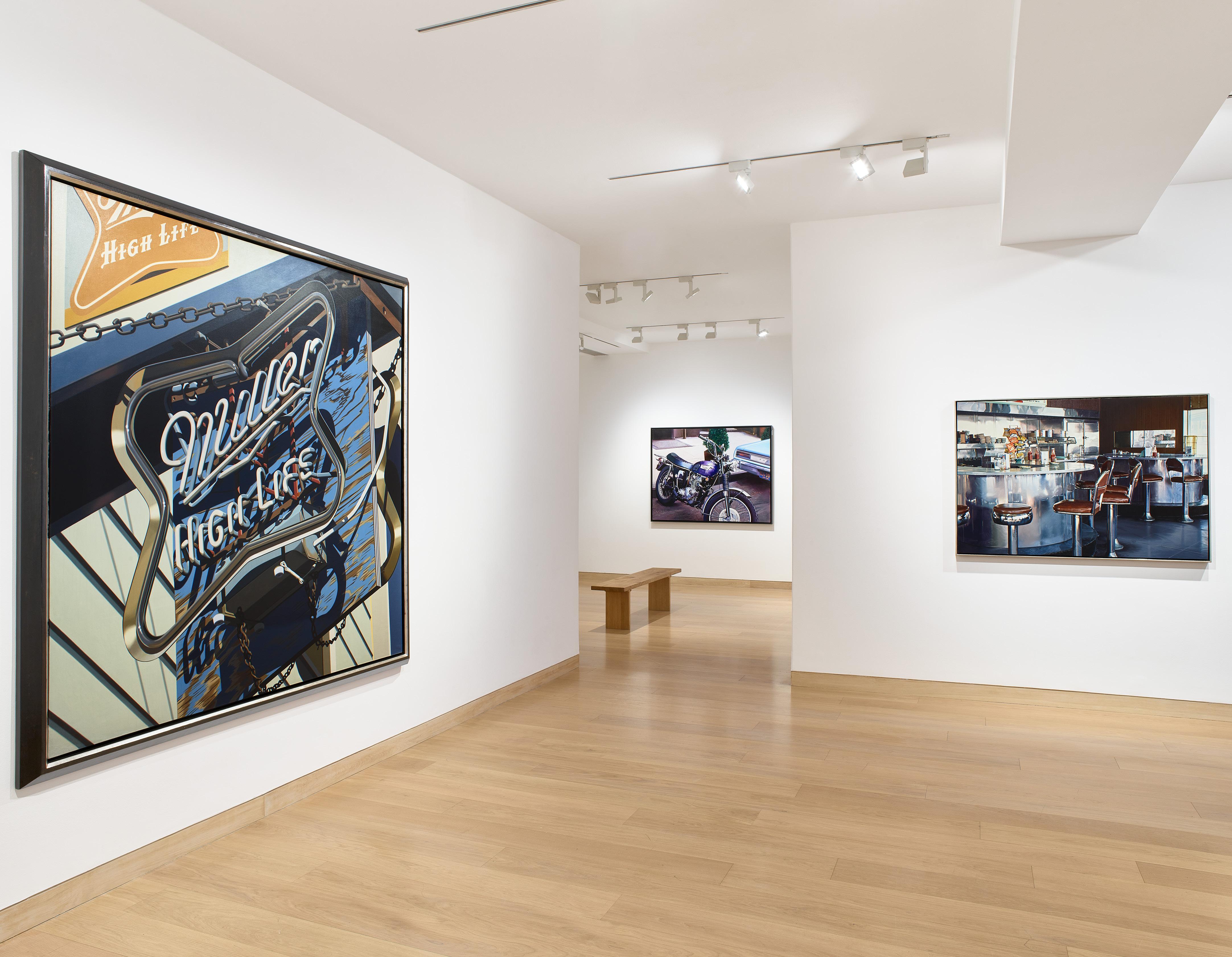
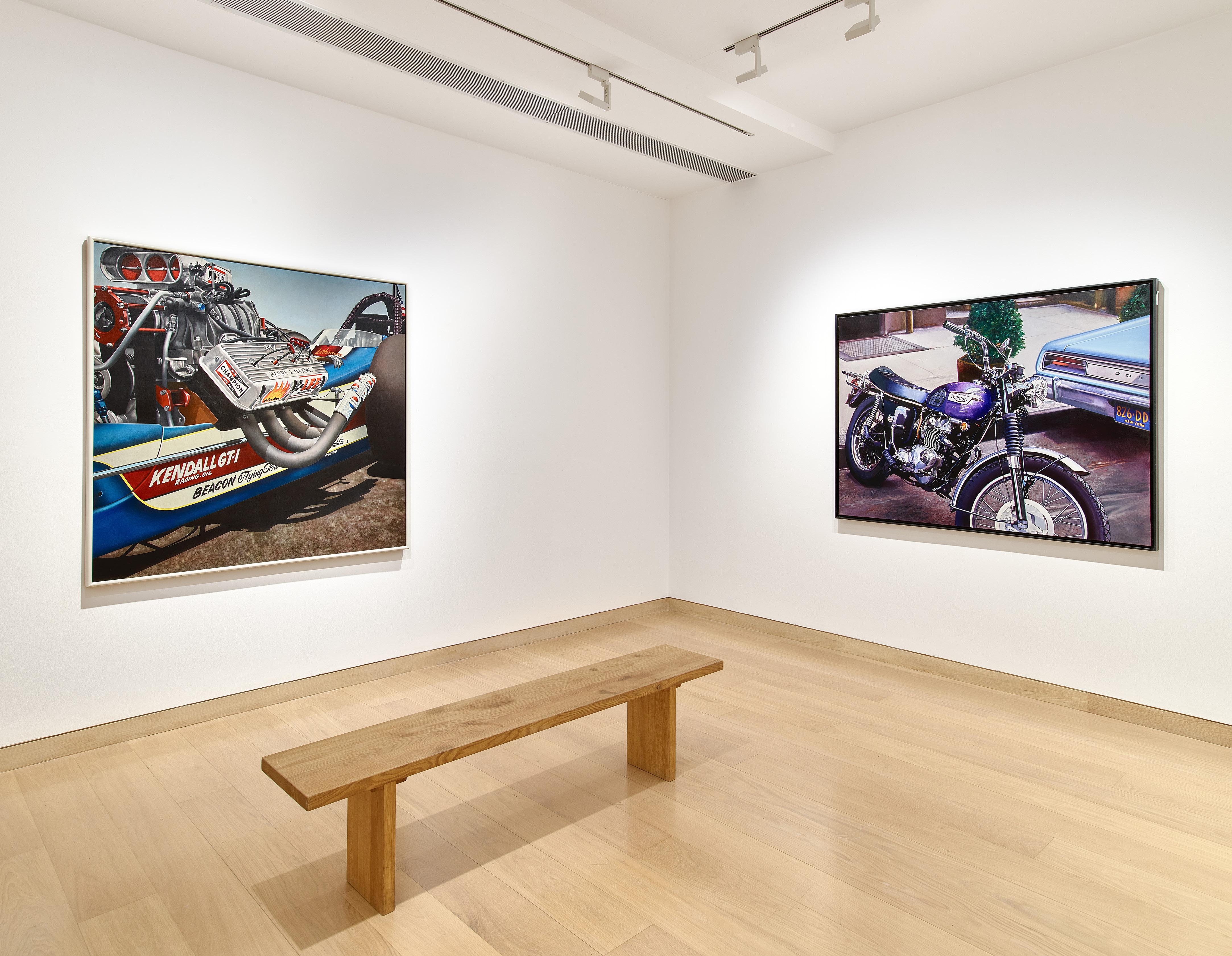
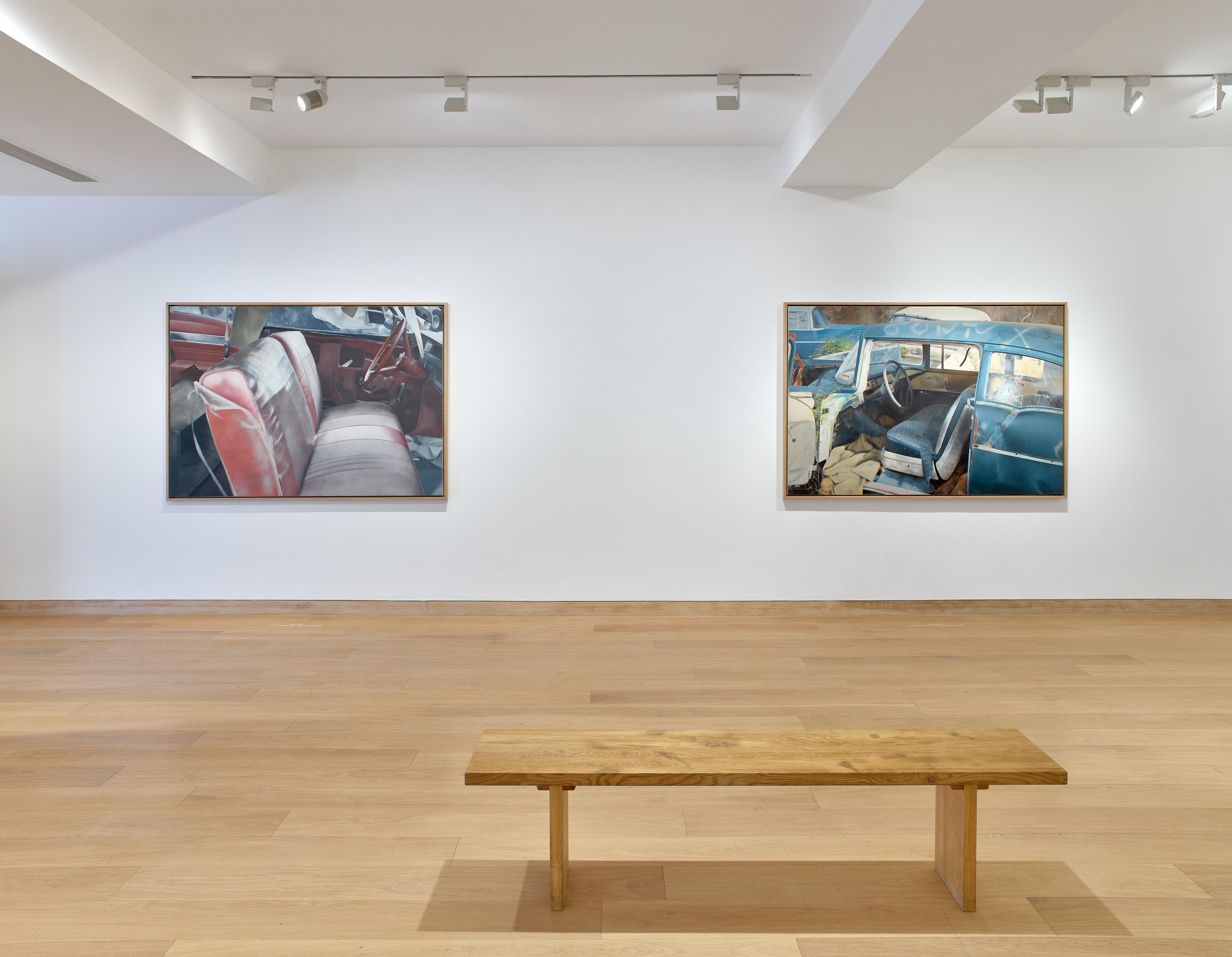

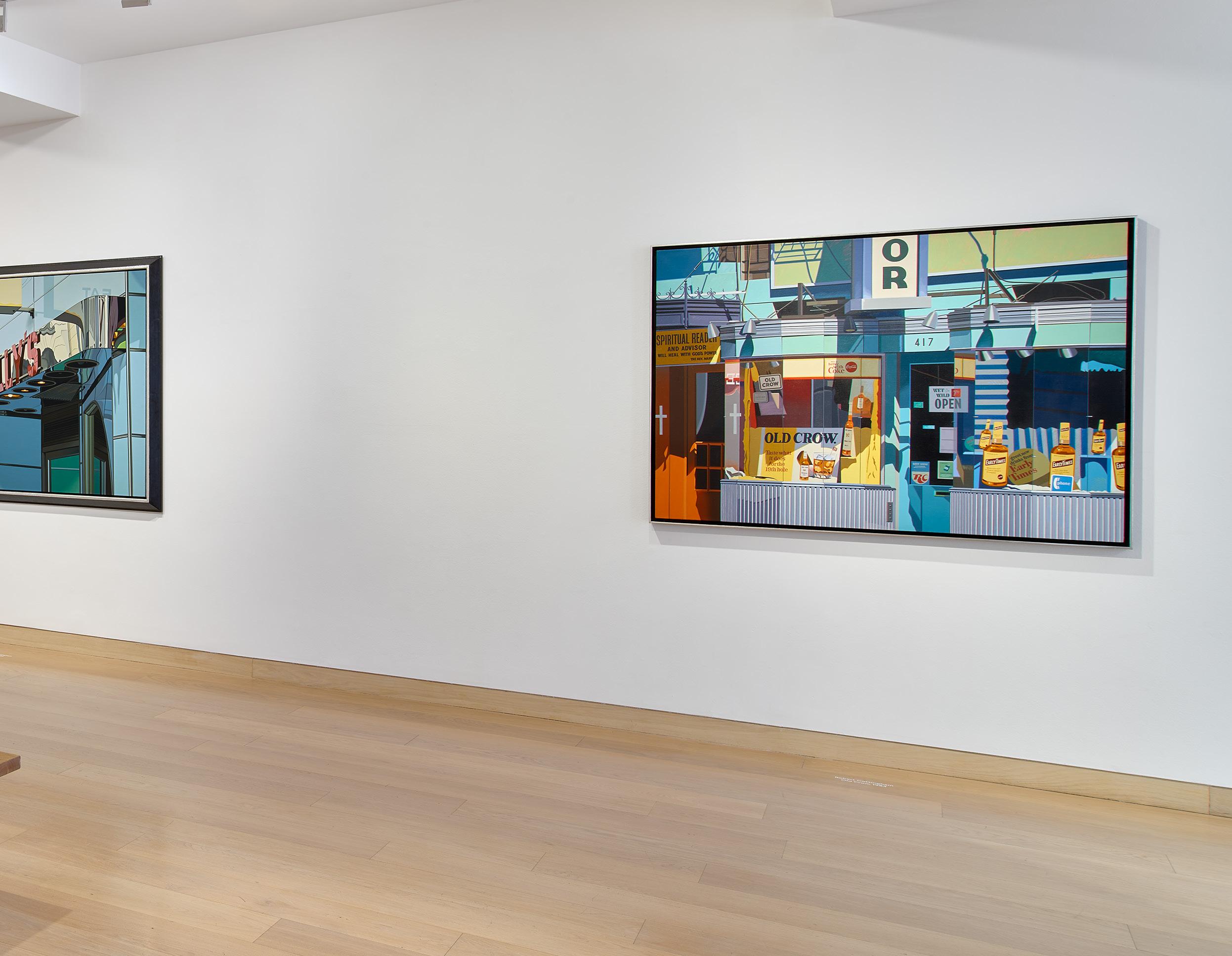
Paintings by the Photorealist artists included here are held in many prestigious institutional collections, including but not limited to the following:
Akron Art Museum, Akron, Ohio
Butler Institute of American Art, Youngstown, Ohio
Toledo Museum of Art, Toledo, Ohio
Art Institute of Chicago, Chicago, Illinois
Art Museum of Southeast Texas, Beaumont, Texas
Boca Raton Museum of Art, Boca Raton, Florida
Crystal Bridges Museum of American Art, Bentonville, Arkansas
D’Amour Museum of Fine Arts, Springfield, Massachusetts
Des Moines Art Center, Des Moines, Iowa
Detroit Institute of Arts, Detroit, Michigan
Flint Institute of Arts, Flint, Michigan
Farnsworth Art Museum, Rockland, Maine
Fort Wayne Museum of Art, Fort Wayne, Indiana
Indianapolis Museum of Art, Indianapolis, Indiana
High Museum of Art, Atlanta, Georgia
Kemper Museum of Contemporary Art, Kansas City, Missouri
Modern Art Museum of Fort Worth, Fort Worth, Texas
Museum of Contemporary Art, Chicago, Illinois
Museum of Fine Arts, Boston, Massachusetts
American Art Museum, Smithsonian Institution, Washington, DC
Hirshhorn Museum and Sculpture Garden, Washington, DC
National Air and Space Museum, Smithsonian Institution, Washington, DC
National Gallery of Art, Washington, DC
Nelson-Atkins Museum of Modern Art, Kansas City, Missouri
Philadelphia Museum of Art, Philadelphia, Pennsylvania
Portland Art Museum, Portland, Oregon
Portland Museum of Art, Portland, Maine
San Antonio Museum of Art, San Antonio, Texas
Fine Arts Museum, San Francisco, California
Norton Simon Museum, Pasadena
San Francisco Museum of Modern Art, San Francisco, California
Smith College Museum of Art, Northampton, Massachusetts
Sydney and Walda Besthoff Foundation, New Orleans, Louisiana
Virginia Commonwealth University, Richmond, Virginia
Virginia Museum of Fine Arts, Richmond, Virginia
Albright – Knox Art Gallery, Buffalo, New York
National Academy, New York, New York
The Brooklyn Museum of Art, Brooklyn, New York
The Metropolitan Museum of Art, New York, New York
The Museum of Modern Art, New York, New York
The Solomon R. Guggenheim Museum, New York, New York
Whitney Museum of American Art, New York, New York
Princeton Museum of Fine Arts, Princeton, New Jersey
Vero Beach Museum of Art, Vero Beach, Florida
Walker Art Center, Minneapolis, Minnesota
Worcester Art Museum Collection, Worcester, Massachusetts
Tate Gallery, London, United Kingdom
Queensland Art Gallery, Gallery of Modern Art, South Brisbane, Australia
National Gallery of Australia, Canberra, Australia
Museo Nacional Thyssen-Bornemisza, Madrid, Spain
Museo Botero, Bogotá, Columbia
Museum Ludwig, Cologne, Germany
Neue Galerie der Stadt Aachen, Ludwig Collection, Aachen, Germany
Museum Moderner Kunst Stiftung Ludwig, Vienna, Austria Ludwig Museum, Budapest, Hungary
Scheringa Museum voor Realisme, Spanbroek, The Netherlands
VandenBroek Foundation, The Netherlands
Tehran Museum of Contemporary Art, Tehran, Iran
On the occasion of the exhibition
Picture This: Photorealism 1966 – 1985
21 April – 25 June 2023
Waddington Custot
11 Cork Street
London
W1S 3LT
Official copyright © 2023 Waddington Custot, London
Artworks © the artists
Portrait and studio images courtesy of Louis K. Meisel Gallery
Designed by Wolfe Hall
All Rights Reserved. No part of this publication may be reproduced or transmitted in any form or by any means, electronic or mechanical, including photocopy, recording or other information storage and retrieval systems, without prior permission in writing from the publishers.

